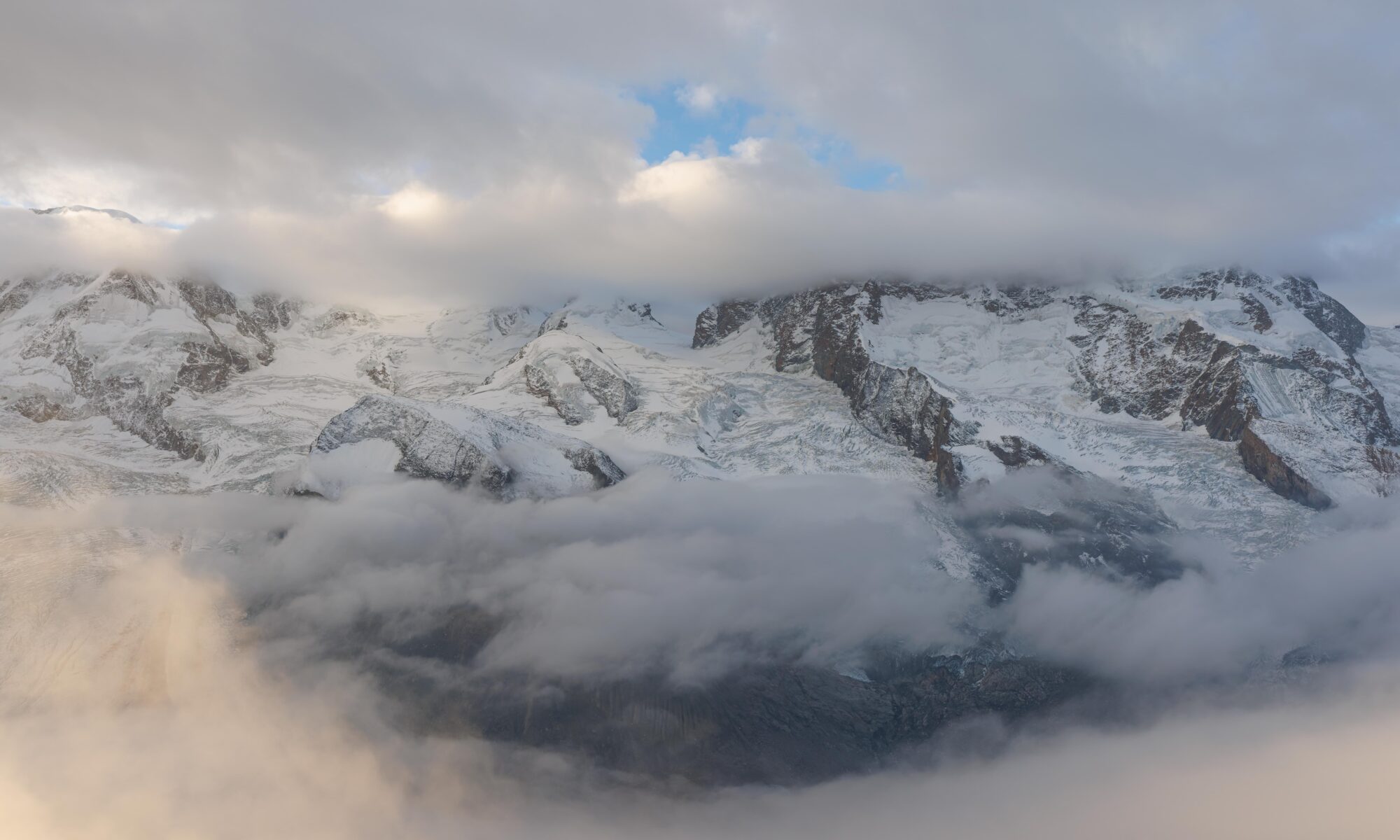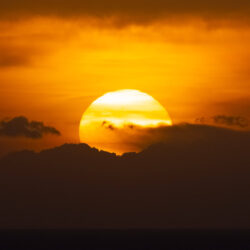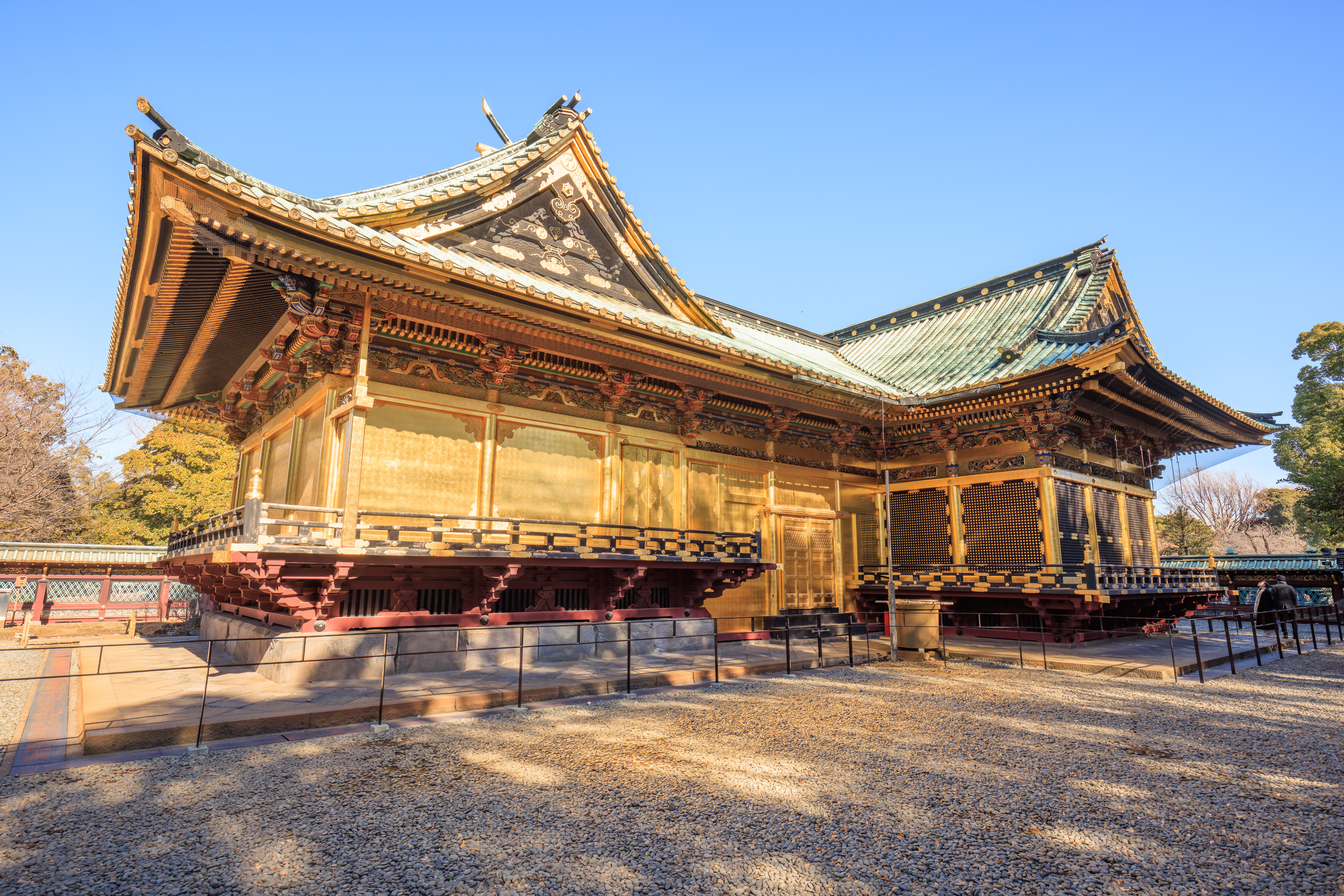After waking up at the InterContinental and having breakfast, we went to Ueno Park where we visited temples and shrines and enjoyed the park. After, we went over to Asakusa where we walked around the area and Senso-ji before having kaiten sushi, a matcha snack, as well as Ichiran ramen. We returned to Senso-ji to see it at night before heading back to Shinagawa.
Breakfast at The Strings
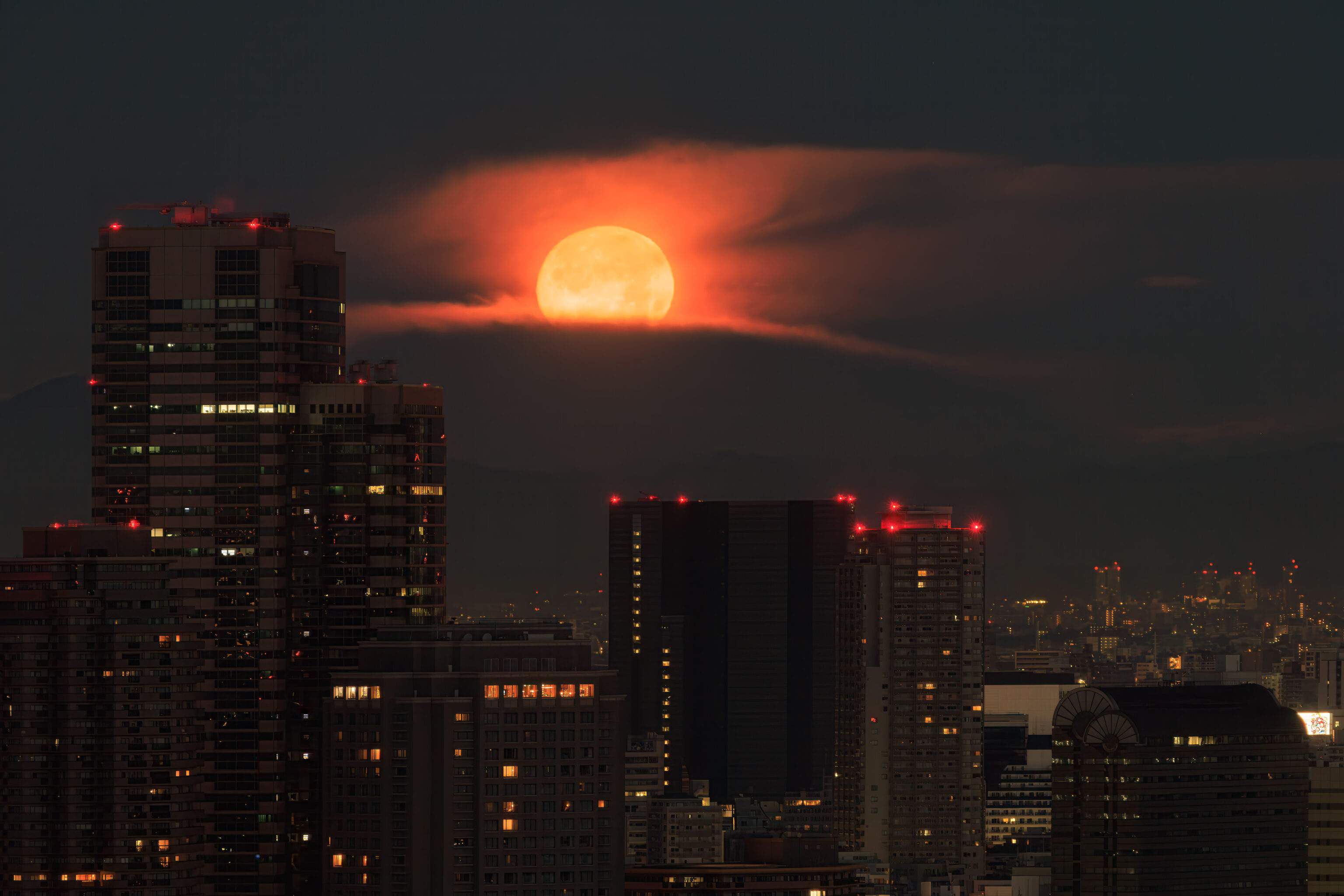
We woke up just in time to see the Moon descending behind clouds in the morning about 30 minutes before sunrise.
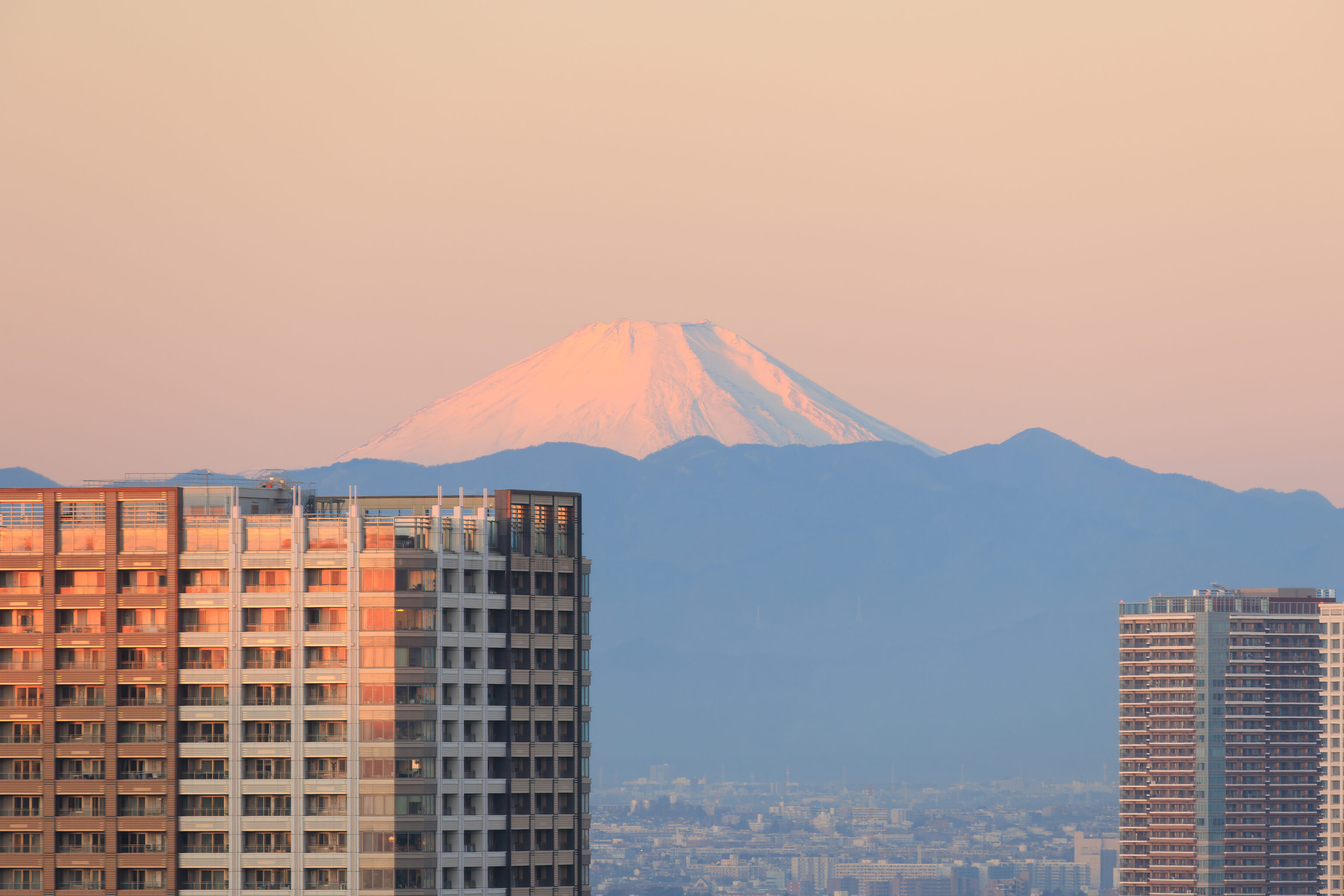
And then, as the Sun rose in the opposite direction, we saw Mount Fuji glowing from the Sun’s early morning light!
Although we’ve stayed at The Strings by InterContinental a number of times over the years, we’ve never actually had breakfast at the hotel. We are Diamond members of IHG’s One Rewards program for the first time now and as Diamond members we receive complimentary breakfast. So, we headed down to give it a try!
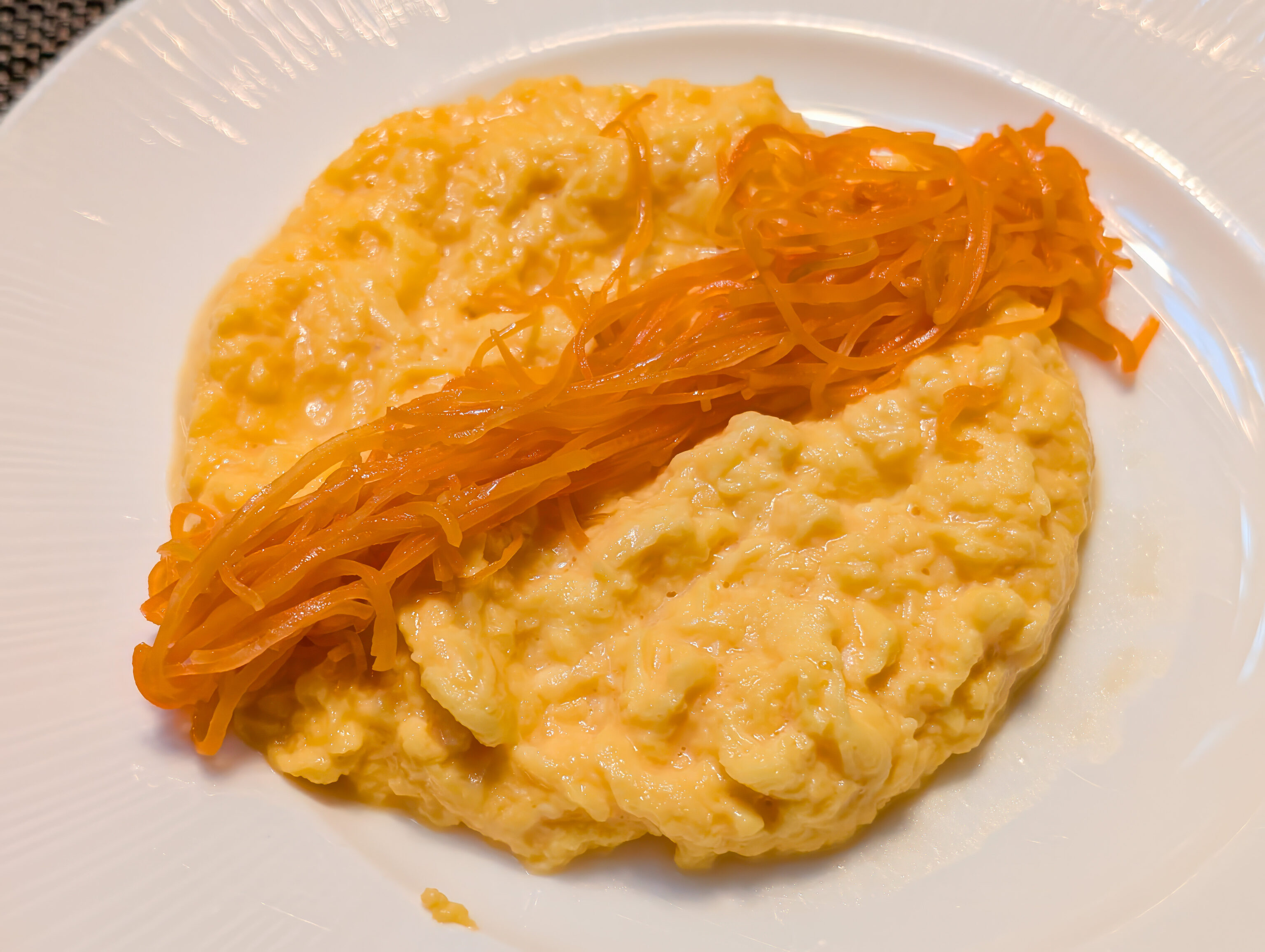
A nice freshly prepared omelette!
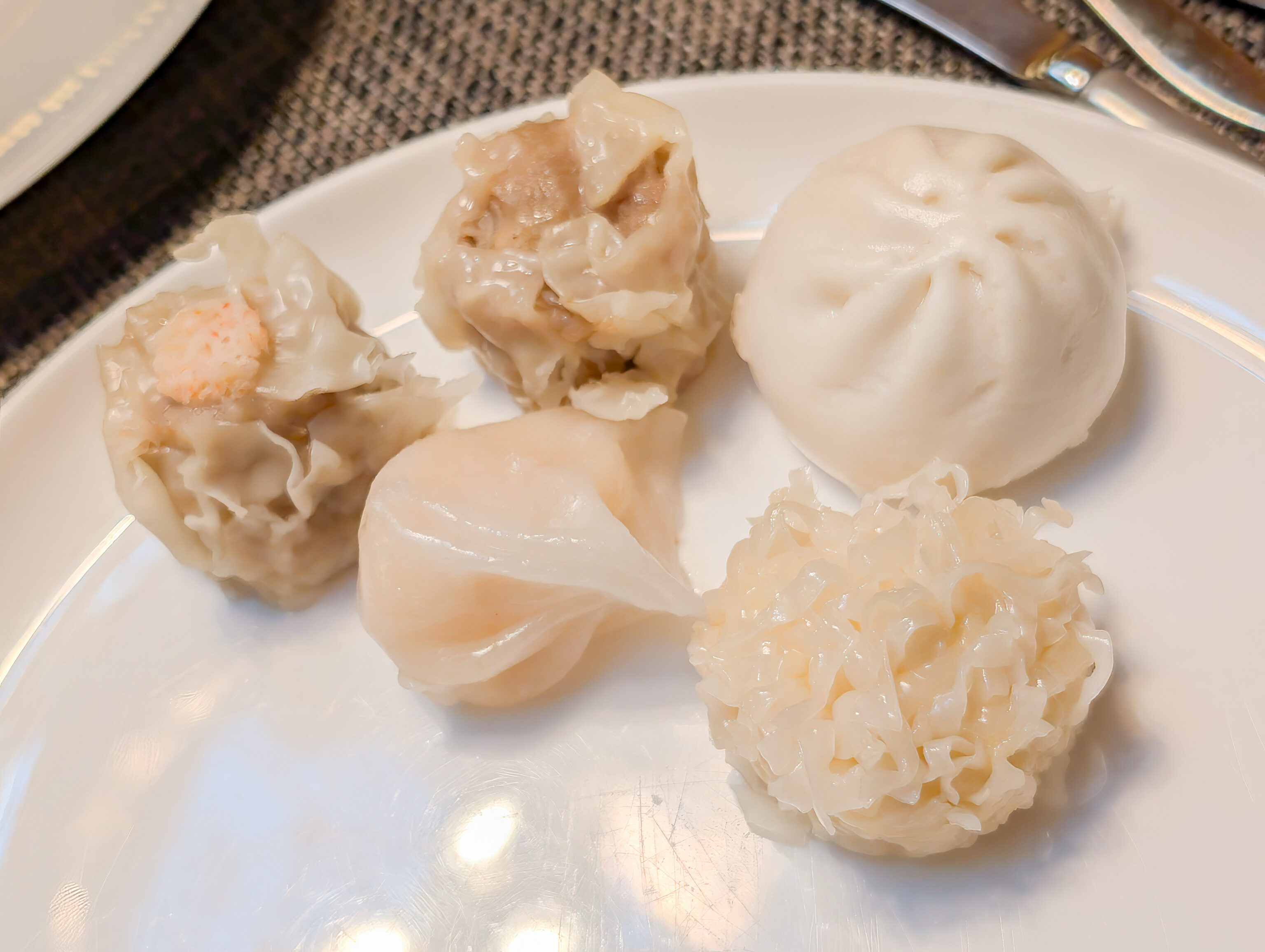
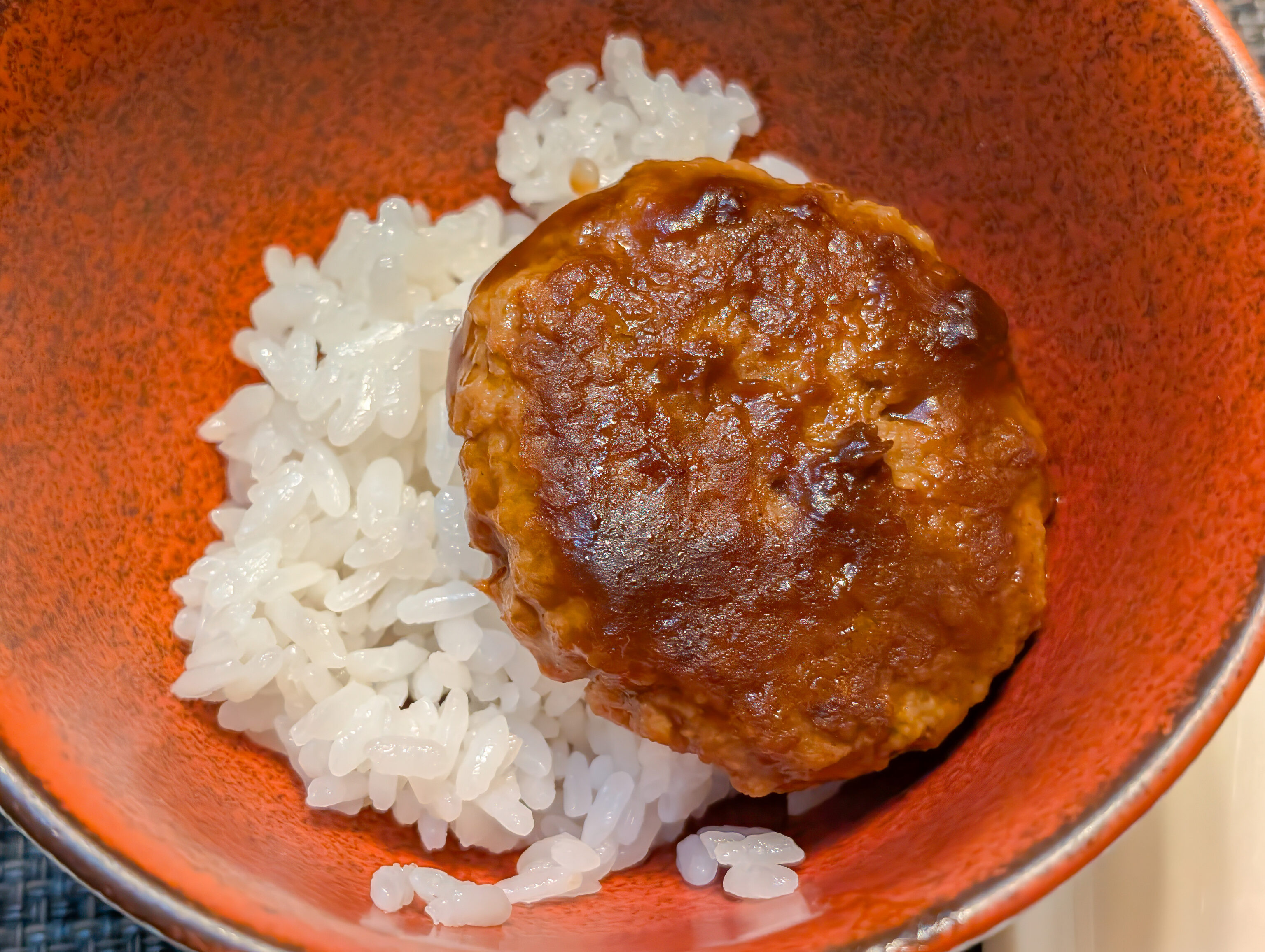
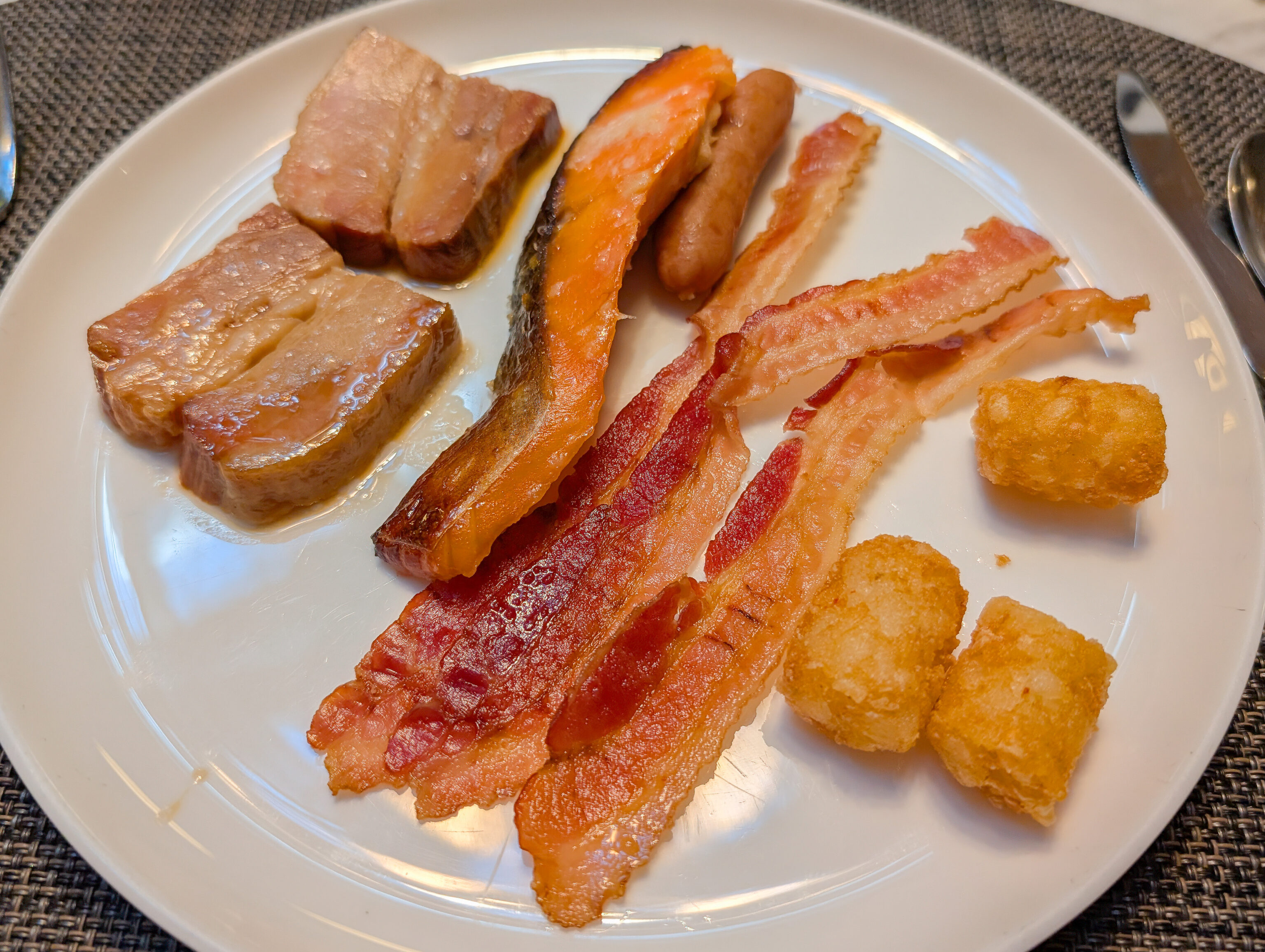
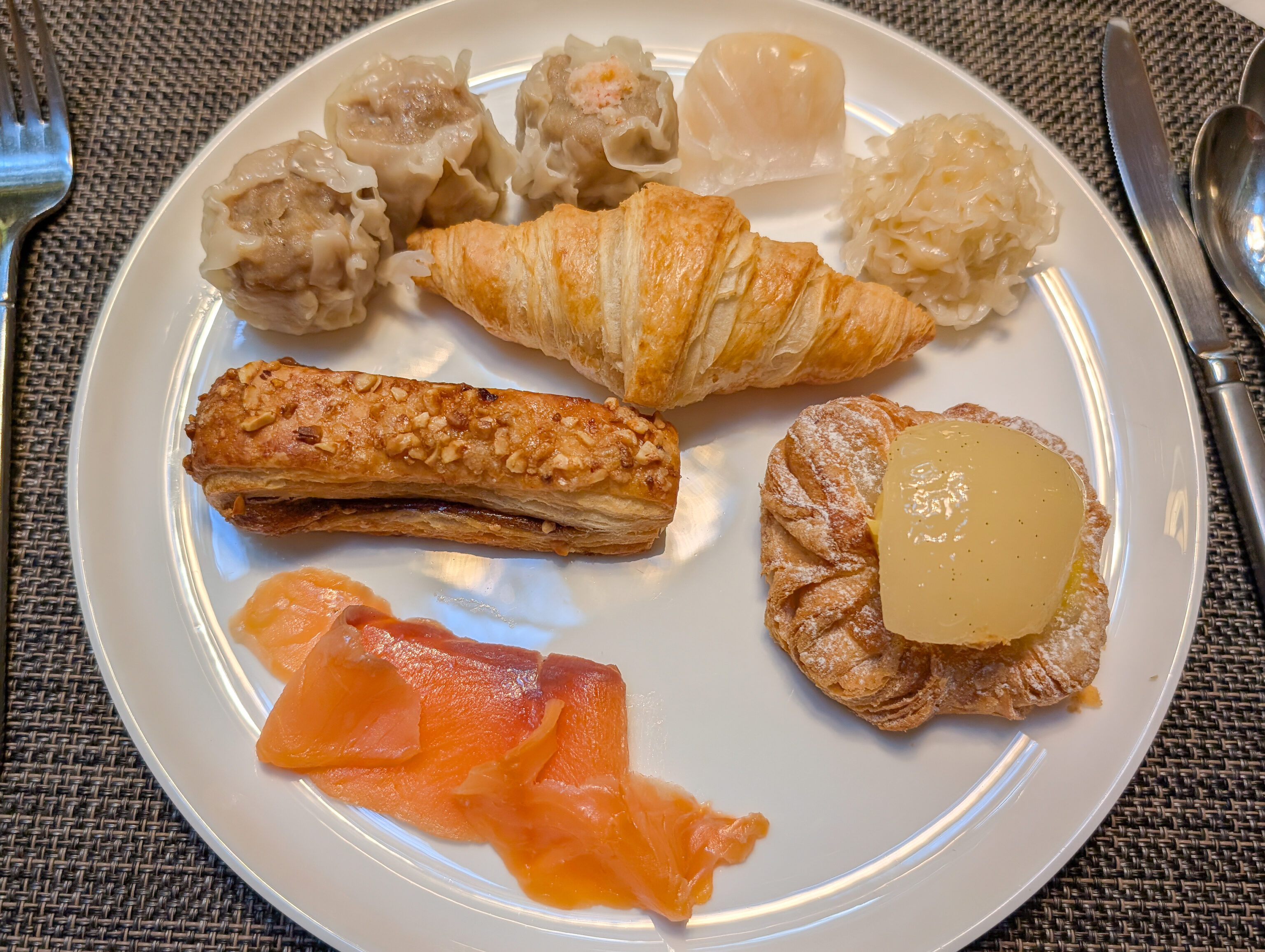
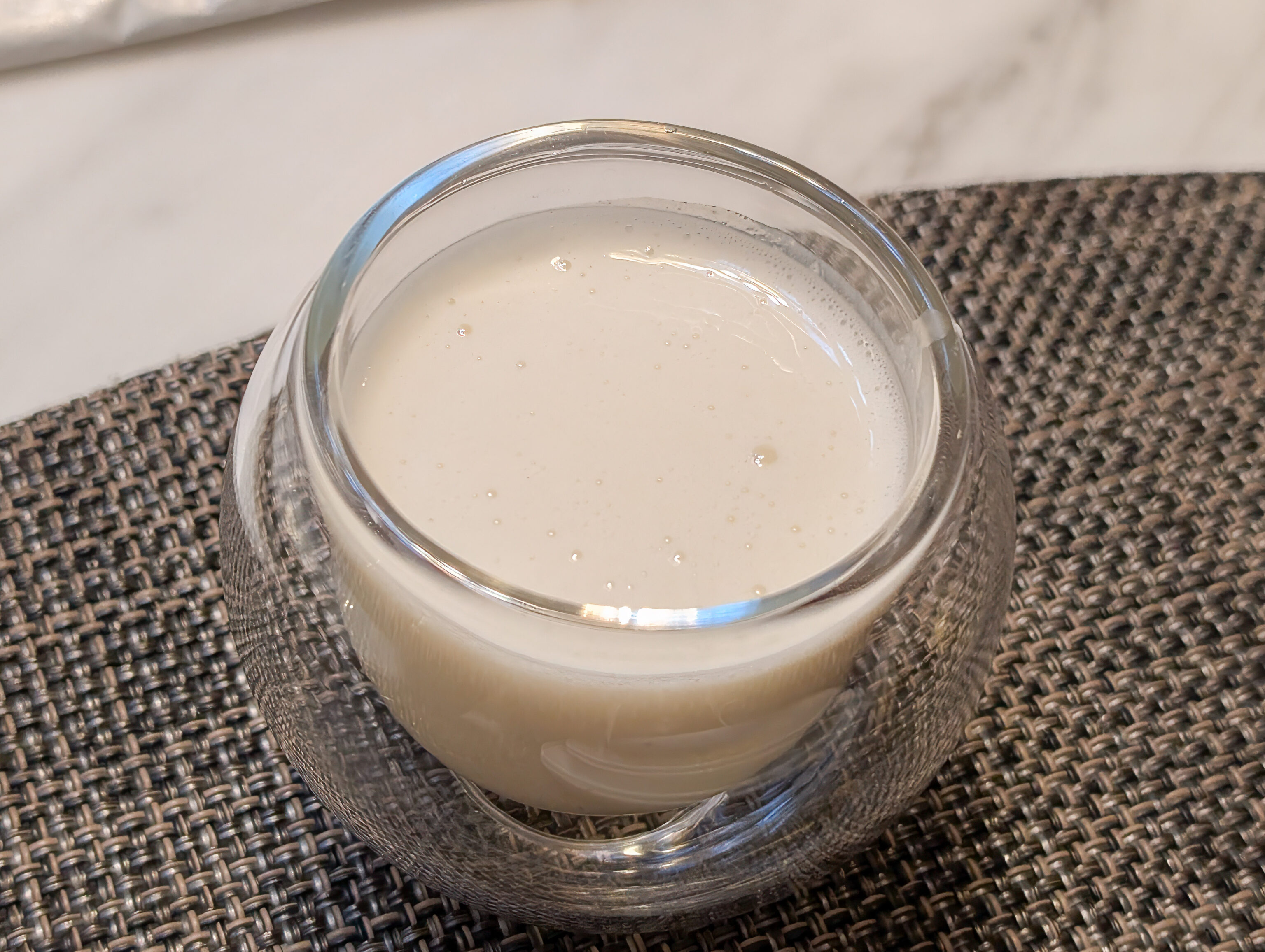
While there were less options than the Hilton Niseko Village where we recently stayed for ten nights, each individual option here was definitely of significantly higher quality. Overall, it was an excellent breakfast!
Ueno Park
After breakfast, we waited for awhile before heading out in hopes of avoiding the worst of the morning rush hour. Shinagawa Station in particular can be ridiculously busy!
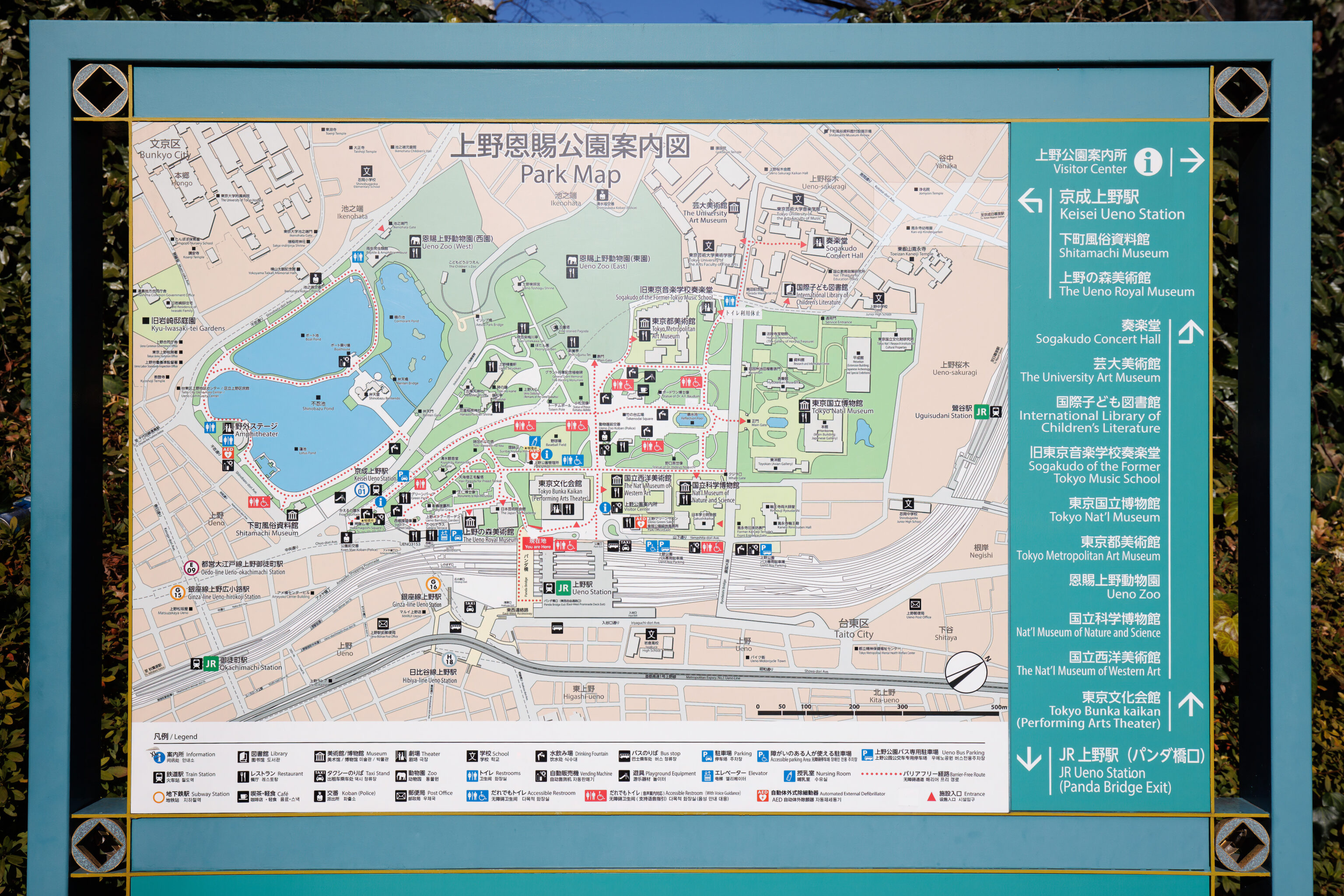
After arriving at 上野駅 Ueno Station, we exited on the 上野公園 Ueno Park side of the station. We came across this map of the park. Our goal today is to explore the western side of the park, saving the various museums for a future visit. We plan on skipping the zoo as well, though I visited before back in 2016.
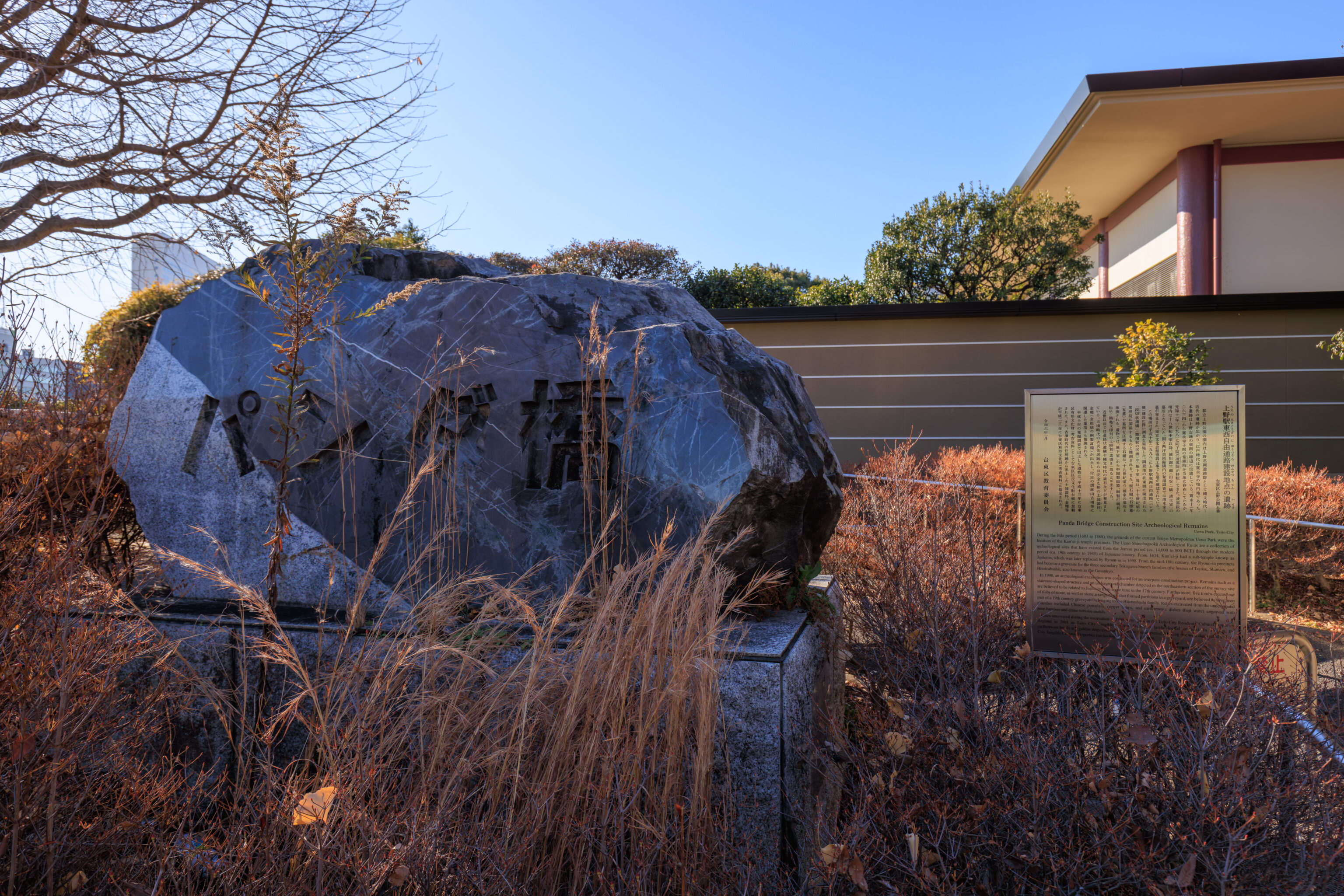
We decided to walk more or less clockwise through the park. We quickly came upon this big rock. The sign on the right has a description in English:
Panda Bridge Construction Site Archeological Remains
Ueno Park, Taito City
During the Edo period (1603 to 1868), the grounds of the current Tokyo Metropolitan Ueno Park were the location of the Kan'ei-ji temple precincts. The Ueno Shinobugaoka Archeological Ruins are a collection of archeological sites that have existed from the Jomon period (ca. 14,000 to 800 BCE) through the modern period (ca. 19th century to 1945) of Japanese history. From 1634, Kan'ci-ji had a sub-temple known as Josho-in, which was later replaced by Ryoun-in in 1698. From the mid-18th century, the Ryoun-in precincts had become a gravesite for the three secondary Tokugawa branch families (the houses of Tayasu, Shimizu, and Hitotsubashi), also known as the Gosankyo.
In 1998, an archeological excavation was conducted for an overpass construction project. Remains such as a staircase-shaped structure and an underground chamber detected in the northeastern section of the survey site are believed to be related to Josho-in from some time in the 17th century. Furthermore, five tombs erected out of slabs of stone, as well as stone arrangements that formed partitions in a graveyard, are believed to have been part of a 19th century graveyard belonging to the Hitotsubashi family. Relics excavated from the underground chamber included Chinese porcelain, copper lamps, and earthenware dishes (haji ware) engraved with pine-bamboo and crane-tortoise motifs.
Relics uncovered during the excavation in 1998 were listed in the Taito City Residents' Cultural Properties register in 2001 as Taito City Tangible Cultural Properties (archeological artifacts). In addition, the earthenware bowls and golden rings excavated from the Kofun period dwelling site were designated as Taito City Tangible Cultural Properties (archeological artifacts) in 2009.
January 2024
Taito City Board of Education
It seems that some historical artifacts were discovered here while they were building the Panda Bridge, which is a pedestrian bridge that goes over the railroad tracks that run through Ueno Station. Sadly, the rock seems to be just some rock that they used to inscribe text upon.
Also, Taito City refers to 台東区 Taito-ku, one of the wards that makes up Tokyo. Ueno is contained within Taito-ku.
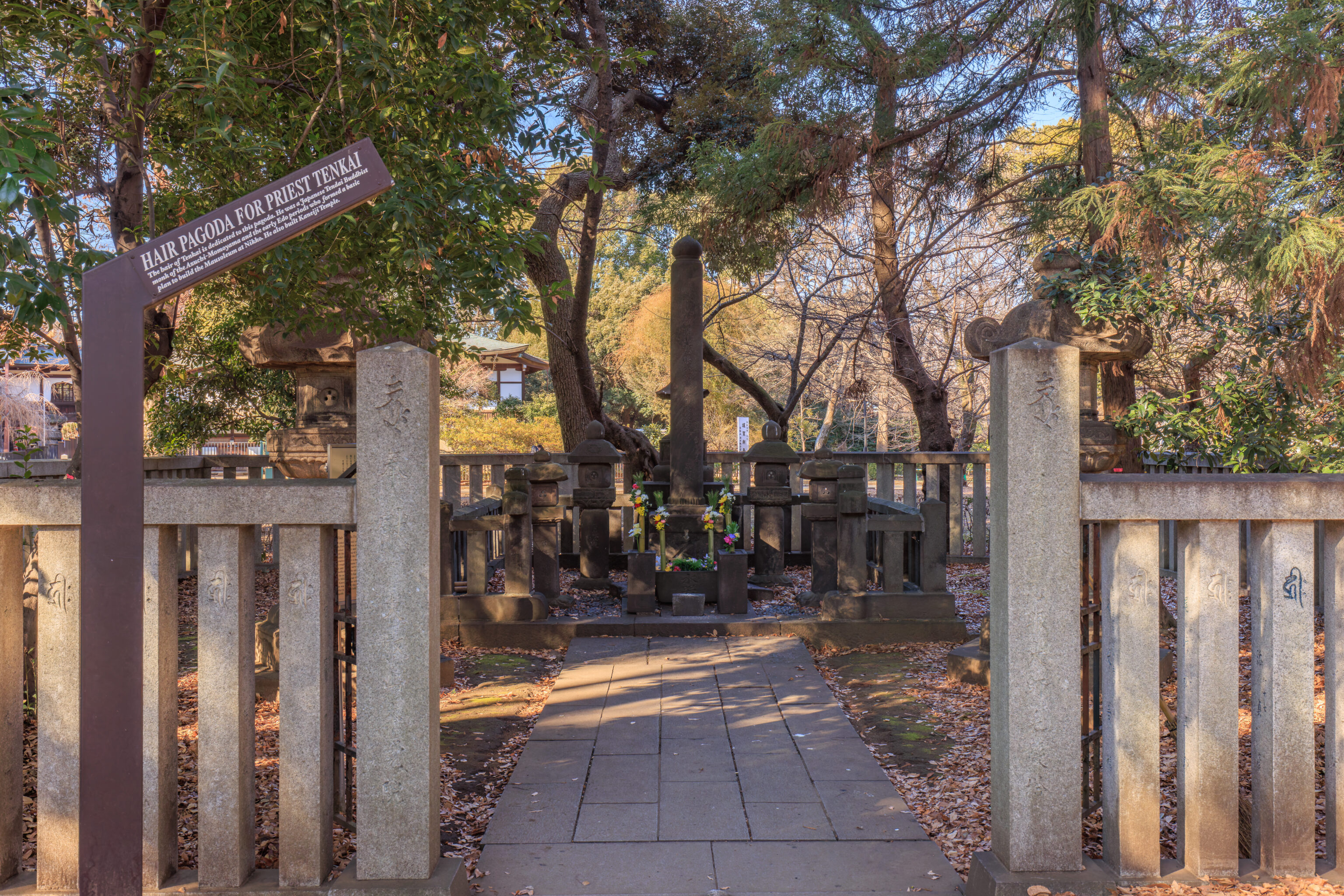
This one is interesting. The sign says this is a Hair Pagoda. What is that? A nearby sign explains:
Hair Pagoda For Priest Tenkai (Metropolitan Historical Site)
Tenkai (1536-1643) was a high priest of the Tendai Sect at the beginning of the Edo Period. He was also known as Jigen Daishi. He took orders at age 11. At 14 he climbed Mt. Hiei and began formal training in the precepts of Tendai Buddhism. With the founding of the Tokugawa bakufu government at Edo (Currently Tokyo). Tenkai received the favor of Tokugawa Ieyasu. Upon the death of leyasu, he was permitted to take a saintly name in order to deify the Tokugawa founding shogun. At roughly the same time the basic designs of the shrine at Nikkö were being laid out and Tenkai served as an advisor in its construction. Following this, he also benefited from the attention of both Shoguns Hidetada and Iemitsu and was installed at the newly built Kaneiji Temple in 1625 for the spiritual protection of Edo Castle.
In 1643, at the age of 108 he passed away at Hongakuin Temple, a branch temple of Kaneiji, and as ordered, was buried on Mt. Nikko. A pagoda to commemorate him was built at this site, and later, priest of Hongakuin built a second pagoda in order to house a lock of his hair. Thus this pagoda has come to be called the Hair Pagoda.
So, basically, it contains a lock of hair from a famous monk who was favored by the founder of the Tokugawa Shogunate, Tokugawa Ieyasu.
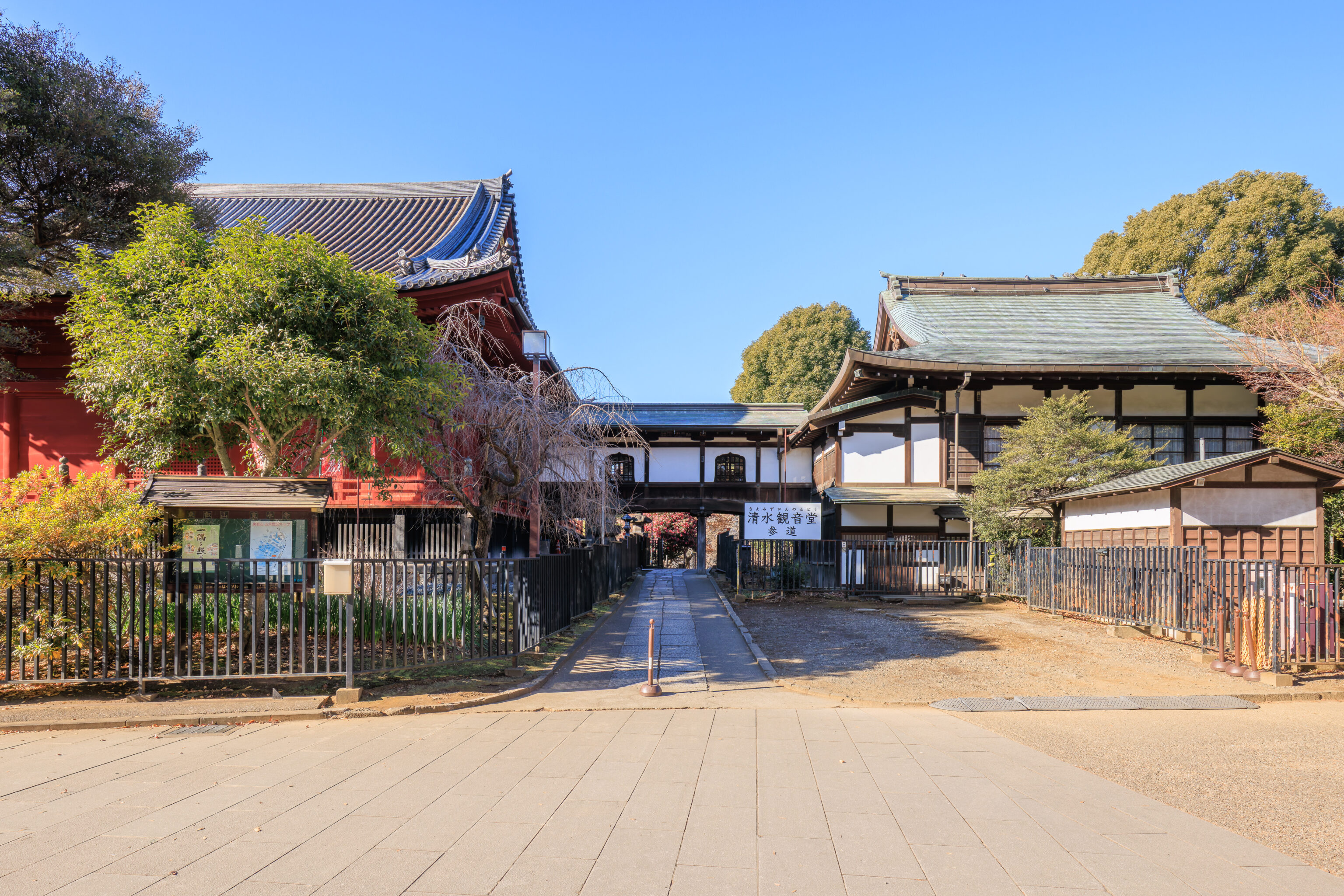
We continued on to reach the 清水観音堂は Kiyomizu Kannon-do.
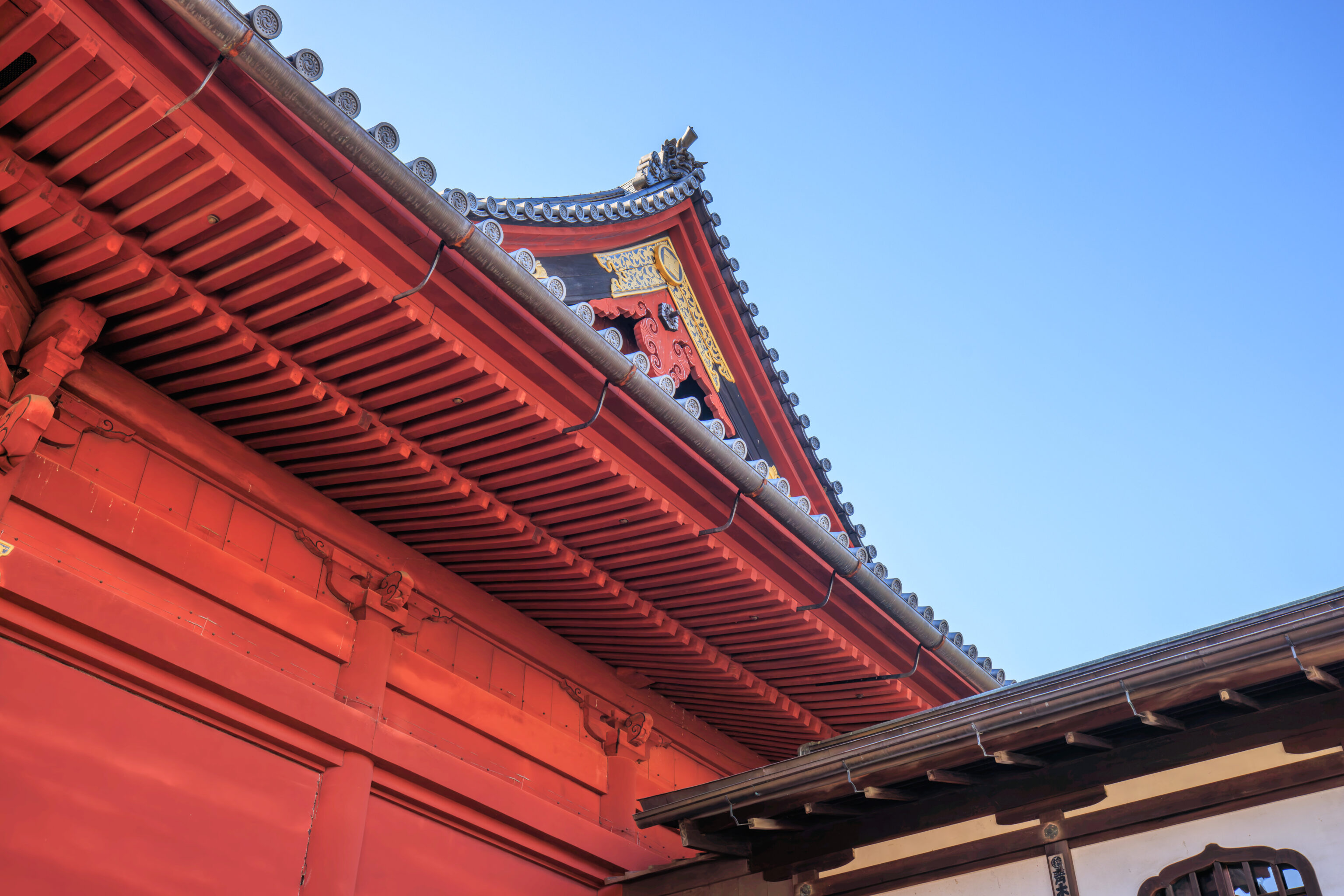
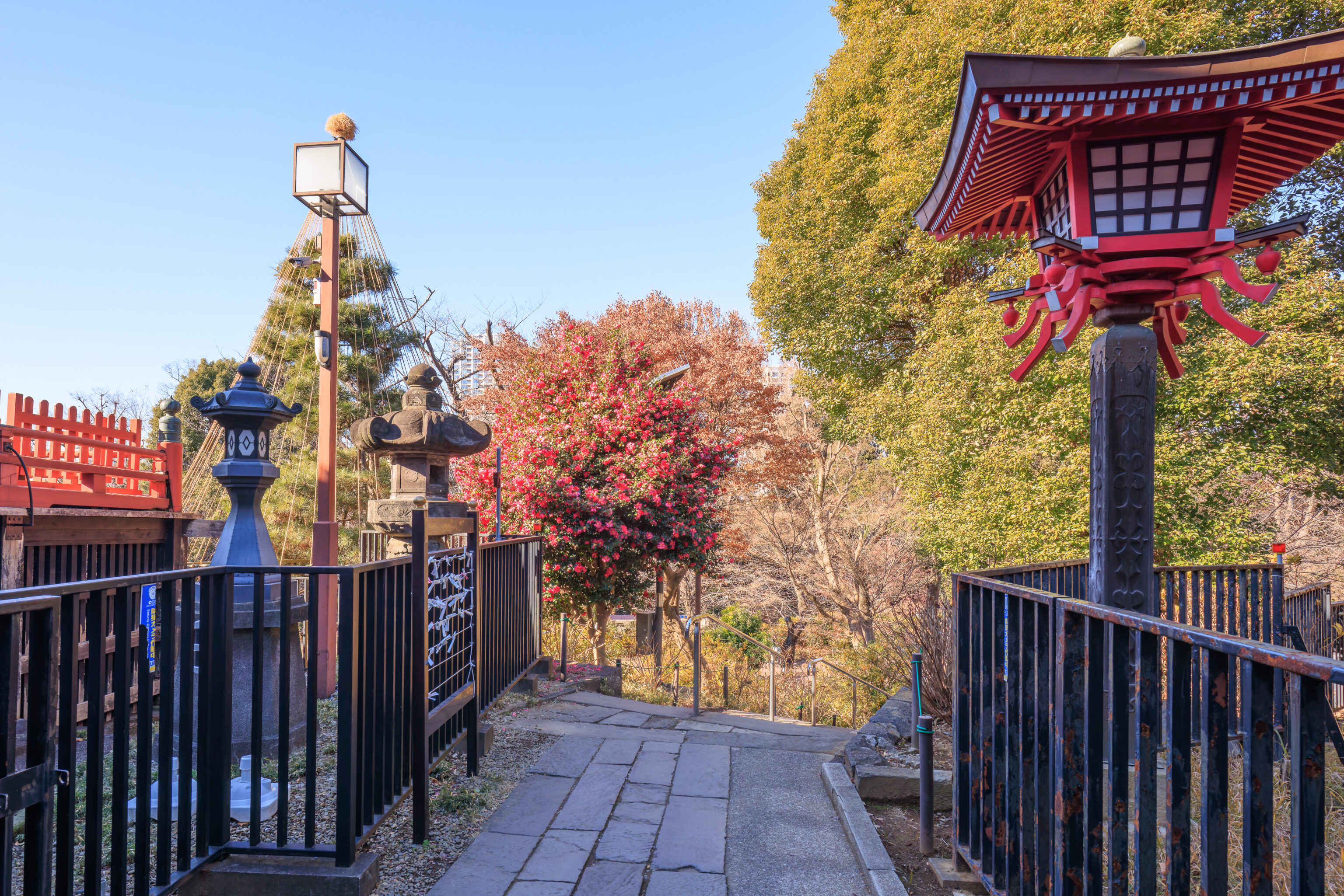
We continued walking forward to reach the front of the temple as we had arrived from its rear. The name of the temple may seem familiar as its design was based upon Kyoto’s famous Kiyomizu-dera, which we last visited in 2023 on November 27 and November 28 during the fall foliage season. The similarity in design isn’t apparent at all from the rear though.
Interestingly, this is not the temple’s original location. It was originally on a different hill within the current bounds of Ueno Park but was moved here in 1694.
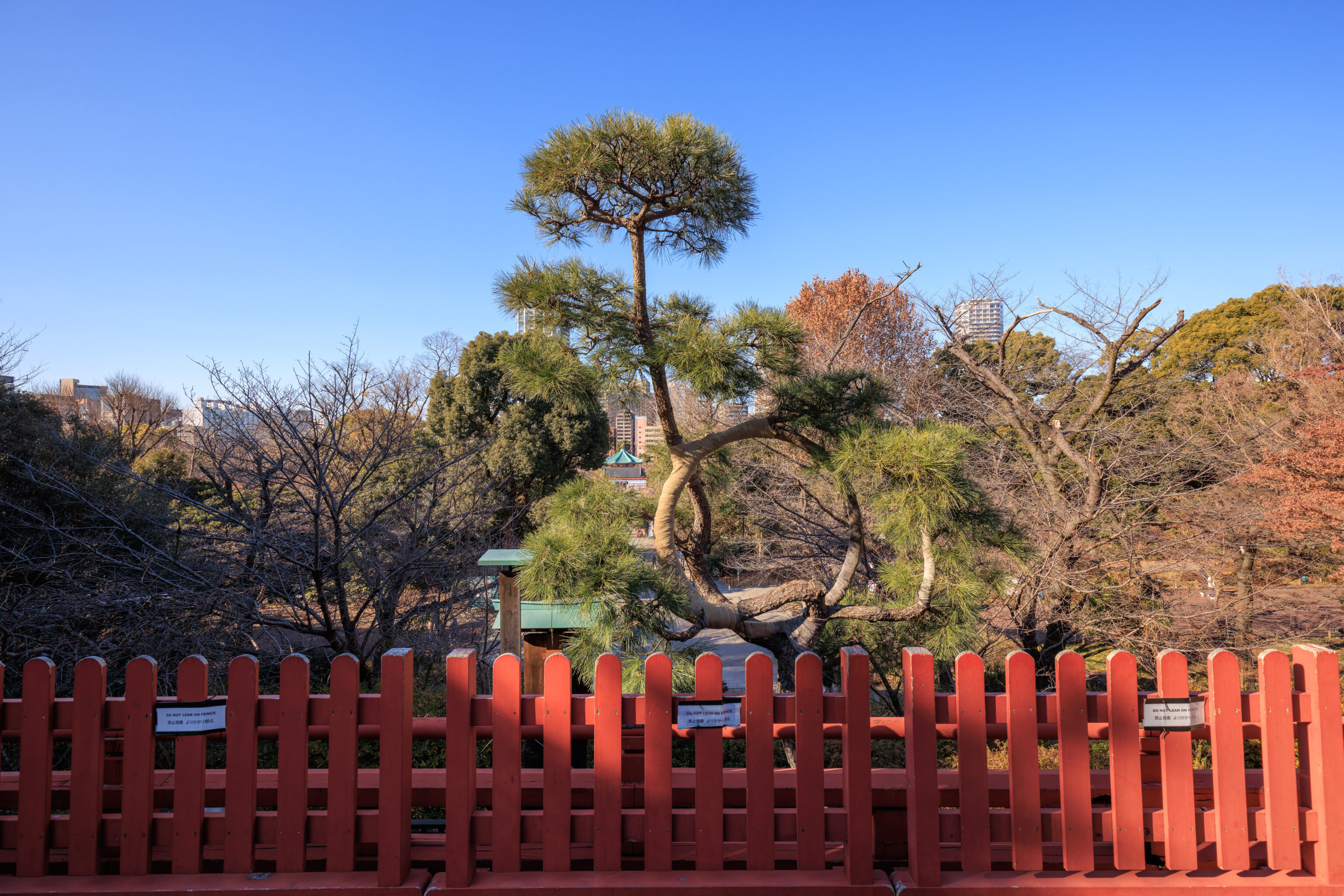
Kiyomizu-dera is famous for its large “stage”, which is basically a large deck that overlooks a valley below. Kiyomizu Kannon-do has something similar, though on a much smaller scale.
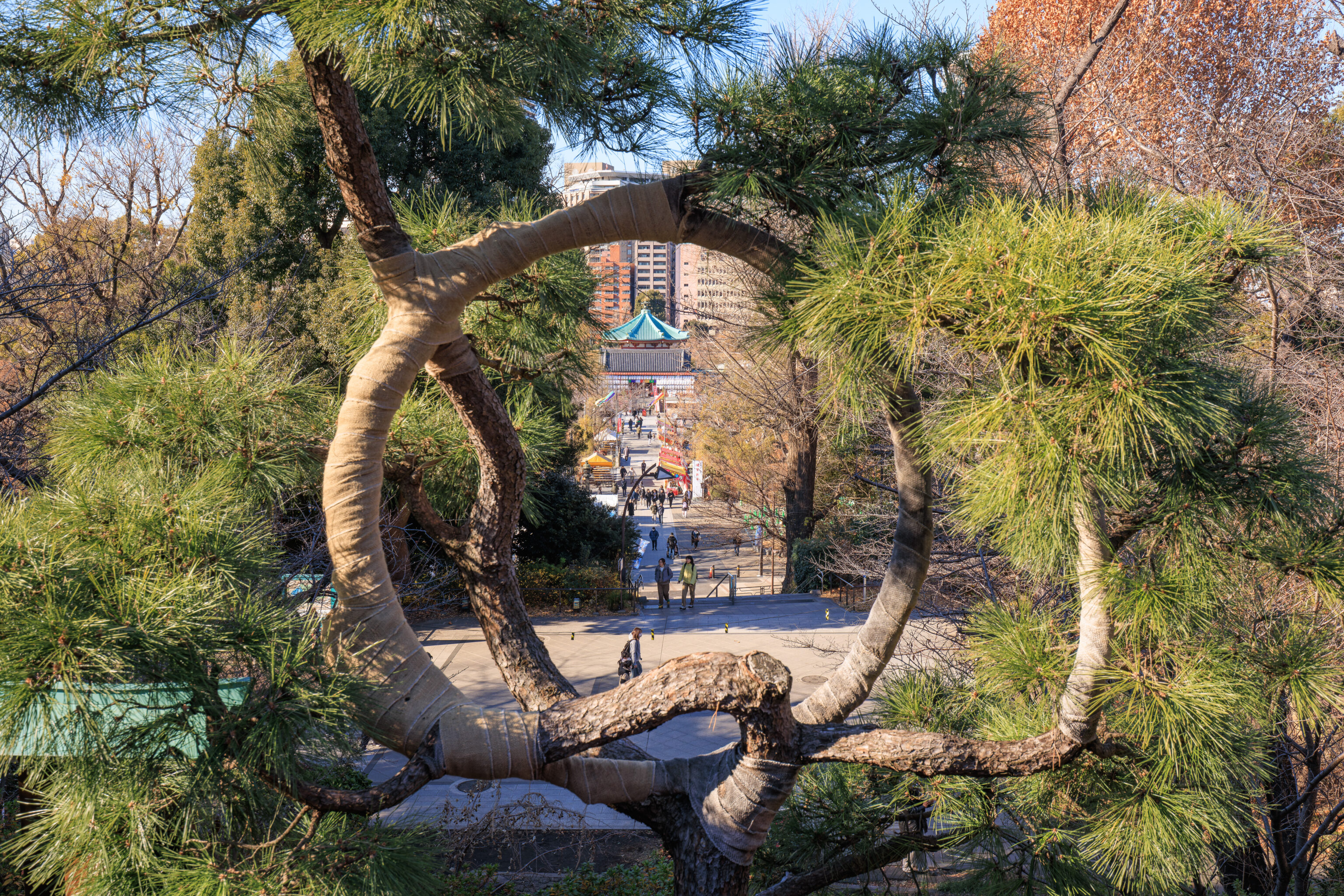
Kiyomizu Kannon-do is famous for this circular shaped tree, described as the 月の松 Tsuki no Matsu (Moon Shaped Pine). This temple and pine is the subject of a famous 浮世絵 Ukiyo-e woodblock print, Ueno Kiyomizudo Shinobazu no ike, by Hiroshige Utagawa. The original pine tree was lost during the Meiji period. This current one is described as replacing it in December, 2012.
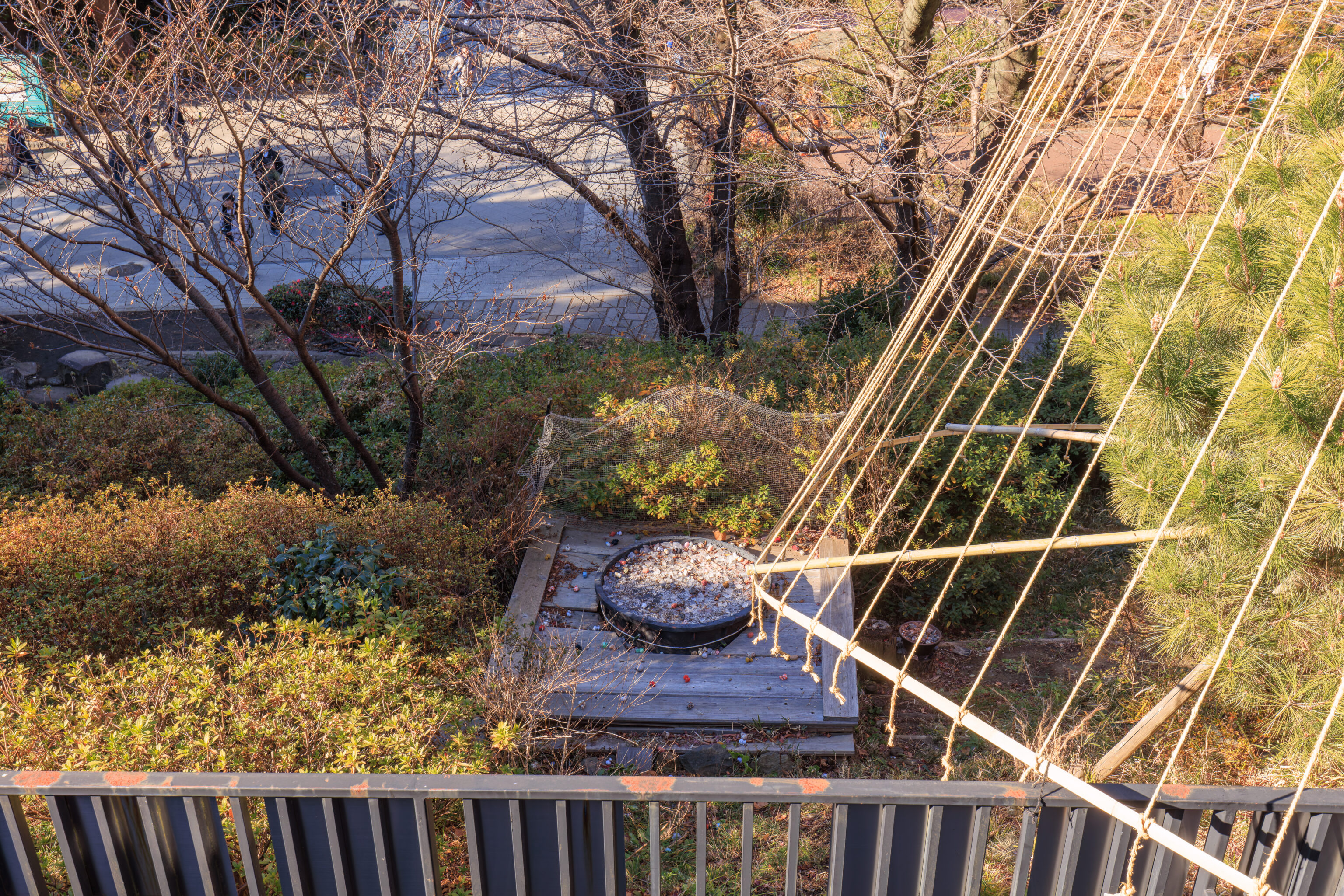
One activity here is to toss wishing balls through the Moon shaped pine, aiming for this circular target below.
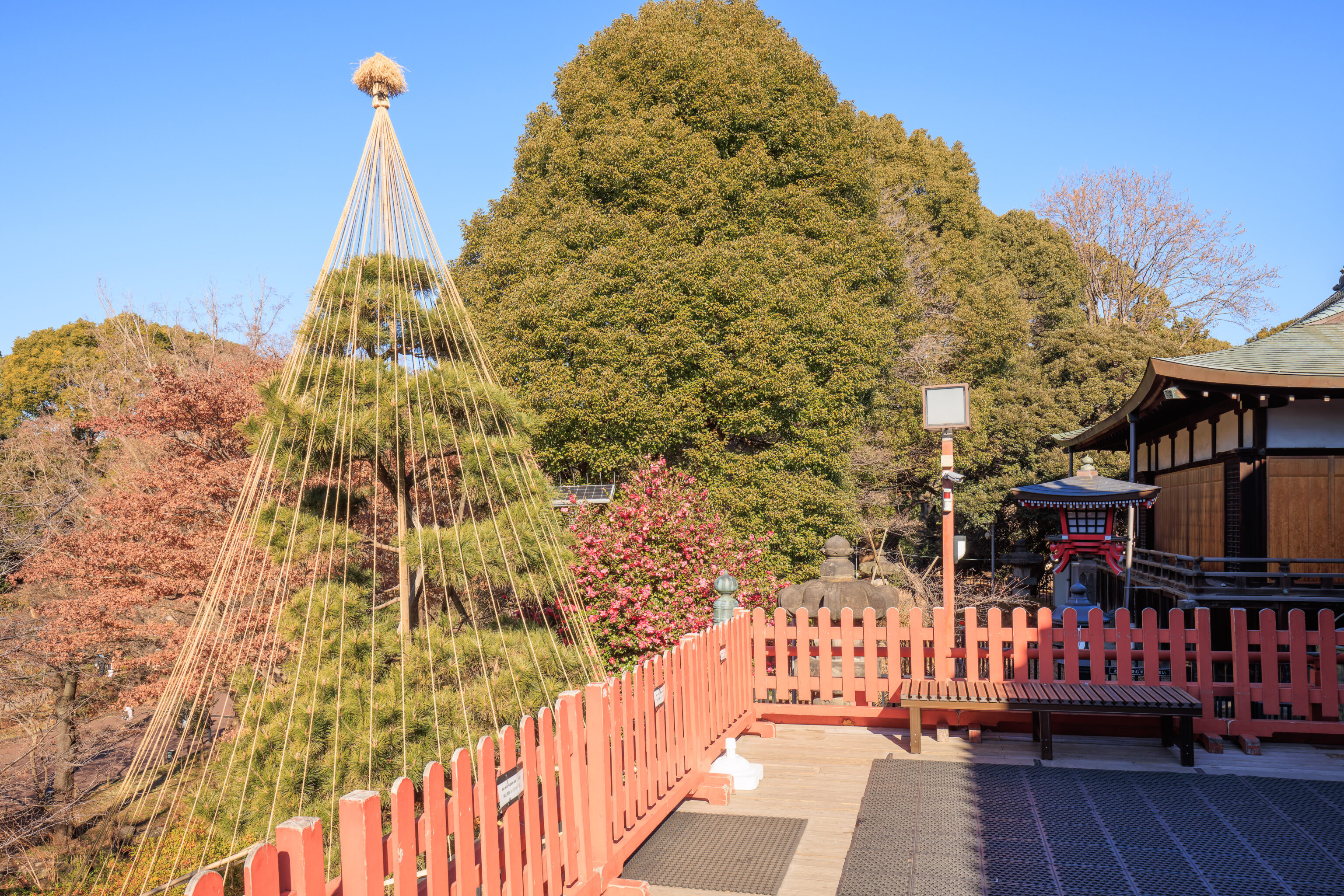
Unfortunately we didn’t really photograph the temple’s stage.
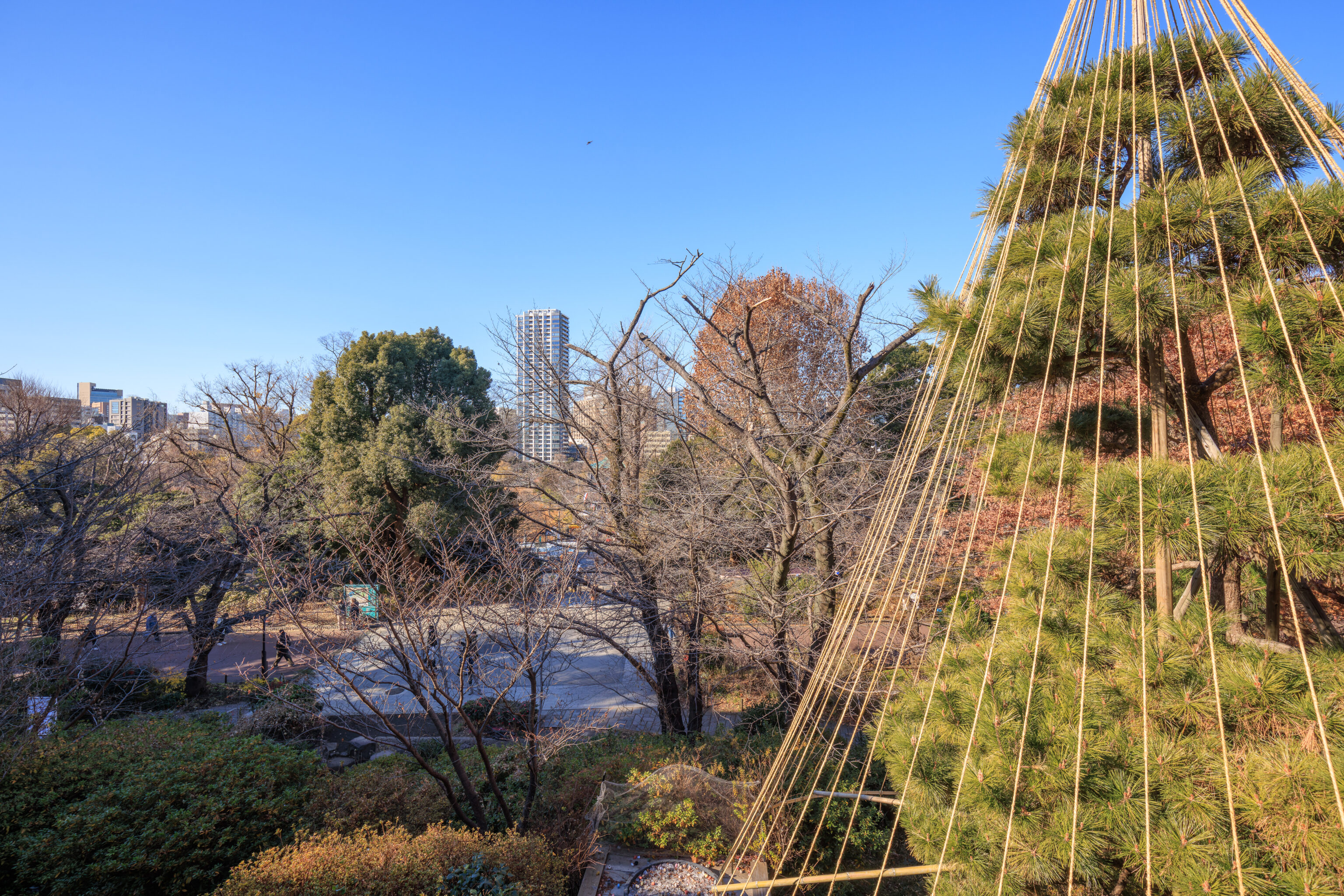
The stage is supposed to look out over the Shinobazu Pond. It sort of does, through the temple is set back from the pond by a good amount and there are trees in the way.
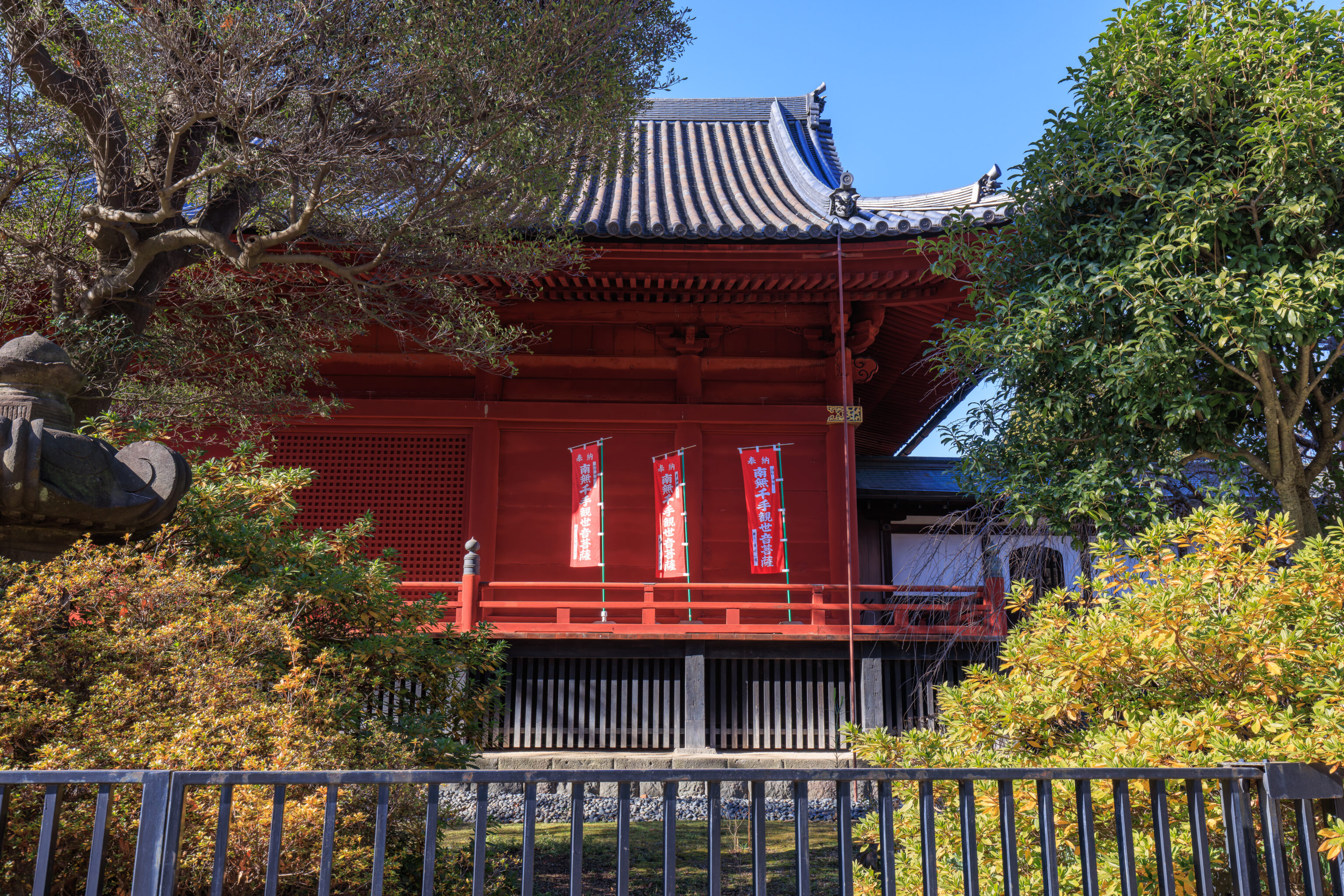
We decided to return to the rear side of the temple to continue walking to the southern end of Ueno Park.
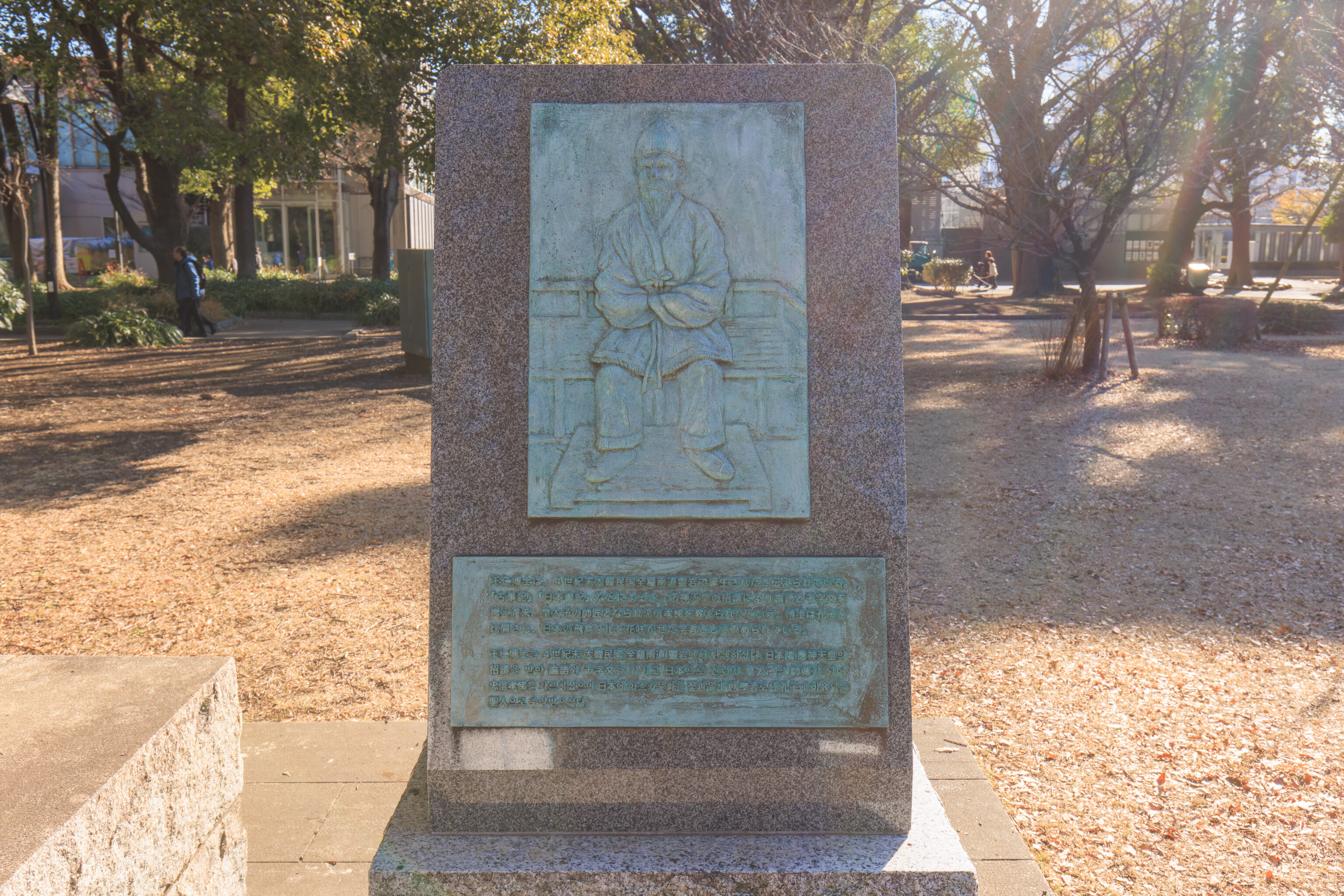
The plaque on this monument has text in both Japanese and Korean. The Japanese text translates to:
Dr. Wangin is said to have been born in Yeongam, South Jeolla Province, during the reign of the great inhabitants of the country at the end of the 4th century.
According to the Kojiki and Nihon Shoki, he was invited by Emperor Ojin to study the Analects and the Pratyekabuddha, became the teacher of the crown prince, and taught him Tadashige Nobuyuki. He is often compared to other scholars, and is known as a great scholar during the blooming of the Asuka culture.
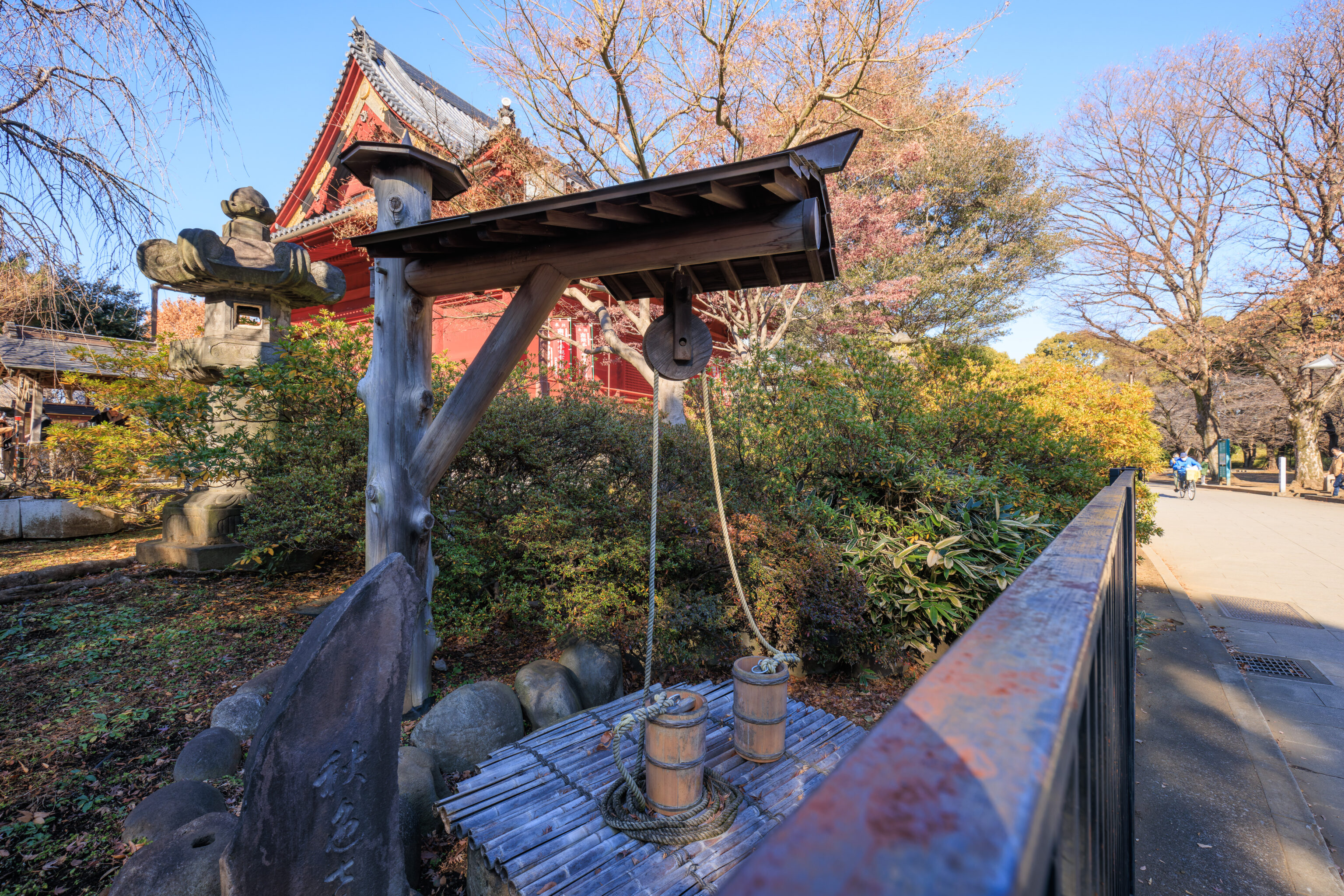
We walked by a well at the southern edge of the temple.
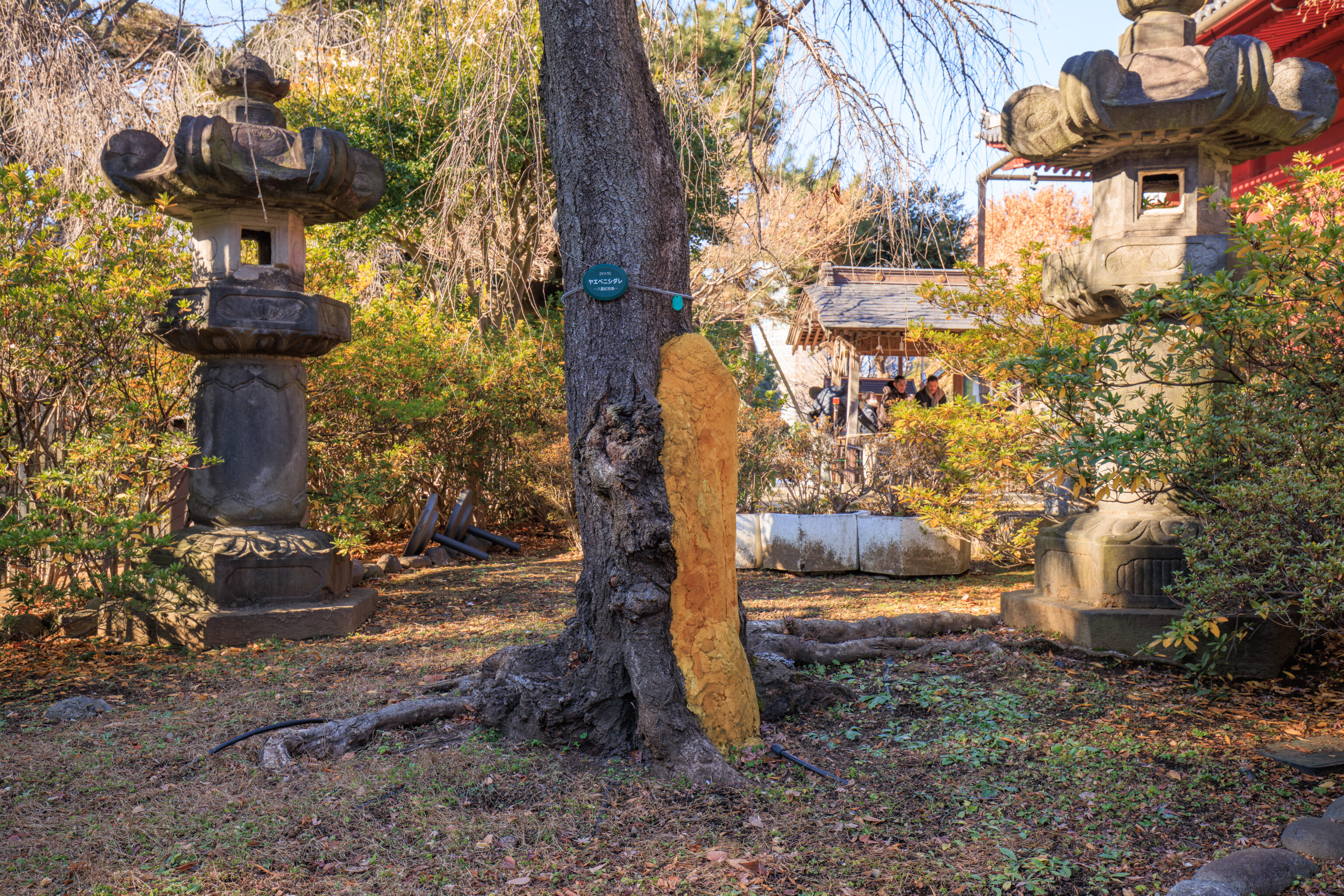
This tree is interesting. The circular label identifies this tree as a ヤエベニシダレ Yaebenishidare variety of sakura.
Another nearby sign describes this tree:
SHUSHIKI CHERRY TREE
Ueno was very famous as a place of cherry blossom from the beginning of the Edo era. There were many species of cherry trees and some trees had even their own names; a typical one of them is the Shushiki Cherry Tree.
In the Genroku period, a daughter named Oaki of a sweet shop in Koamicho, Nihonbashi wrote a Haiku poem, "Cherry blossom near a well are in danger by drunken fellows." This expresses a scene of crowded cherry blossom viewers near a well. She was only 13 years old at that time, but had a pen name of Shushiki. Therefore, this cherry tree near the well was called "The Shu-shiki Cherry Tree."
At least, it seems like it describes this tree. We’re not sure about the amber colored mass on the side of the tree.
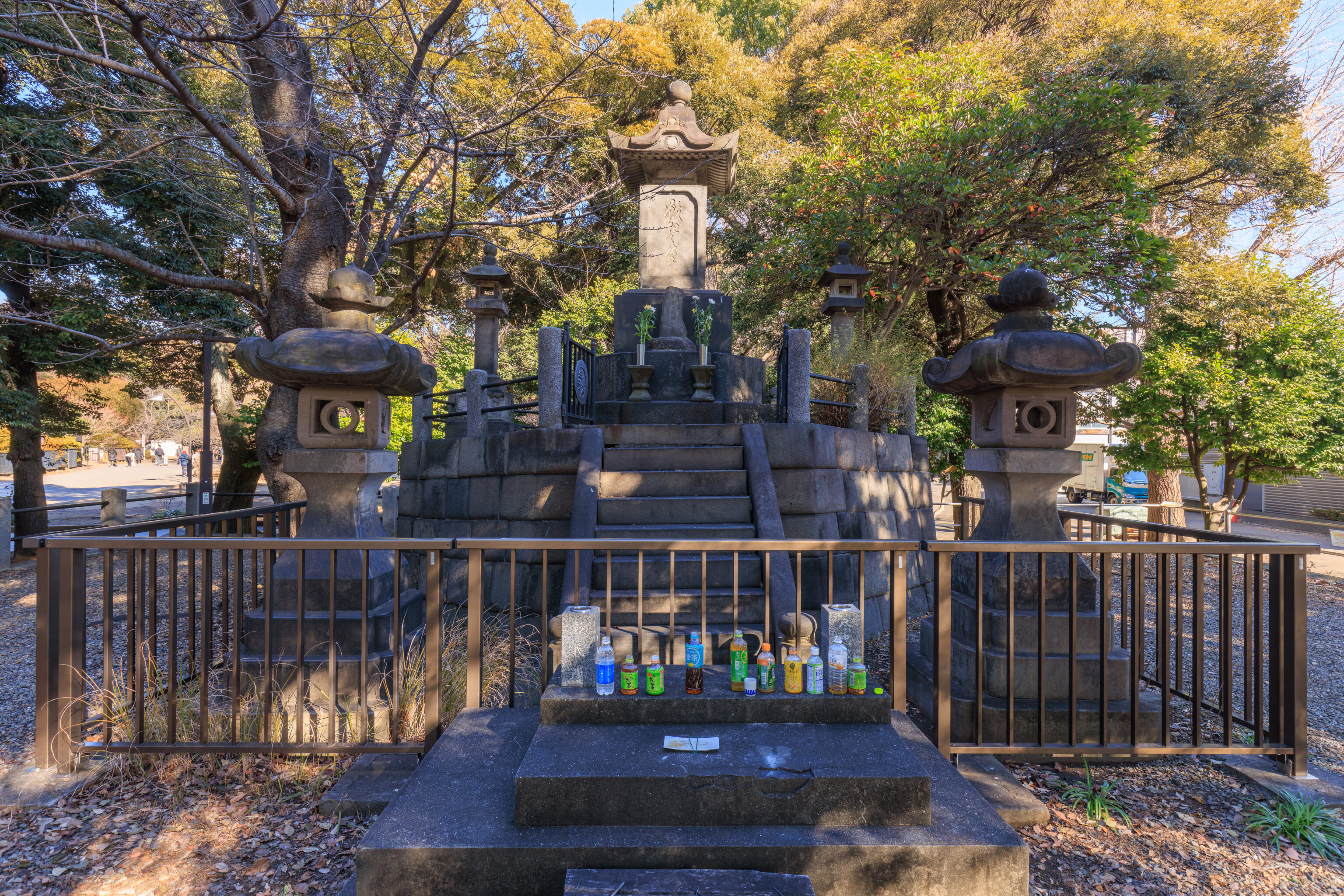
This grave is for soldiers of the Tokugawa Shogunate that died here during a battle during the Boshin War which resulted in the beginning of the Meiji era and modern Japan. A nearby sign describes this grave:
Grave-yard of Shogi-tai soldiers in the Ueno War
There was a war called the Ueno War around here in May 15,1868. It delimited Edo era and Meiji Restoration. In this war, a soldier group of Tokigawa persons (old government) named Shogi tar fought against the army of the new government and was defeated
Okisato Ogawa and his comrades, who were the survivors of Shogi-tai, obtained the peroussion of Meiji government at last in 1874 und built the grave-yard of killed soldiers. Afterwards, the graveyard of Shogi-tal was preserved by the Ogawa clan for over 120 ycans, and succeeded by Tokyo Metropolitan government in 2003. We learn the history of the Ueno War thanks to such an effort now
A newer sign provides some more detail:
TOMB SITE OF SHOGI-TAI WARRIORS
Ueno Park. Taito City
The Shogi-tai was a Tokugawa loyalist group that was formed with the goal of vindicating the last Shogun, Yoshinobu Tokugawa, and defeating the Satsuma rebels. They were stationed in more than 20 branch temples of Kan'ei-ji, which was the shogunate's family temple. most of which were burned down by the enemy. By patrolling the city of Edo and arresting criminals, they gradually gained popularity among the citizens. On the morning of May 15, 1868, the 10,000 new government forces of Satsuma, Choshu and others attacked Shogi-tai's 1,500 forces. This fight is called the Battle of Ueno. After losing in late evening of the same day, some surviving members moved north, eventually joining the Tokugawa Navy led by T. Enomoto. This Battle is said to be the turning point of the Boshin Civil War The tombstone was erected for the Shogi-tai by Okisato Ogawa and other Shogi-tai survivors. In 1991, it was registered as an important historical asset in the Book of Cultural Assets of Taito City.
October 2024
Taito City Board of Education
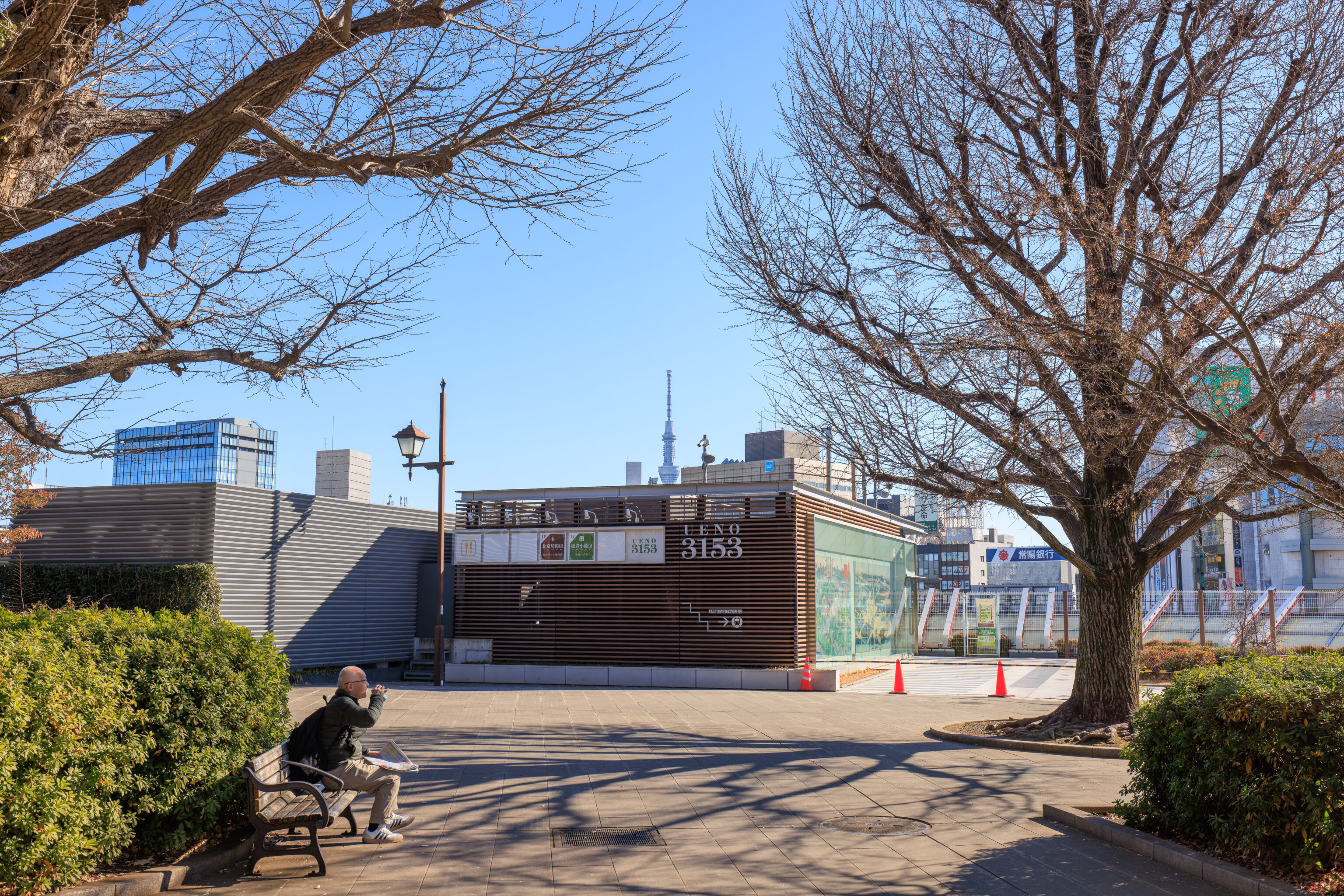
We could see the top of the 東京スカイツリー Tokyo Skytree from here! It is less than two miles away.
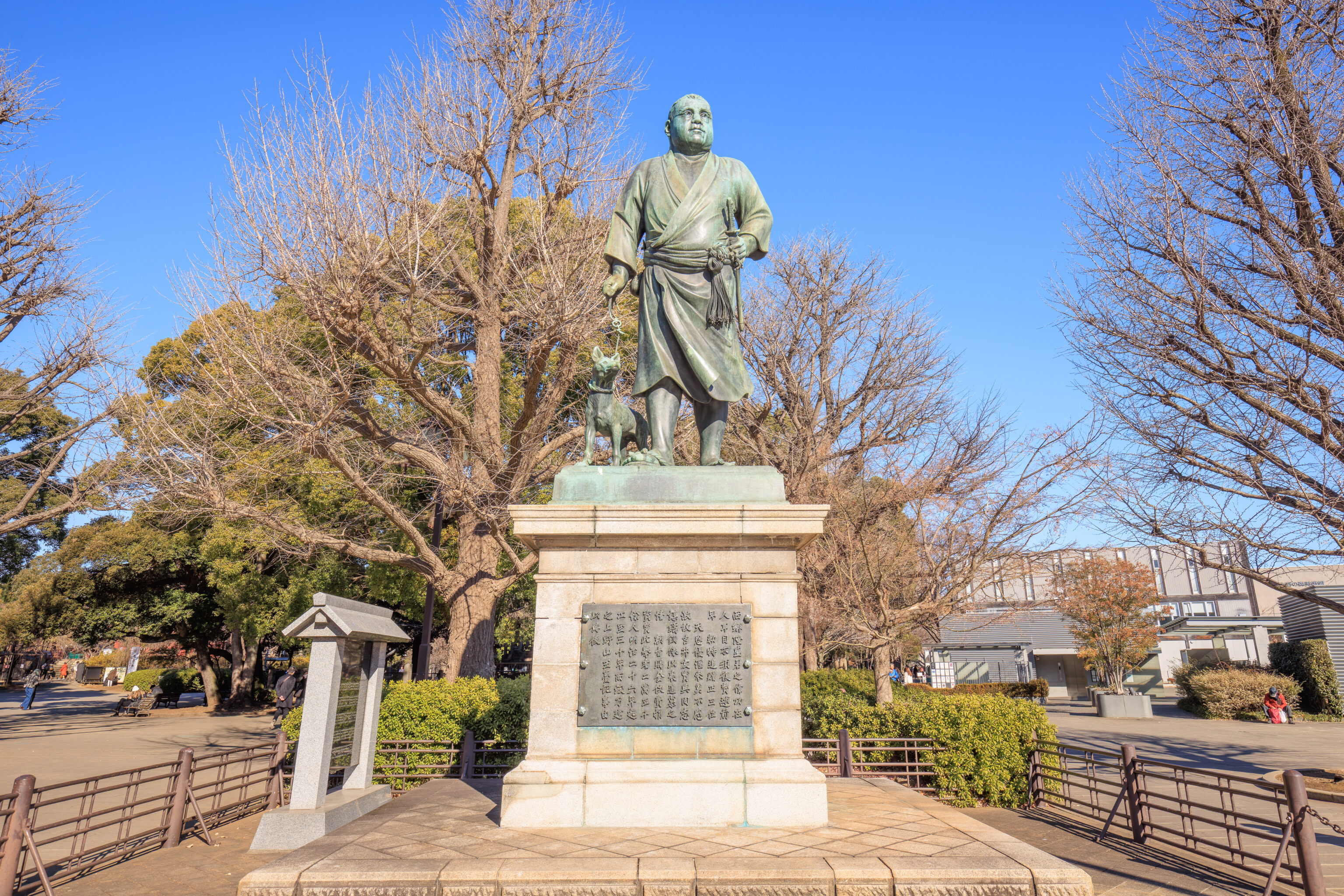
This statue of a man and his dog depicts Saigō Takamori, a samurai leader from the Meiji Restoration.
This fountain, featuring a frog spitting water, was nearby.
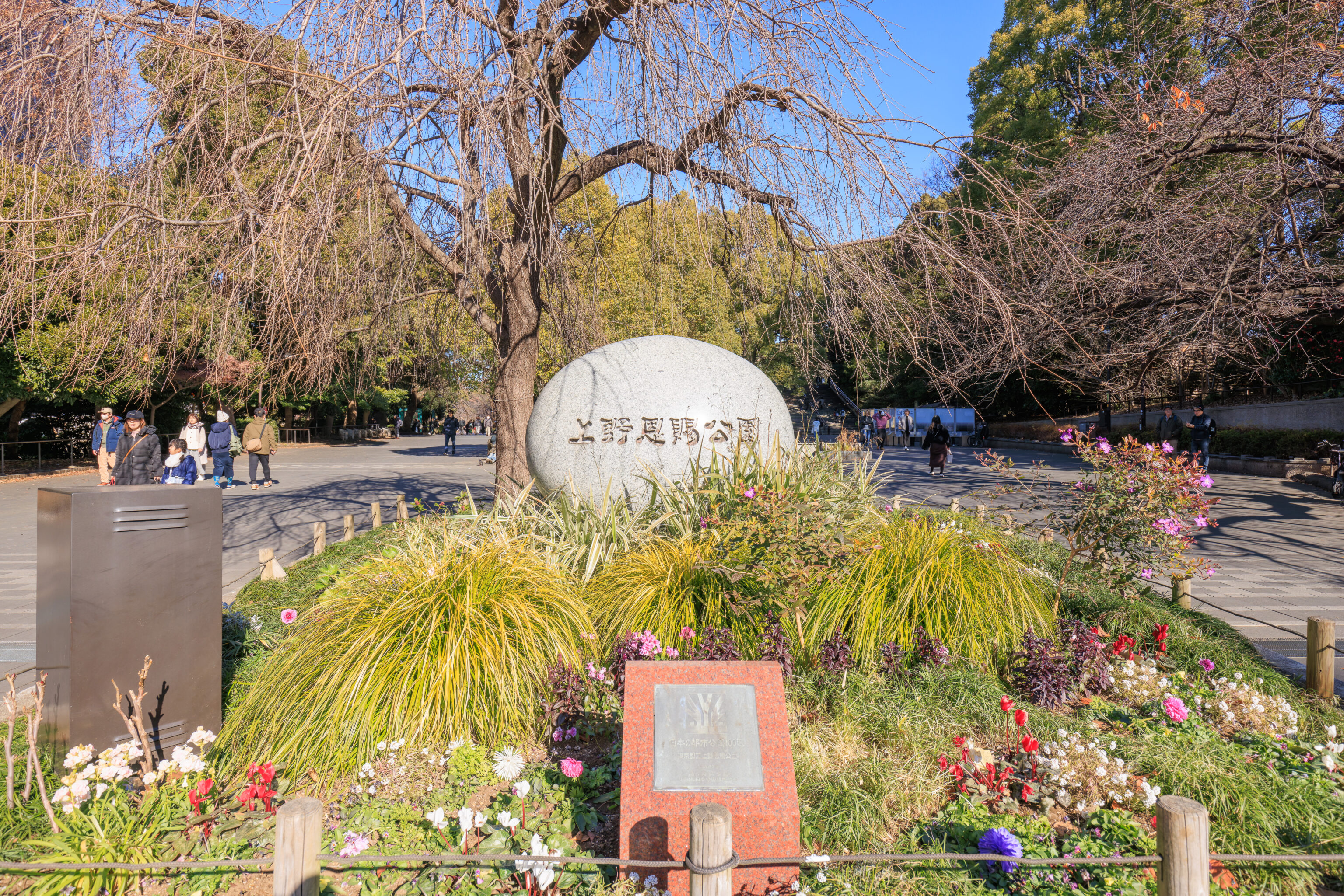
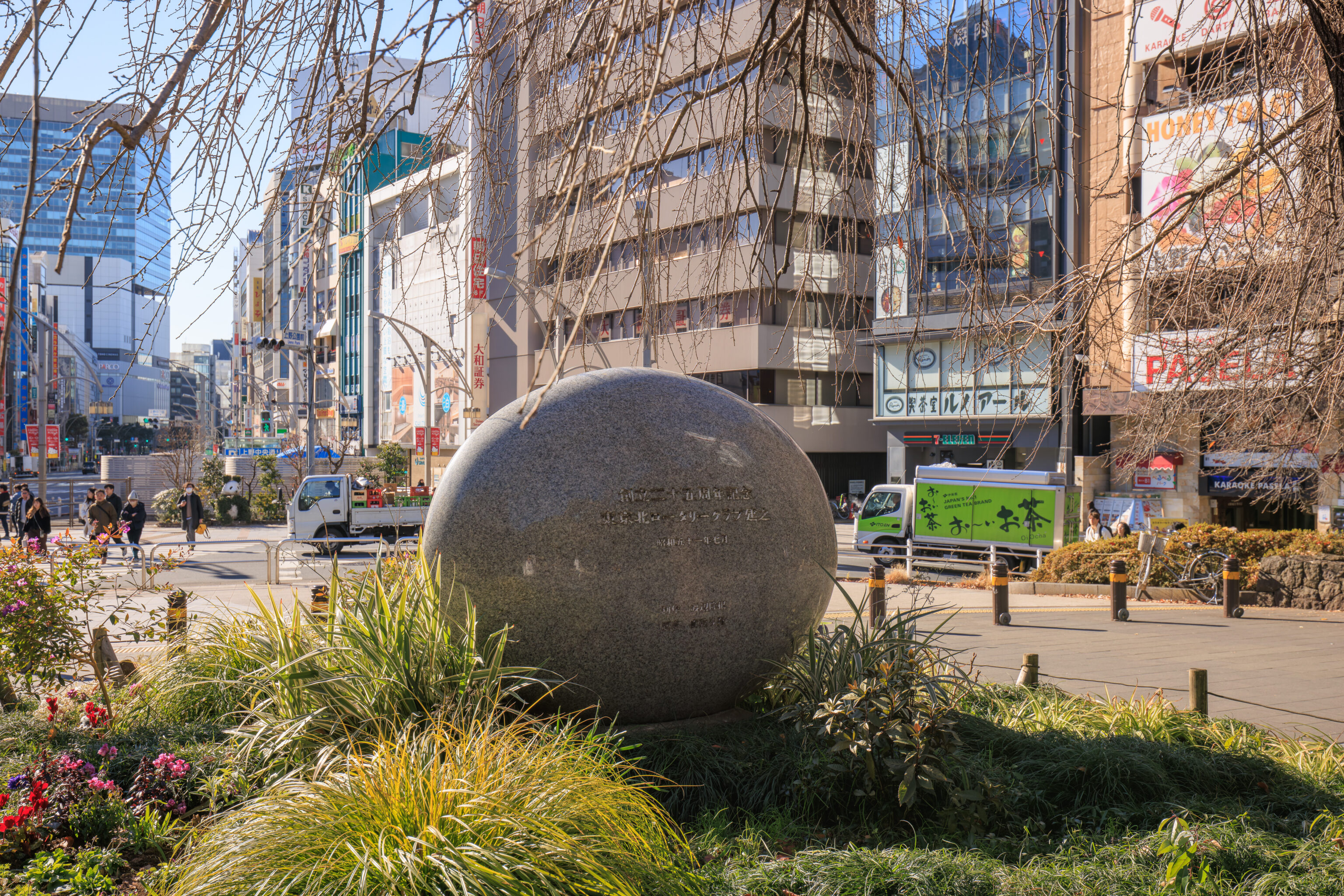
This egg-like sign shows the official name of this park, 上野恩賜公園 Ueno Onshi Kōen (Ueno Imperial Gift Park). The text on the rear suggests it was placed here by the Tokyo North Rotary Club in 1976. This is as far south as we went, although there is a nearby section of the park that goes a bit more to the south.
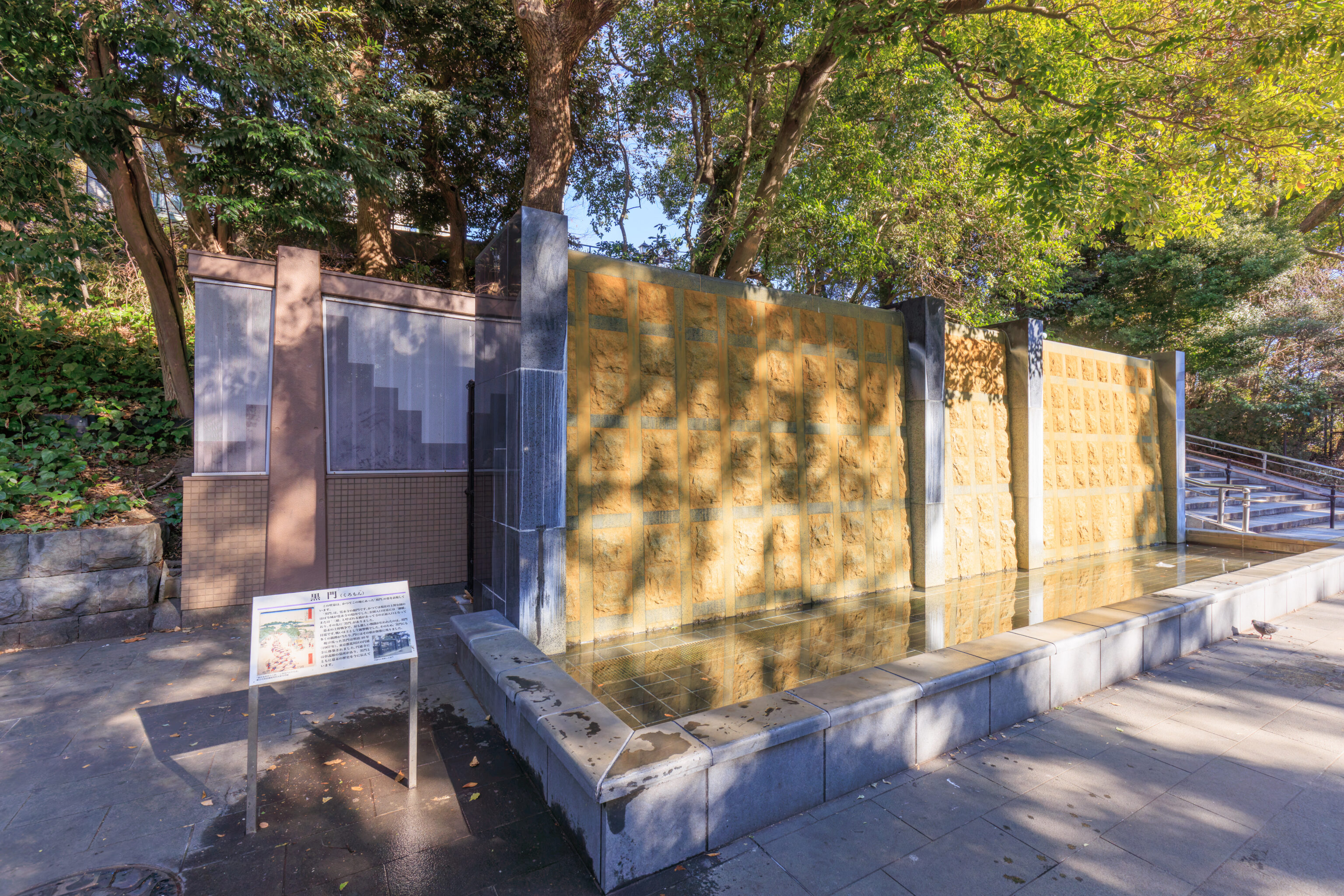
This modern wall features a cascade of water, although it wasn’t on when we saw it. It is a monument to a gate that formerly stood at this location and is described by the sign on the left:
Kuromon
This wall fountain represents the "Black Gate" that once stood here.
"Kuromon" is the main gate of Kan'ei-ji Temple. In the past, almost the entire area of present-day Ueno Park was within the grounds of Kan'ei-ji Temple. Near the entrance to the park, there is a bridge called "Mitsuhashi" or "Mitsuhashi," which serves as the main entrance to the temple, and beyond that is the "Kuromon."
The fiercest fighting in the final Ueno War took place near Kuromon Gate. The fighting was mainly a gunfight. As a result, Kuromon Gate was hit by many bullets, leaving countless scars on the gate.
The surviving Kuromon gate was relocated to Entsu-ji Temple in Arakawa Ward, Tokyo in 1907. Entsu-ji Temple is home to the graves of the Shogitai, and together with the Kuromon gate, it continues to convey the history of the end of the Edo period.
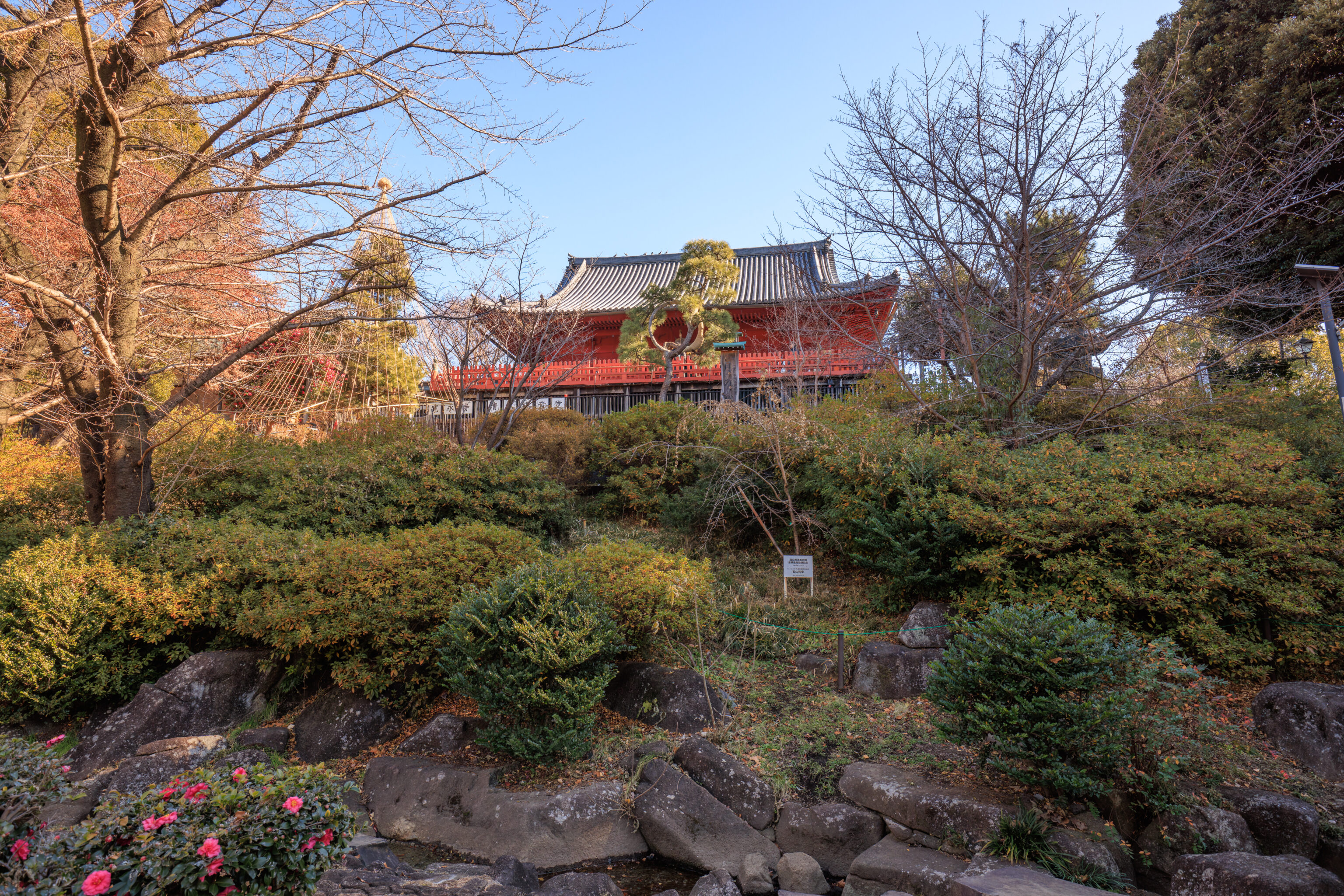
We passed by the front of the Kiyomizu Kannon-do as we headed to the north.
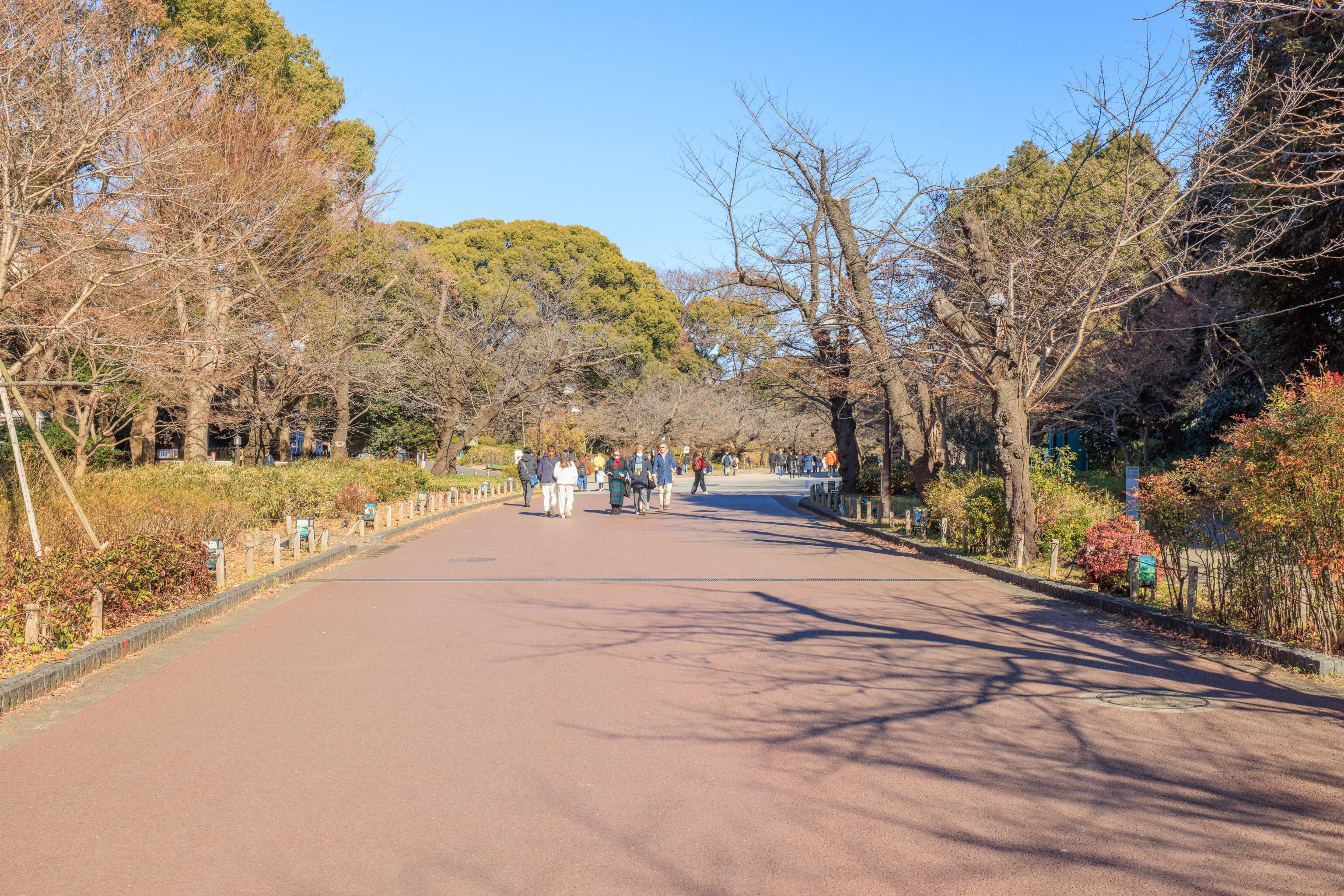
The path here was wide and spacious.
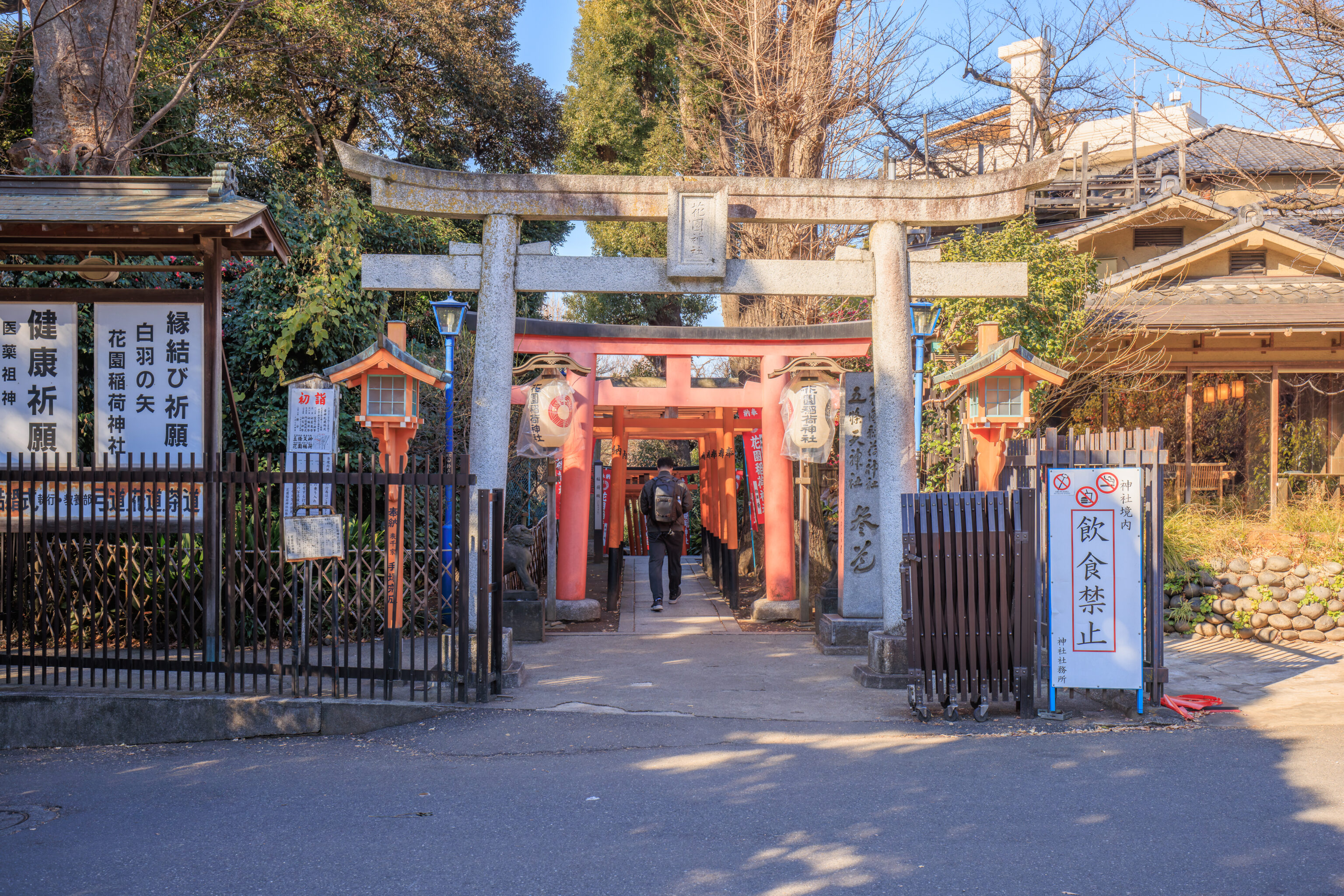
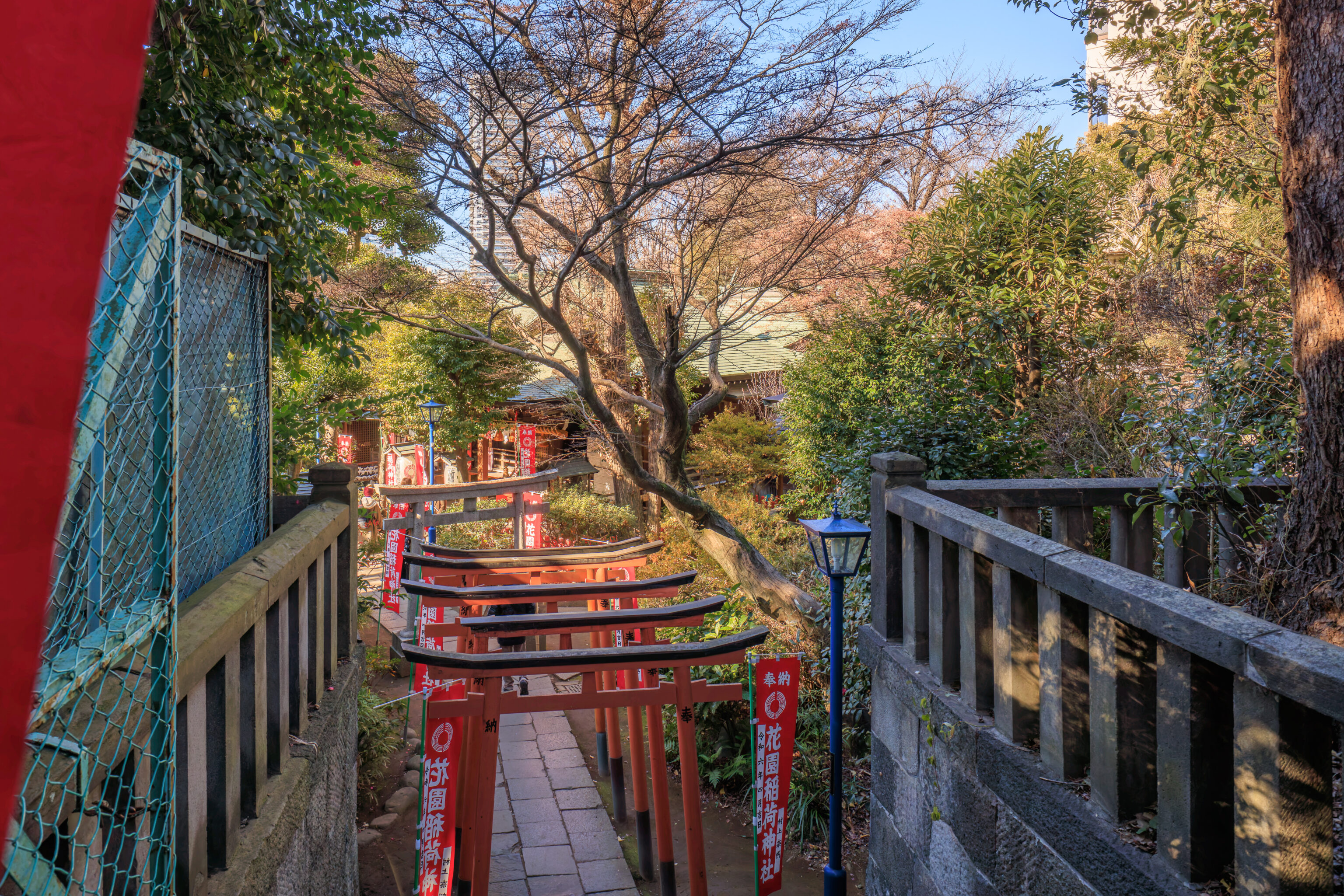
We entered the adjacent 花園稲荷神社 Hanazono Inari-jinja and 五條天神社 Gojo Tenjin-jinja, not far to the north of the Kiyomizu Kannon-do. This entrance from the east side is above the two shrines. We walked down via stairs to reach the actual shrine buildings.
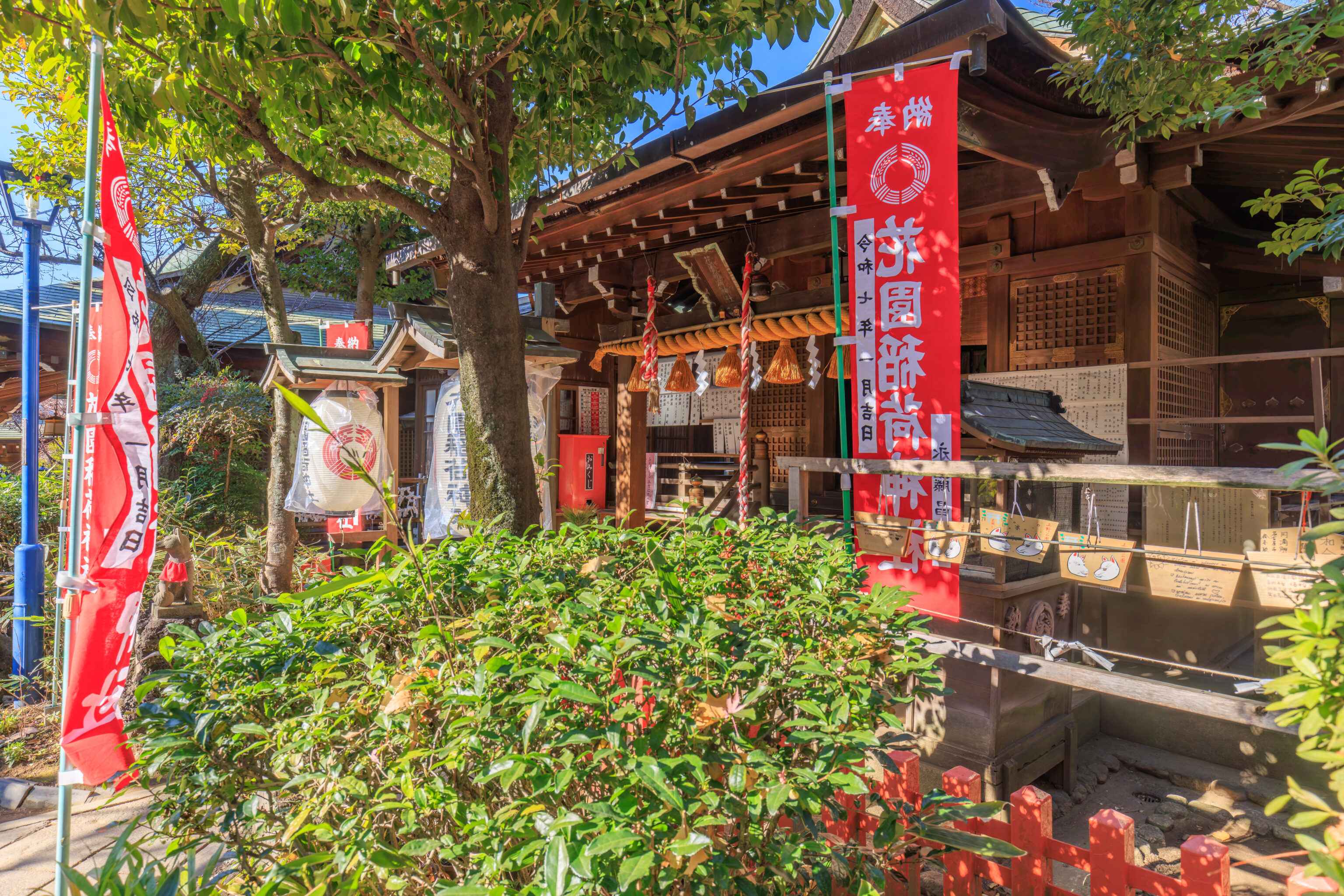
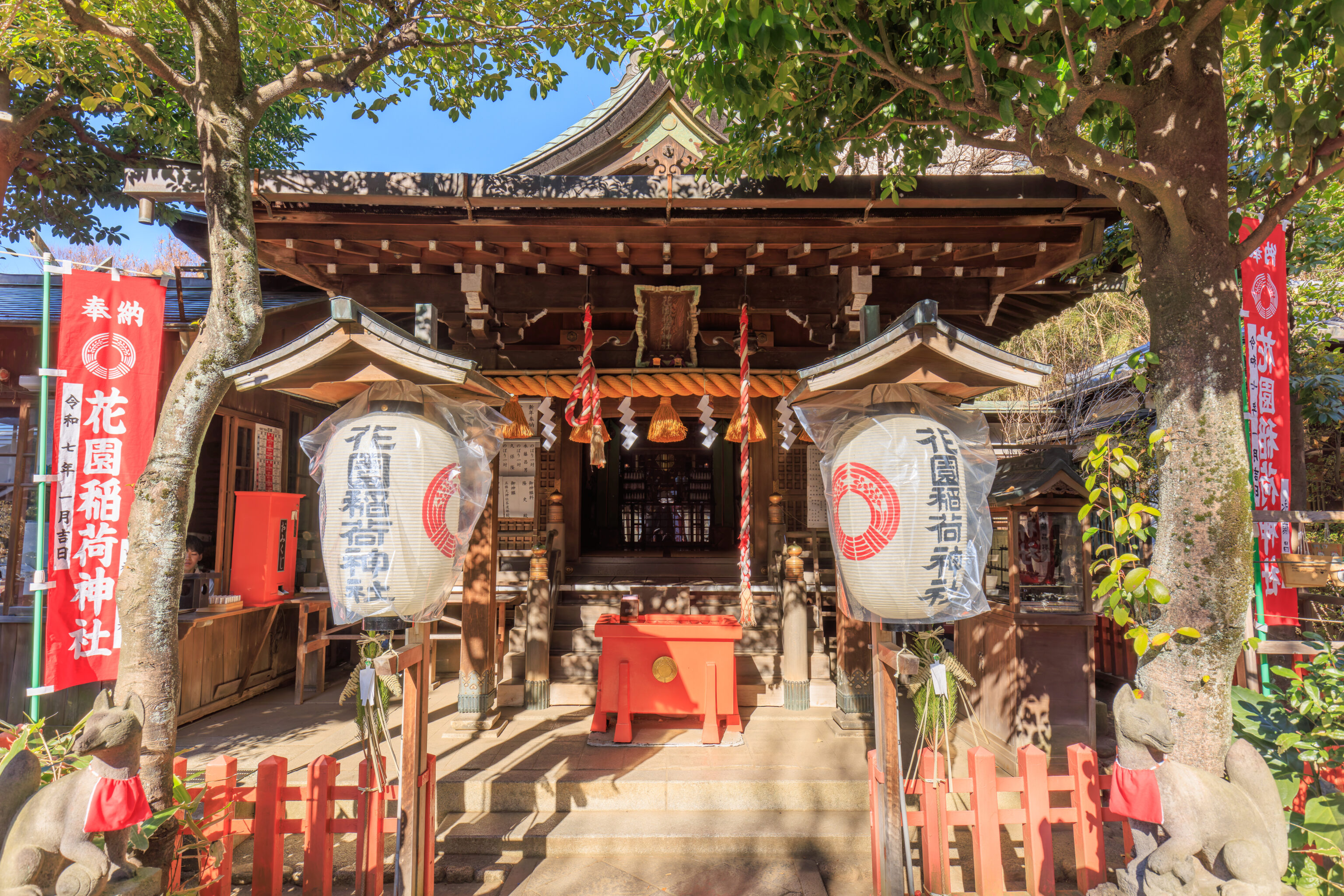
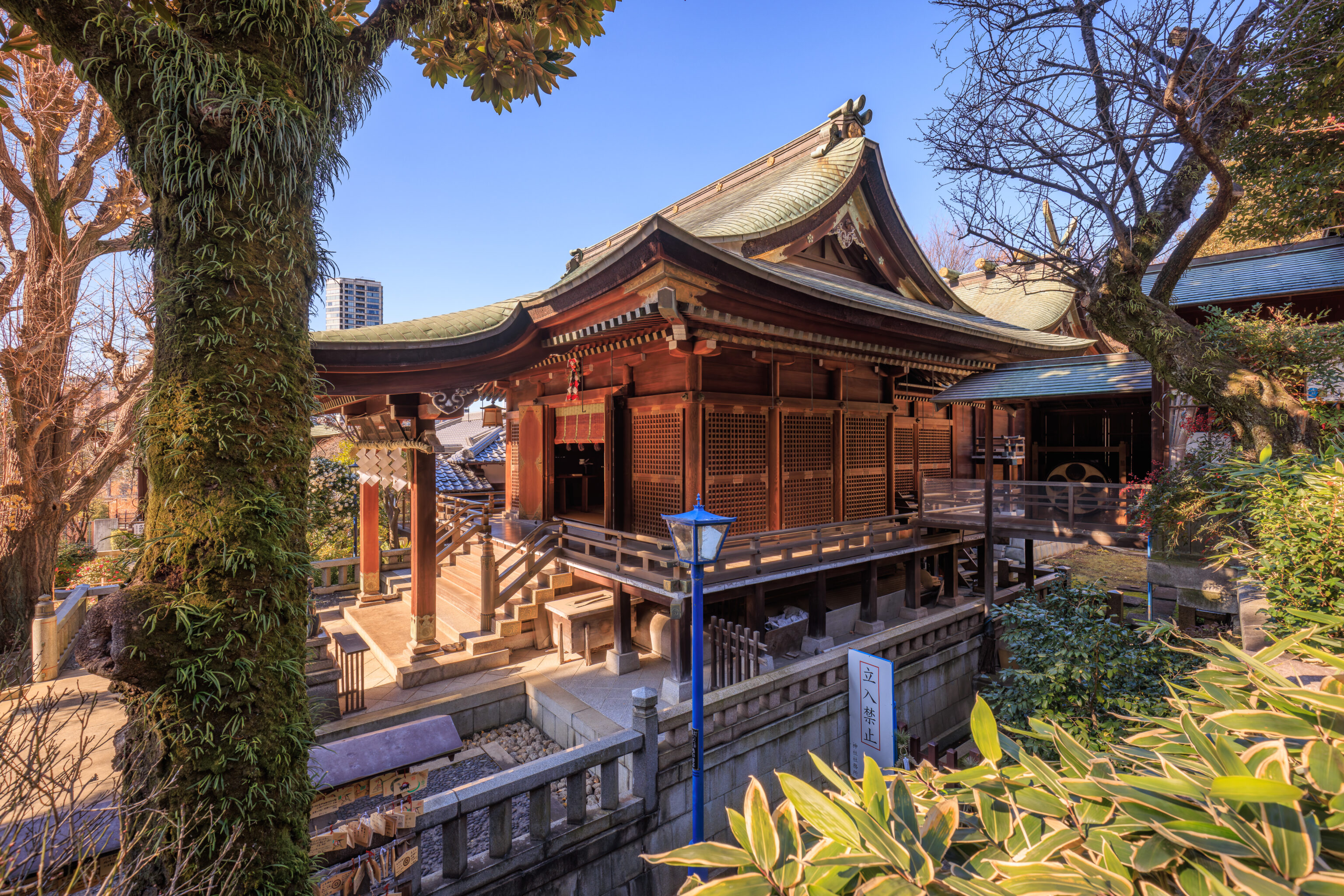
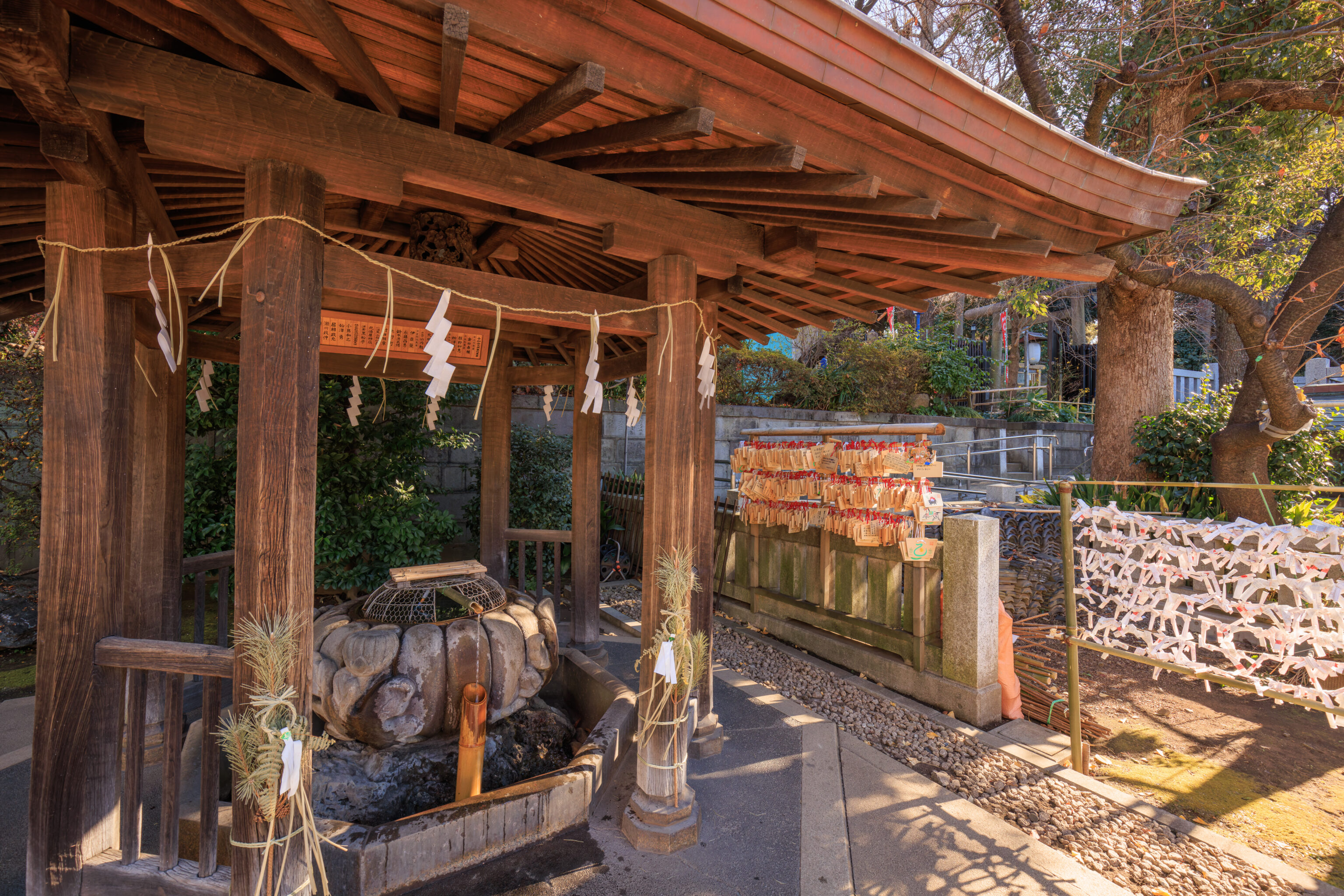
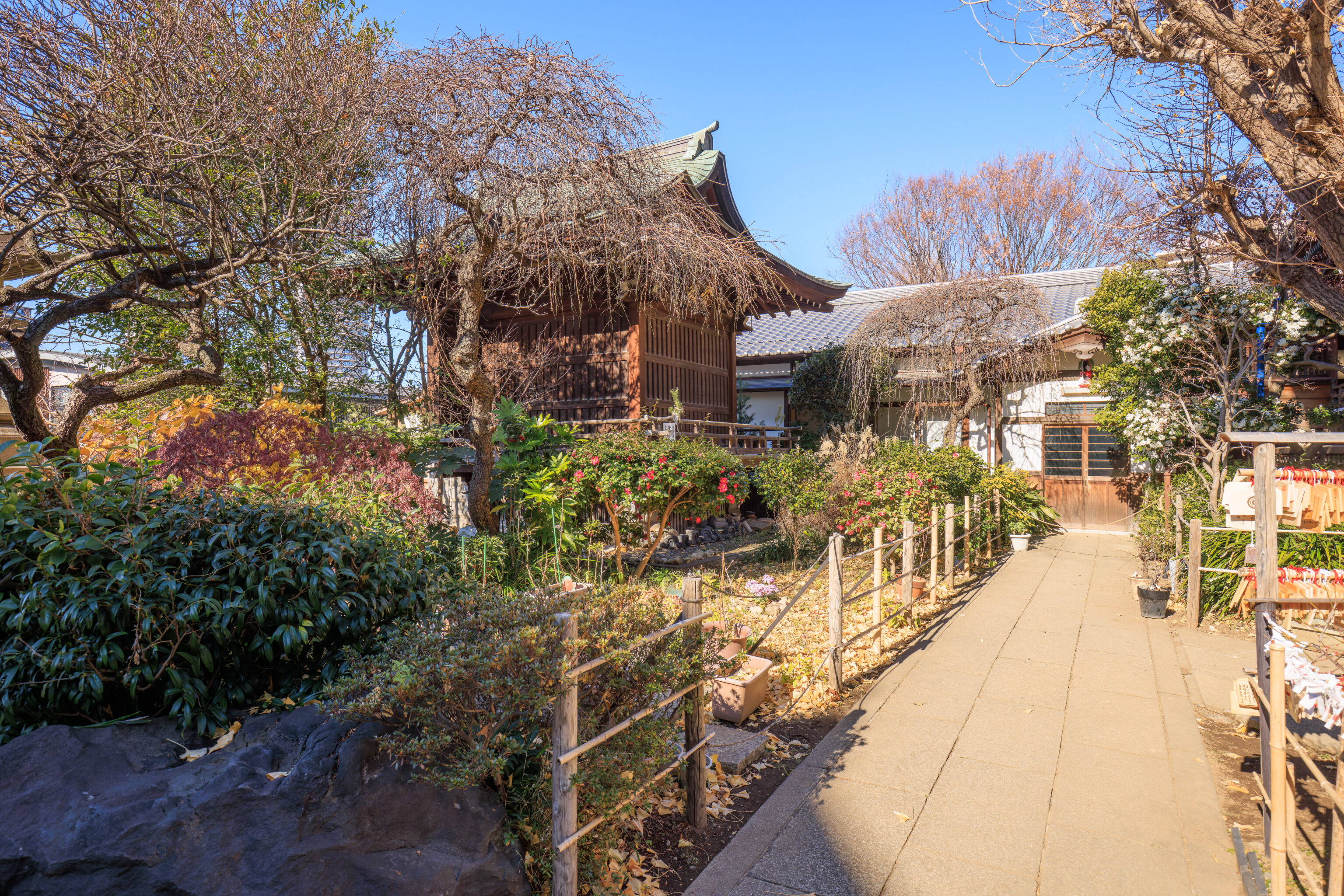
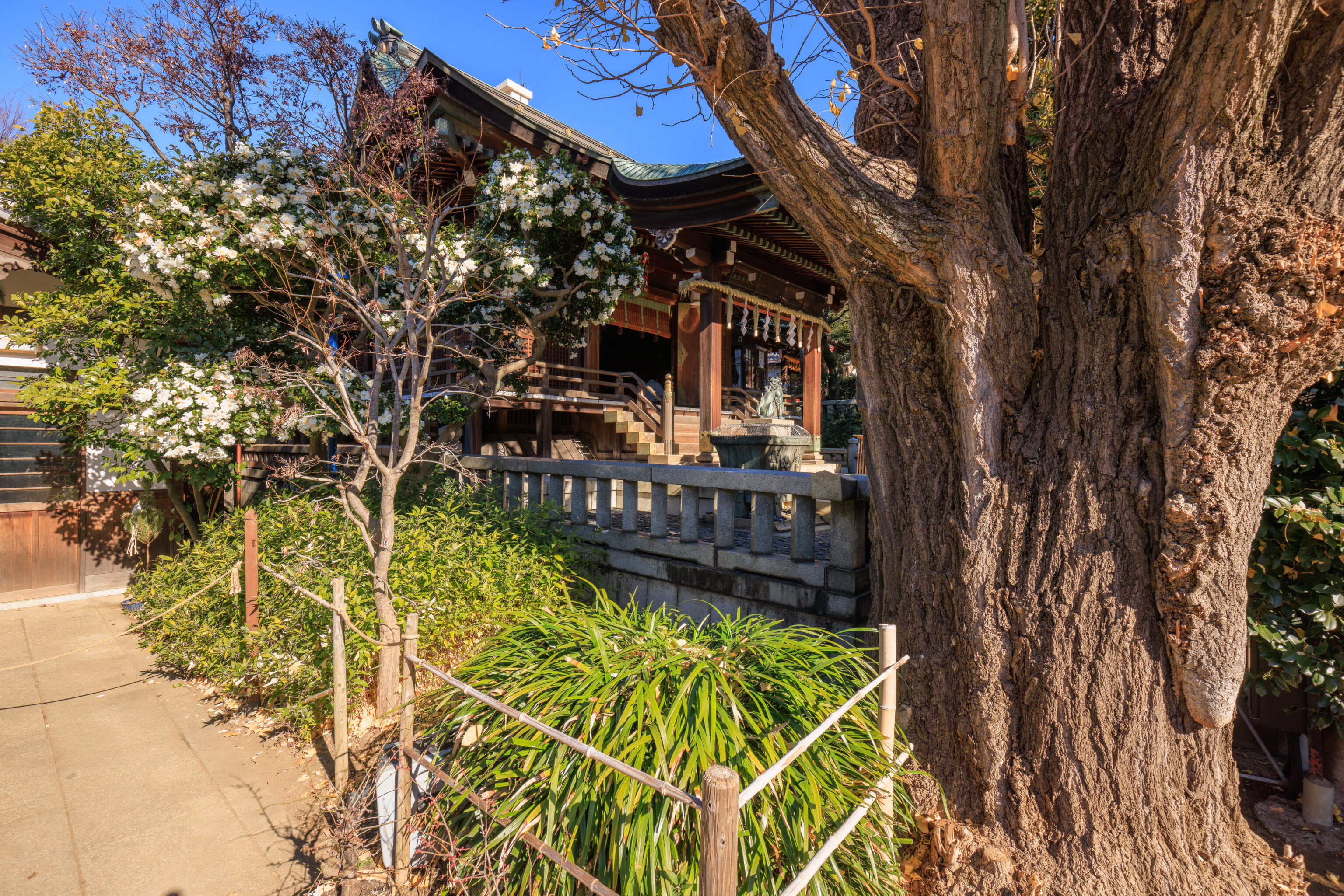
We walked around the two shrines a bit. The area occupied by the them is pretty small.
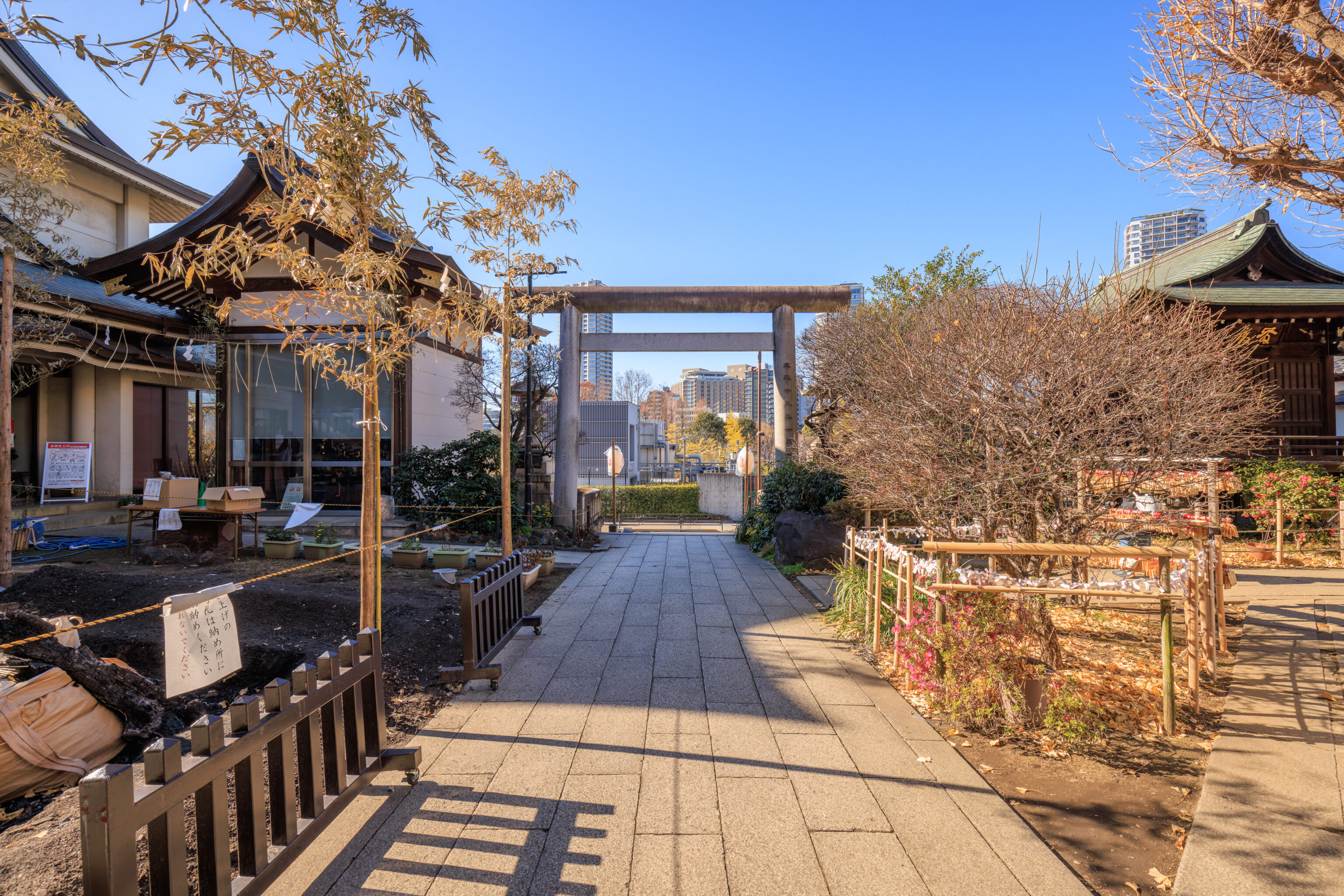
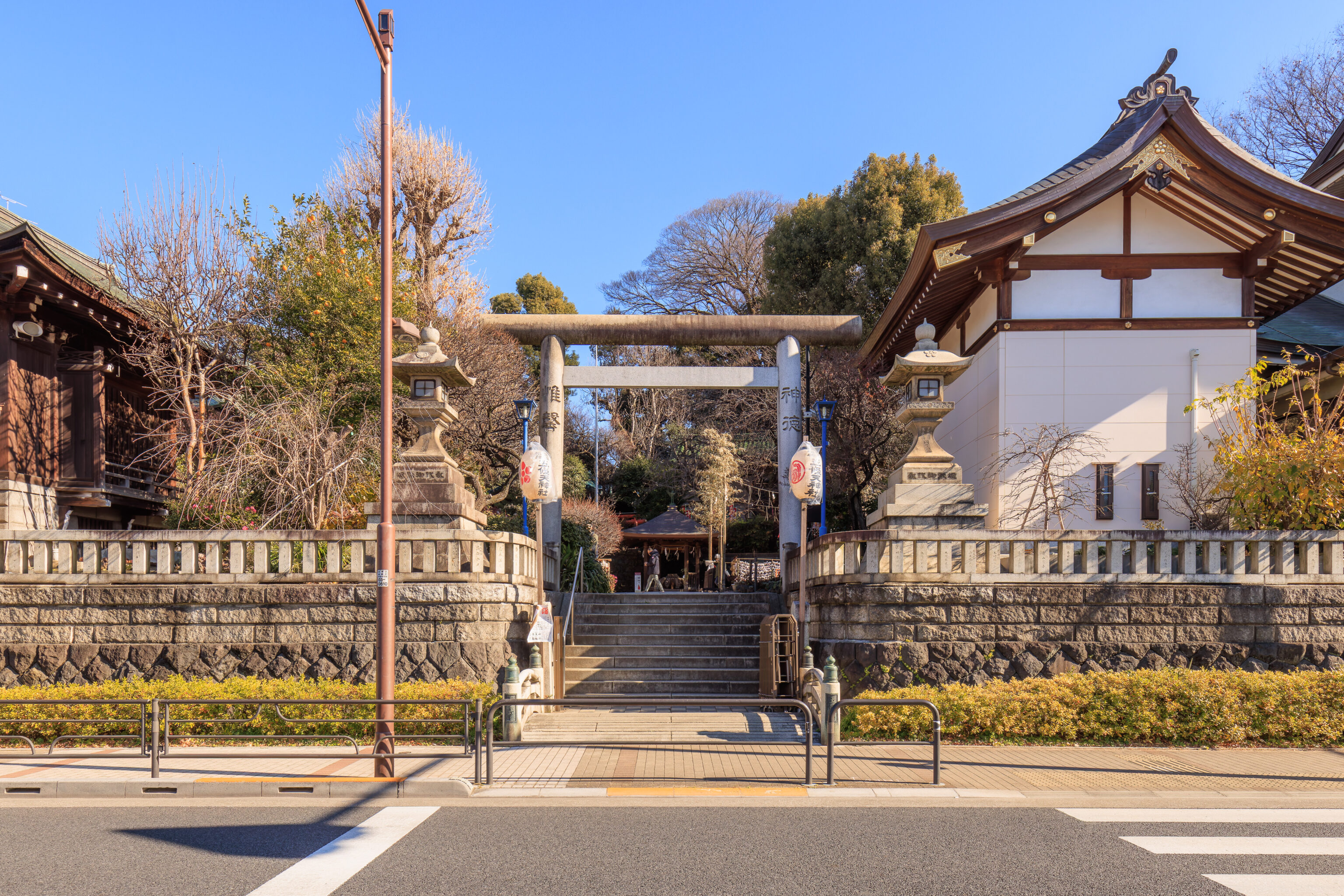
We exited under a torii on the west side of the shrines.
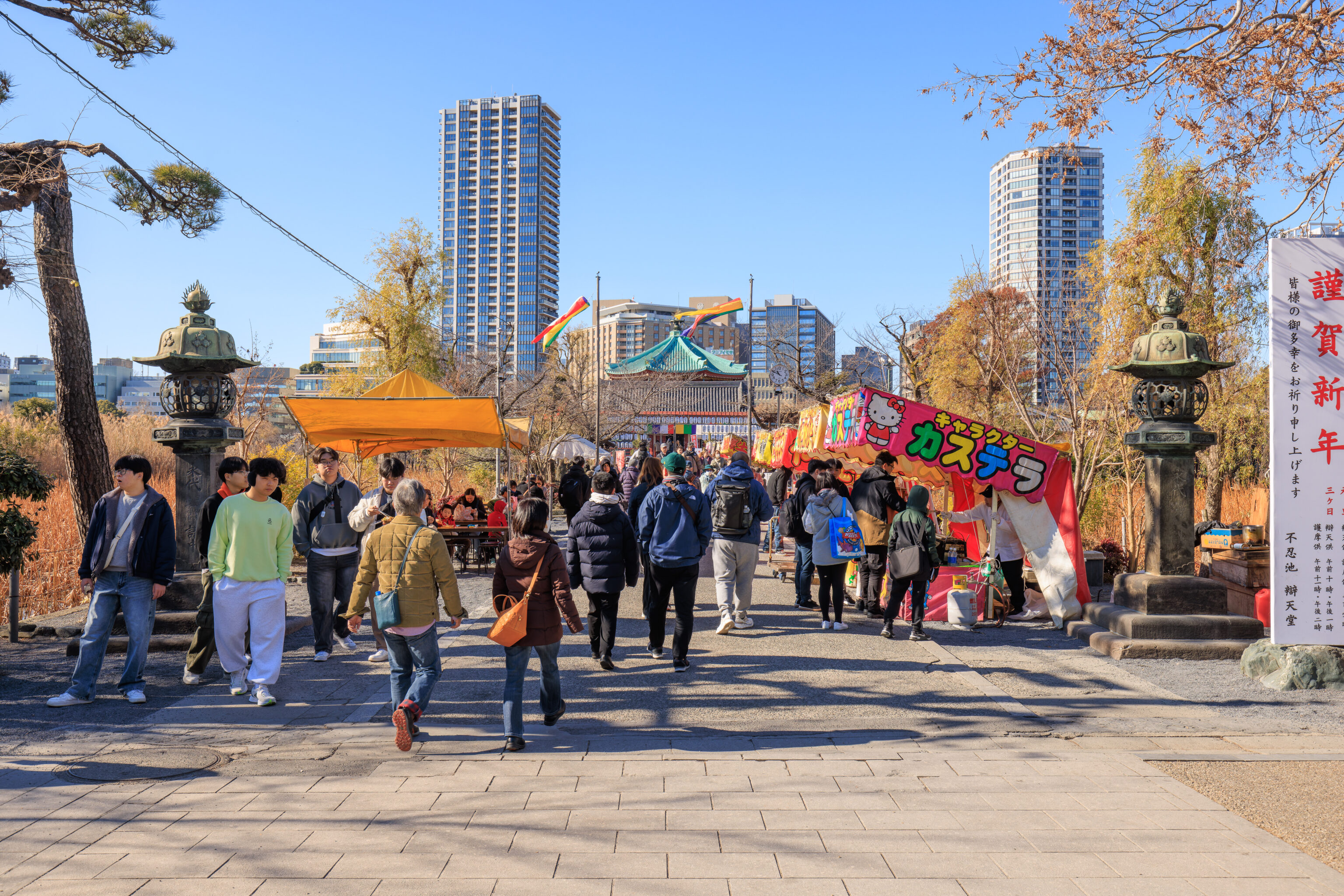
We then walked a short distance to the south to reach the entrance to 不忍池辨天堂 Shinobazu-no-ike Benten-do (Shinobazu Pond Benten Temple).
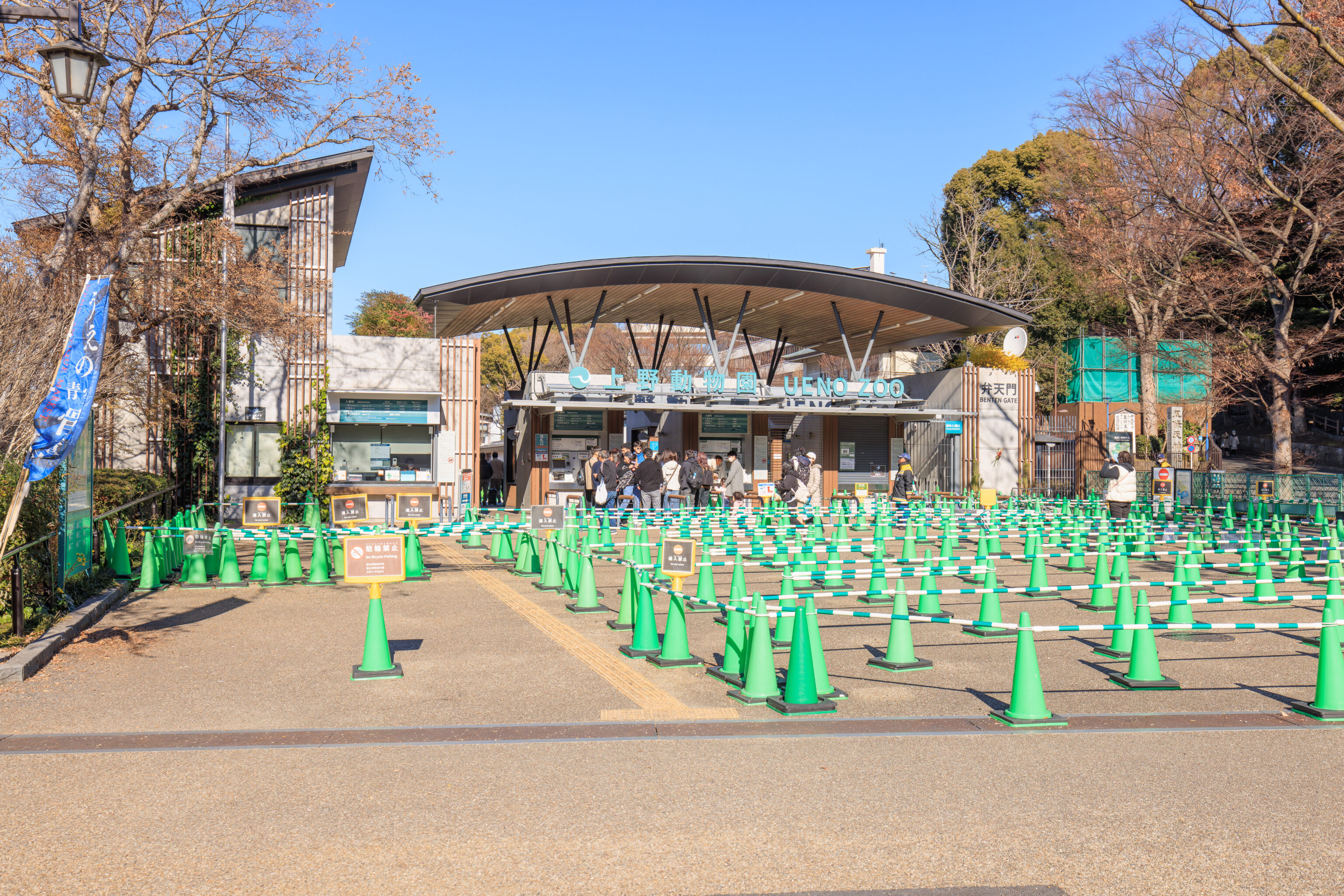
The southern entrance to the Ueno Zoo is here. A large queue was configured at the entrance but it was empty at the time.
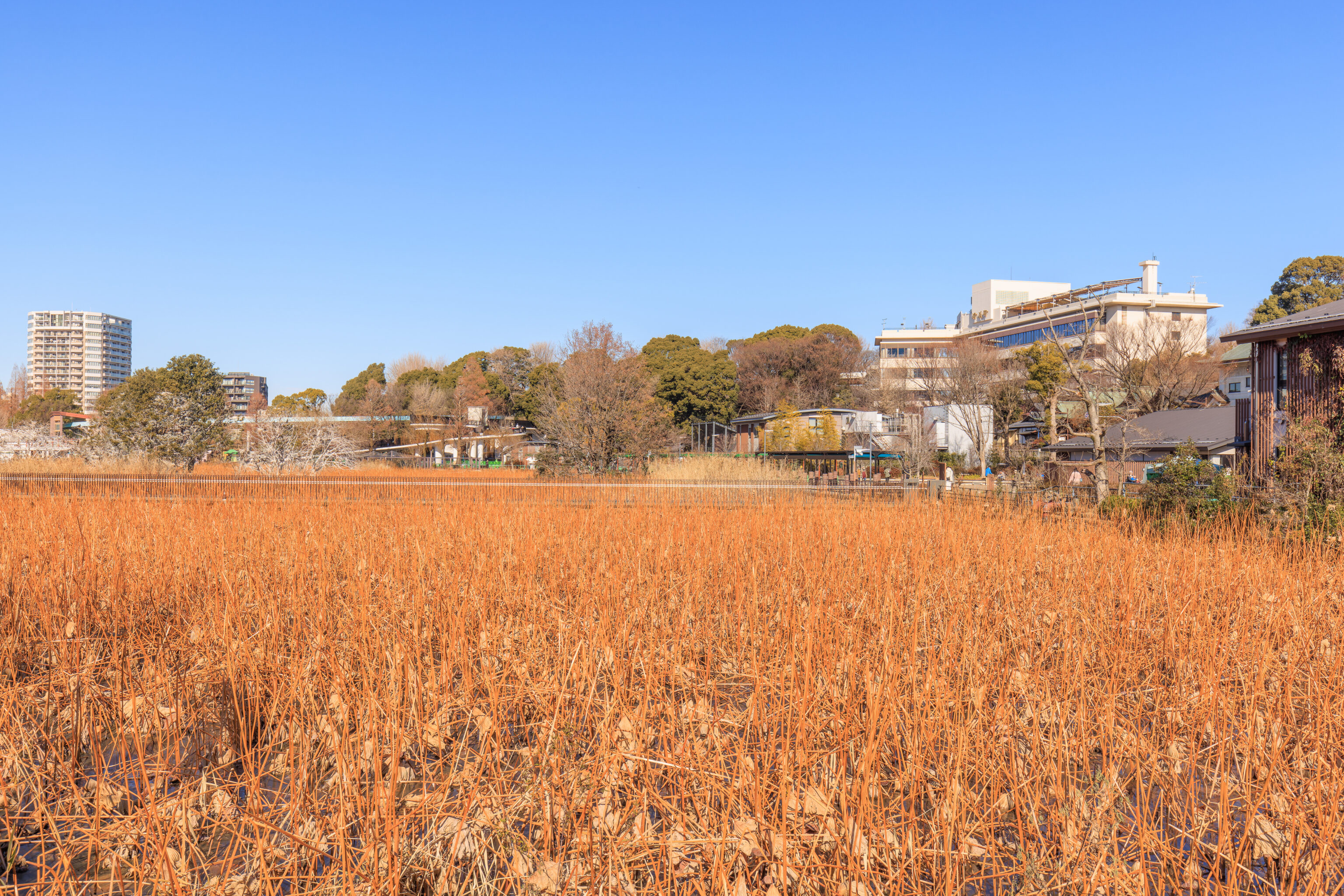
We walked a little bit past the temple entrance to see the 不忍池 Shinobazu Pond. This large pond occupies most of the southern end of Ueno Park. The temple actually sits on an island within this pond. From this perspective, the pond seems to be nearly completely covered with lotuses.
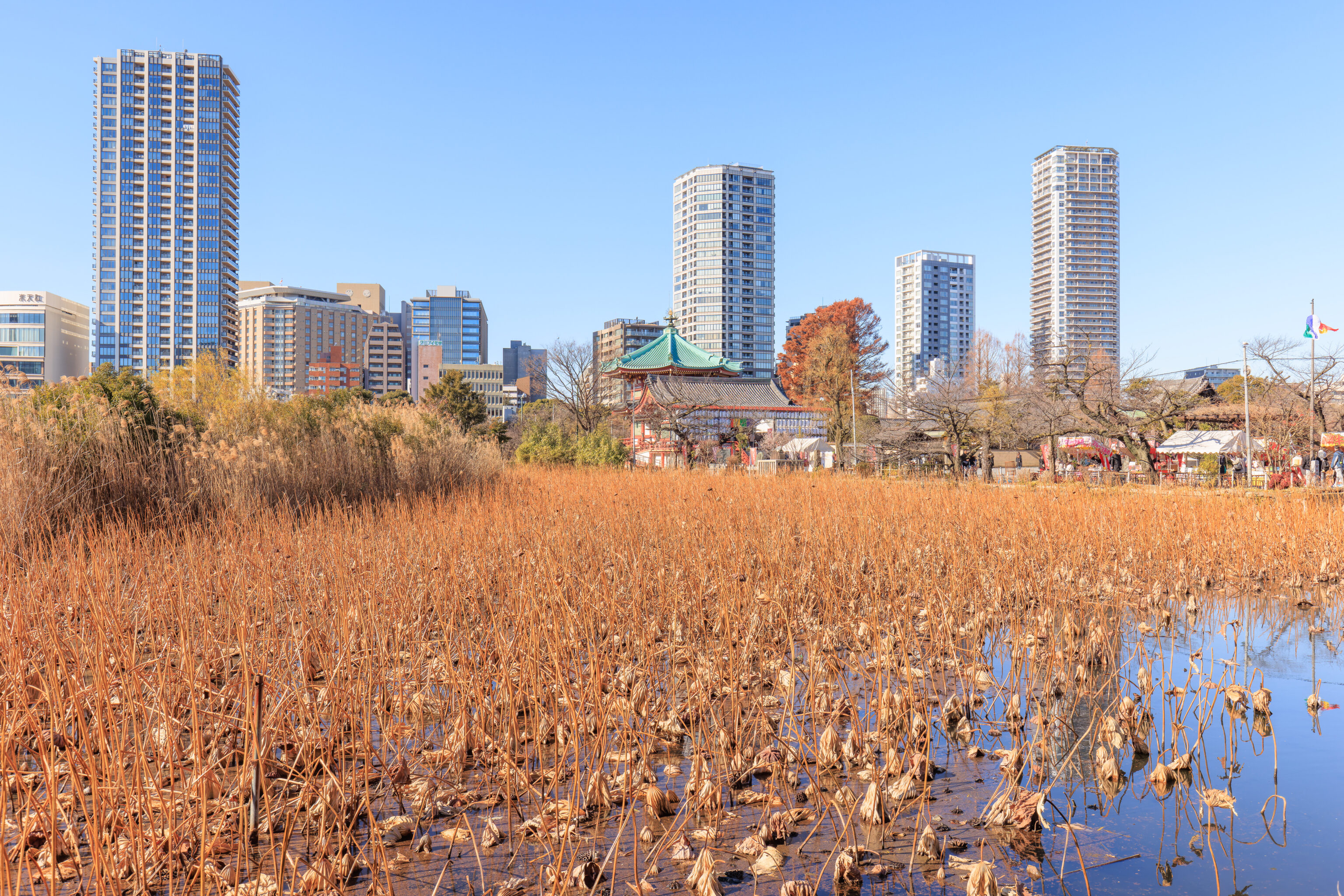
The temple can be seen here when looking to the northwest.
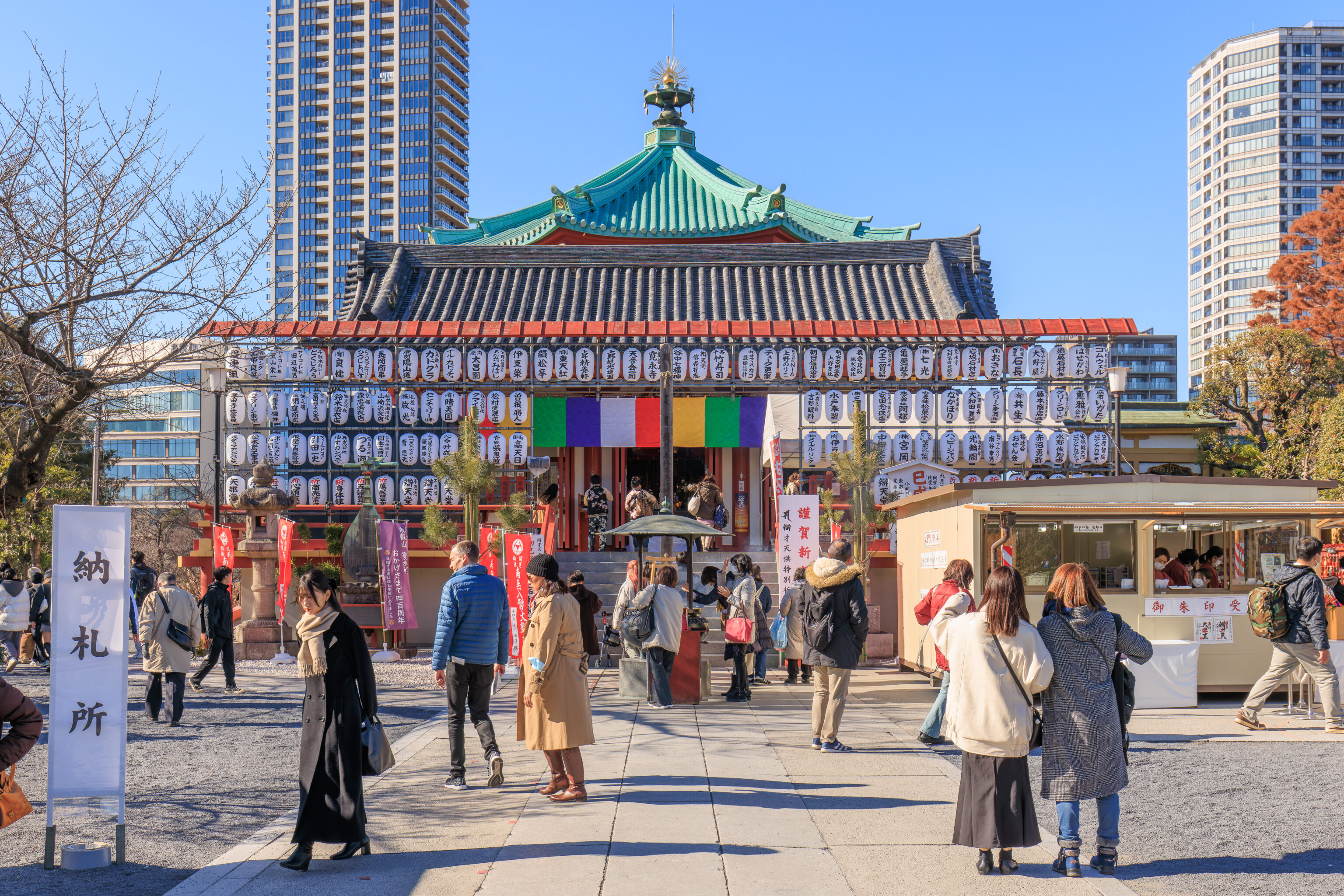
We walked past a number of food vendors who were setup on the bridge leading to the temple’s island. This temple offers 御朱印 Goshuin at the small counter on the right. Like some other temples, you drop off your 朱印帳 shuincho in exchange for a token which is used to retrieve the shuincho after they are done writing and stamping the goshuin.
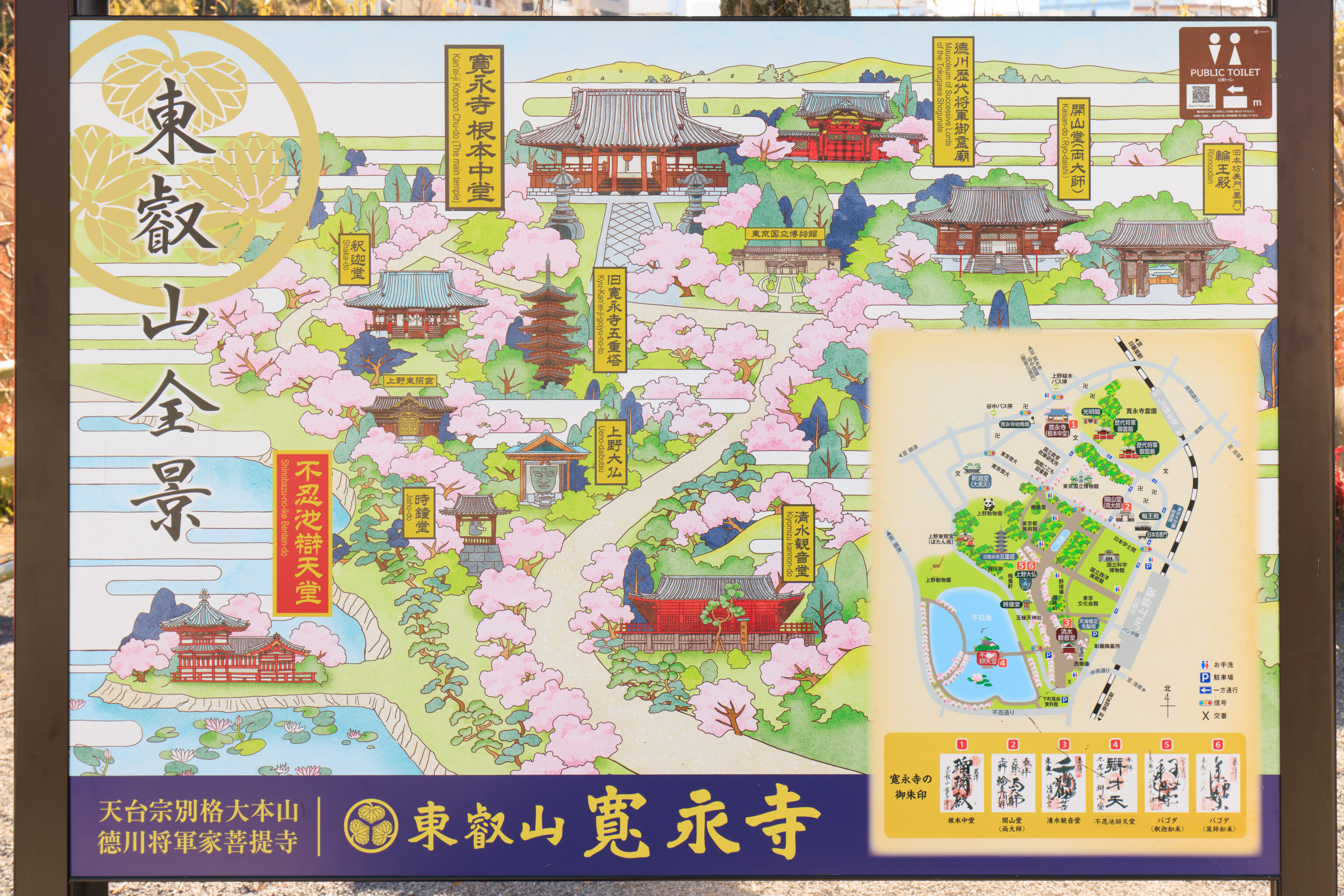
We came across this map which shows the various temples and shrines located in Ueno Park.
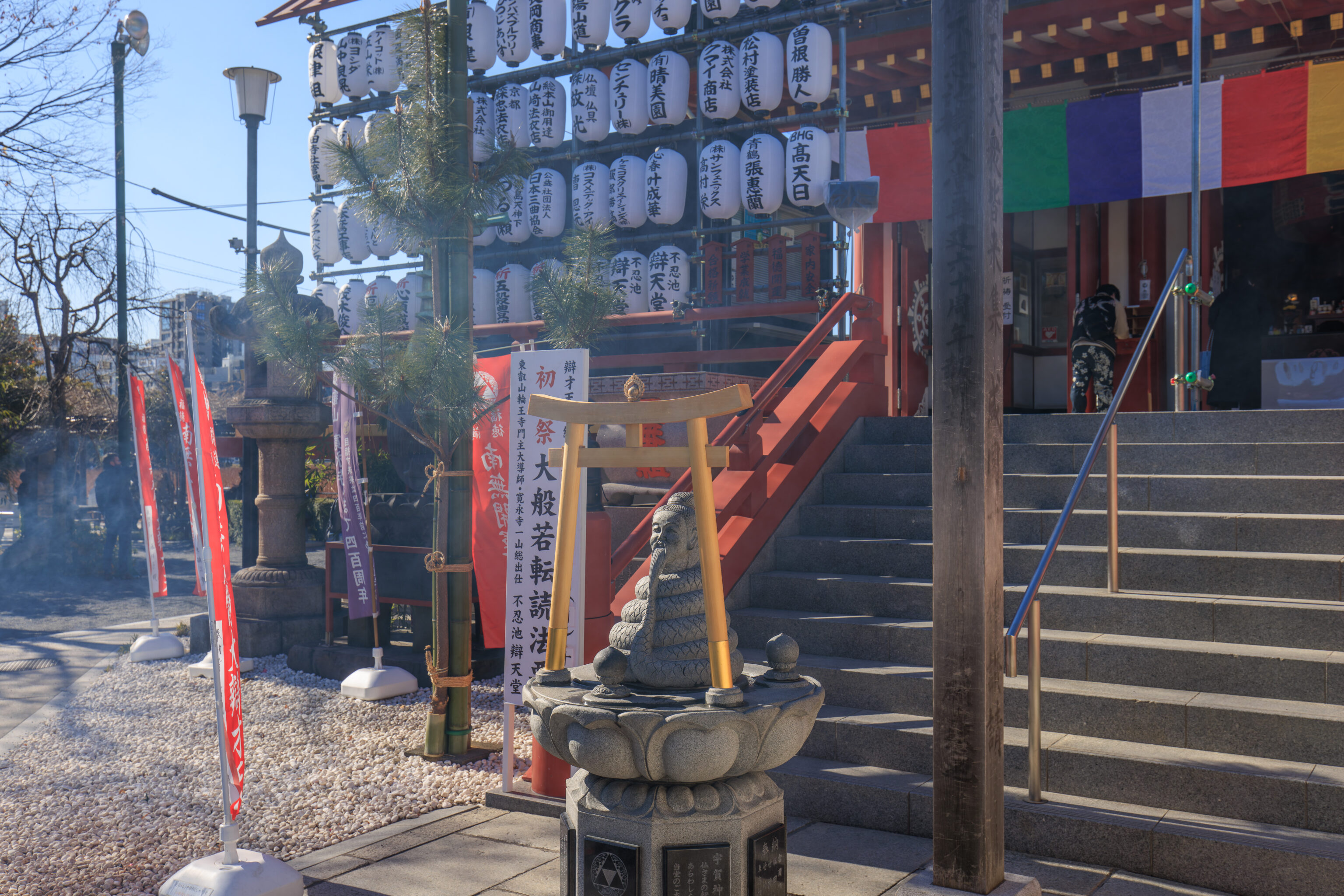
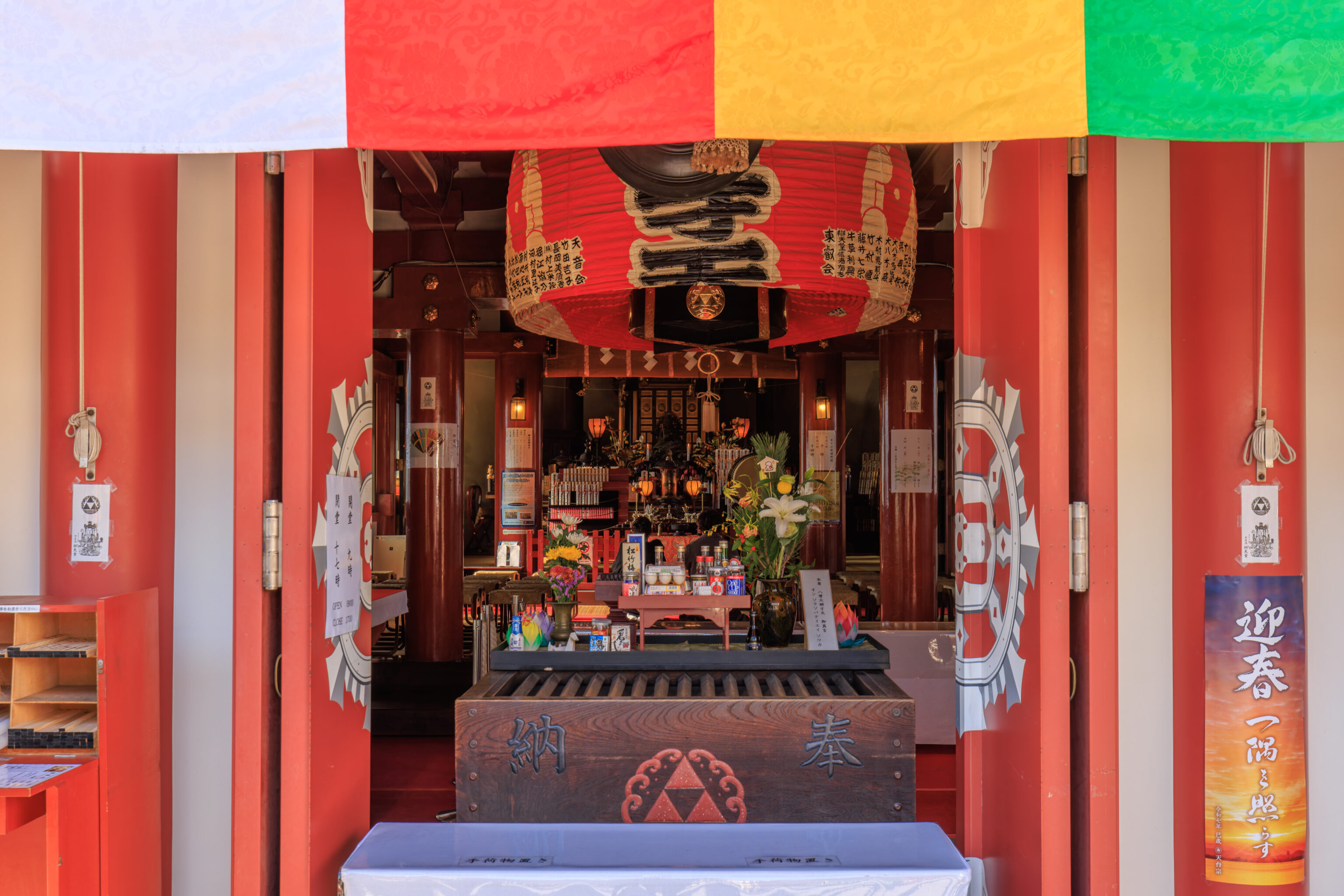
We walked over to the temple’s main hall to take a quick look.
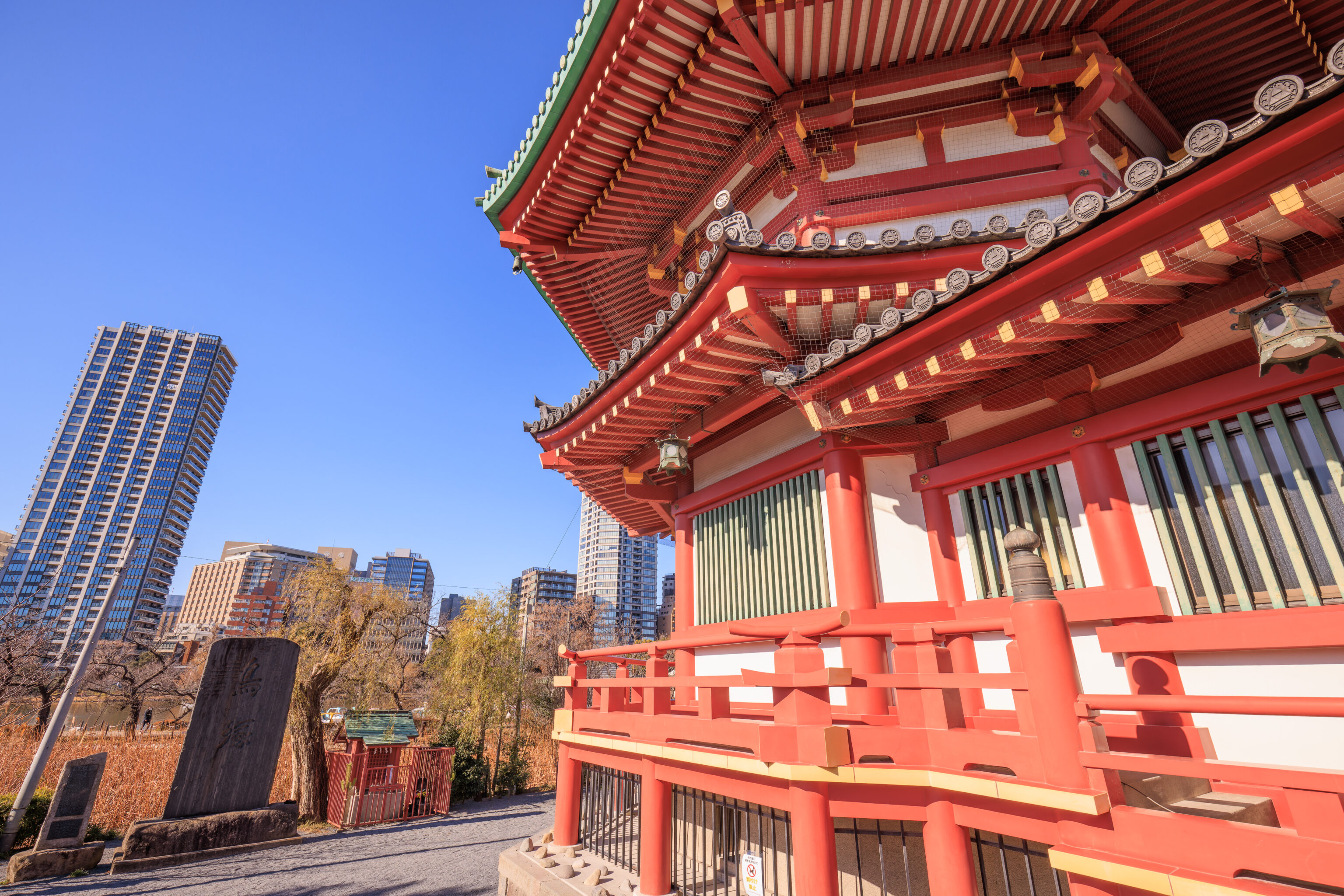
We walked around the south side of the temple.
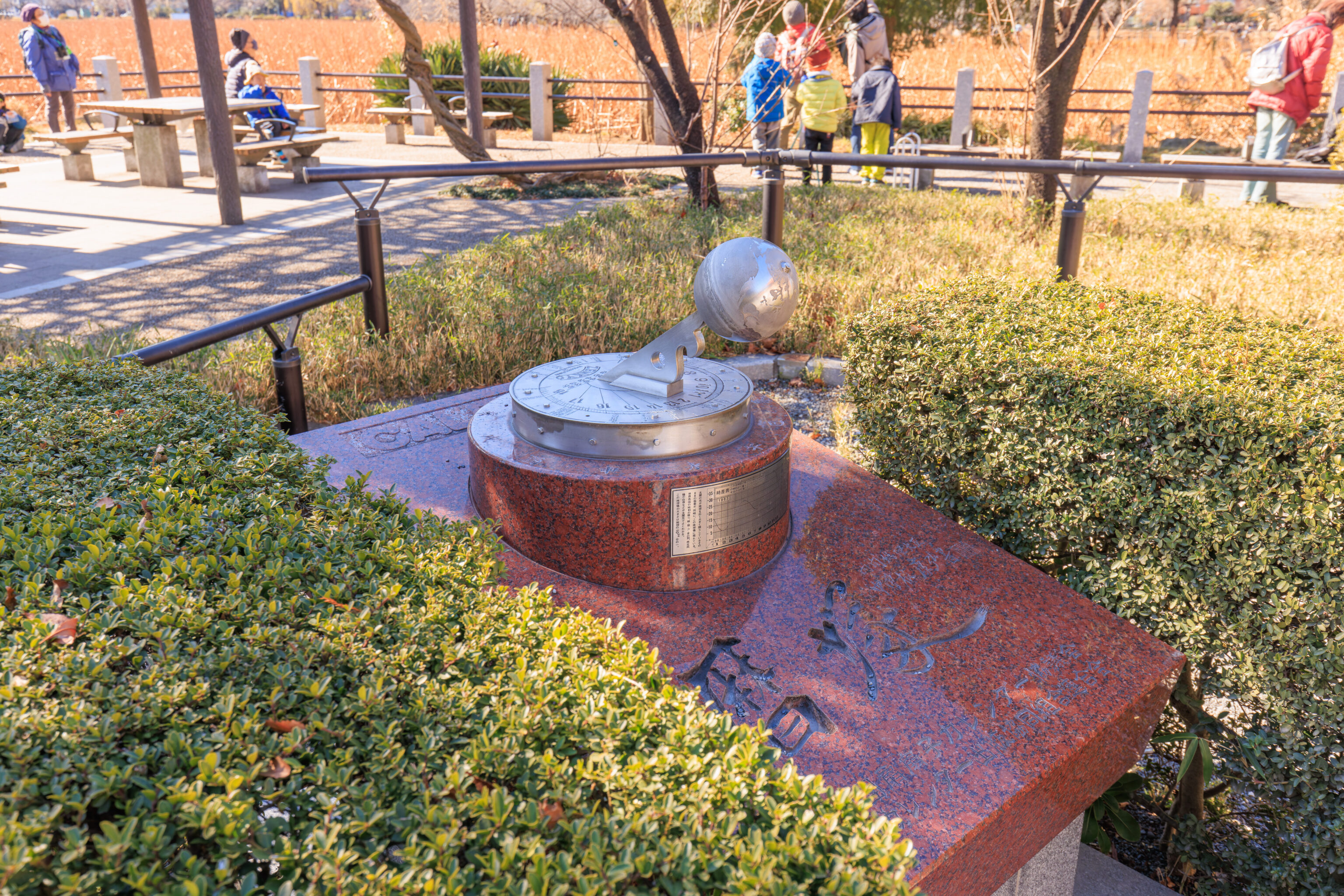
This sundial was at the edge of a small rest area by the south side of the temple.
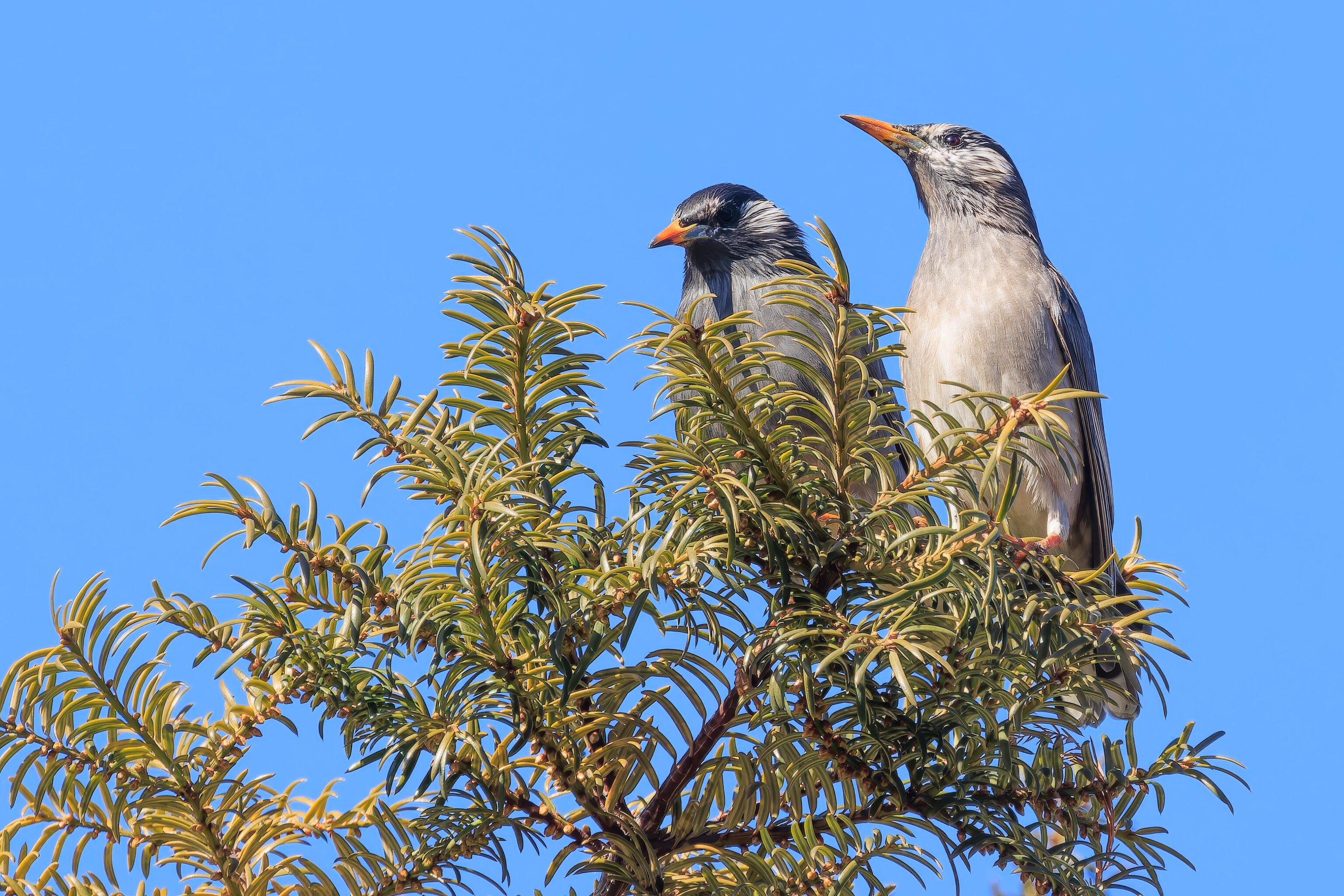
We heard quite a few birds here. We found these two White-Cheeked Starlings at the top of a nearby tree. This is our first time identifying this species. While we’ve been to Japan many times now, we’ve never really spent the time to birdwatch.
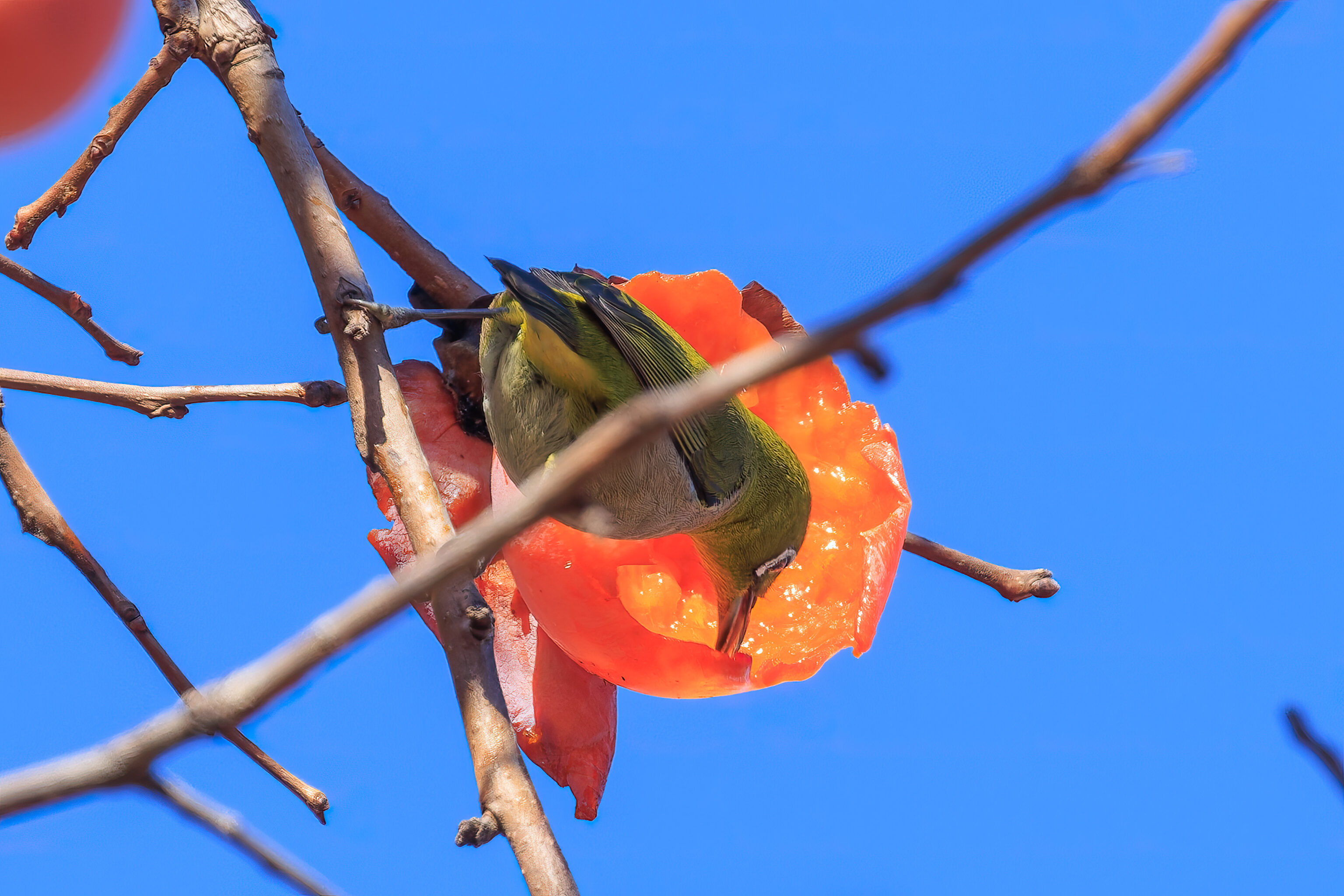
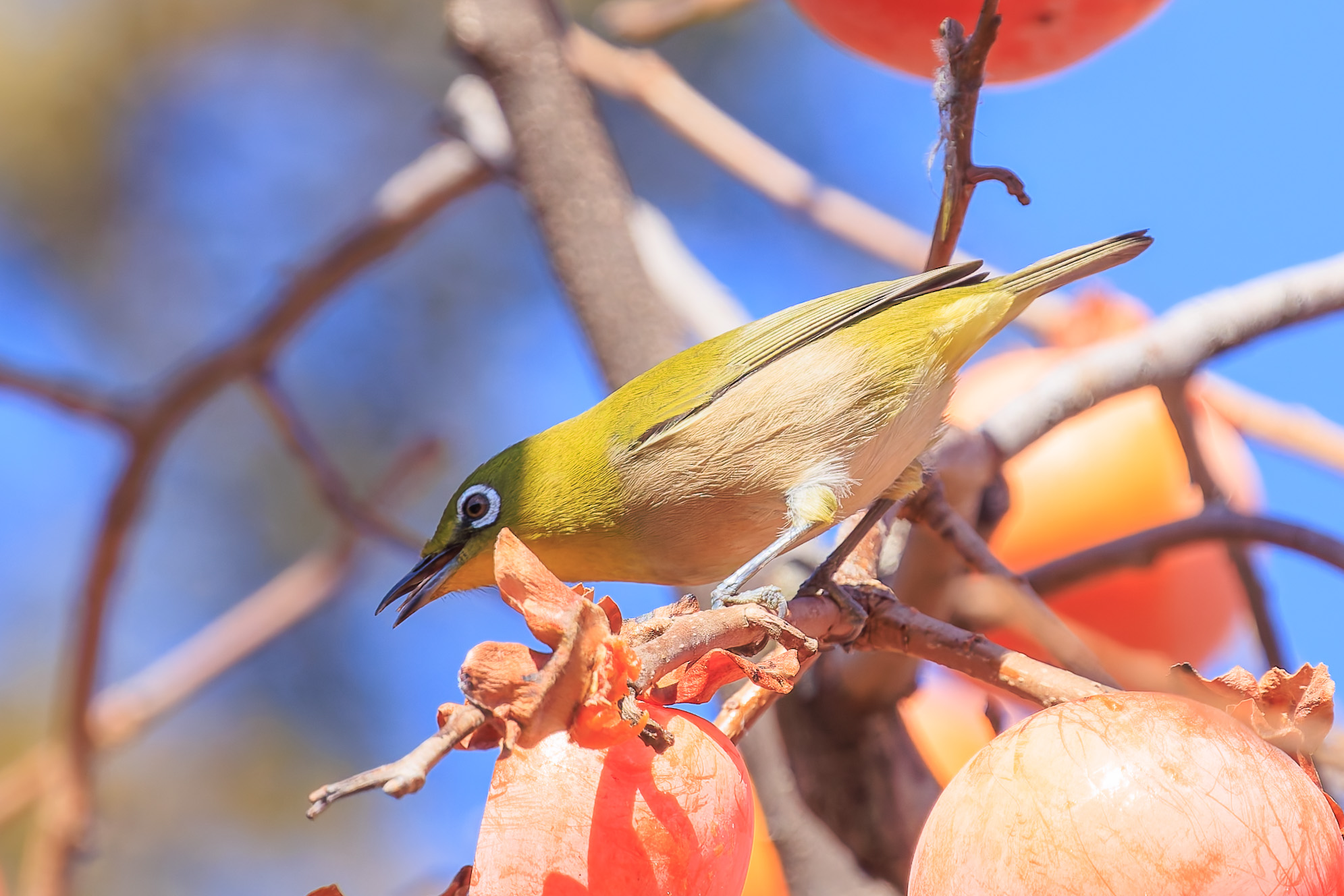
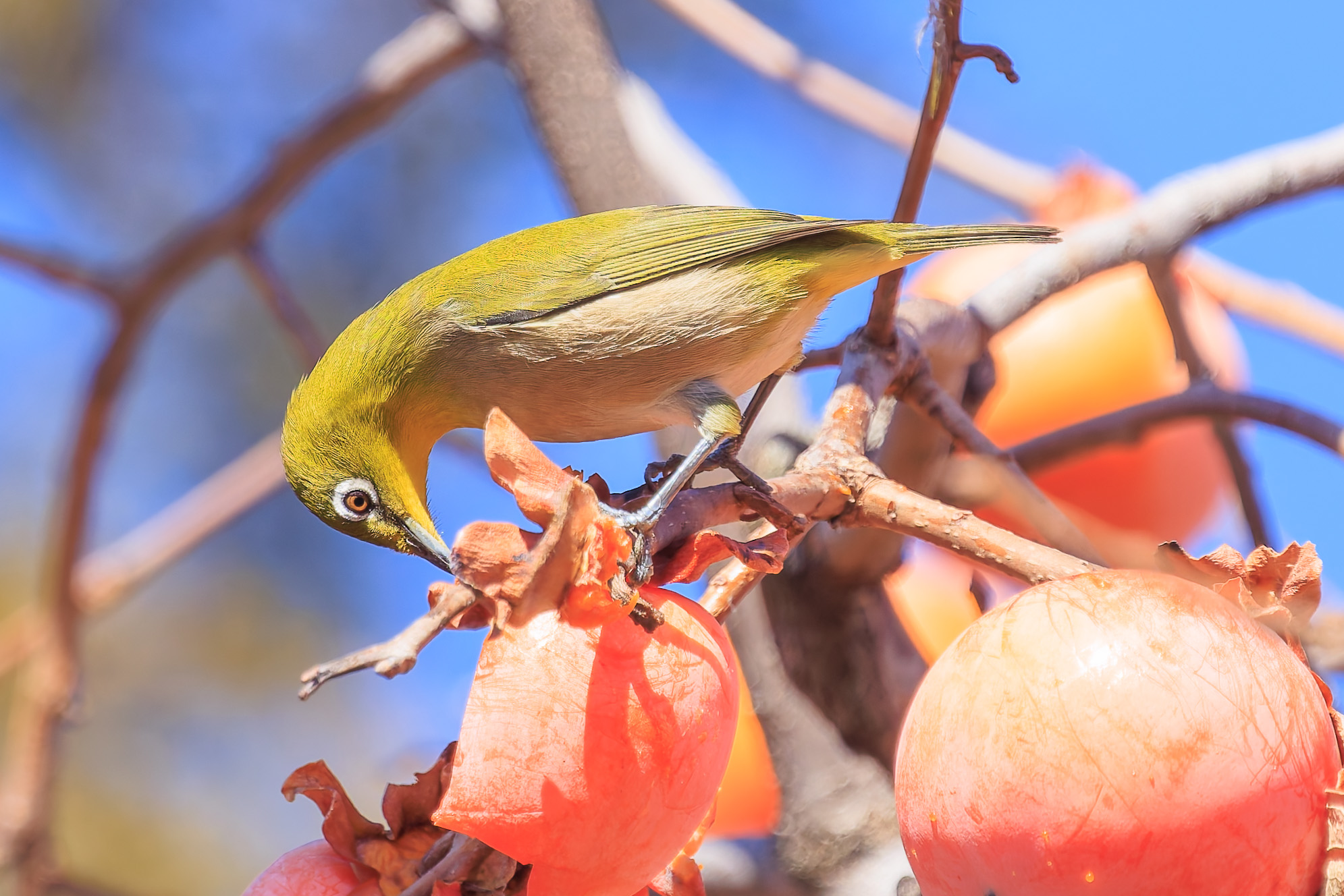
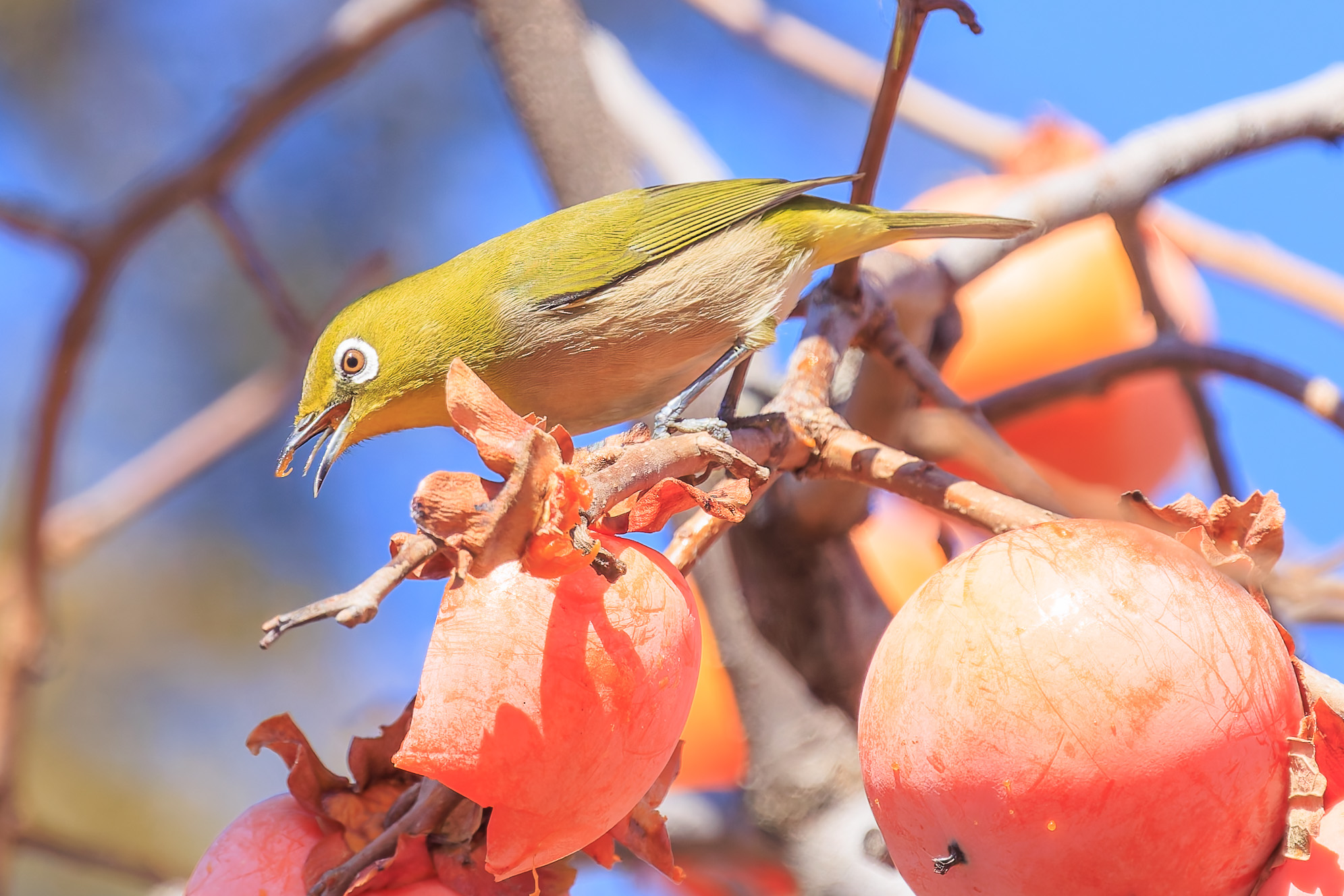
We also found a Warbling White-Eye, again a species we’ve never identified before. It was in another nearby tree and actively eating fruit.
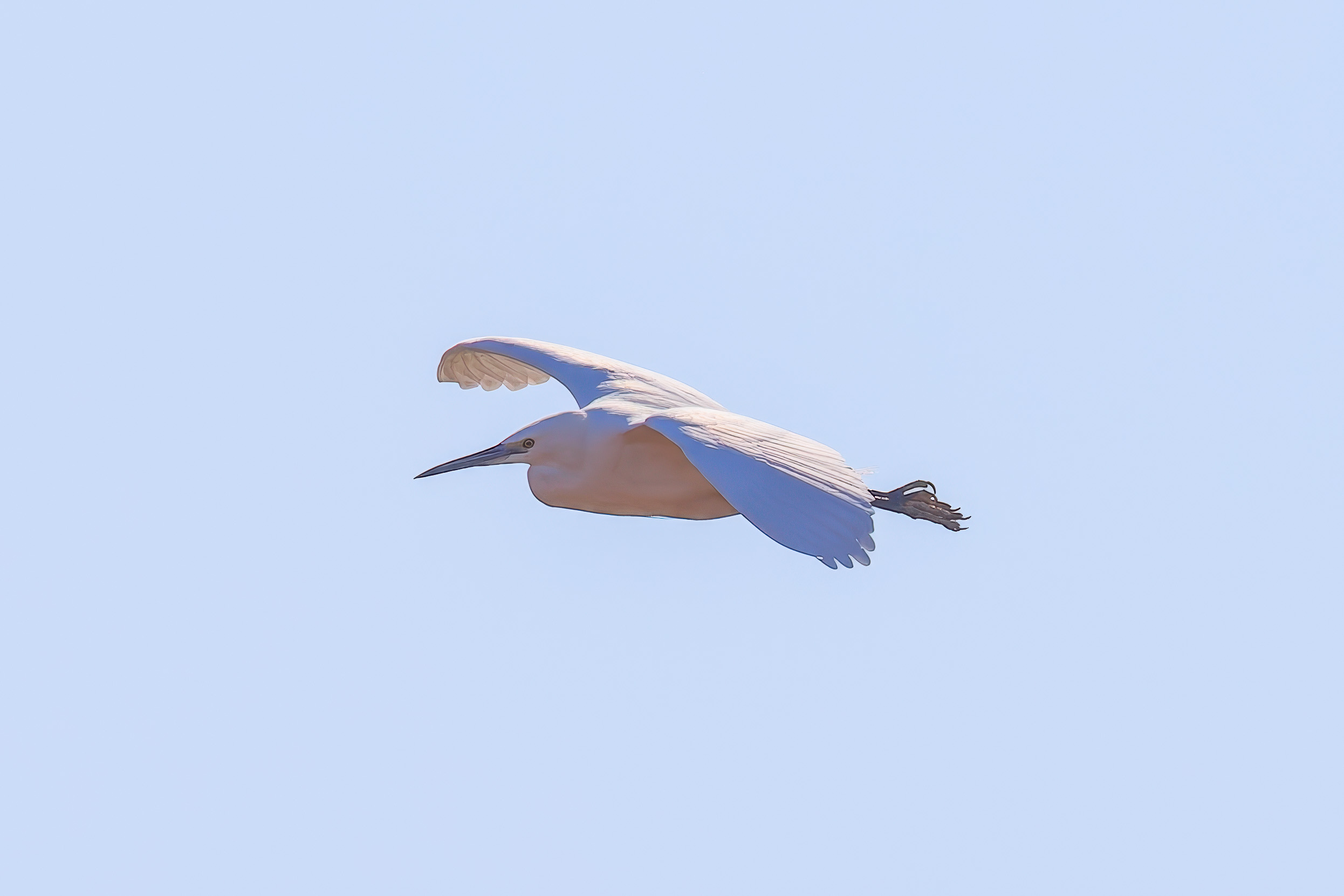
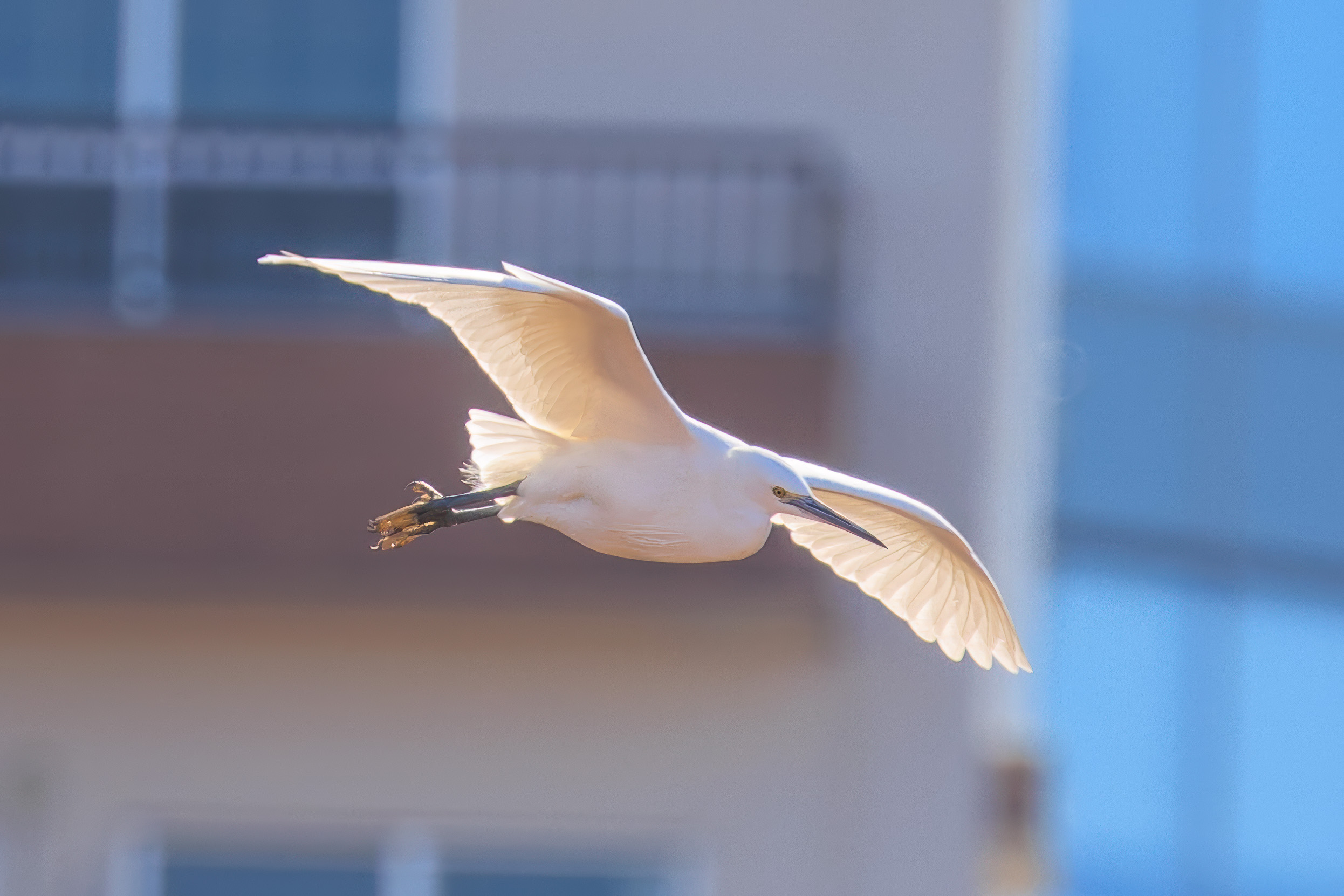
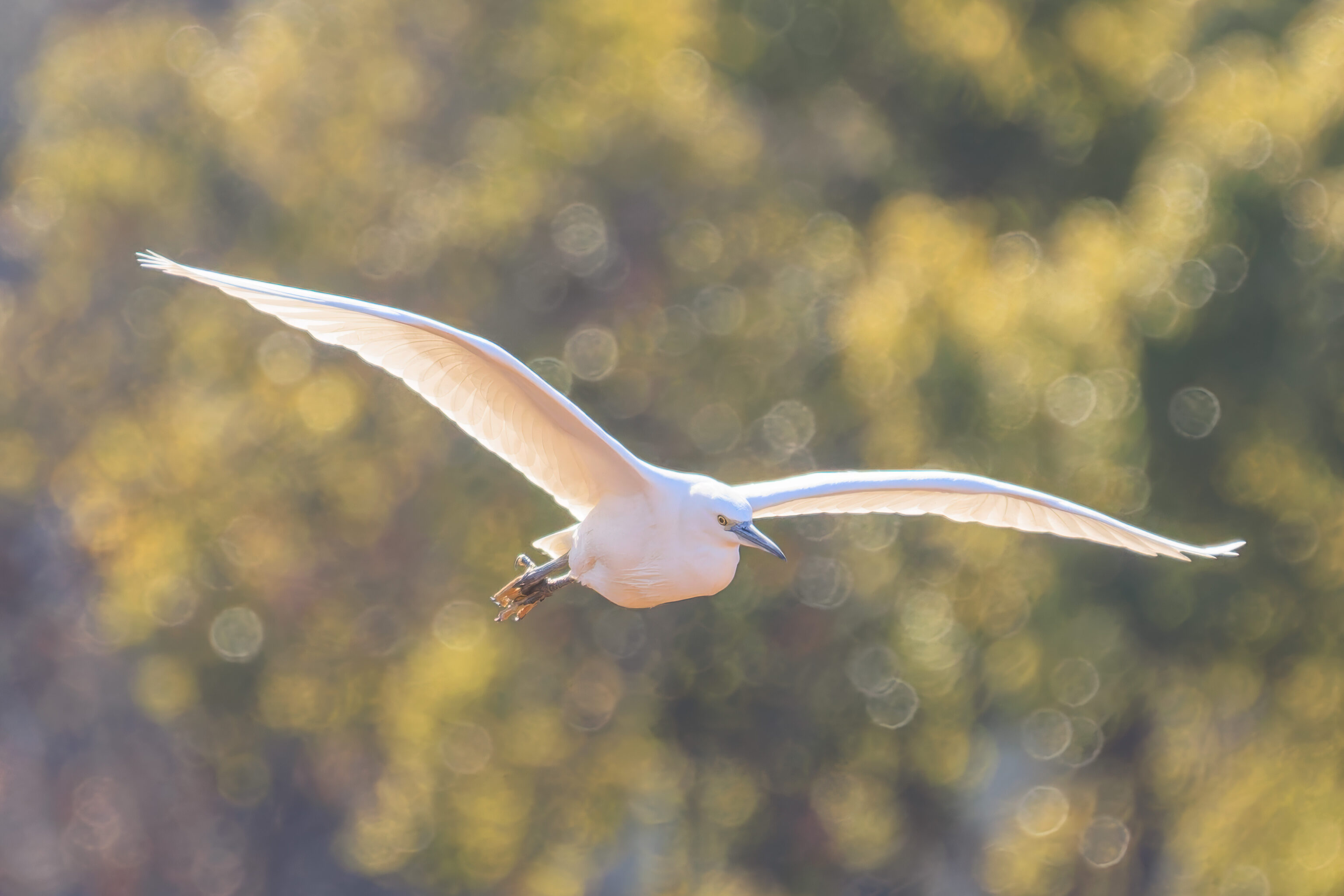
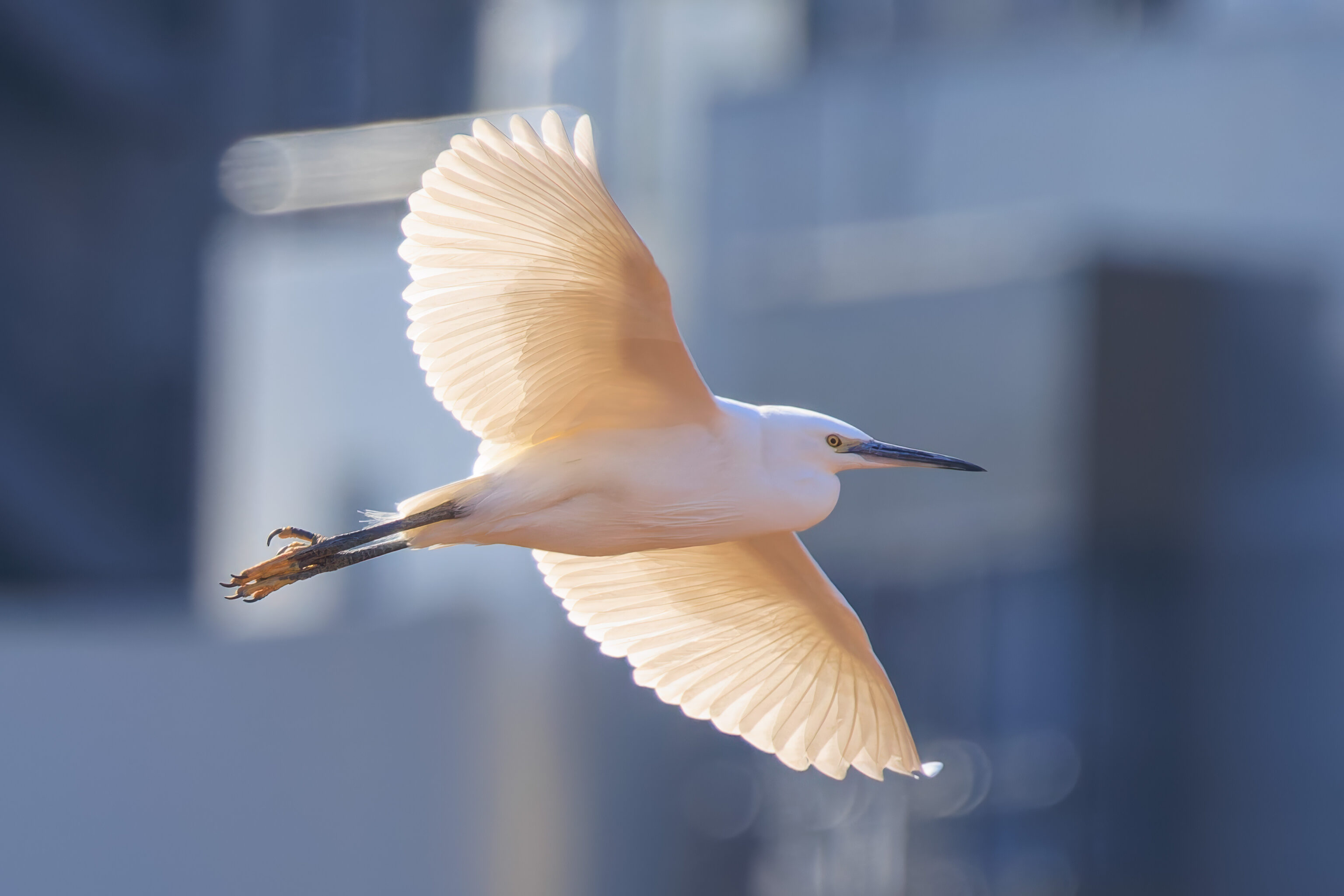
And, further away, this Little Egret was flying over the Shinobazu Pond.
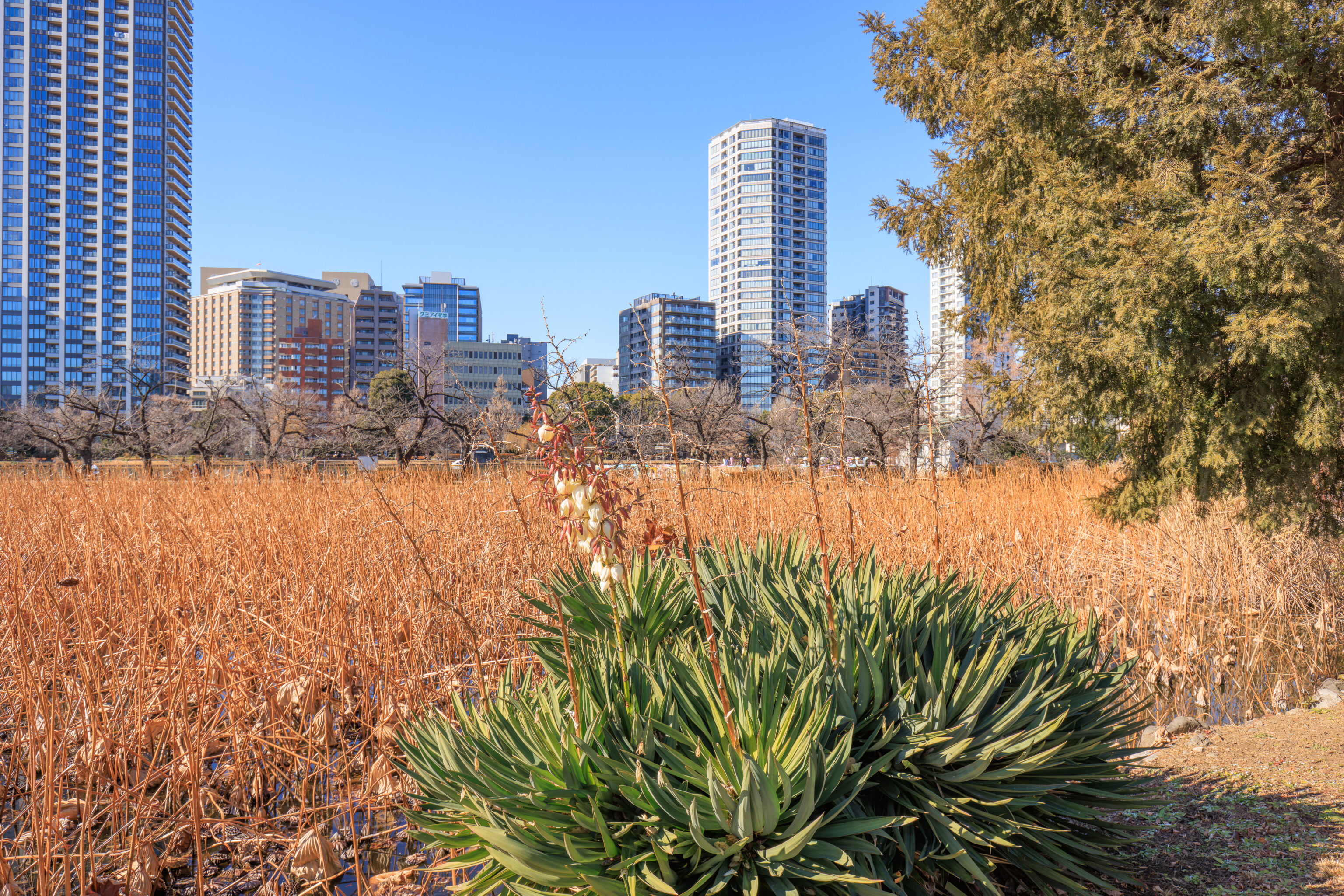
The pond from here appears much like it did from the eastern entrance to the temple – covered with lotuses!
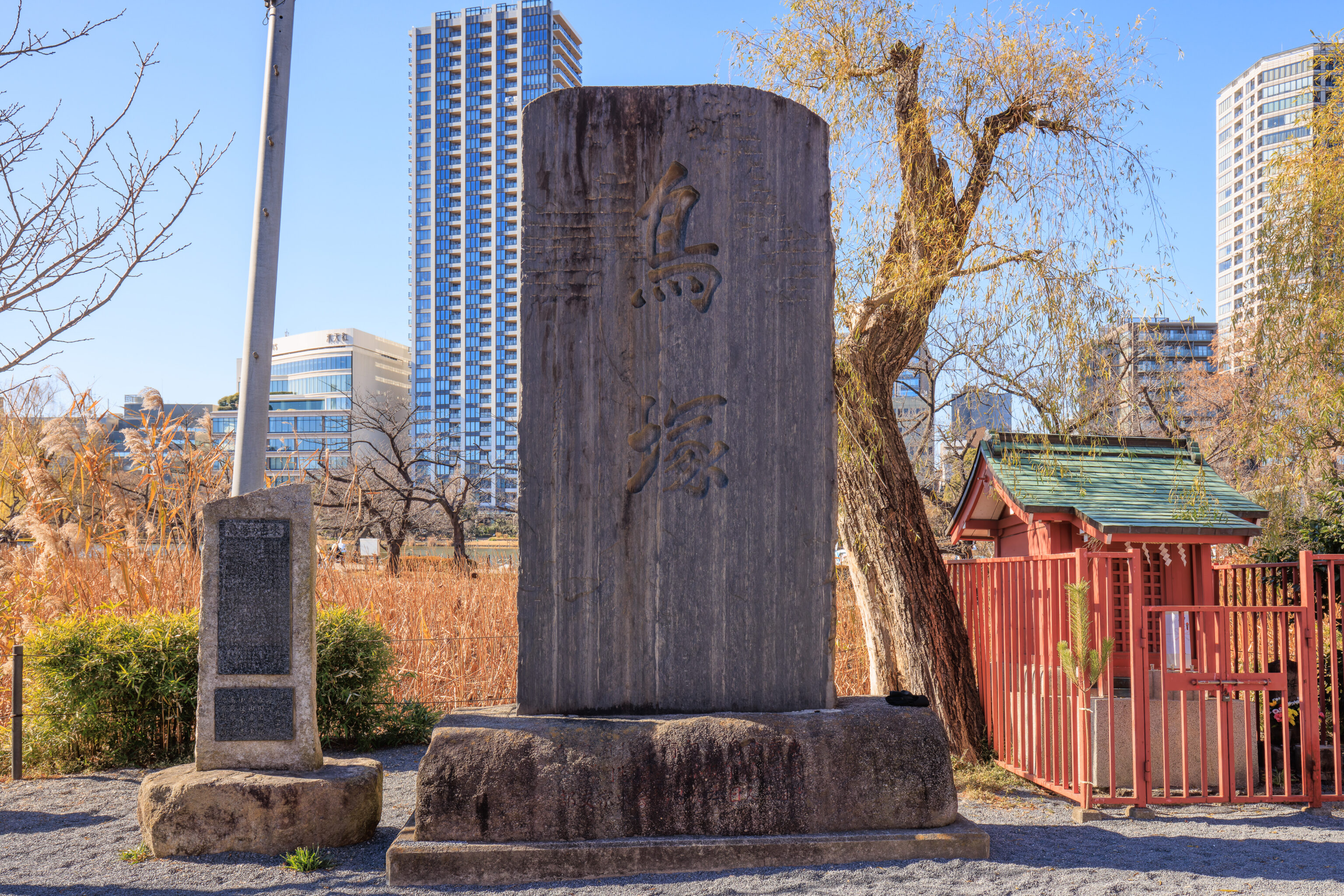
This large stone tablet is inscribed with the text 鳥塚 Torizuka, literally Bird Mound. It was placed here by the 東京食鳥鳥卵商業協同組 Tokyo Poultry and Egg Commercial Association as something like a chicken memorial1.
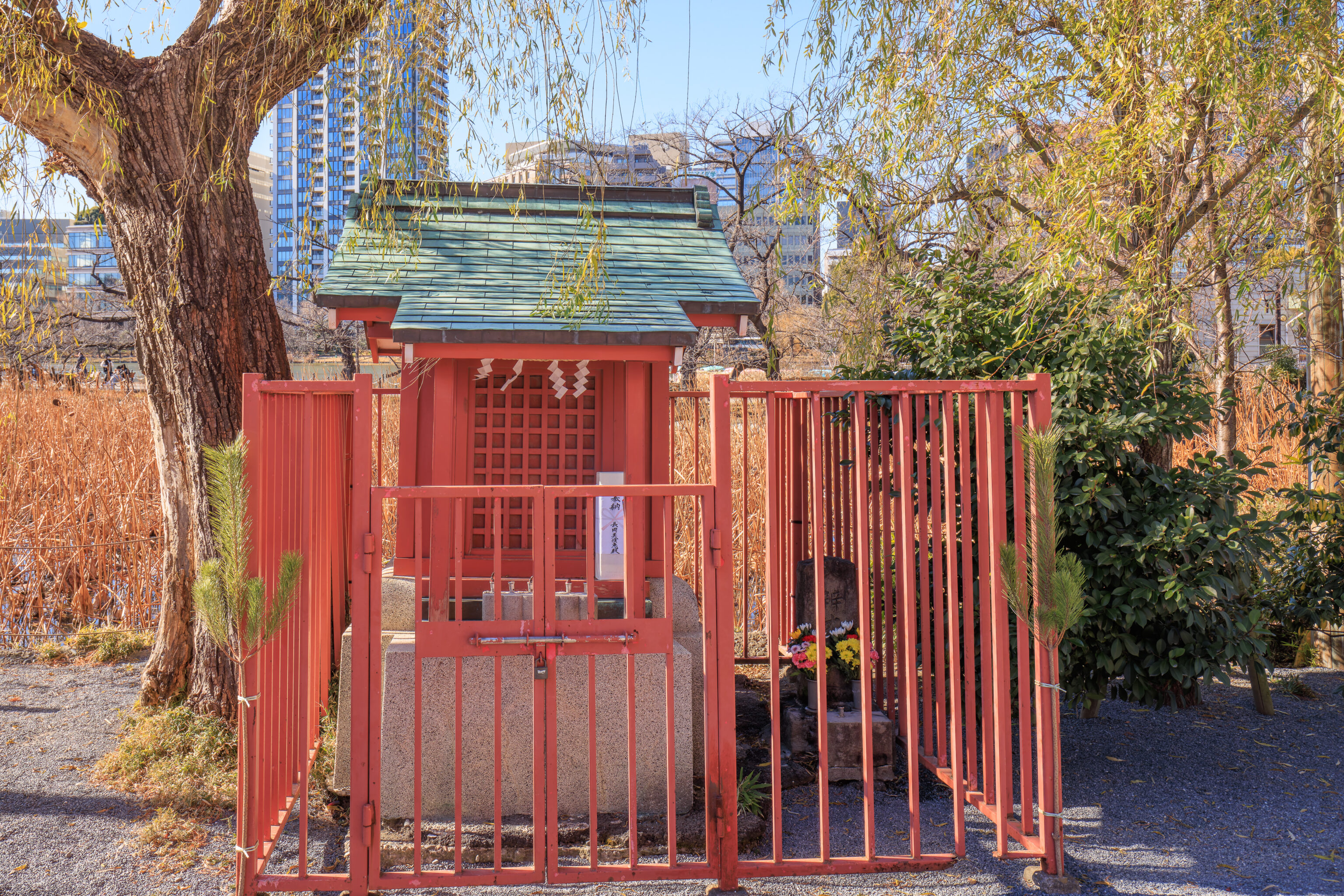
This little shrine is next to the chicken memorial.
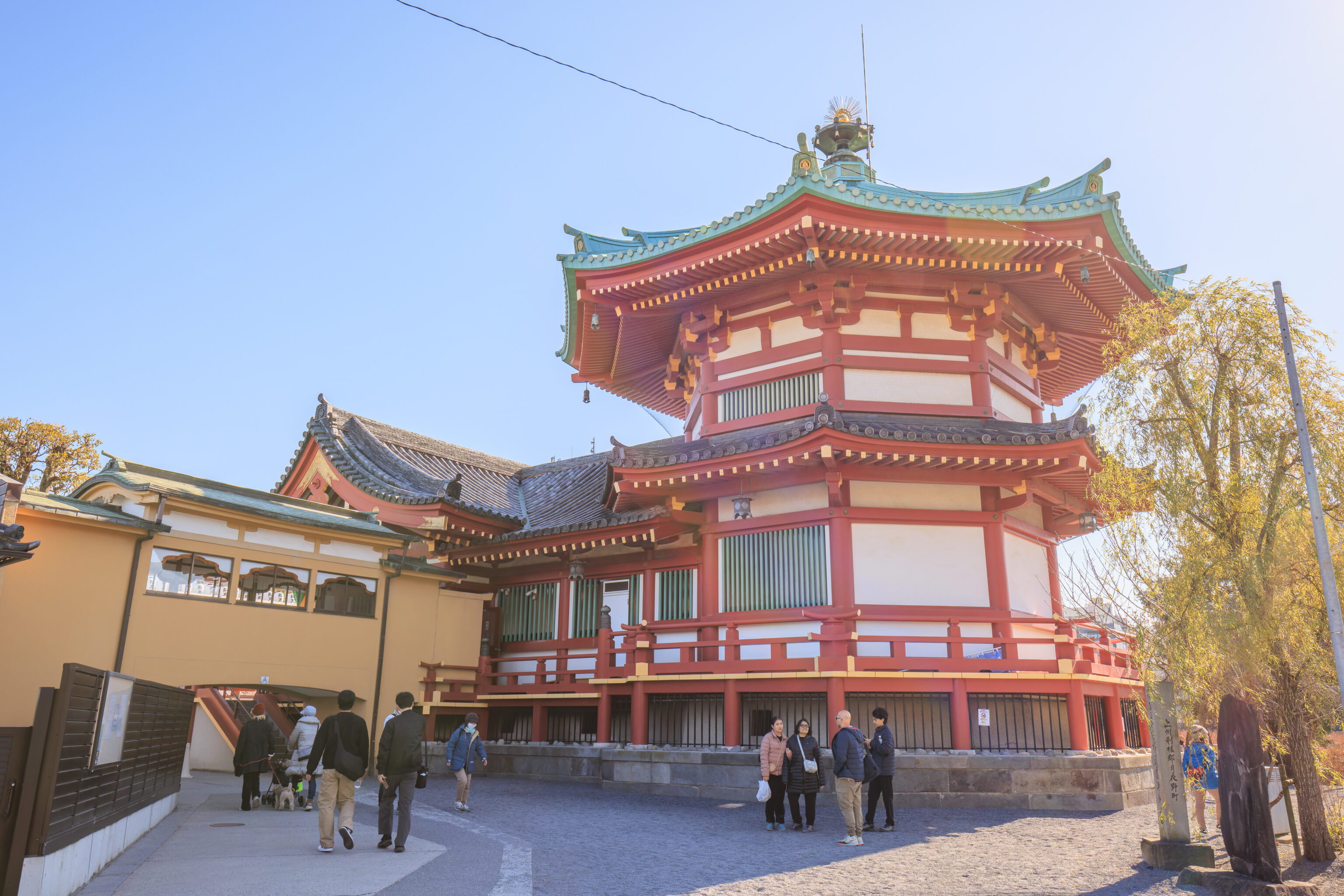
The temple, as seen from the north side.
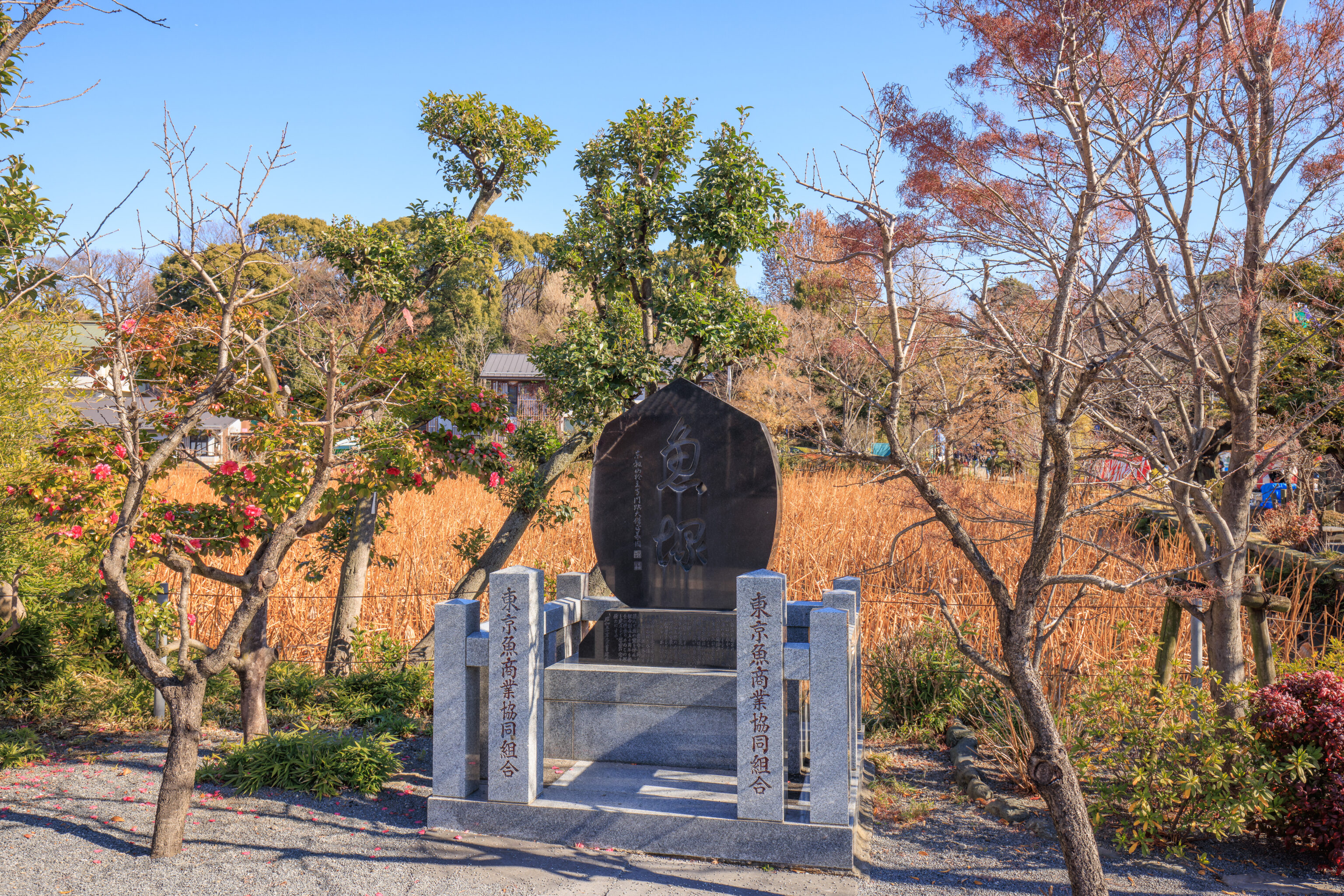
This was placed by the 東京魚商業協同組合 Tokyo Fish Trade Association.
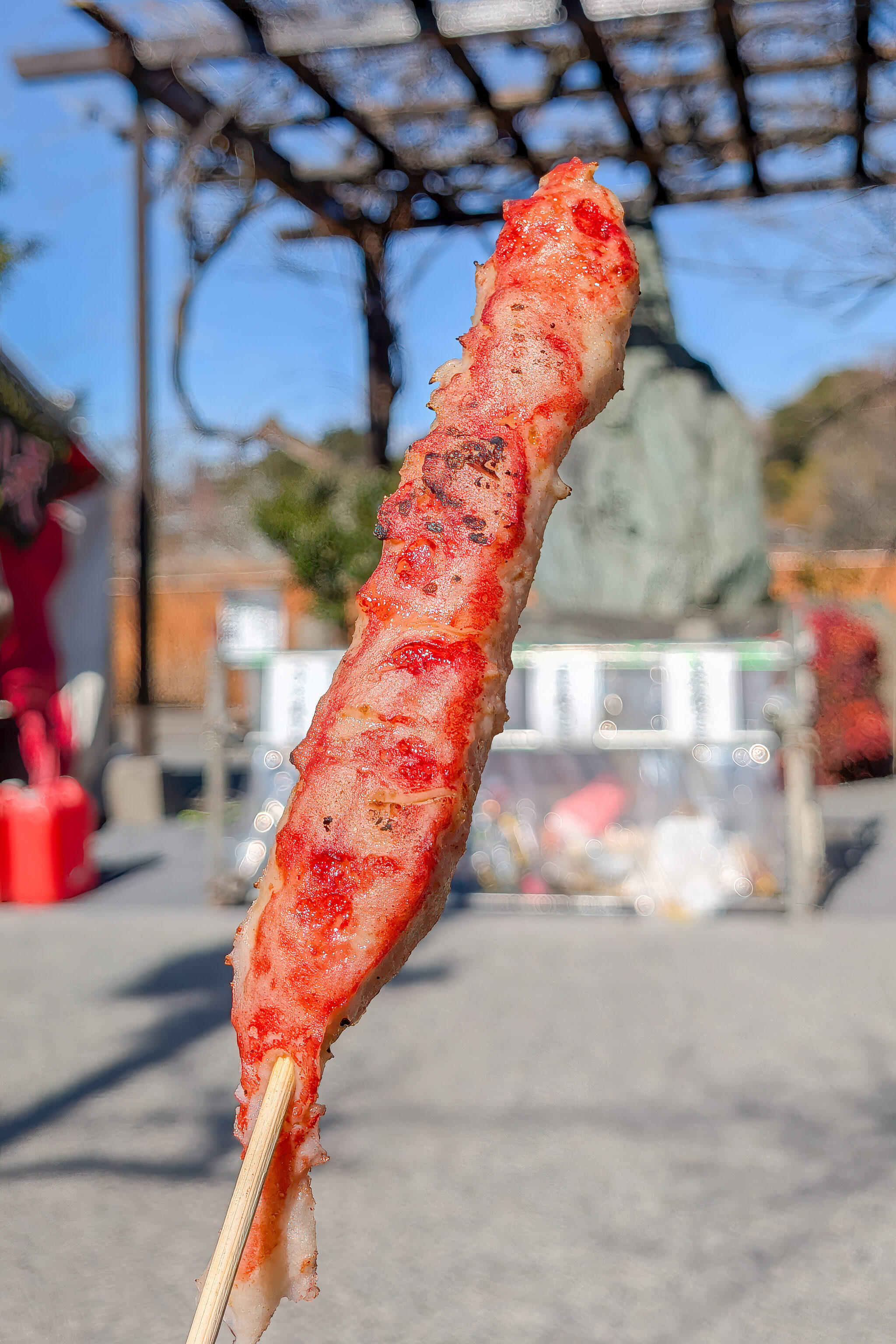
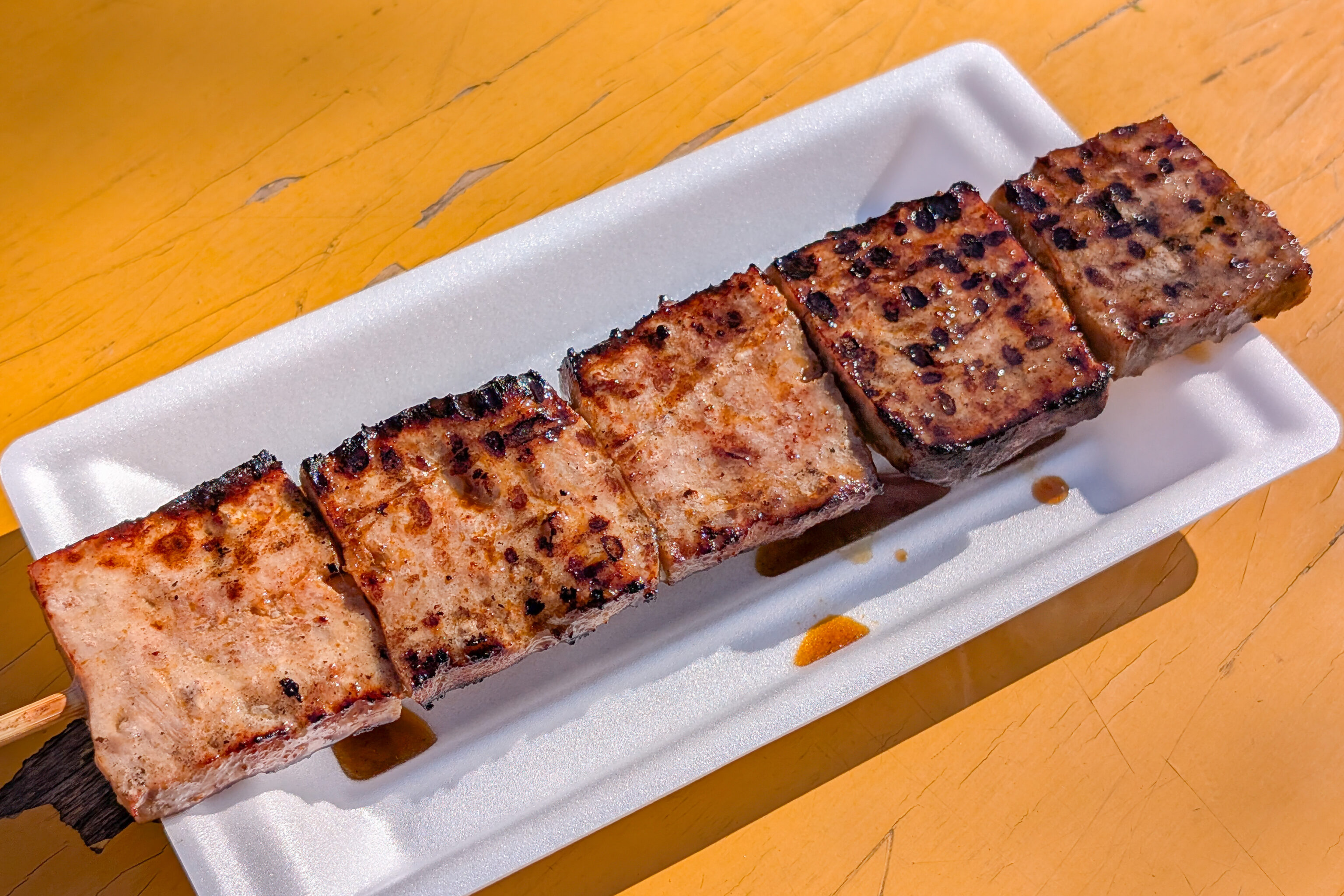
We decided to get some snacks. We got a crab flavored fish skewer as well as a beef skewer. Both were merely just OK.
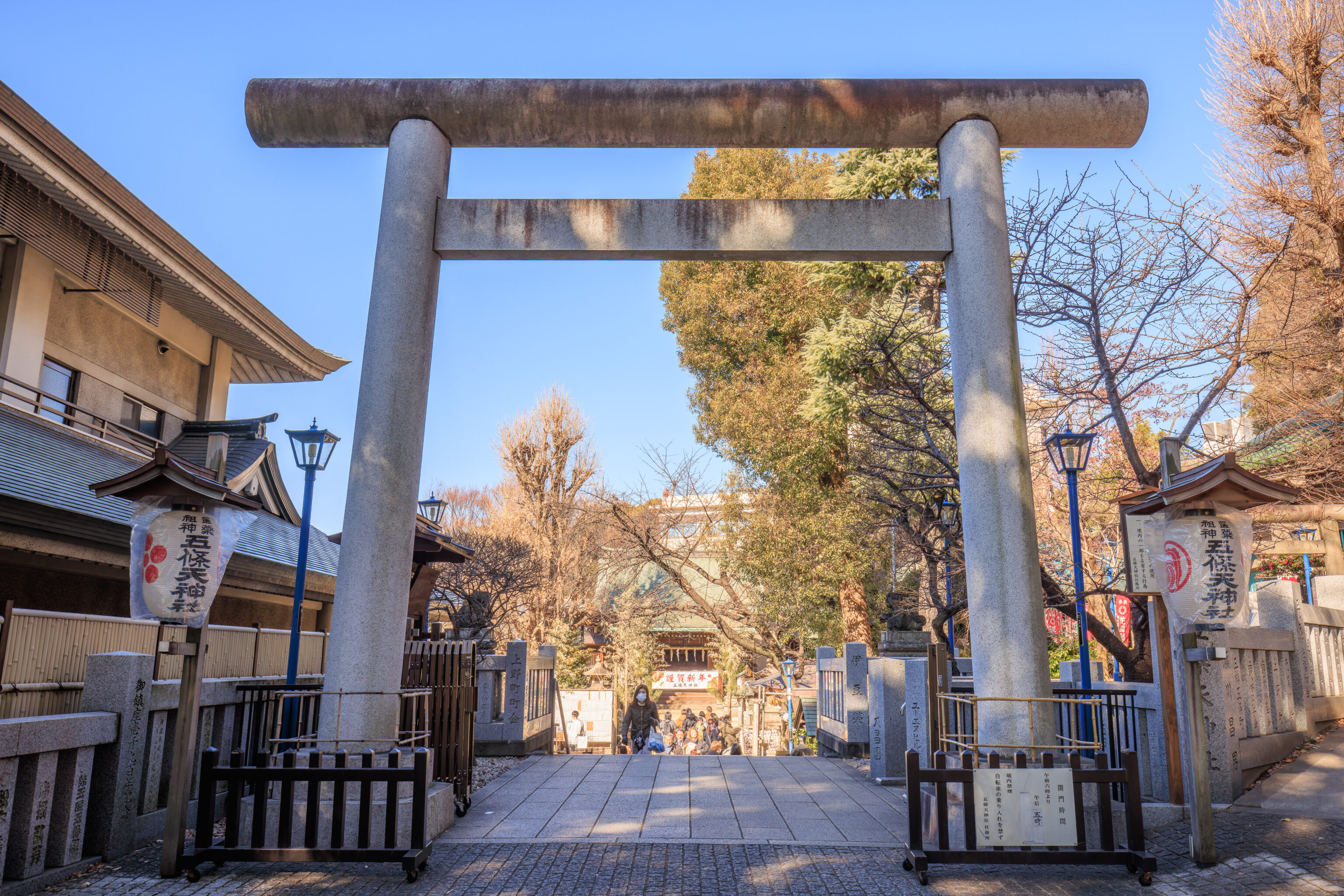
We ended our visit to the temple by exiting the same way we arrived. We the backtracked some more, walking by the Hanazono Inari-jinja and Gojo Tenjin-jinjas via a path to the south. This torii is at the southern entrance to the shrines.
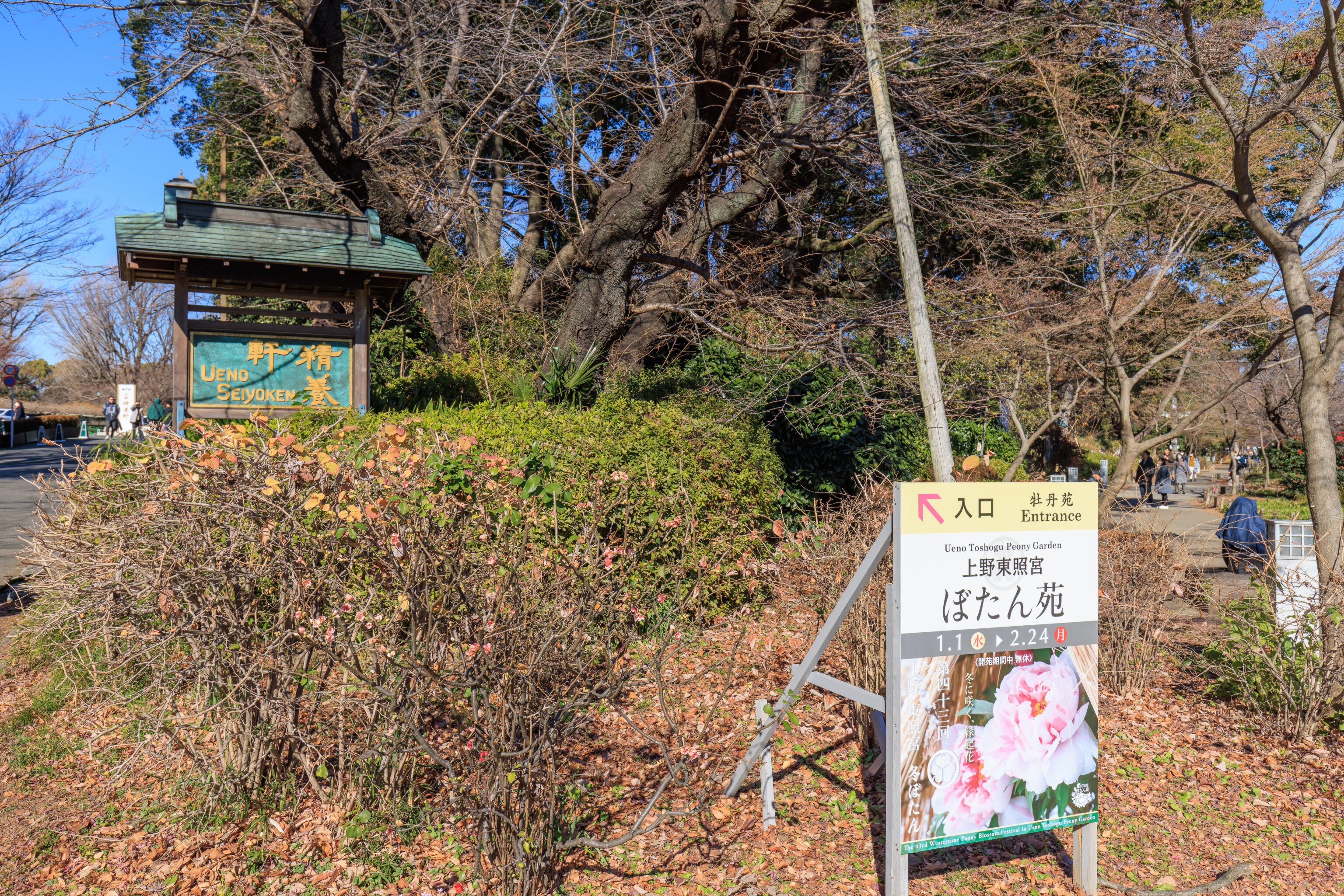
We returned to the wide path that we were on earlier before we visited the two shrines. We continued walking to the north, heading towards the Peony Garden. Although the sign kind of suggests that it is right here to the left, it is not.
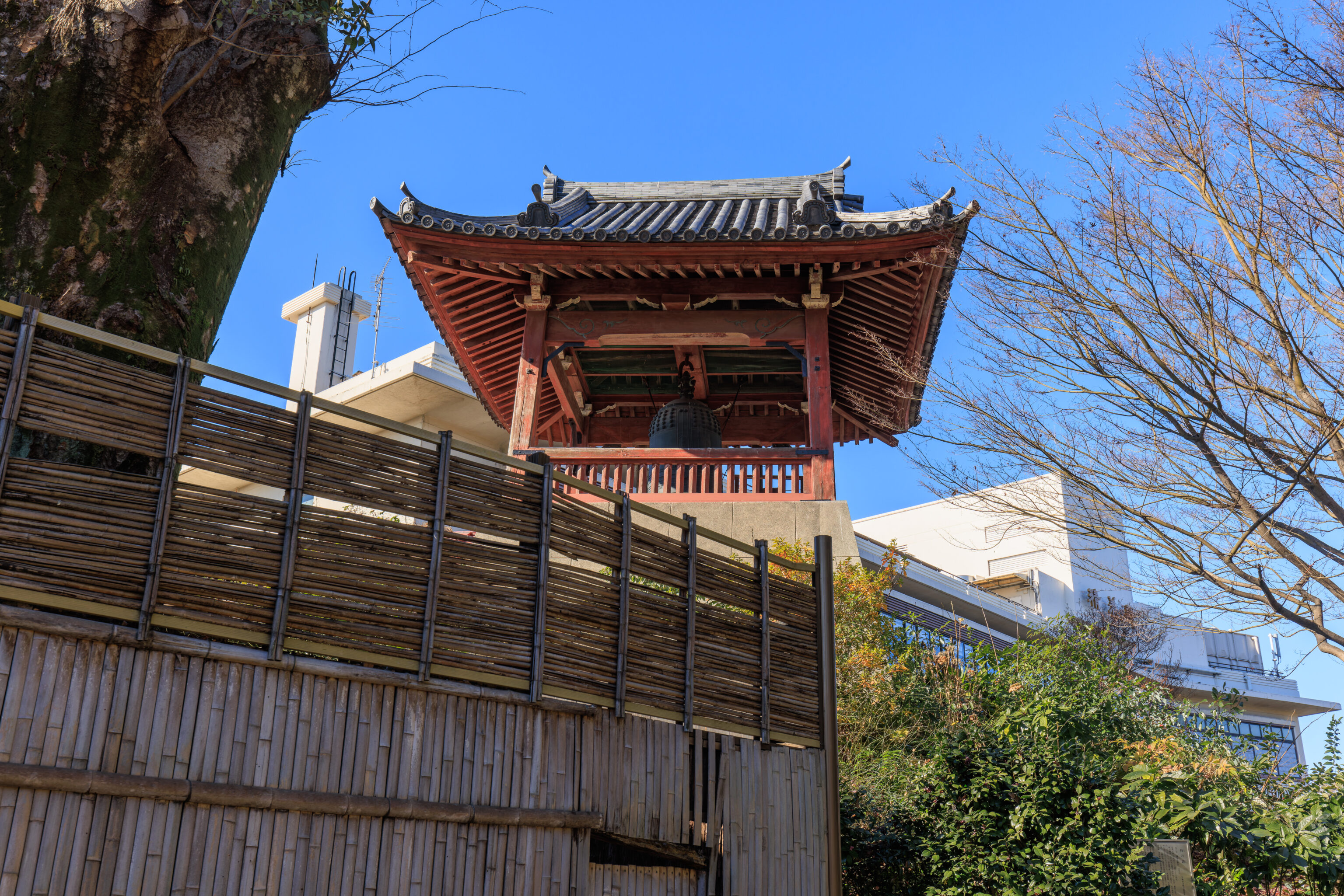
We passed by a bell tower for one of the two shrines.
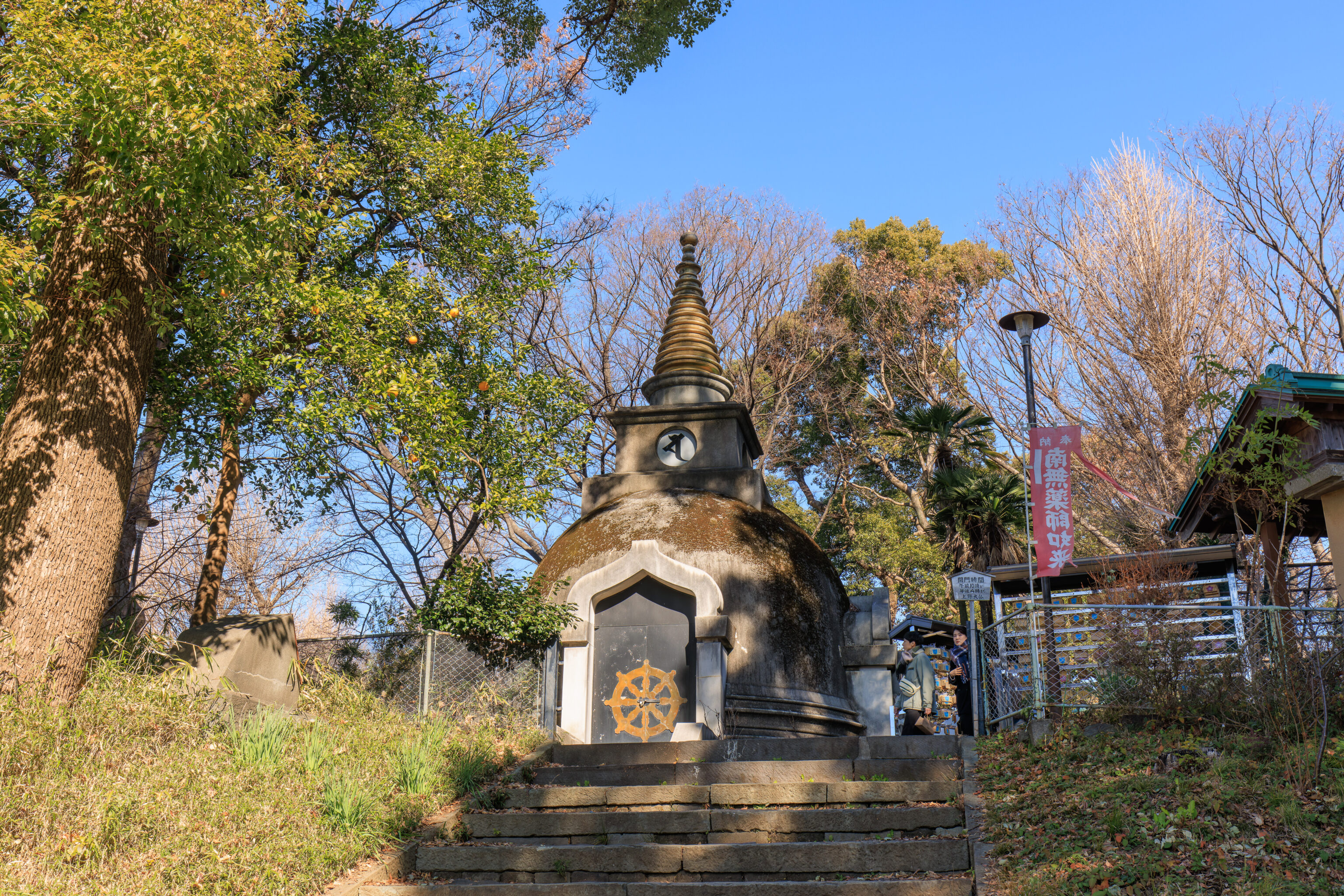
We noticed a small hill with a stupa atop it.
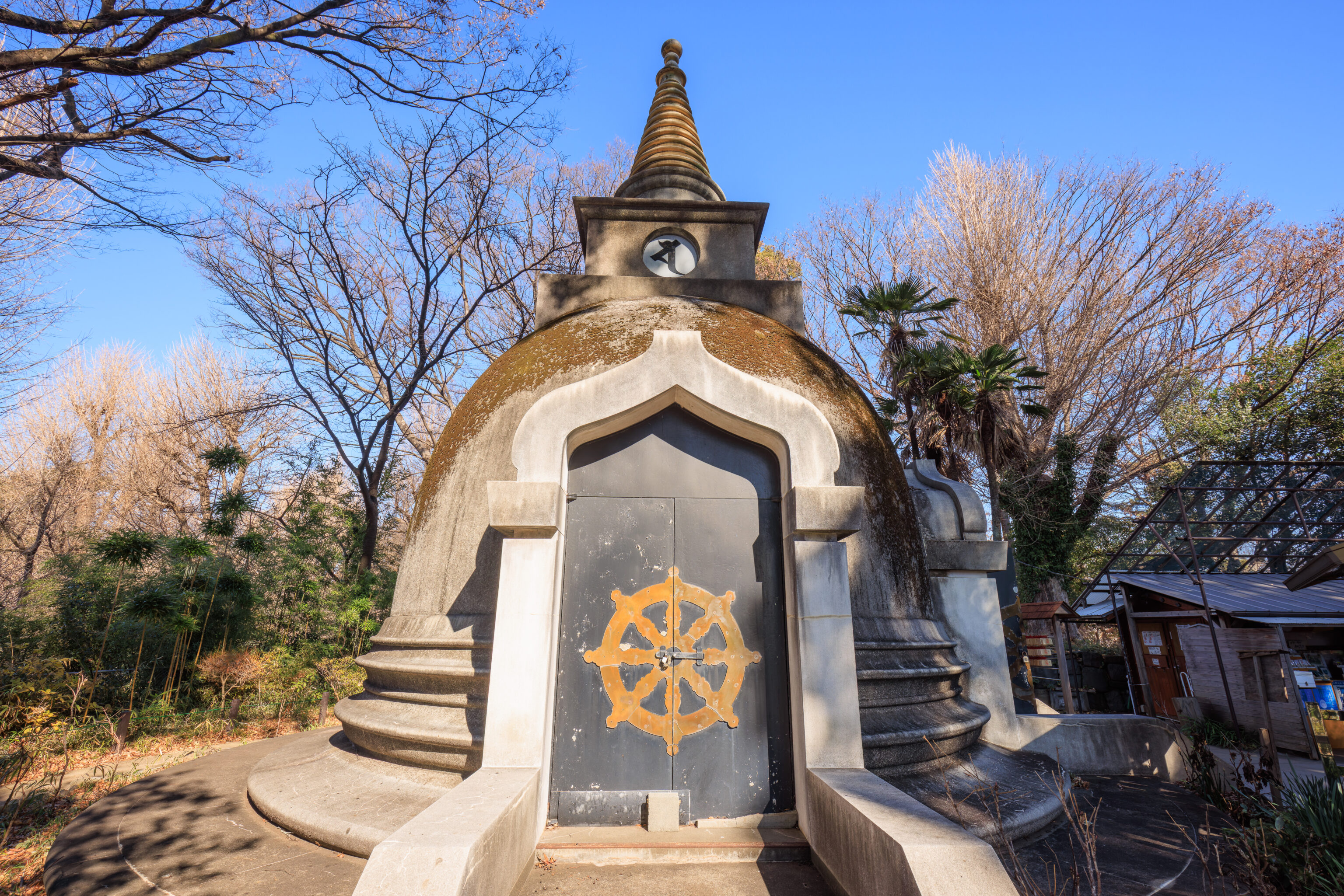
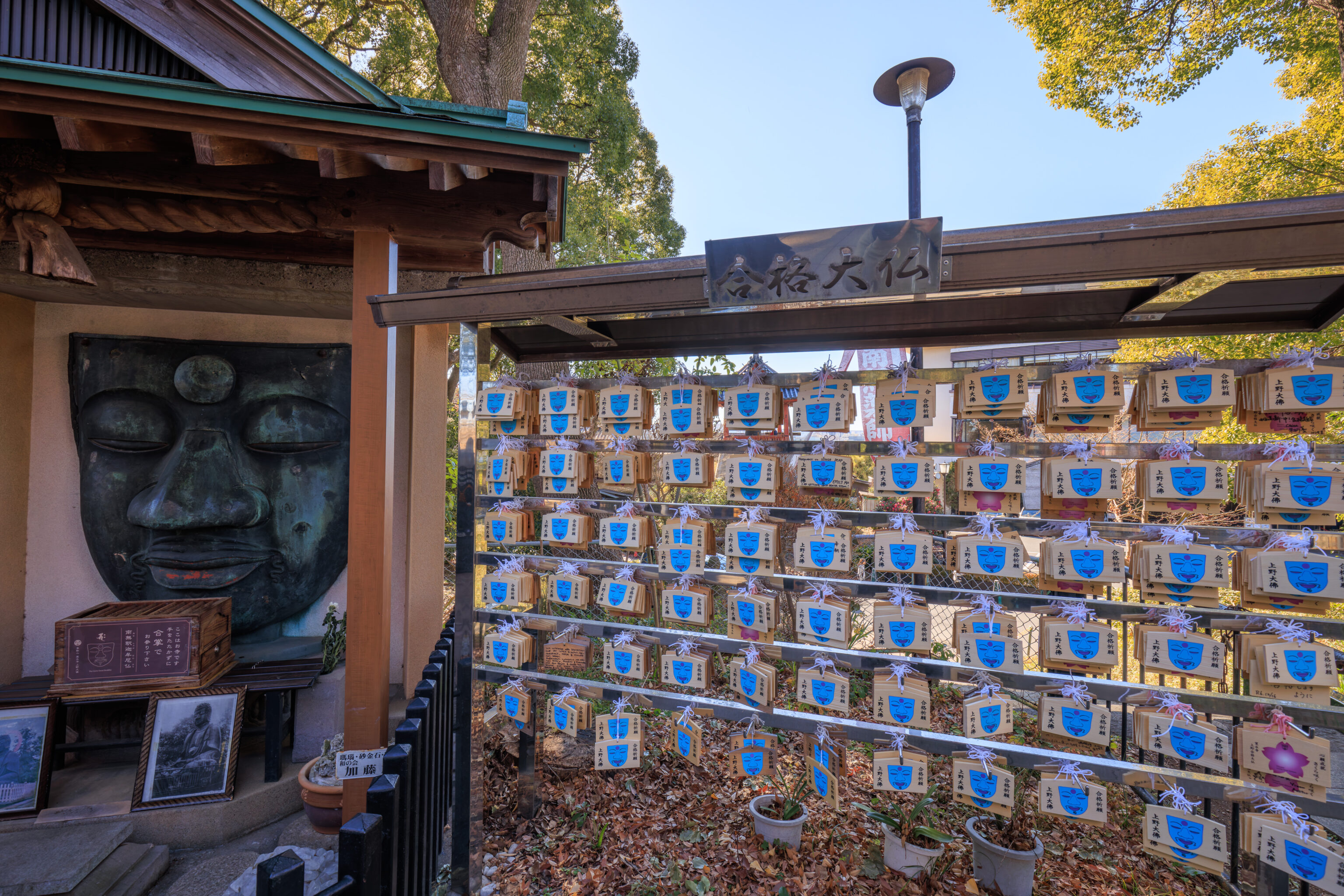
We went up to take a closer look. The Buddha face was marked on the map that we saw earlier at the Shinobazu Pond Benten Temple as 大仏 Daibutsu, or Great Buddha. The small photos in front of the face suggest that this face was originally part of a giant Buddha statue. This Daibutsu was built in 1631 and stood here inside of a hall until it was heavily damaged in the Great Kanto Earthquake in 1923. The rest of the statue was melted down in World War II.
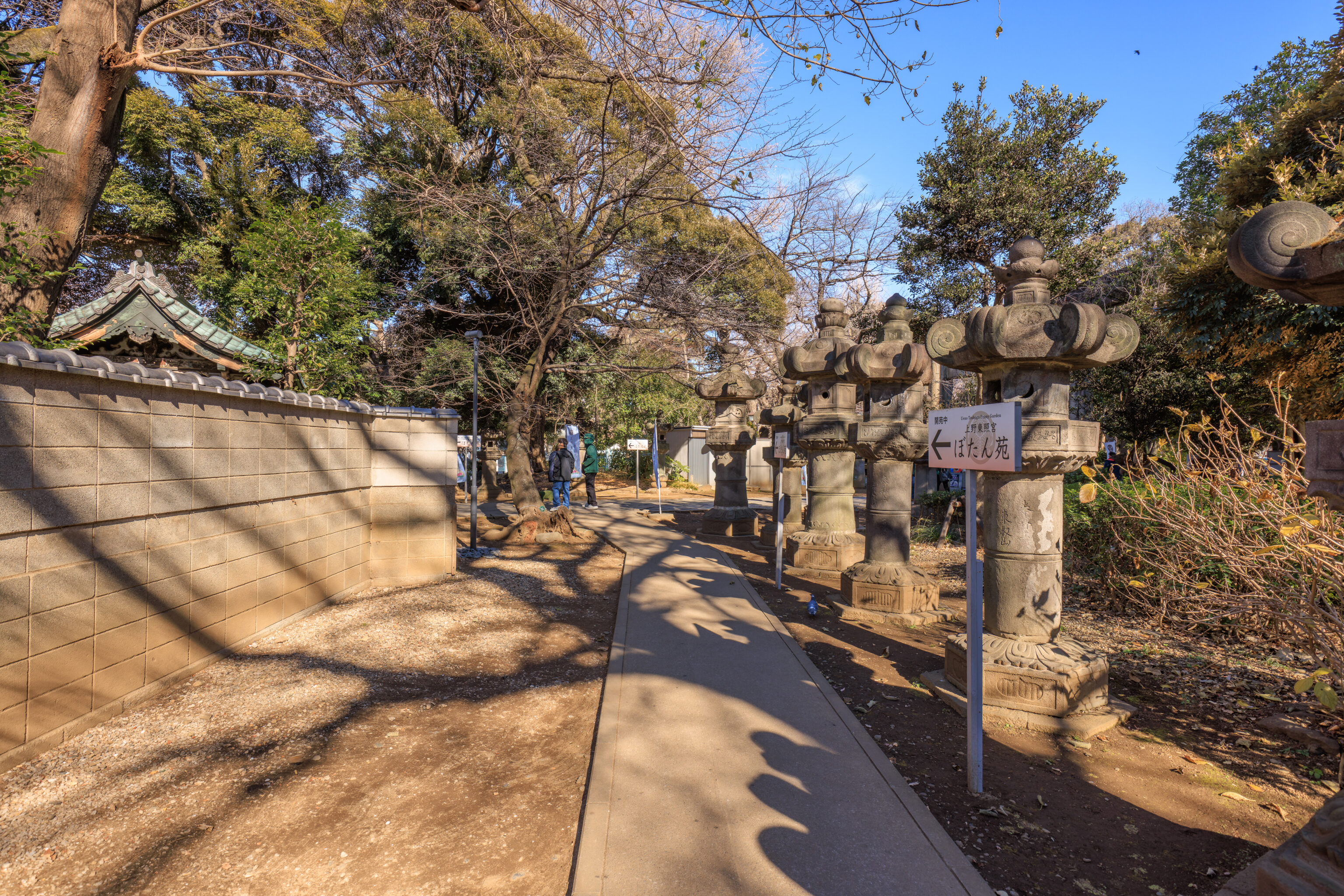
We continued on, following the signs leading to the Peony Garden. It led to a narrow path lined with stone lanterns.
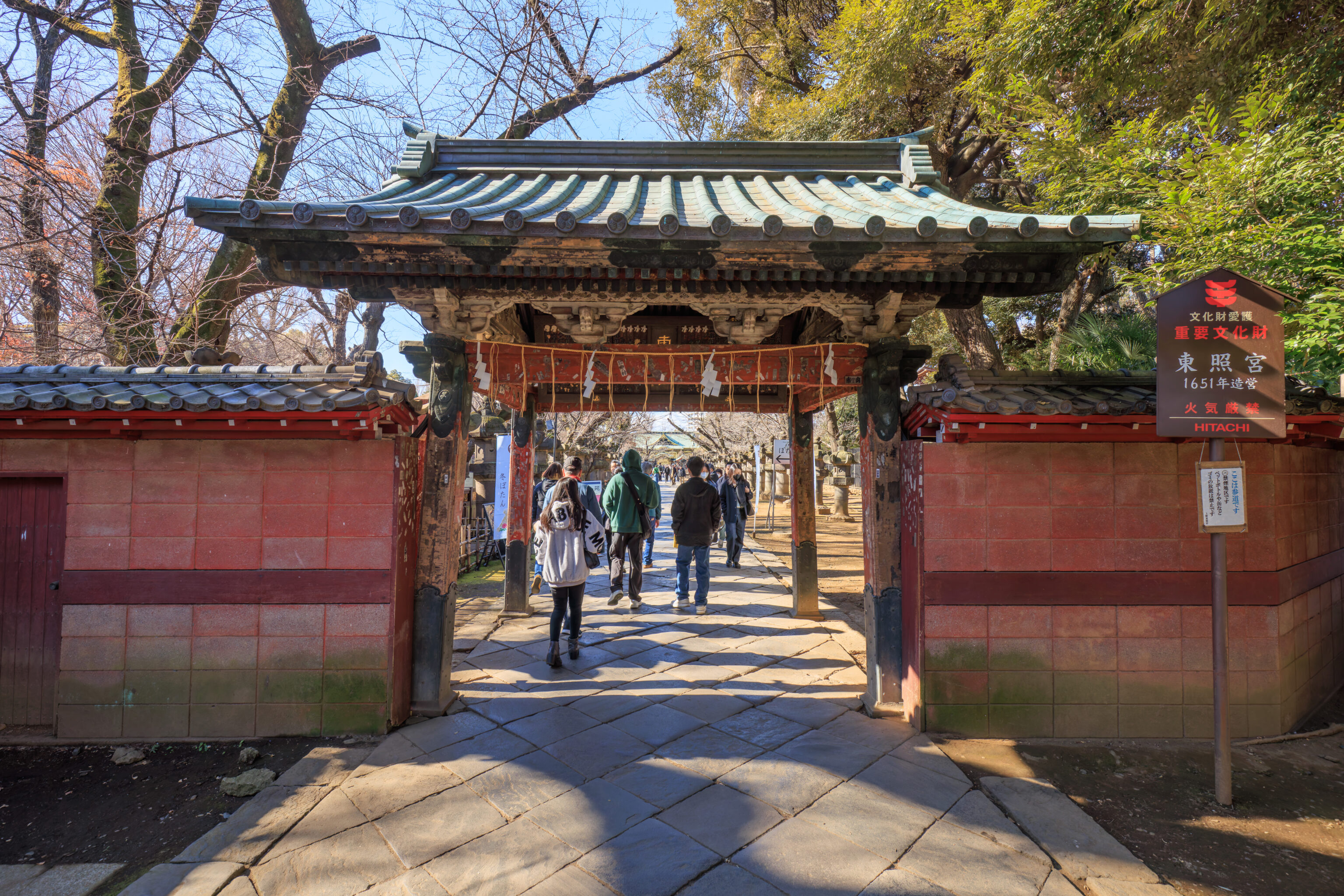
We found ourselves at a gate.
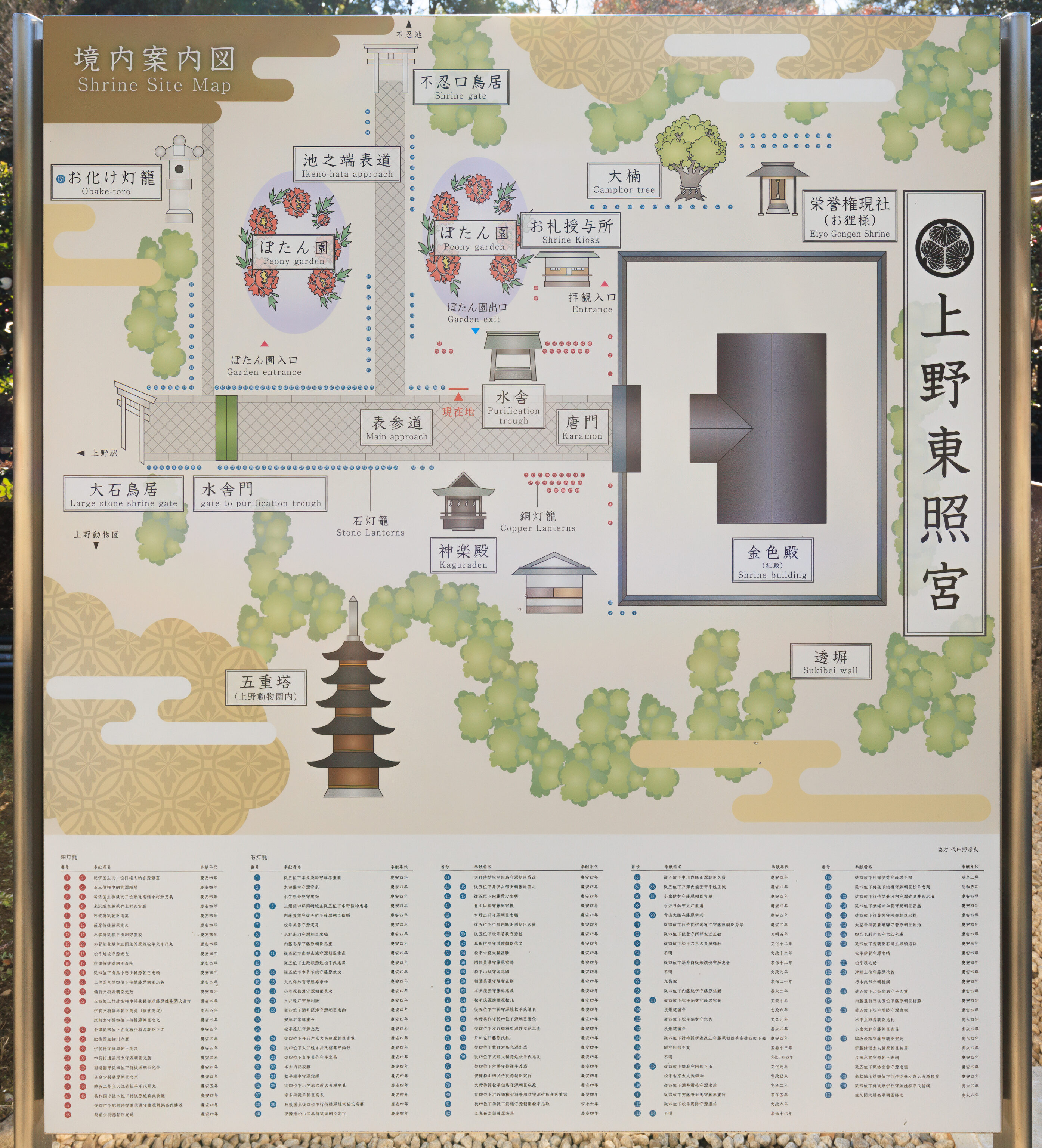
The gate was an entrance to the 上野東照宮 Ueno Toshogu, a Shinto shrine. At the bottom, it identifies the donor of the copper and stone lanterns within the shrine grounds. We entered via the narrow path on the upper left and thus did not pass under a torii like the other two larger entrances.
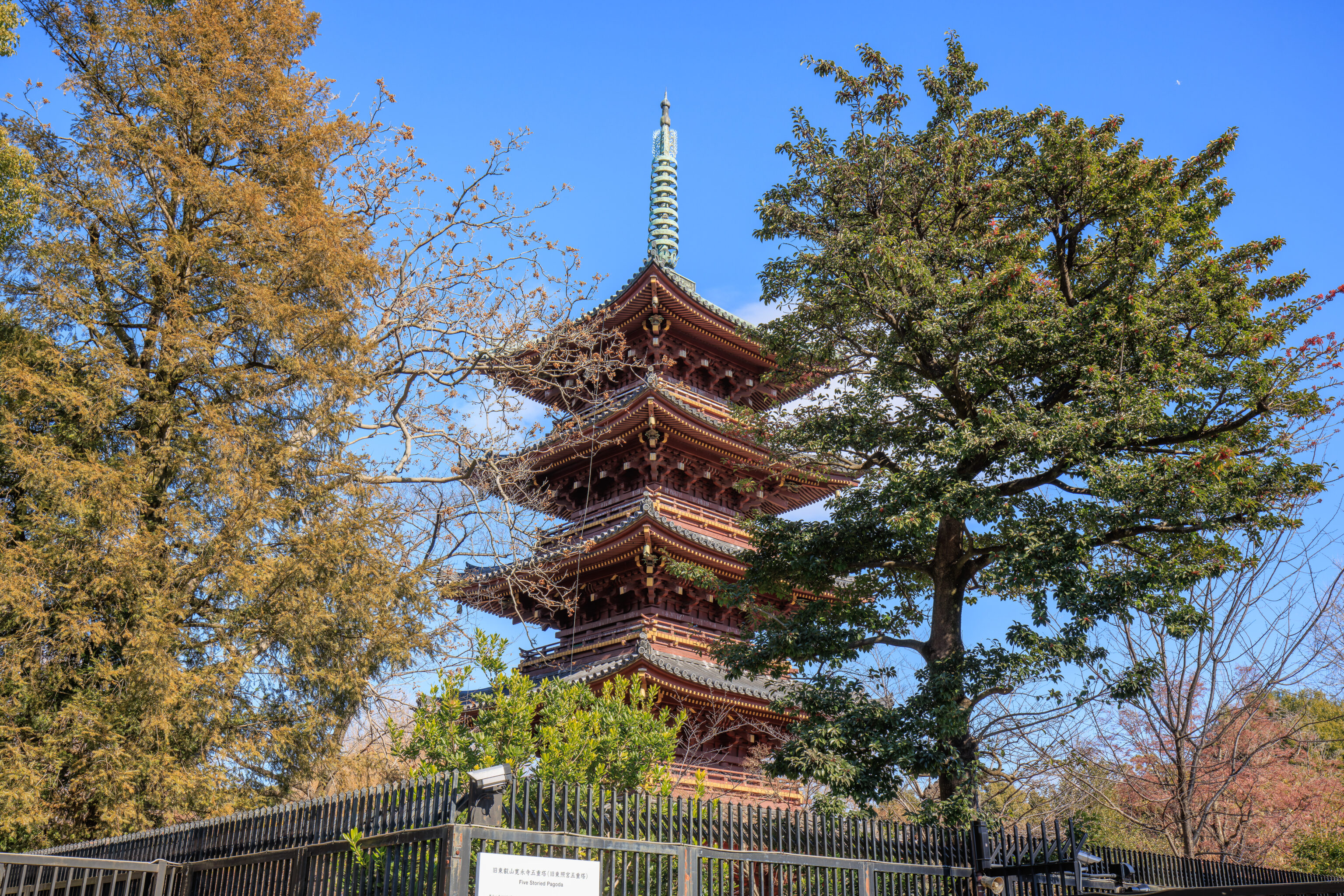
A five storied pagoda was to our right. A nearby sign provides some history about this structure in English:
Five Storied Pagoda
Toshikatsu Doi, one of the top-ranking officials of the Tokugawa Shogunate dedicated a five-story pagoda to the Ueno Toshogu Shrine in 1631.
The pagoda was burnt down in 1639, and the existing one was reconstructed in the same year.
The front of the pagoda is the façade that can be seen from here.
Since ancient times, Japanese people have held religious beliefs in both the traditional Japanese religion of Shinto and in Buddhism, which came from China. Toshogu Shrine, a facility dedicated to Shinto, is located on the premises of Kan' eiji, a Buddhism temple, and has close connections with the Buddhist religion. That is why this five-story pagoda, originally a Buddhism building, was built here. Religious facilities where Shintoism and Buddhism were syncretized were not uncommon throughout Japan.
Separation of the two religions was forced during the Meiji Period, and many of the five-story pagodas owned by Shinto shrines were destroyed. When the demolition of this pagoda was ordered, the then Guji, the chief priest of Toshogu wanted to keep this beautiful pagoda intact and, after long consideration, decided to report to the government that the pagoda was the property of Kan' eiji Temple. Thus, the pagoda was spared demolition by changing its name from Toshogu Pagoda to Kan' eiji Pagoda.
Although Kan' eiji became the owner of the pagoda, its maintenance was a burden on the temple, due to the distance between the two facilities. In 1958, the pagoda was donated to the Tokyo Metropolitan Government and is now on the premises of Ueno Zoo. It is approximately 32-meter (105 feet) tall.
The pagoda survived the Great Kanto Earthquake (1932) and World War II. As a distinguished structure of the early Edo Period, it was designated as an Important Cultural Property of Japan in 1911.
Four statues of Buddha that were enshrined in the pagoda are now housed in the Tokyo National Museum.
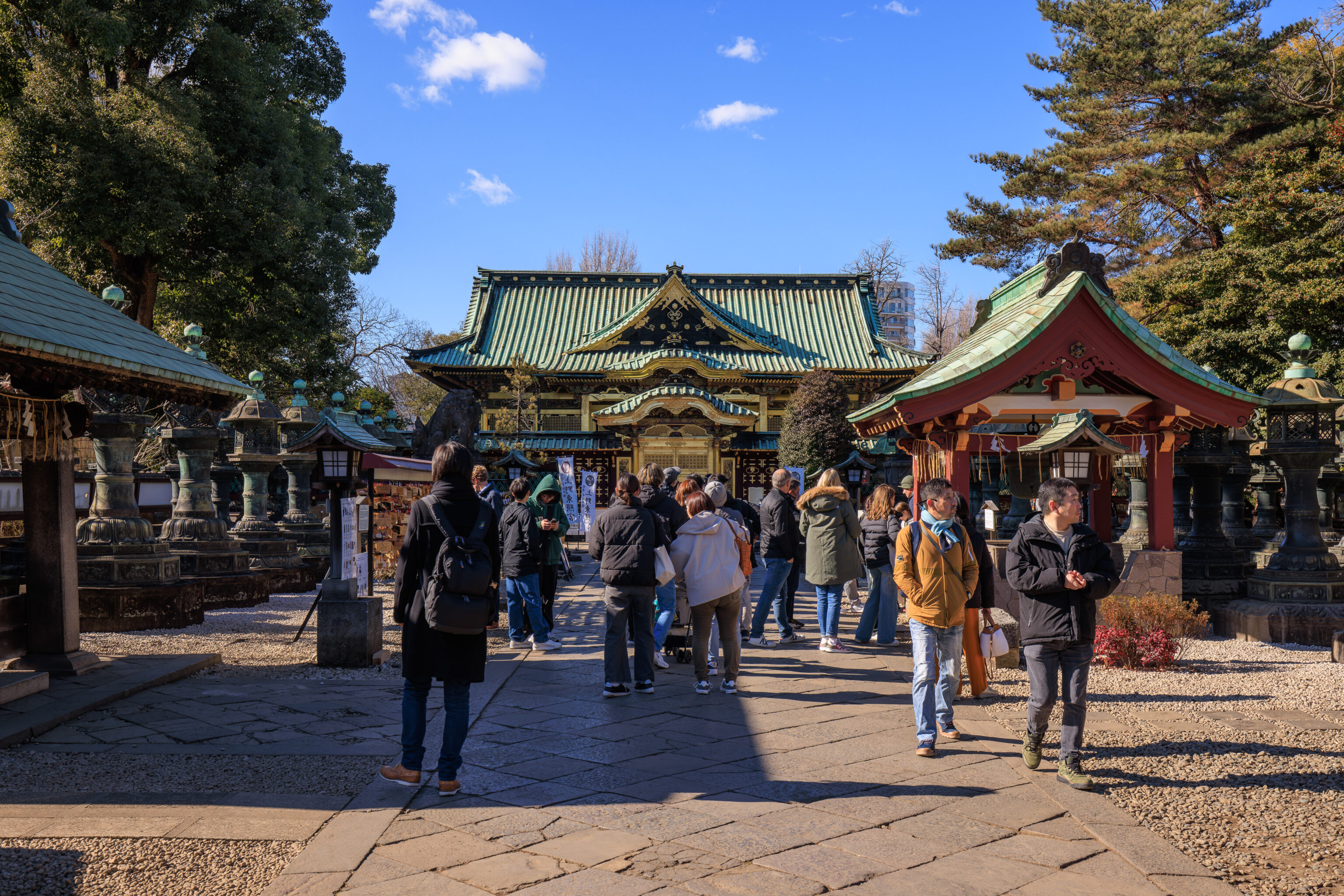
We continued walking towards the shrine’s main building.
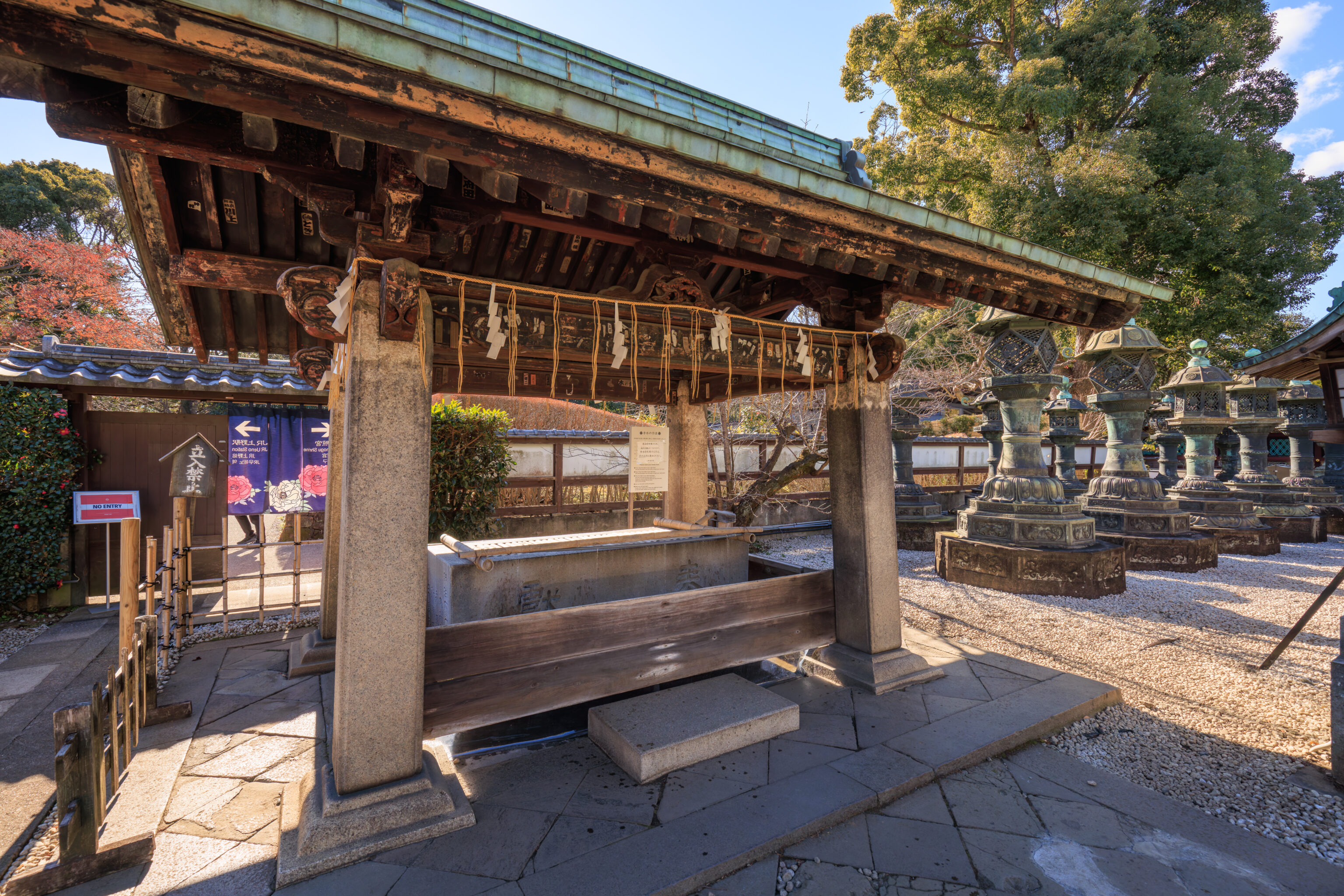
We walked by a cleansing station which was in front of what seems like the Peony Garden’s exit.
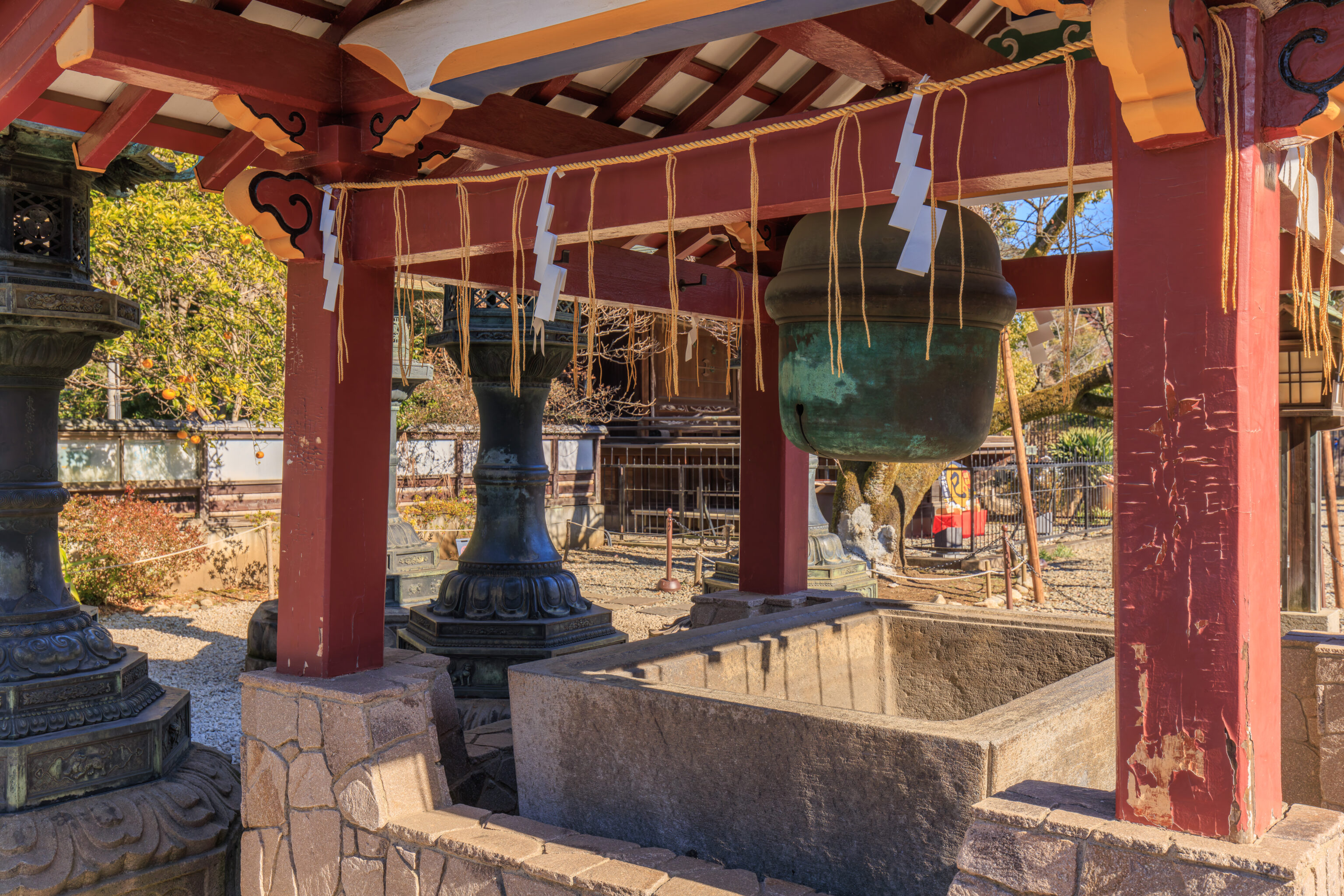
There was also a bell suspended above a basin. The design of this bell looks more like a jingle bell rather than the typical bell which is struck externally by a mallet or pole.
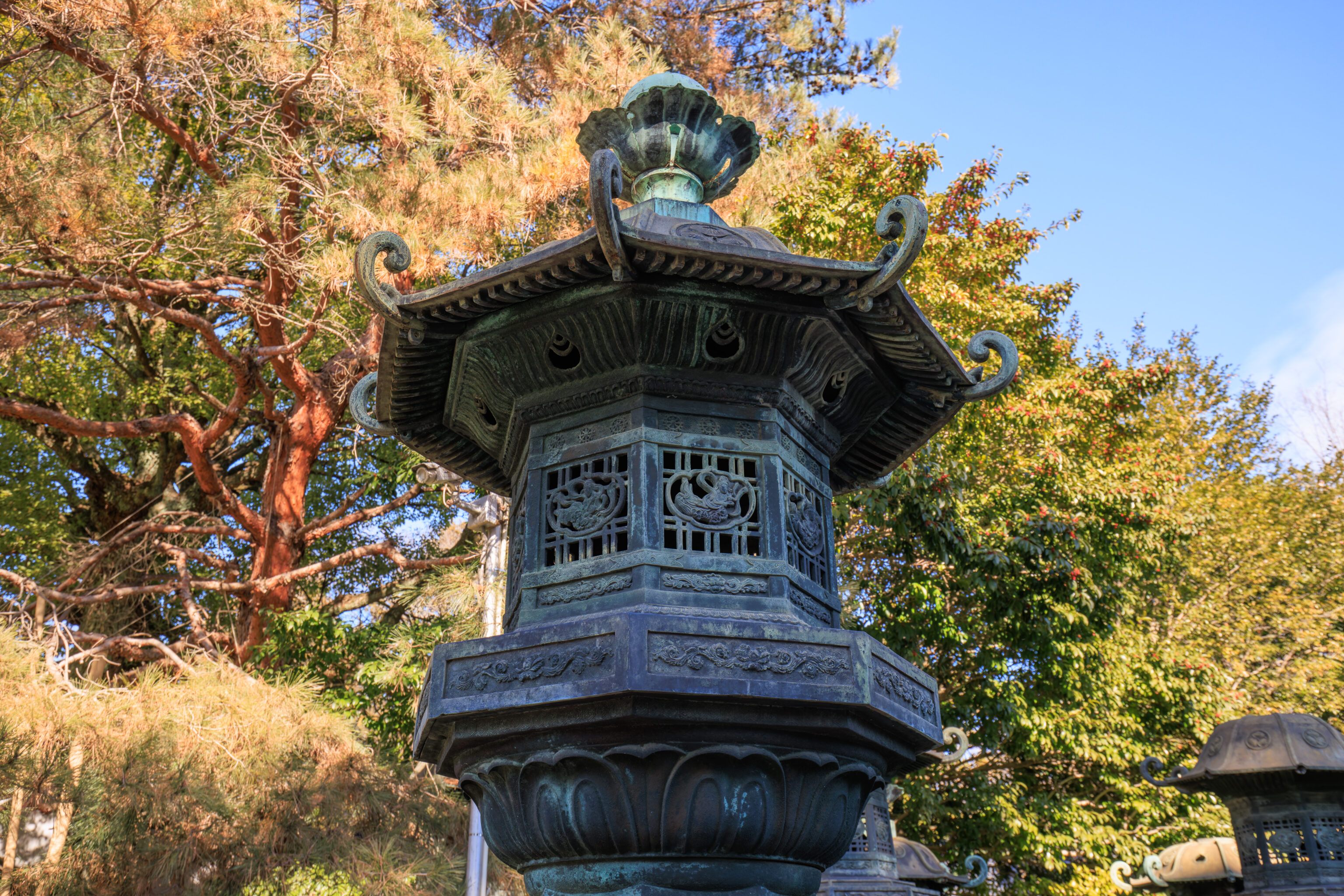
One of the shrine’s copper lanterns.
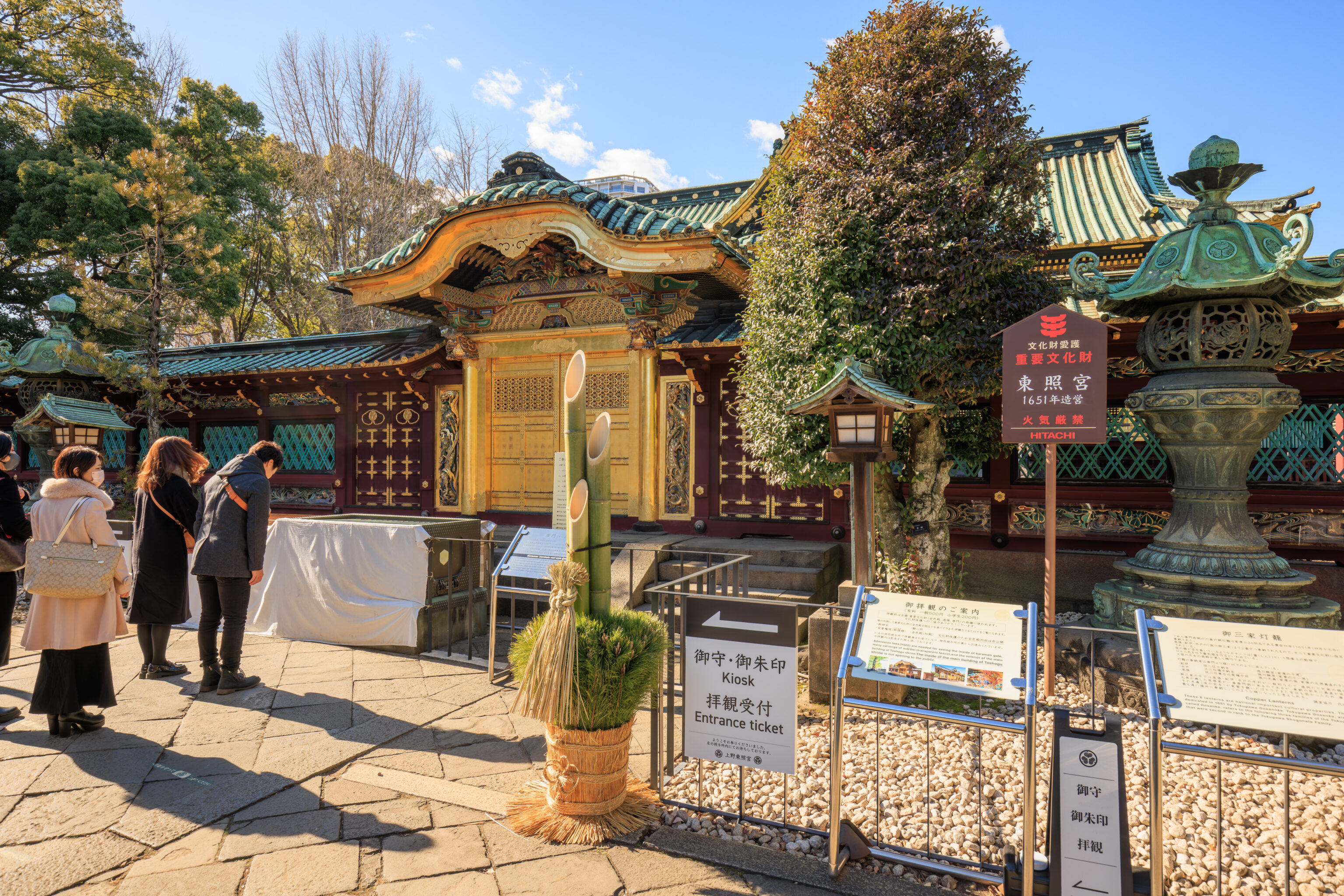
The main shrine is behind this golden gate! While it is not possible to see inside the shrine, it is possible to pay an admission fee to see what is behind this gate. We paid to go in.
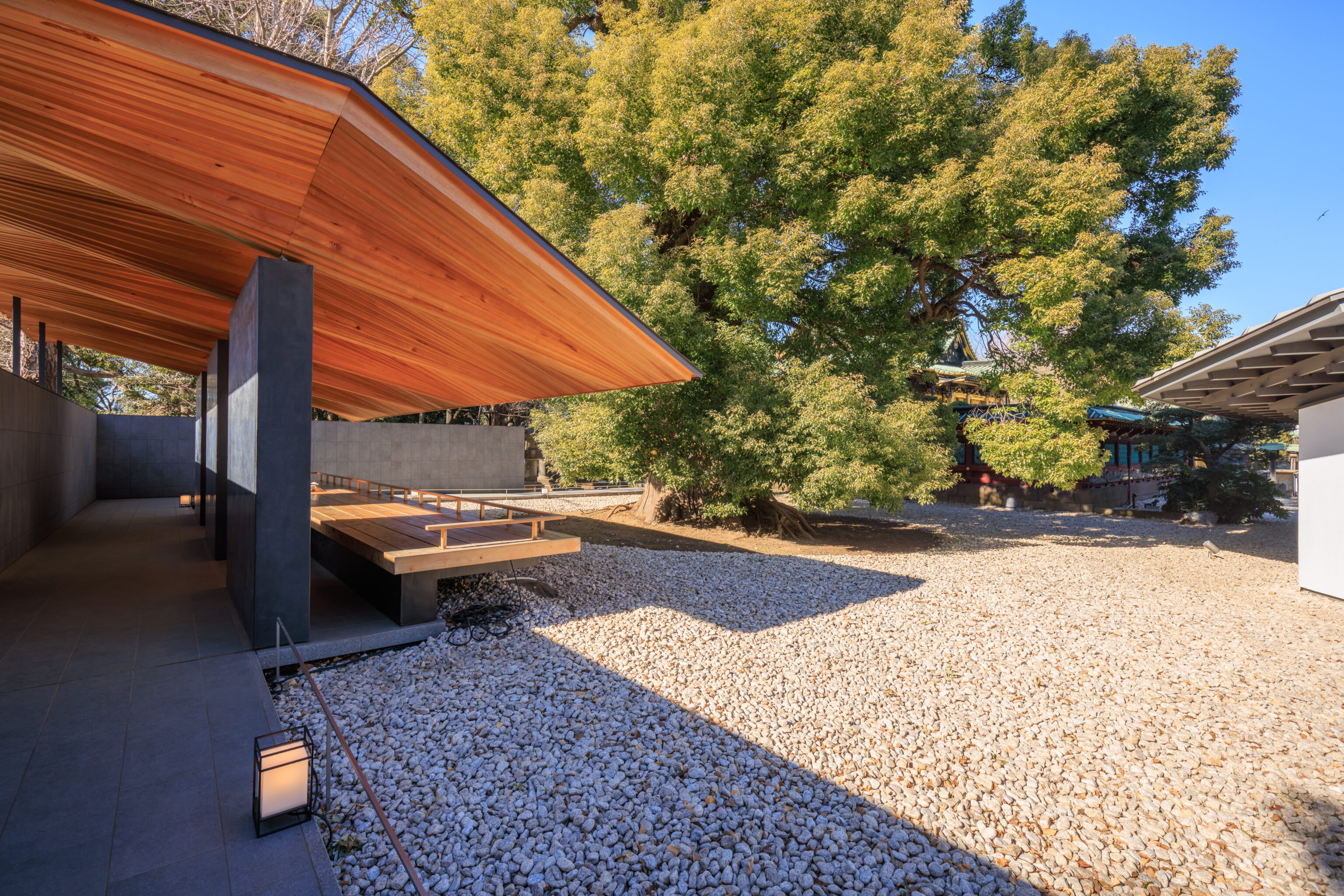
Entrance is through a building off to the side. After exiting the building, the first thing one sees is this modern structure which provides shade for the walkway and a raised wooden platform. This platform is a bit like the the wooden floor of a temple building. We took off our shoes and sat on the platform, enjoying the relative tranquility here.
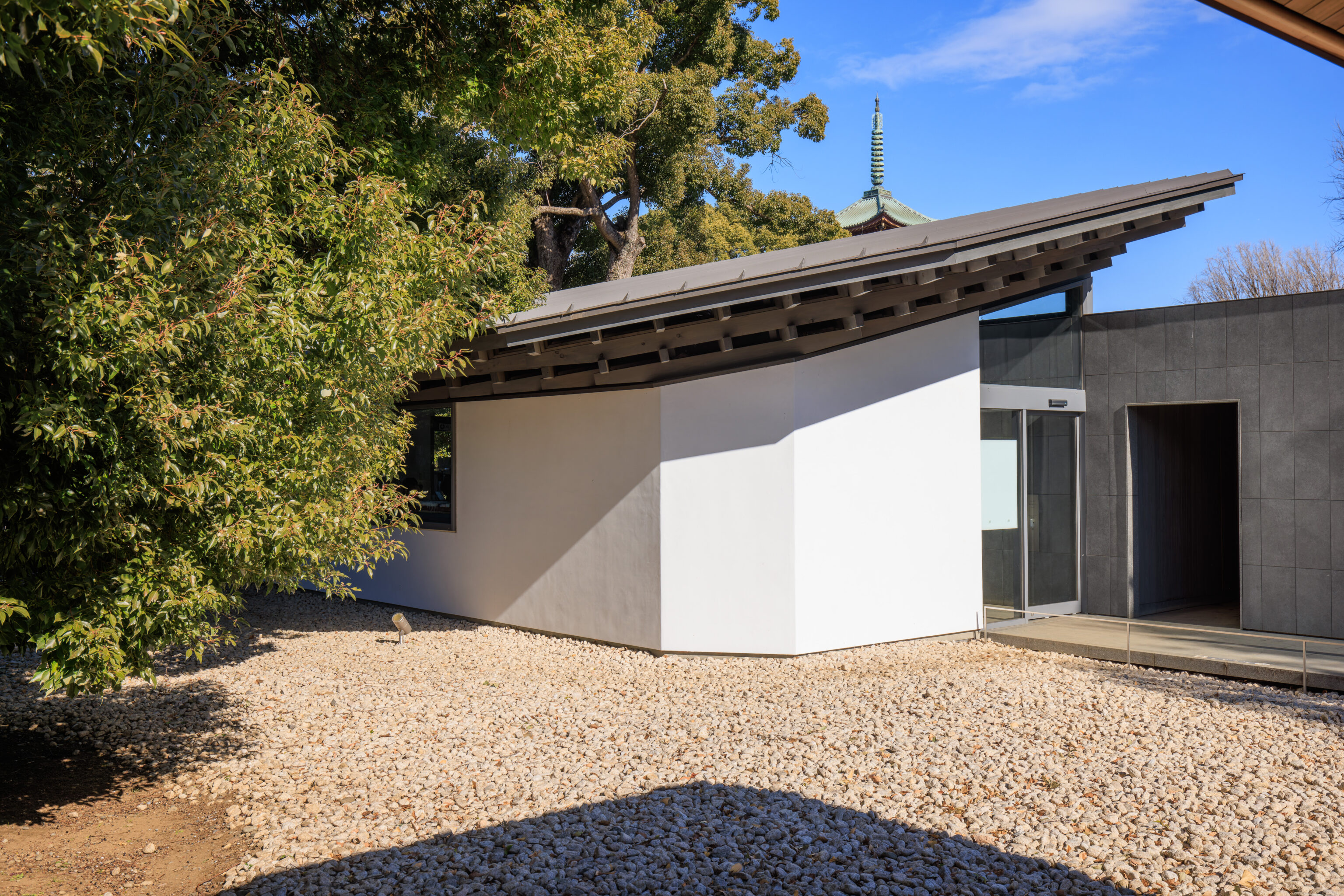
The ticket office is inside this modern structure.
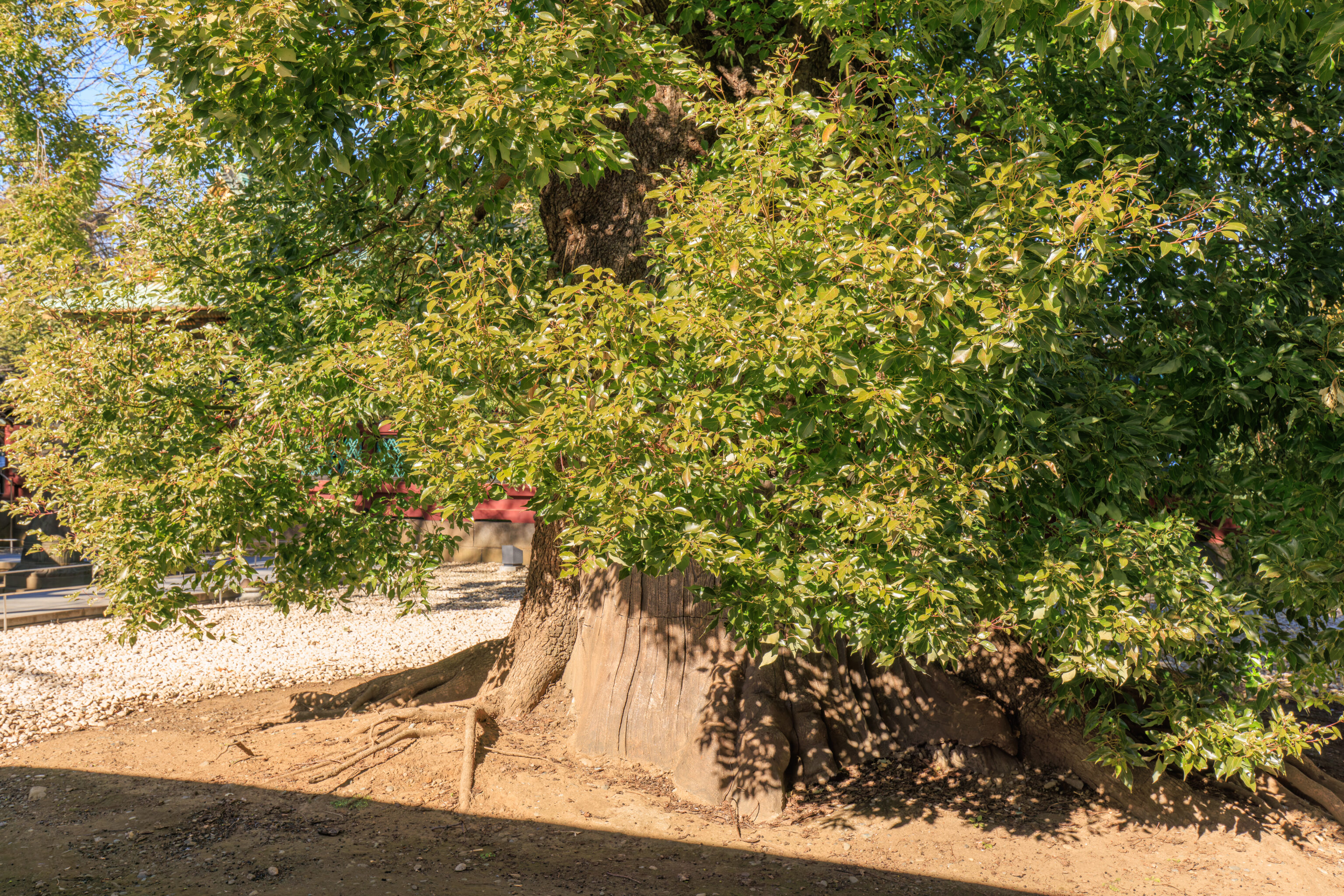
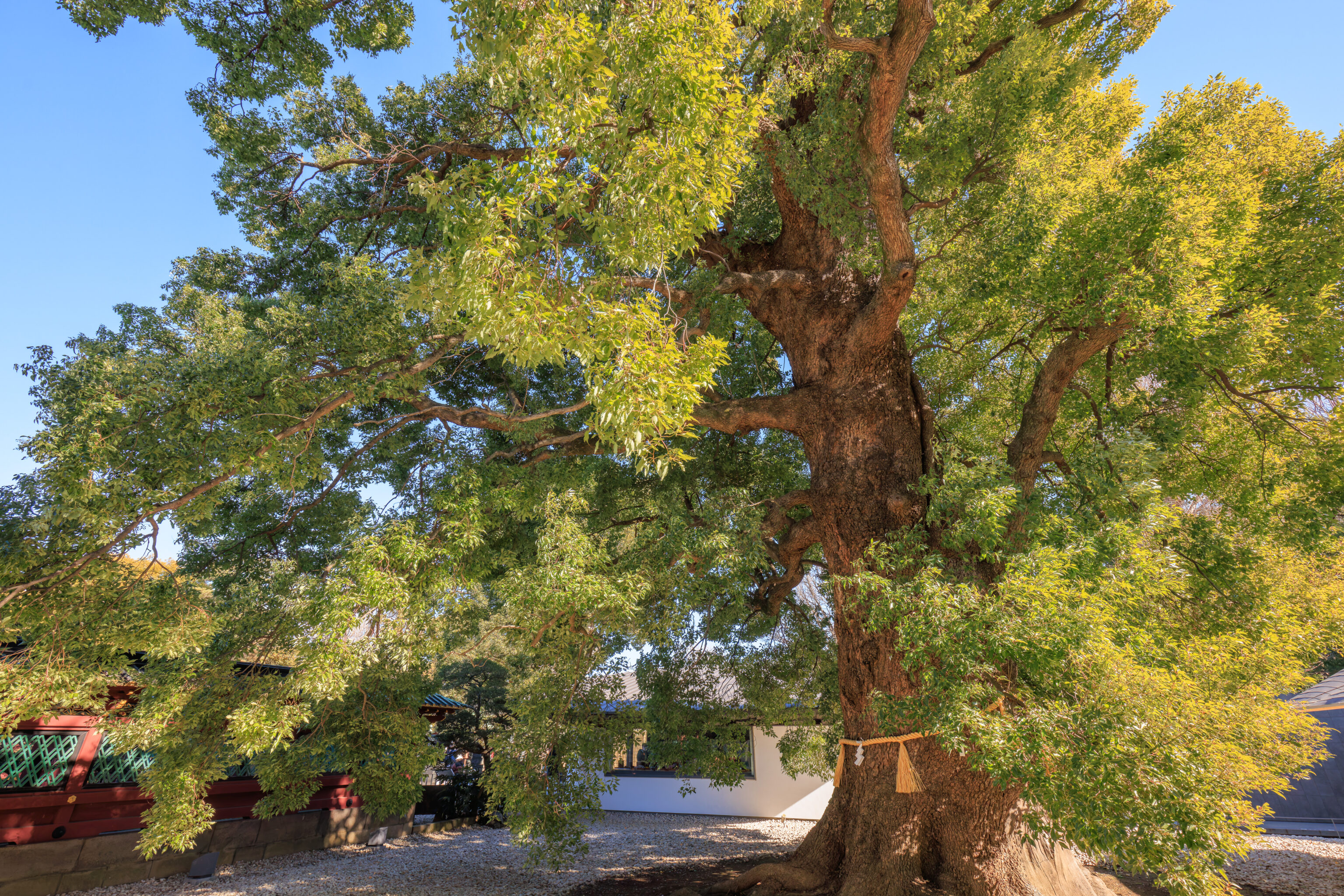
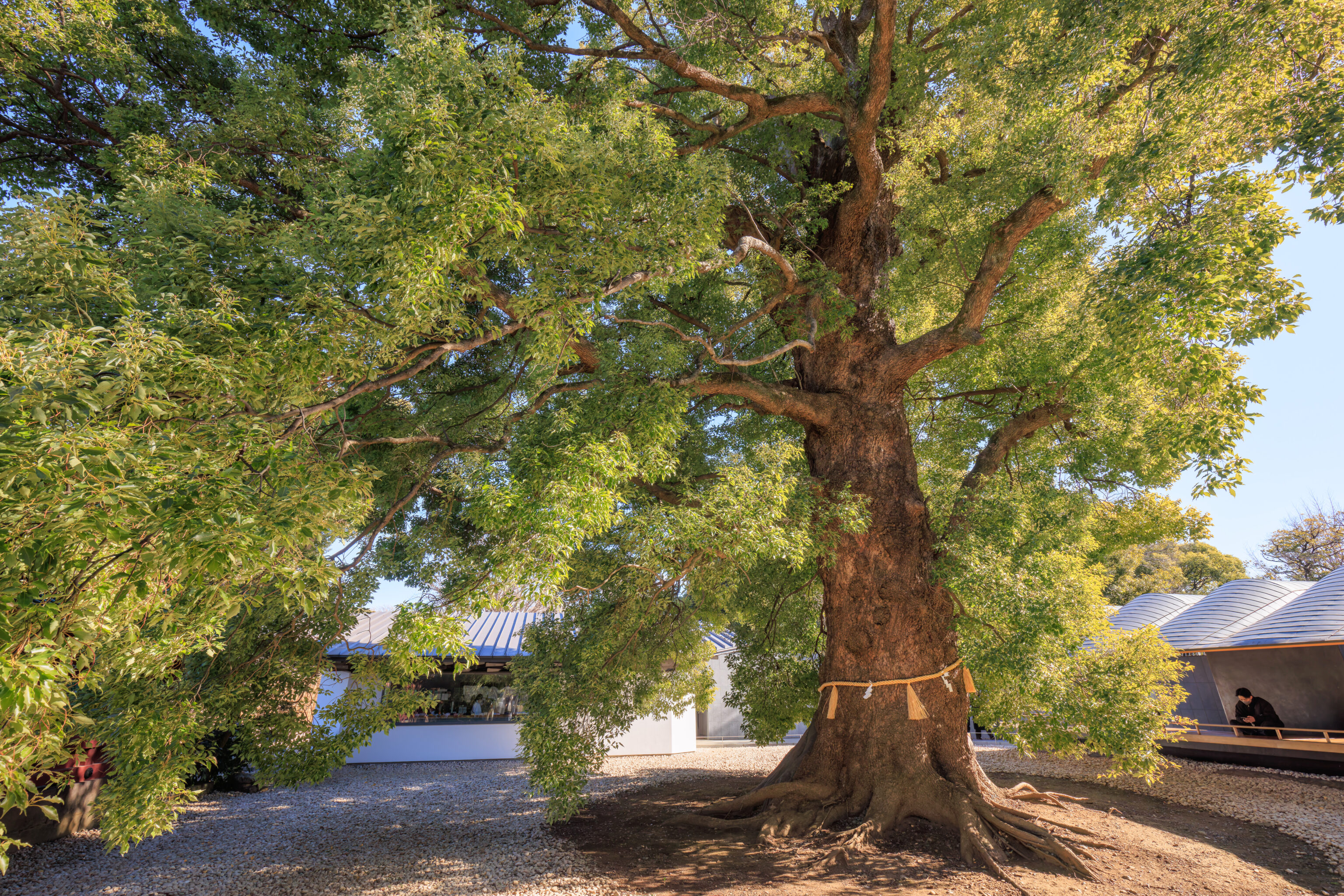
The area here is dominated by this huge tree. A sign provides some details:
Genus: camphor tree
Height: approximately 25m
Trunk circumference: approximately 8m
This is a sacred tree. It is estimated to be over 600 years old. It was here before the Shrine was built and is being cared for by Shrine guardians.
Another nearby sign describes this courtyard-like area in Japanese, though unfortunately the translation to English by Google Translate is a bit rough in places:
Seishindō and Ginkgo Trees
Designed by Takushi Nakamura & NAP Architectural Design Office
The inside of the U-shaped inner approach leading to the shrine is a "prayer garden" centered around a sacred tree that is over 600 years old.
This meditation hall is a building where you can face the sacred tree and calm your mind before worshiping. The structural materials for the meditation hall's roof are made from a large ginkgo tree (ginko) that stands right next to it. Ginkgo leaves are difficult to attach to each other, so they were planted in various places within the temple grounds at the time of the temple's construction to prevent fires from spreading. This ginkgo tree, which is about 30cm tall, has a history of watching over this land together with the sacred tree, and kakuro birds have taken up residence in its branches.
However, in 2020, a crack was found in the trunk, and an investigation revealed a large cavity inside, which indicated that if left unattended, it could fall onto the zoo's walkway. For safety reasons, the tree was forced to be cut down, but it was decided to process the wood from the ginkgo tree and use it as the roof for the meditation hall. Although it was a large tree, the cavity inside was large, and it was not possible to obtain the amount and length of timber as expected, so it was cut into timber 60 mm thick, which was then shifted to create a curved surface, and its strength was increased by using a shell-like structure known as a shell structure.
Over the heads of each person sitting here, the curve of the enveloping roof is reminiscent of overlapping ginkgo leaves. There are no pillars in front of the eaves that bow in reverence to the shrine, allowing the view of the sacred tree, shrine, and five-story pagoda, unchanged from Edo, to unobstructed before your eyes.
Looking through the slit at the back of the meditation hall, you can see the stump of the ginkgo tree. Newly sprouted buds are growing from the stump, stretching out from the trunk in a lively manner, giving a sense of the strength and connection of life.
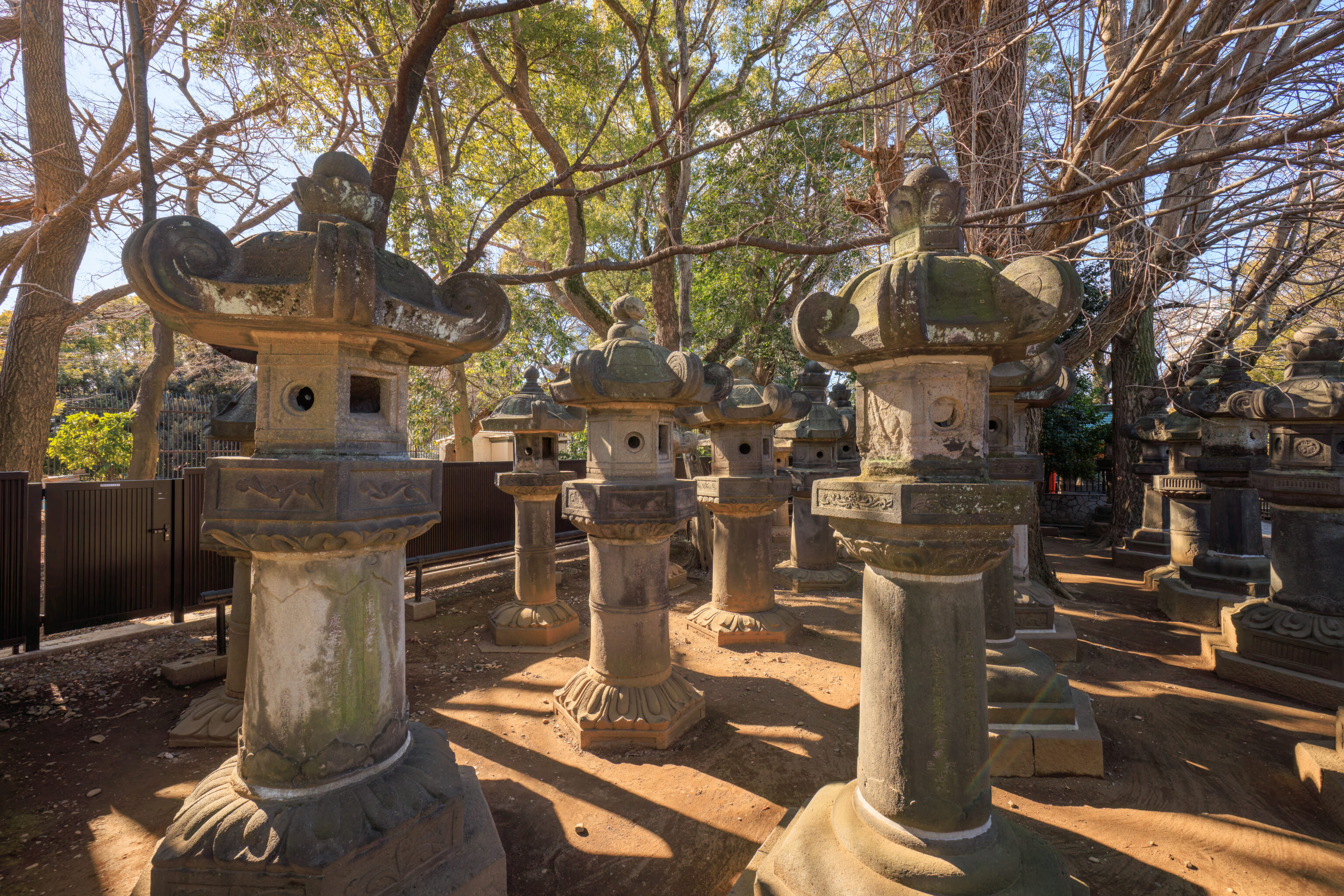
We continued on, passing by this array of stone lanterns.
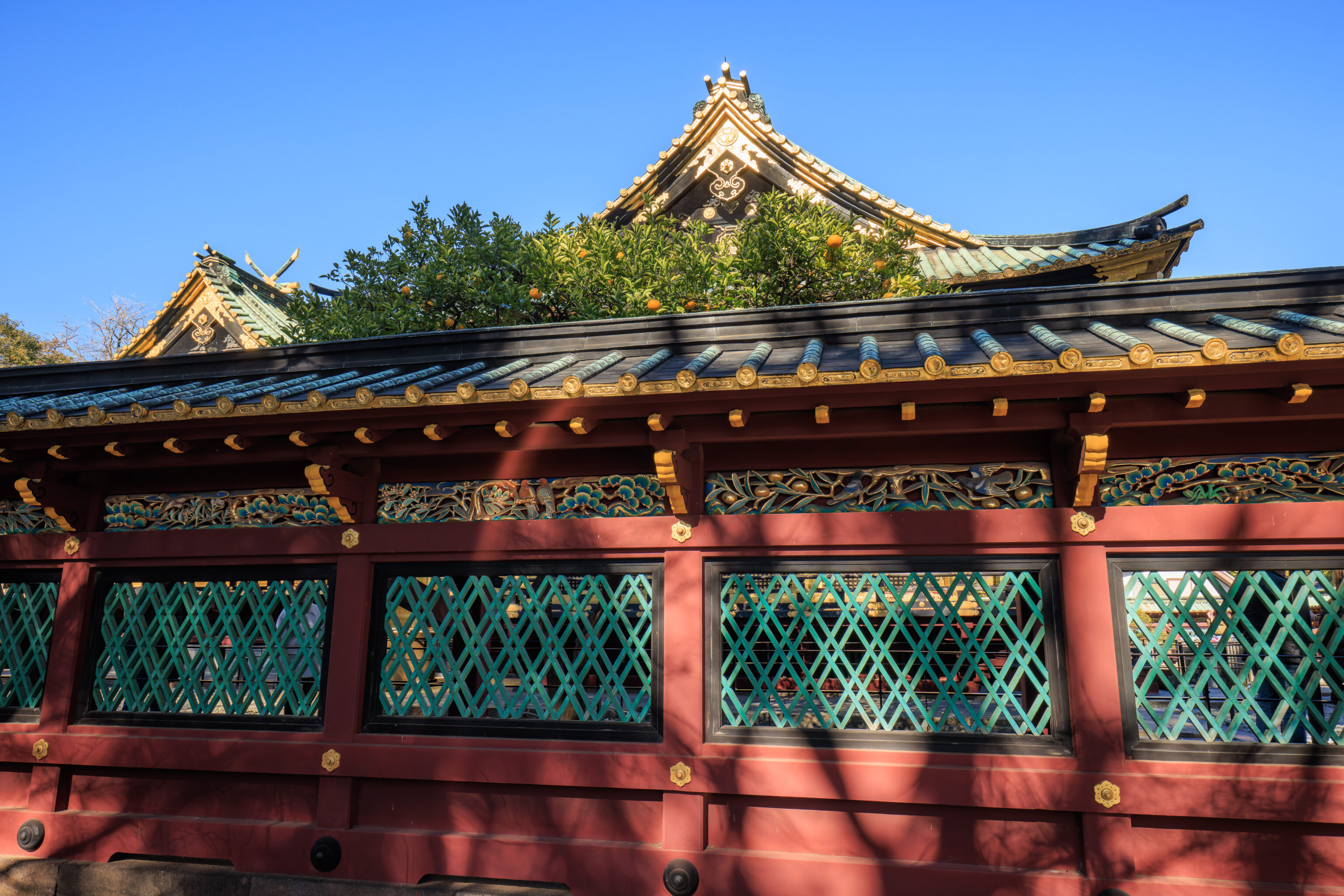
This shrine is famous for the carvings in this fence which surrounds the shrine building. In this section, it depicts various birds.
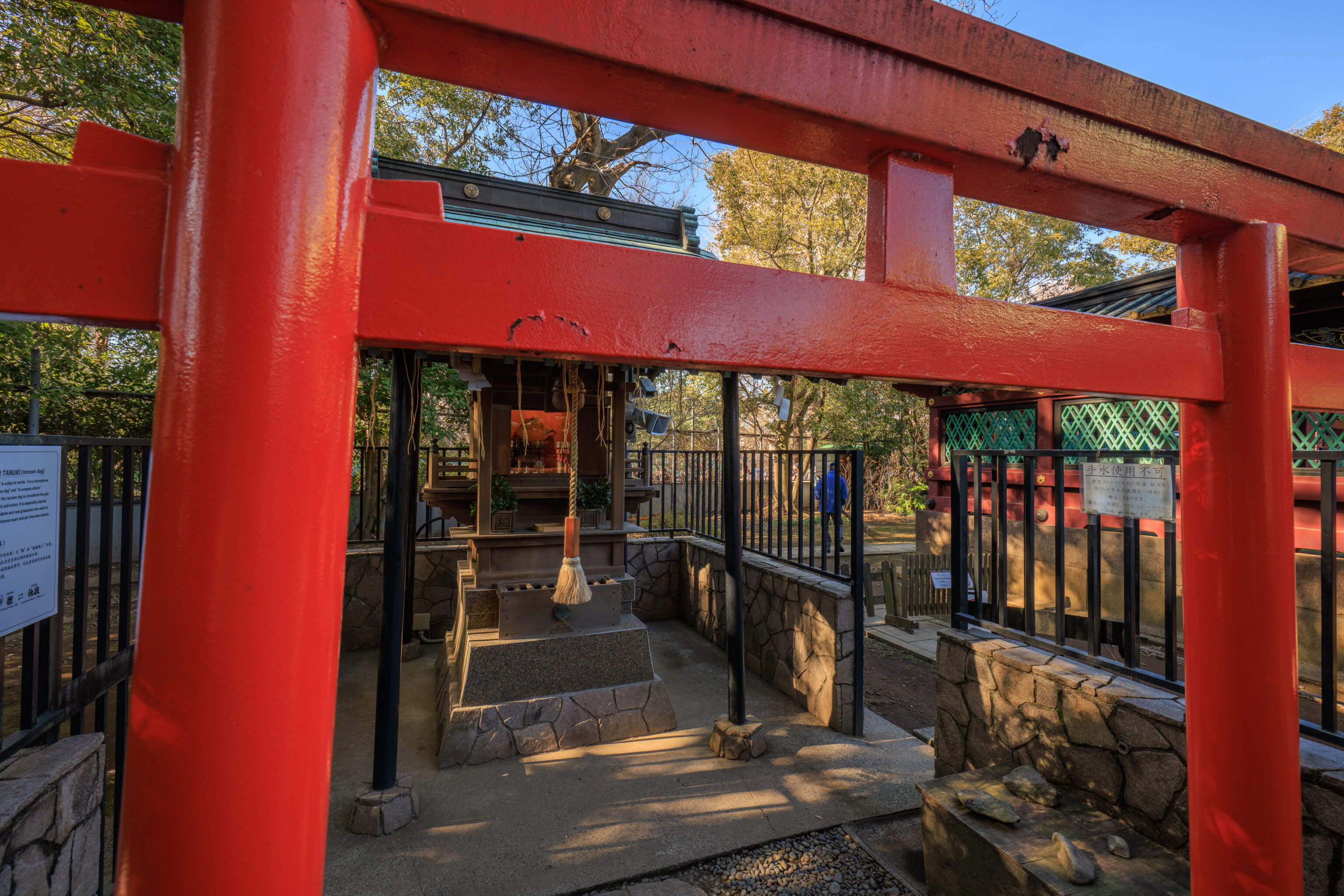
A small shrine here is dedicated to 狸 tanuki, or Japanese racoon dog. The partly visible sign on the left explains:
"TANUKI" is a play on words. It is a homophone of "raccoon dog" and "to surpass others". Therefore, the raccoon dog is considered the god of good luck and victory. It is especially popular among students and new graduates who want to pass the entrance exam and job interview season.
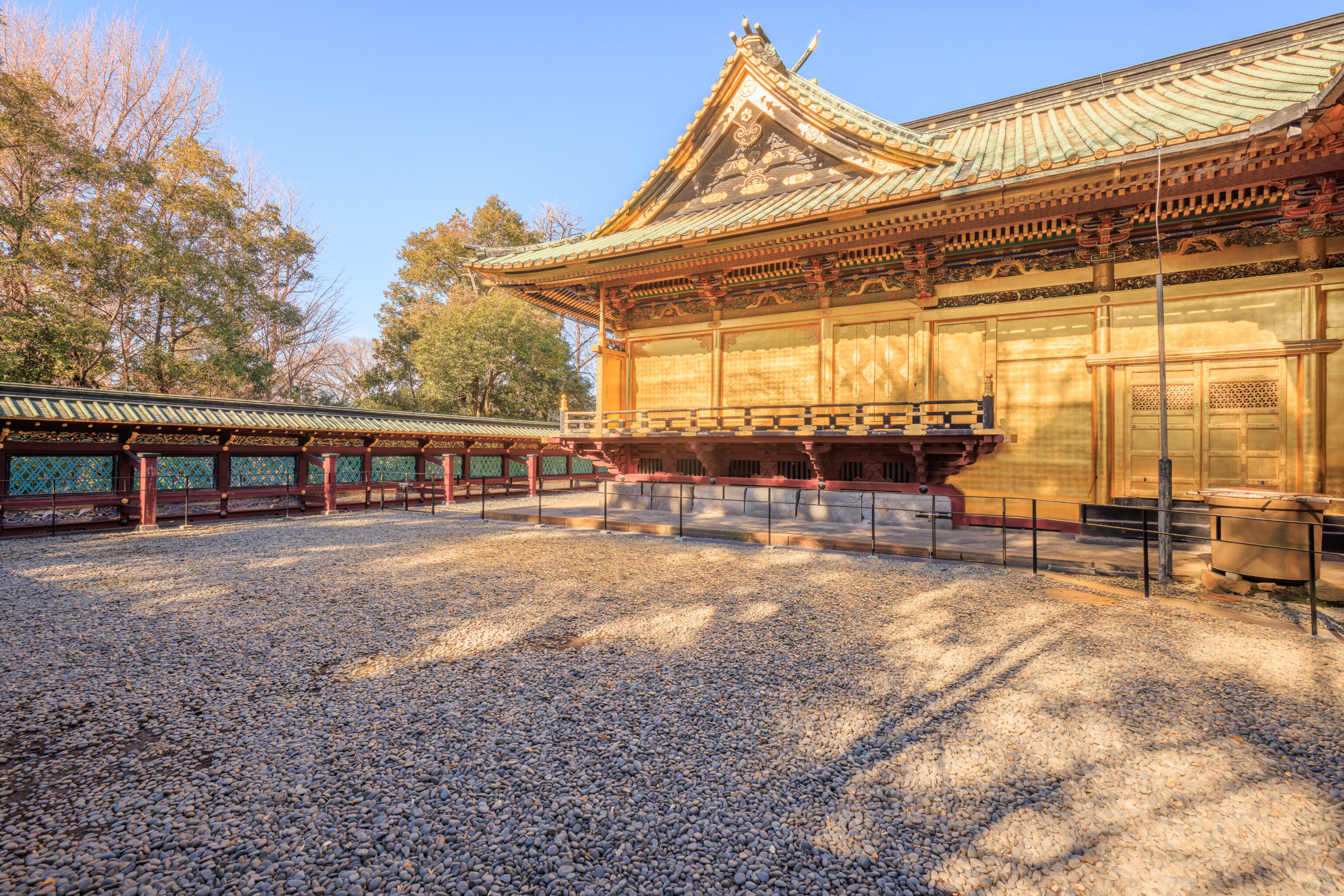
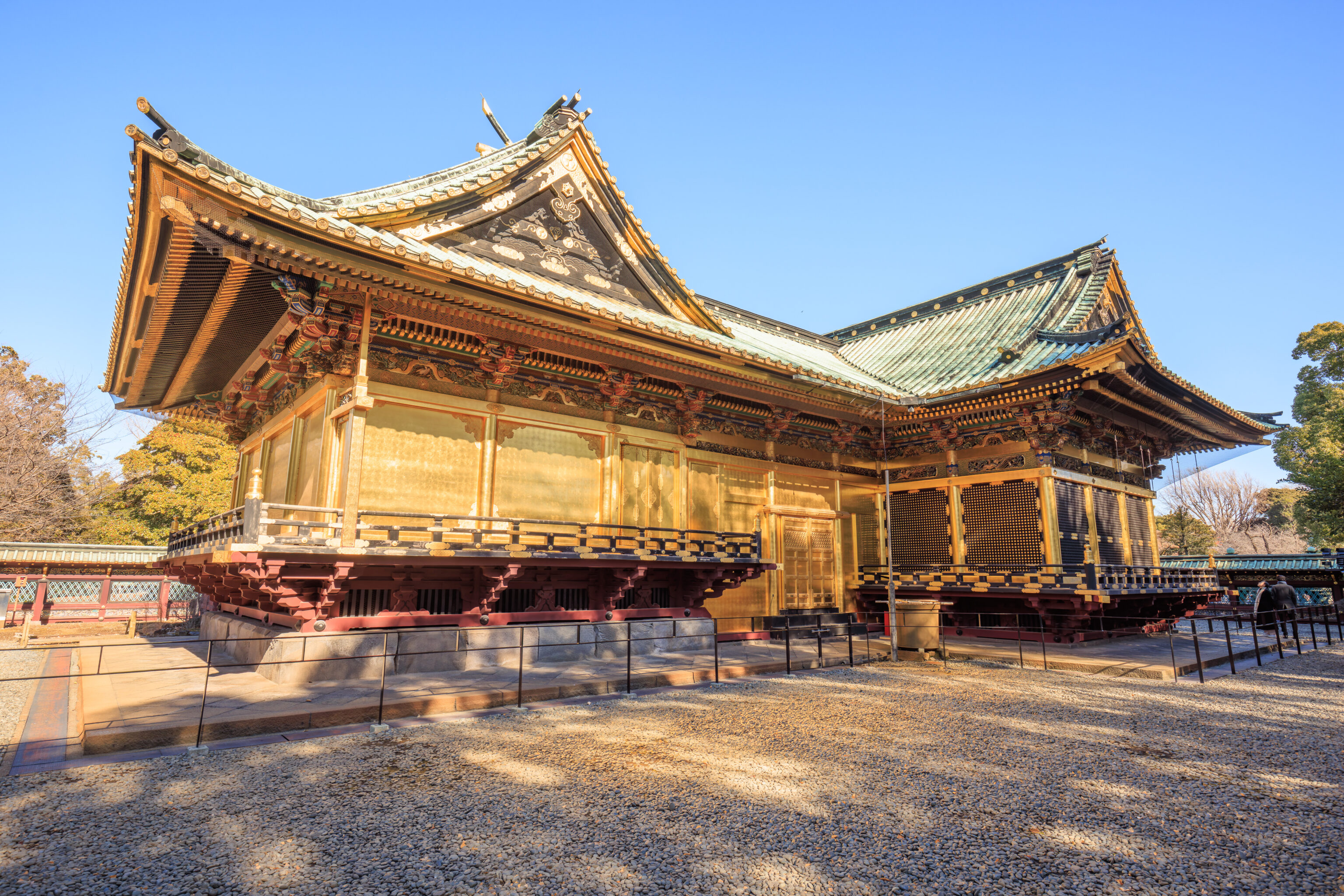
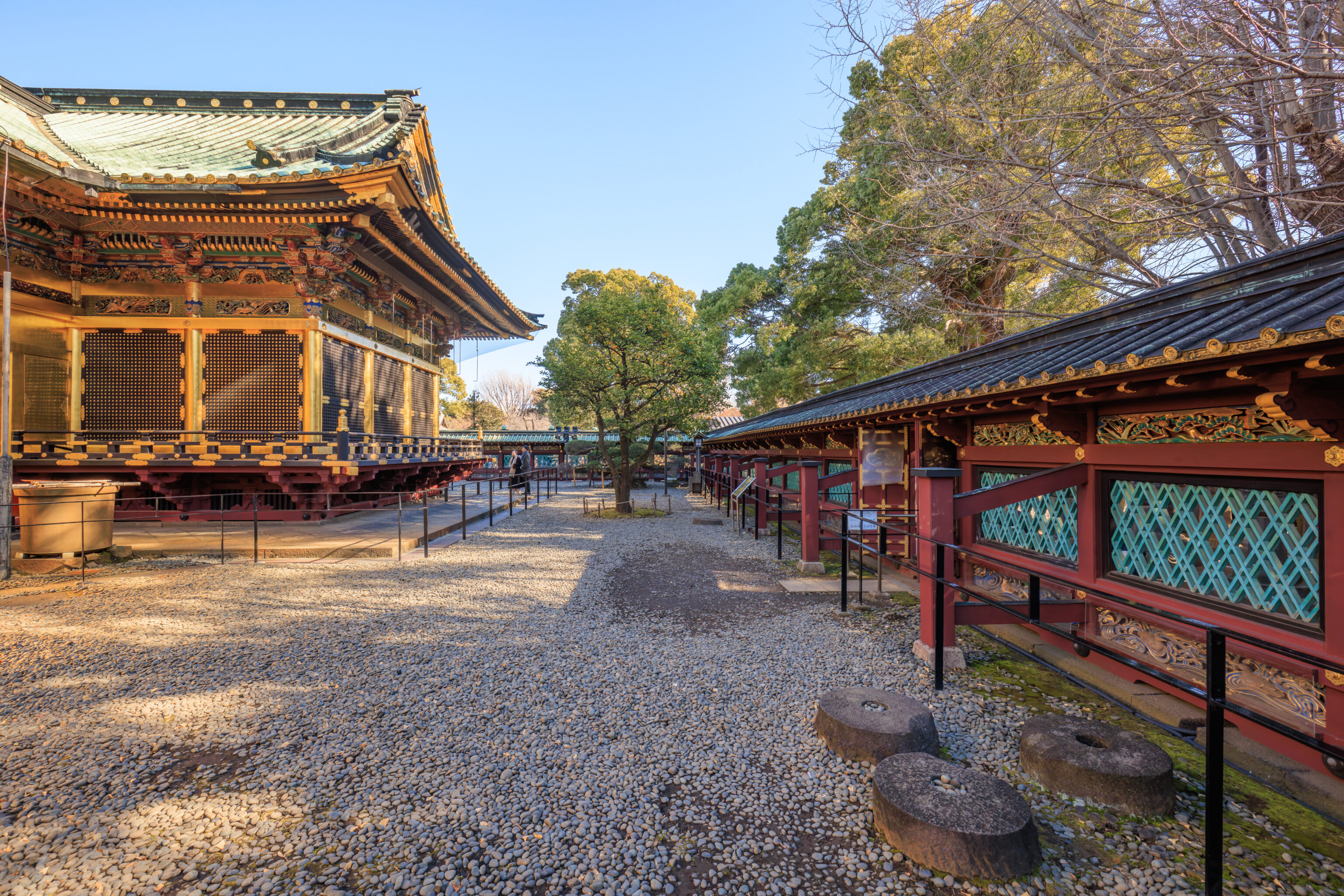
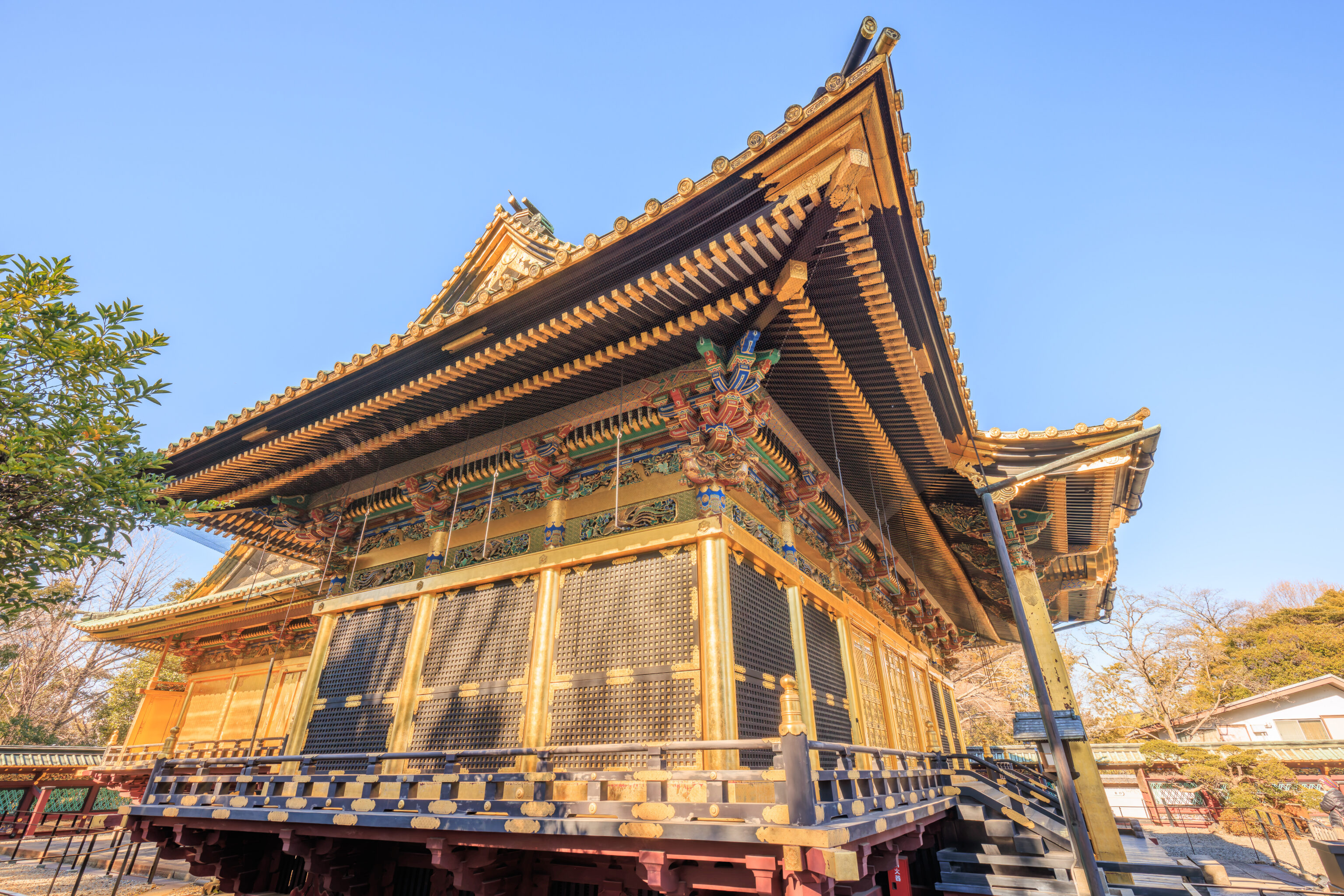
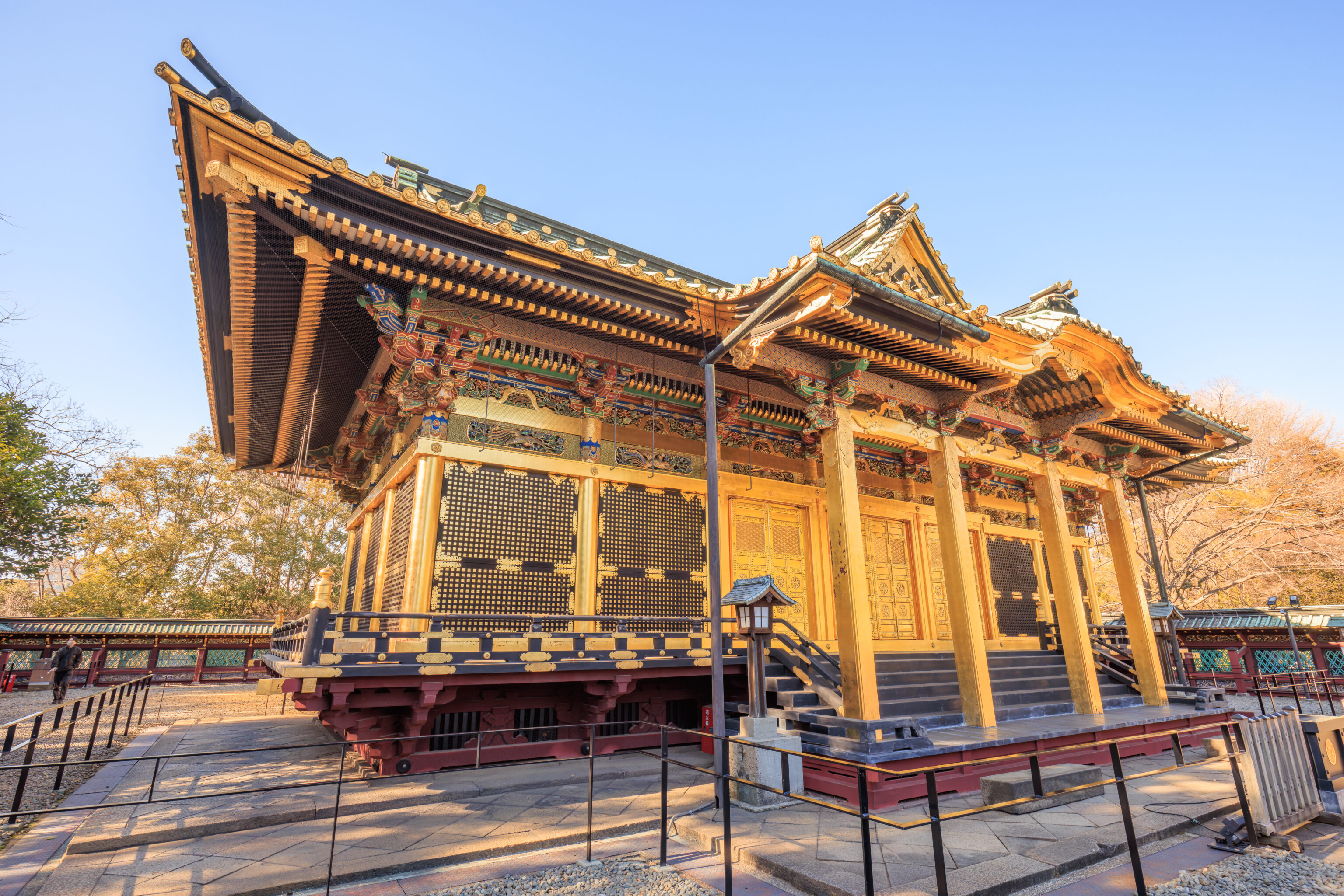
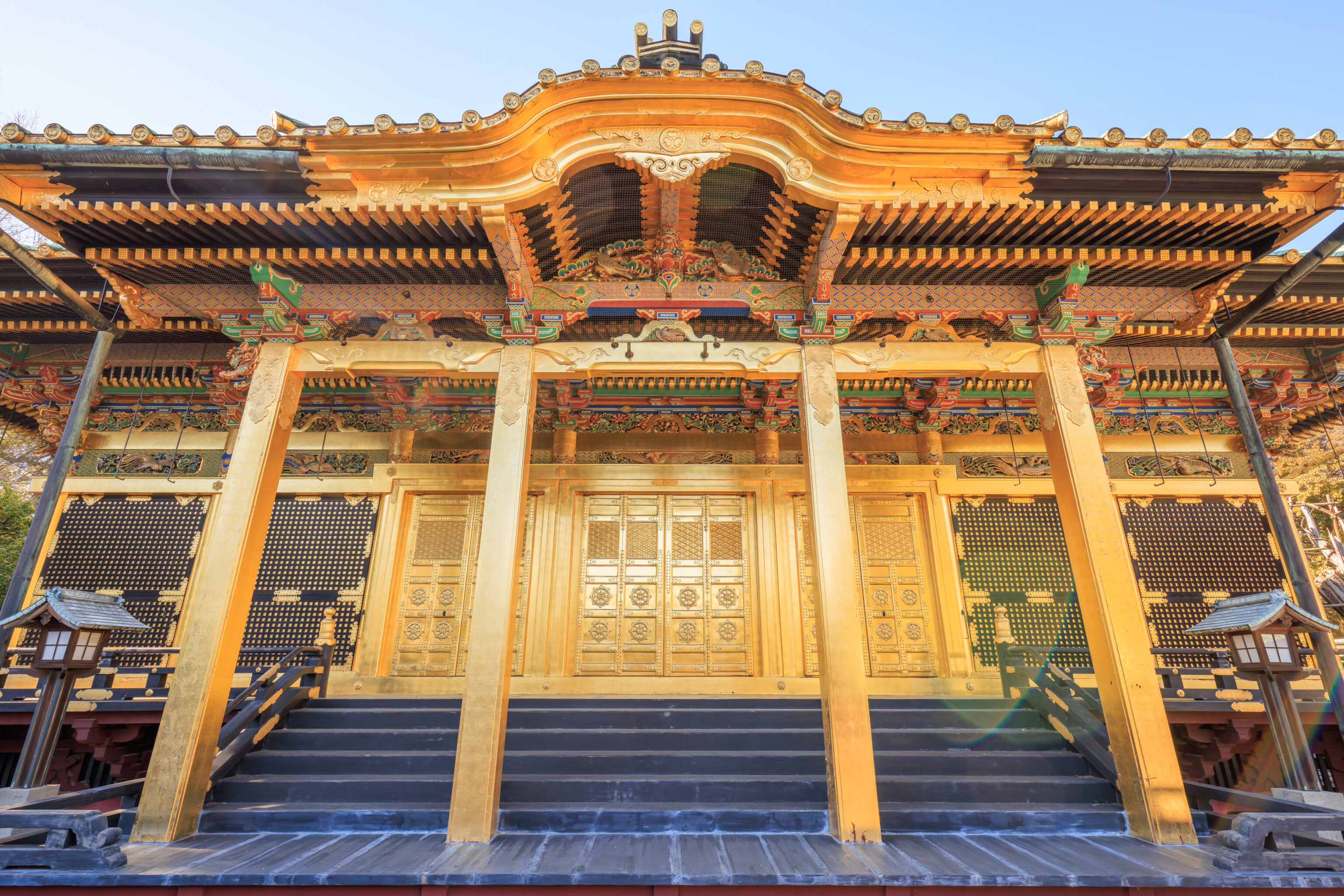
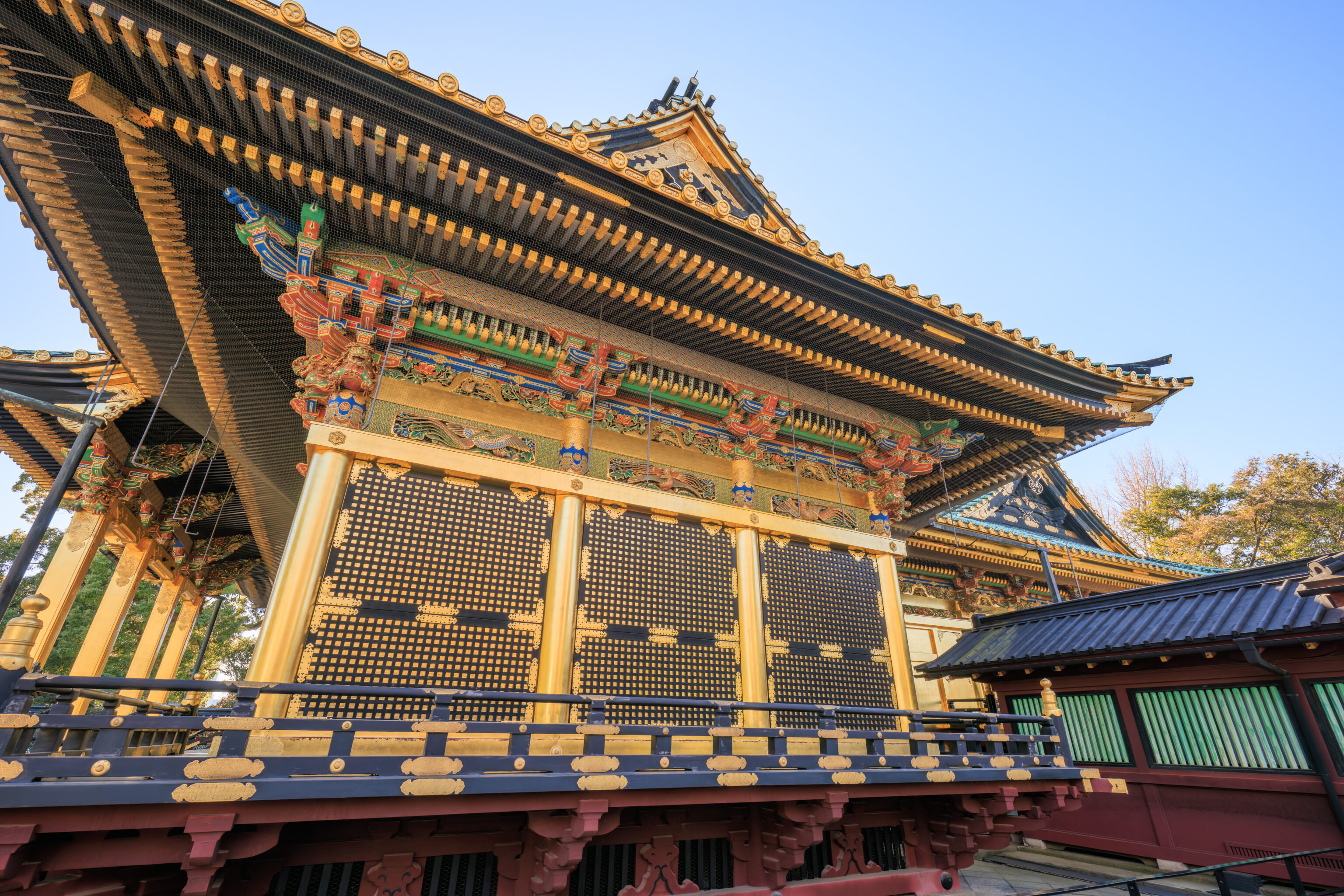
Kinkaku-ji in Kyoto, which we visited in 2019, is more famous as a golden pavilion. This golden shrine is much bigger and much more impressive! A sign provides some information in Japanese:
Shrine building
Built in 1651, it has been designated an Important Cultural Property by the government. To protect the cultural property, the shrine is built in the Gongen-zukuri style and consists of three rooms, from the non-public approach side: the worship hall, the offering hall (stone room), and the main hall. It is also called the Golden Hall due to the lavish use of gold leaf. The carvings on the exterior walls of the shrine feature powerful images of hawks, cranes, phoenixes, and lions, as well as beautifully applied plants such as pine, sedge, peonies, and beautiful flowers. The patterns on the upper part of the platform and around the carvings are decorated with okiakezaishiki (a technique used to decorate the surface). This luxurious coloring method is designed to make the patterns shine in three dimensions by applying multiple layers of chalk powder to create a thick surface and then applying gold leaf on top of that.
The same sign provides less detail in English:
Shrine structure
The shrine structure was built in 1651. The interior of the shrine building is closed to the public. This is for the protection and preservation of this Japanese cultural treasure, Corridors surround the hall on three sides. All the pillars and doors are covered in gold toil. The ceilings are decorated with lacquer and colorful carvings
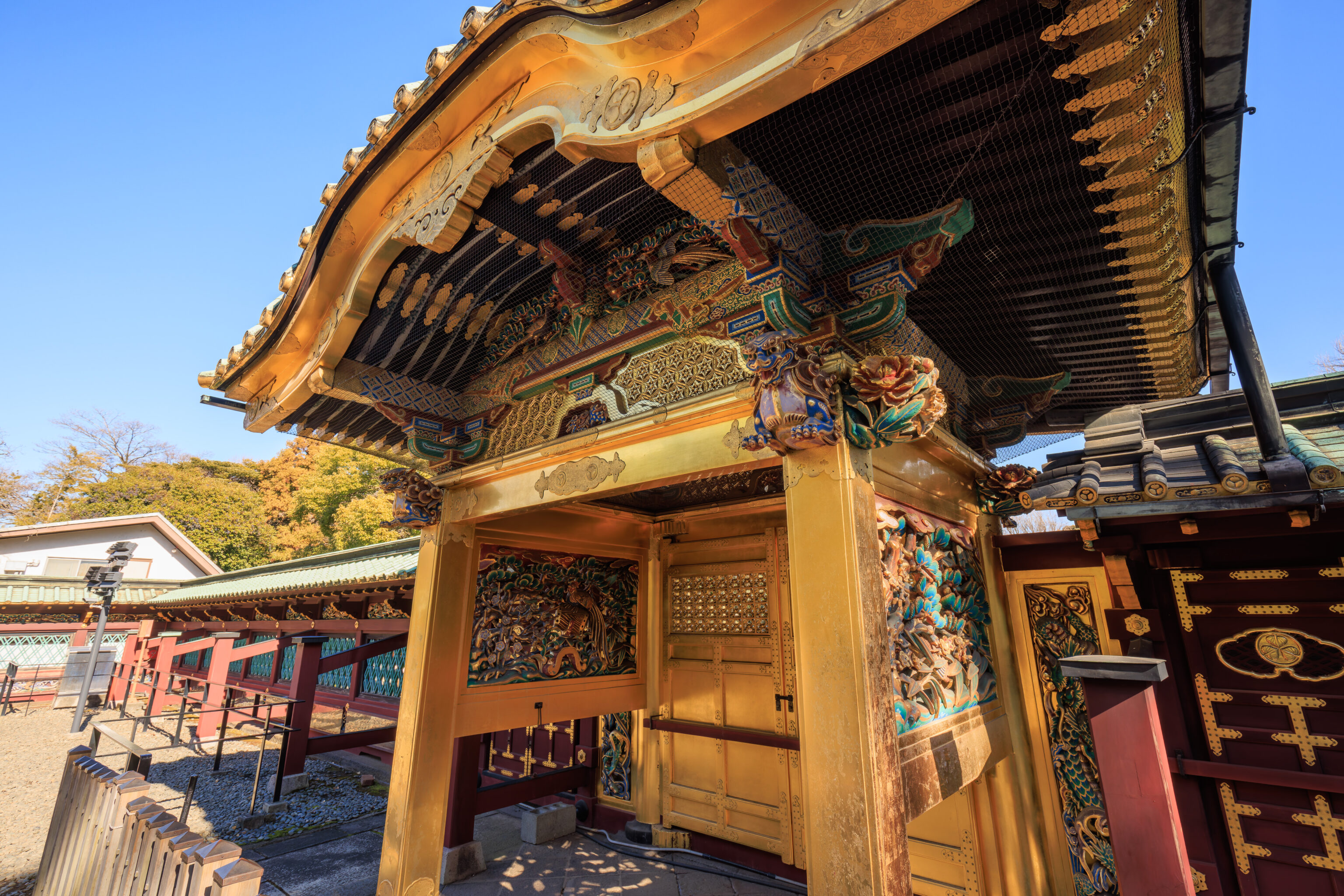
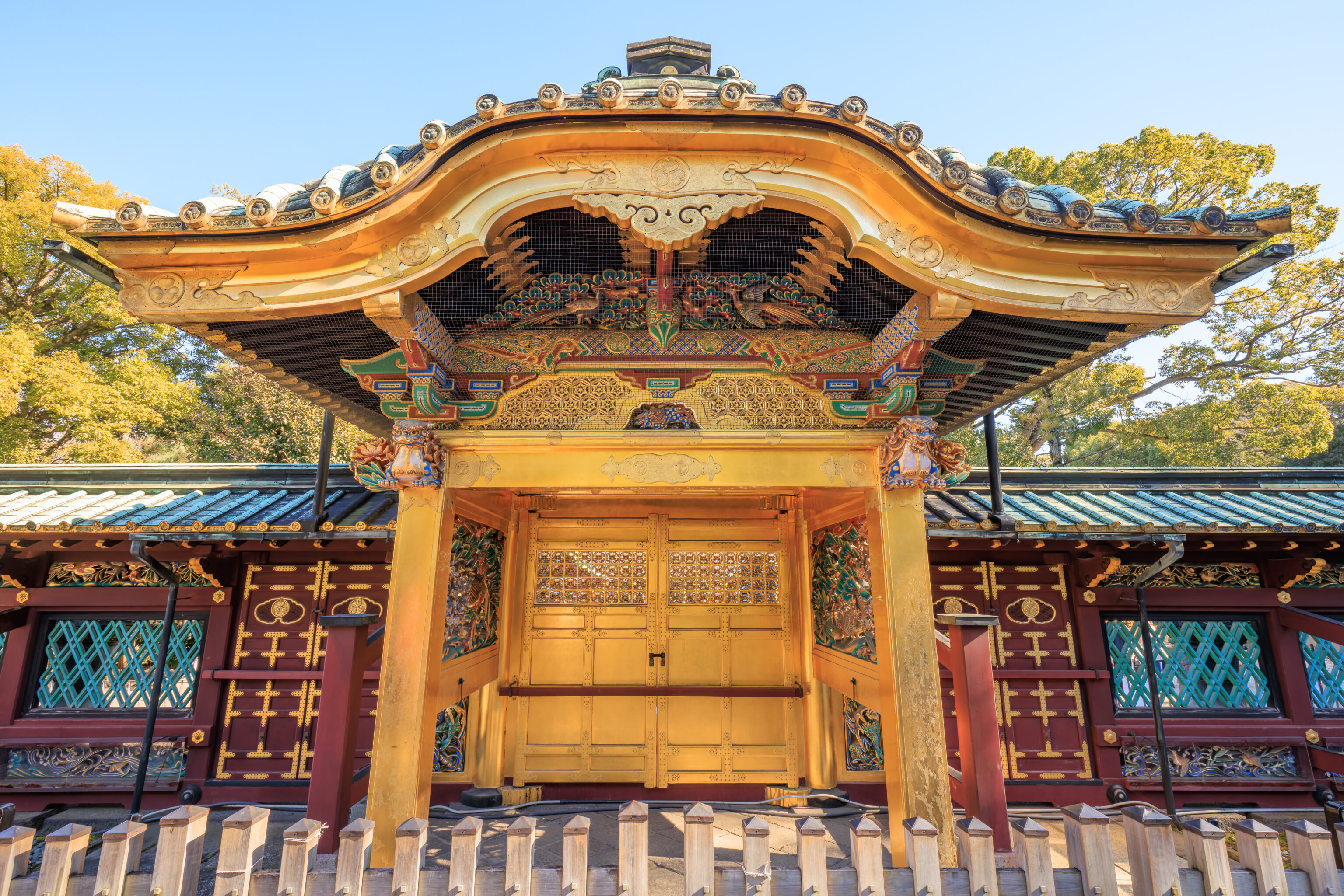
The entrance gate is just as impressive. This is the same gate we saw from the outside right before we entered. A sign describes this gate in Japanese:
Karamon Gate
Built in 1651, it is a Nationally Designated Important Cultural Property. Its official name is Karahafu-zukuri Yotsuashimon (Gate with Four Legs in a Karahafu Style). The four faces inside and outside the pillars feature carvings of ascending and descending dragons created by Hidari Jingoro, who is famous for the "Sleeping Cat" at Nikko Toshogu Shrine, and legend has it that the gate goes to drink water from Shinobazu Pond every night. The gate with its head facing downwards is called the ascending dragon, as it is said that the greater the person, the more they bow their head. It is an extremely intricate work, with arabesque lattice on the door, tortoiseshell flower diamonds above the door, and openwork carvings of brocaded pheasants and silver pheasants on the upper front. The openwork carvings on the left and right sides of the center are based on a Chinese story called "Kankodori," in which the emperor placed a drum in front of the gates of the imperial court, and when there were political errors, he would have the people beat the drum to hear their complaints. However, because the emperor ruled well, the drum was never beaten, and the base of the drum became so covered in moss that chickens began to live there. It is thought that the carvings were made with the hope of peace throughout the world.
And, in English:
Karamon (karahafu roof style gate)
The Karamon was built in 1651. Gold foil as well as hand carved flowers and birds ornately decorate the doors and both sides of the gate. Two dragons are carved on the gate pillars that stand on both sides of the Karamon. They are known as Noboriryu and Kudariryu, which means Ascending Dragon and Descending Dragon. The dragons are said to be the works of Hidari Jingoro, a famous sculptor who lived in the Edo period. Legend has it that every night two dragons visit the Shinobazu Pond to drink from its water.
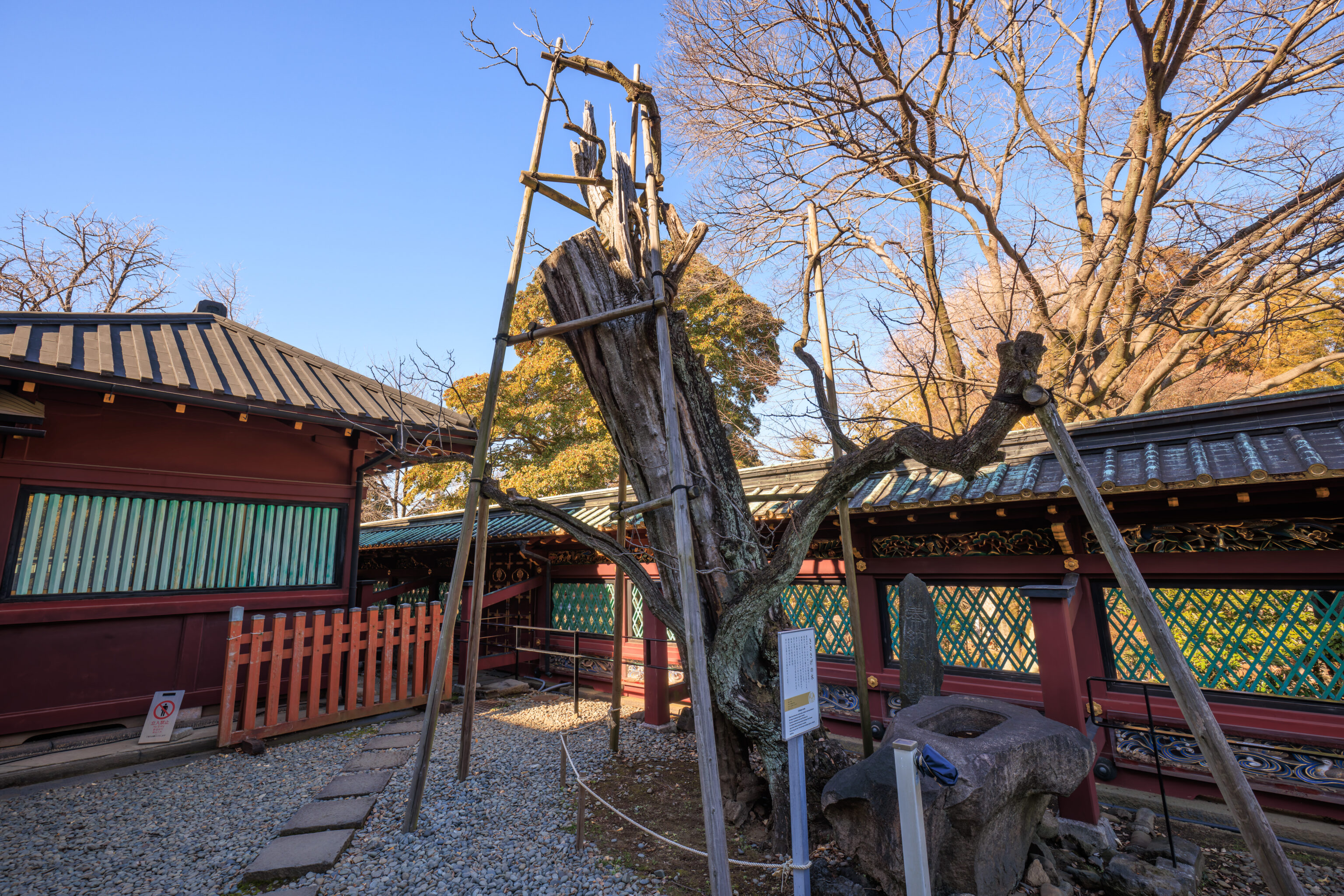
This tree is supposed to provide protection from lightning, as explained by the small sign next to it:
Scarlet tree
During the construction of the shrine building in 1651 (4th year of Keian), it is said that it was planted with the hope of warding off lightning. The tree is said to be over 350 years old. The cattail is a deciduous tree of the Bignoniaceae family. It has been believed to protect the shrine from lightning. The bark is called Azusa white skin, and the long, slender fruit is Azusa fruit, and in summer it blooms with fragrant pale yellow flowers. It has also been used as a herbal medicine since ancient times.
Catalpa
Origin: China
Scientific name: Catalpa ovata
Japanese name: 木大角豆(きささげ) Kisasage
Chinese name: 梓(し)
A similar but shorter description is provided in English:
Catalpa ovata
When the shrine was constructed, Catalpa ovata was planted in the hope of protection against thunder. The tree is estimated to be over 350 years old. It is believed that the tree protects buildings from thunder. Light yellow flowers blossoms in summer. Fruit is long and thin. Fruit and bark are being used as a natural medicine
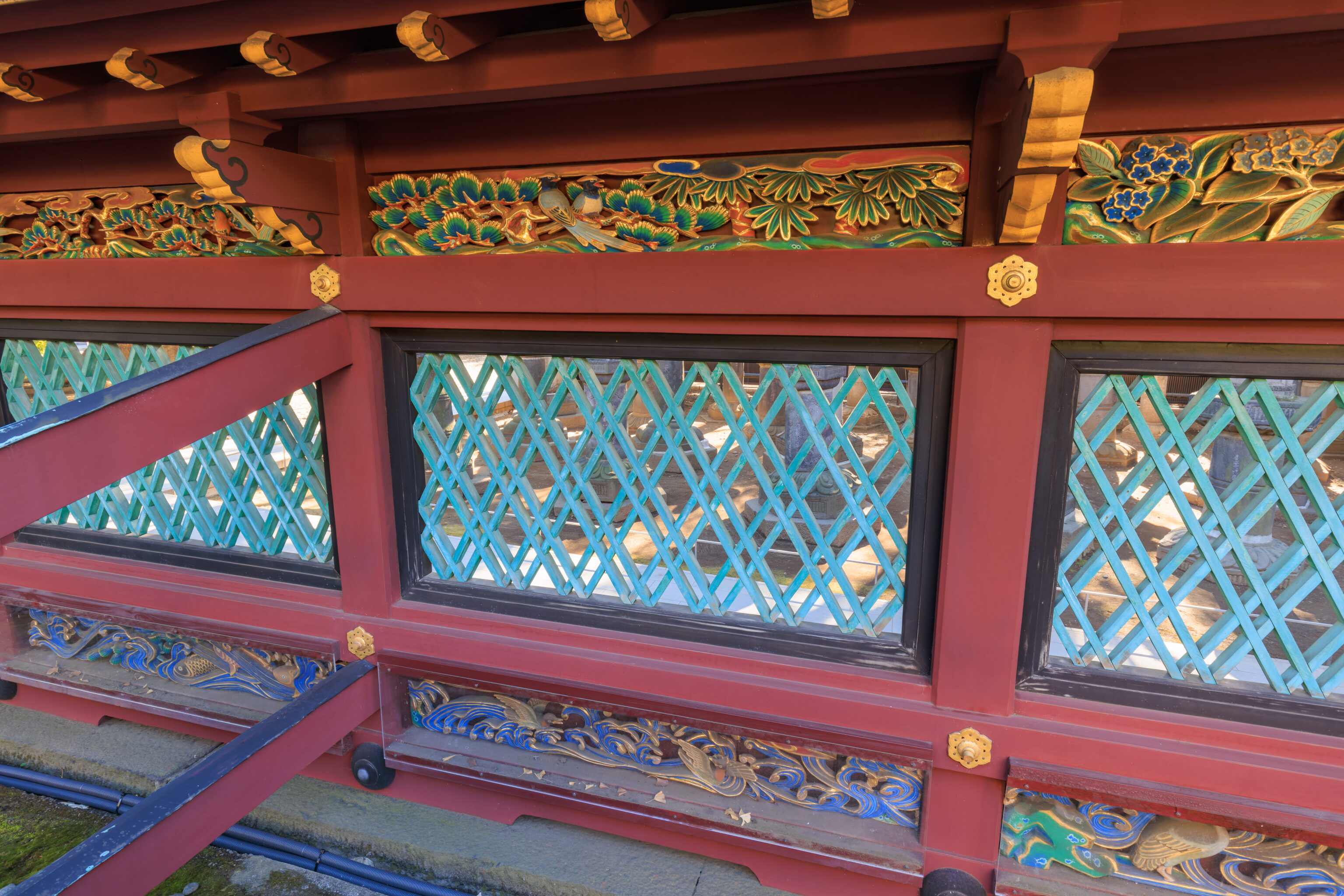
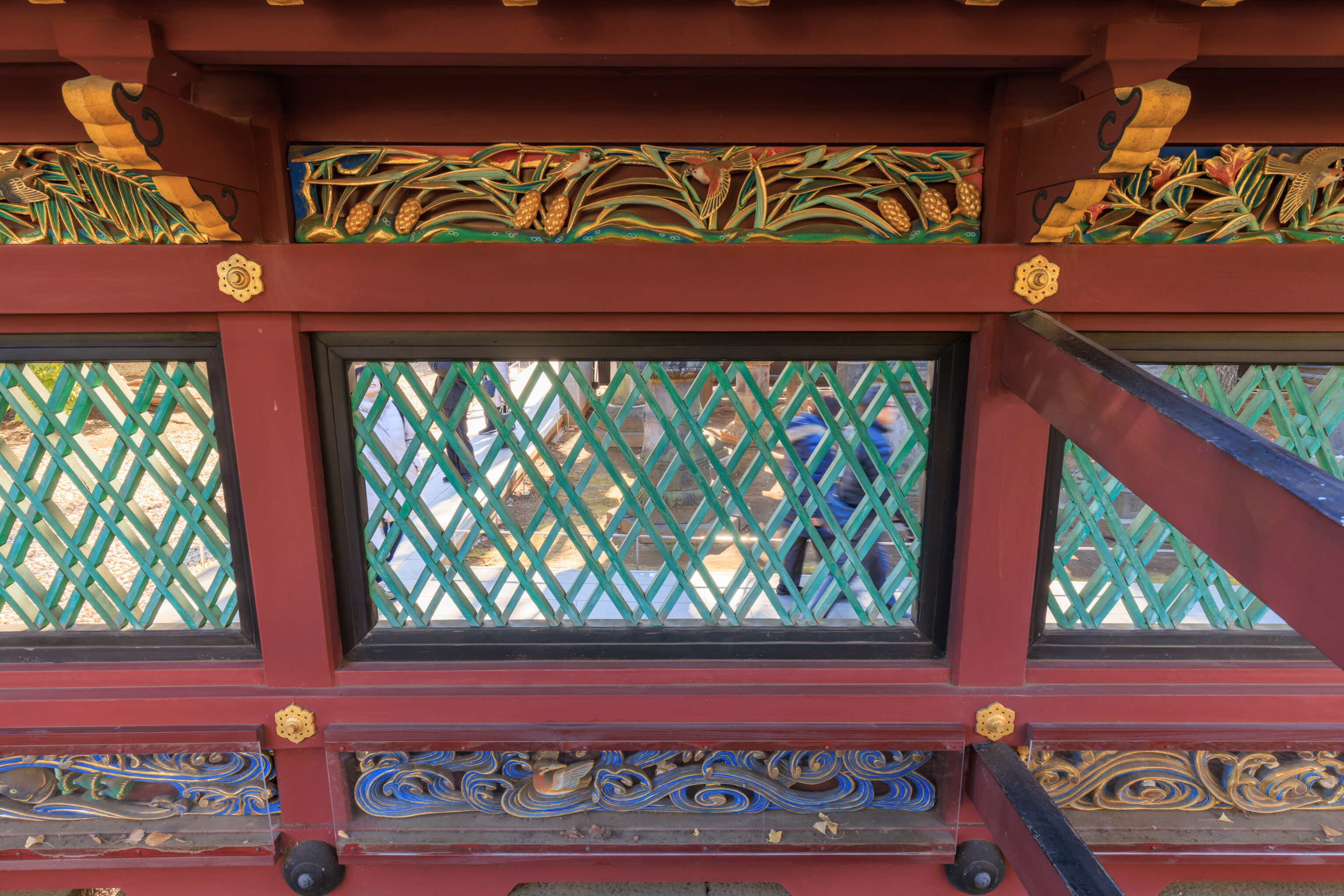
Two more sections of fence, again depicting birds. The bottom photo depicts a Eurasian Tree Sparrow at the top of the fence, a species that visually resembles the House Sparrow which is invasive back home in the US. When we first noticed Eurasian Tree Sparrows on a previous trip to Japan, we initially thought they were House Sparrows. Then we thought it was odd they were all male, and then they looked a bit weird with that black dot on the side of their heads. Then we realized, not the same species!
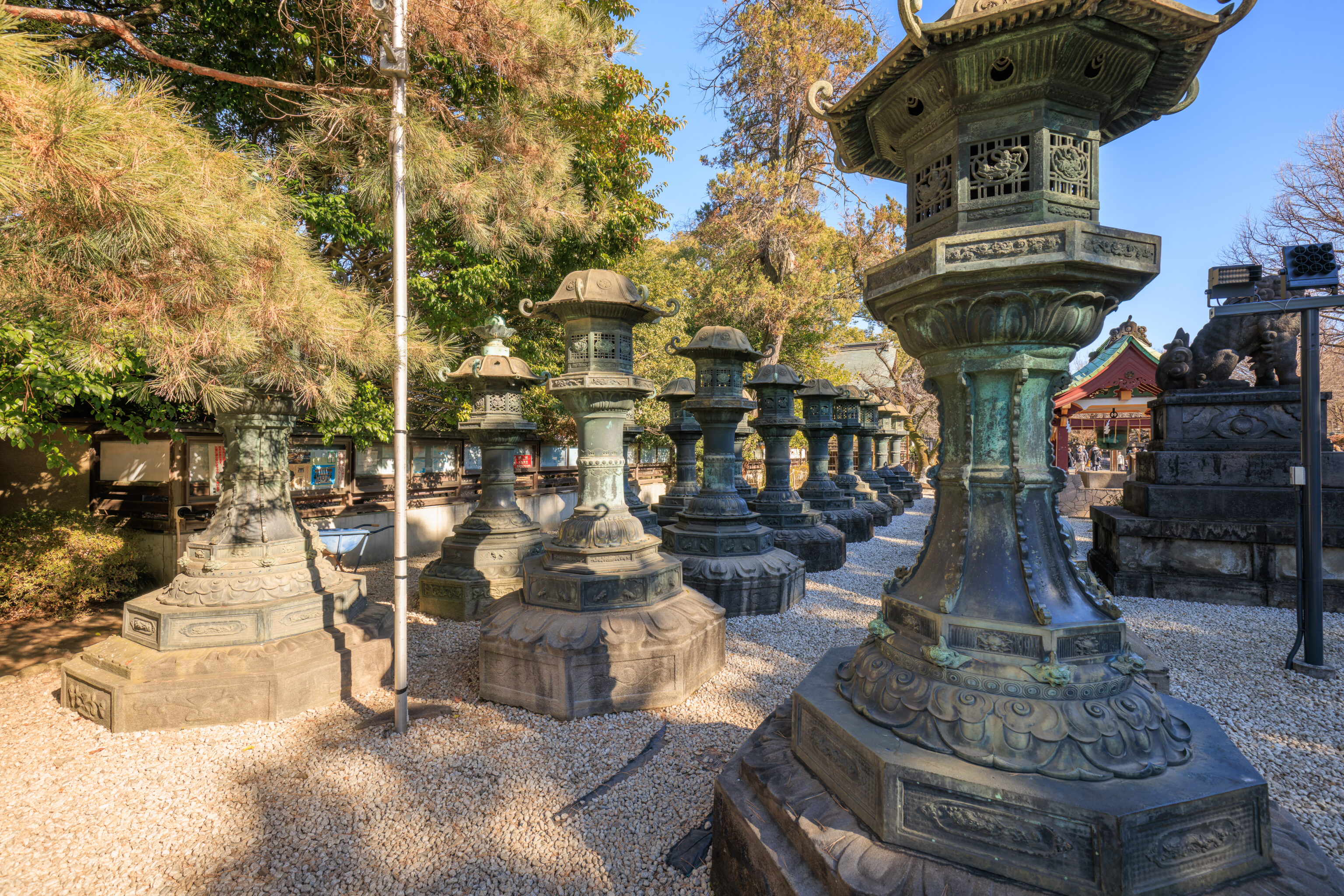
We exited the admission fee area, walking by an array of copper lanterns.
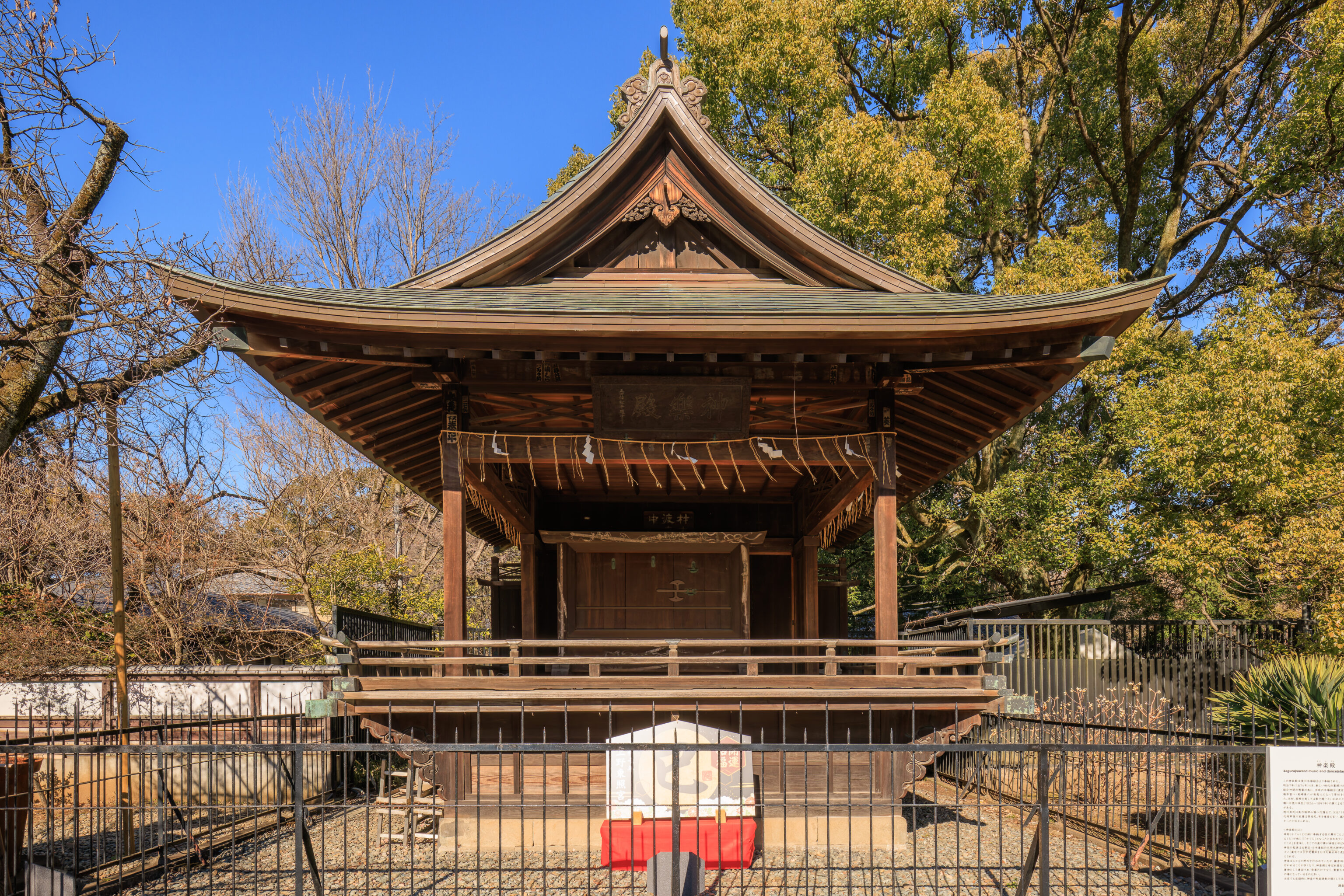
This building is a sacred music and dance stage and is described by the sign to the right in Japanese:
Kagura hall
kagura(sacred music and dance)stage built in 1874
This Kagura hall was donated by the Fukagawa Kiba Association.
In April 1874, in commemoration of the beginning of a new era and to commemorate the souls of their fallen comrades, Tomihachi Hashimoto and Zenroku Ozaki, who were the heads of the Kiba guild (traffic guild) at the time, raised funds and donated the roof to the shrine. It is said that at first, the beauty of the roof was the most beautiful in the Tokyo metropolitan area.
The plaque bears the words "Timber arriving" in handwritten calligraphy by Tokugawa Nariakira (1826-1891).
Tokugawa Naritamu was the eighth lord of Tsuyama Domain in Mimasaka Province, and his father was the 11th Shogun, Tokugawa Ieaki. The 12th Shogun, Tokugawa Ieyoshi, was his half-brother. He was known by the pen name Kakudo, and is said to have been a very honest person and highly respected.
<What is Kaguraden>
Kagura is music and dance dedicated to the gods. It is said that the name "Kagura" came from the word "Mikura". The origin of Kagura is in the Kojiki and Nihon Shoki, where Amaterasu Omikami hid in a cave, and the dance performed by Ame-no-Uzume (written in kanji as Ame-no-Uzume or Ame-no-Hoshime).
It is said that Kagura was originally performed outdoors, but from the Kamakura period it began to be performed more often inside buildings, where they came to be known as Kaguraden and became widespread. Many were constructed as buildings attached to shrines, and serve not only as venues for ceremonies, but also as places for the preservation of precious local traditional culture. Our shrine also regularly uses it as a venue for Kagura and Japanese music performances.
Investigation cooperation: Teruhiko Shirota
Ueno Toshogu Shrine
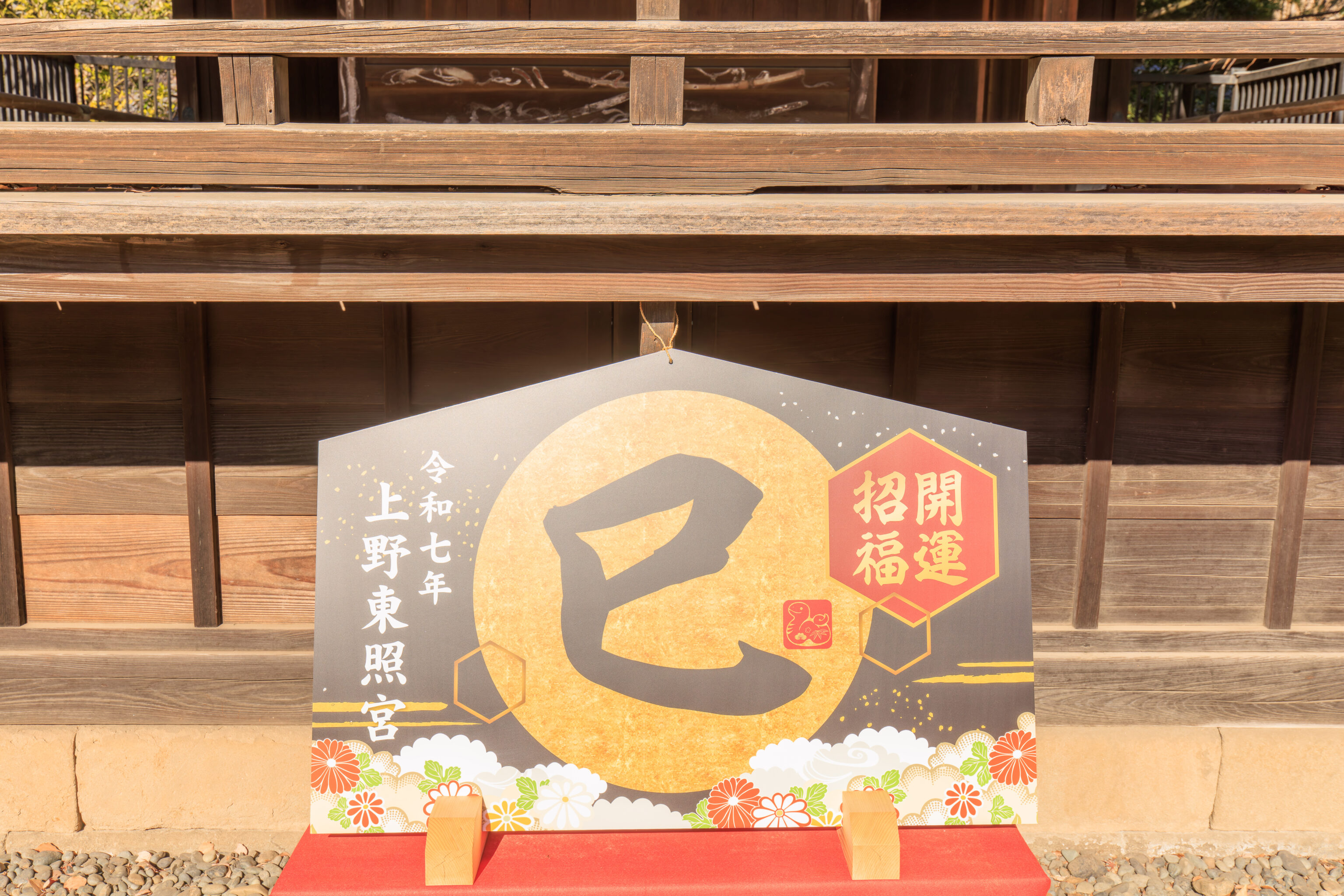
The text on this ema reads, from left to right:
Ueno Toshogu Shrine
Reiwa 7
Year of the Snake
Bring good good fortune
In the Japanese calendar, the name of the year is based on the emperor. Reiwa 7 is 2025.
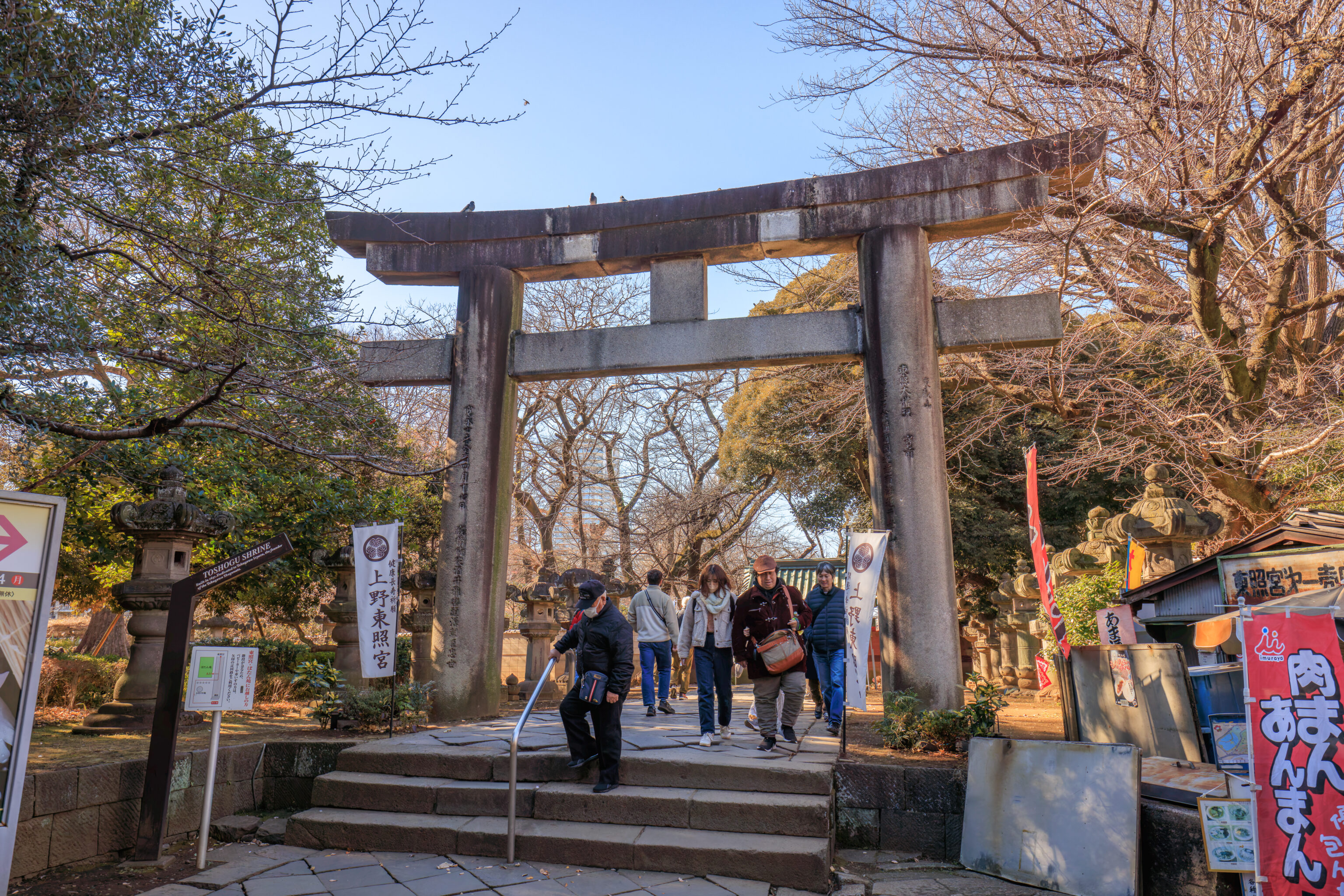
We passed under a torii to exit the shrine.
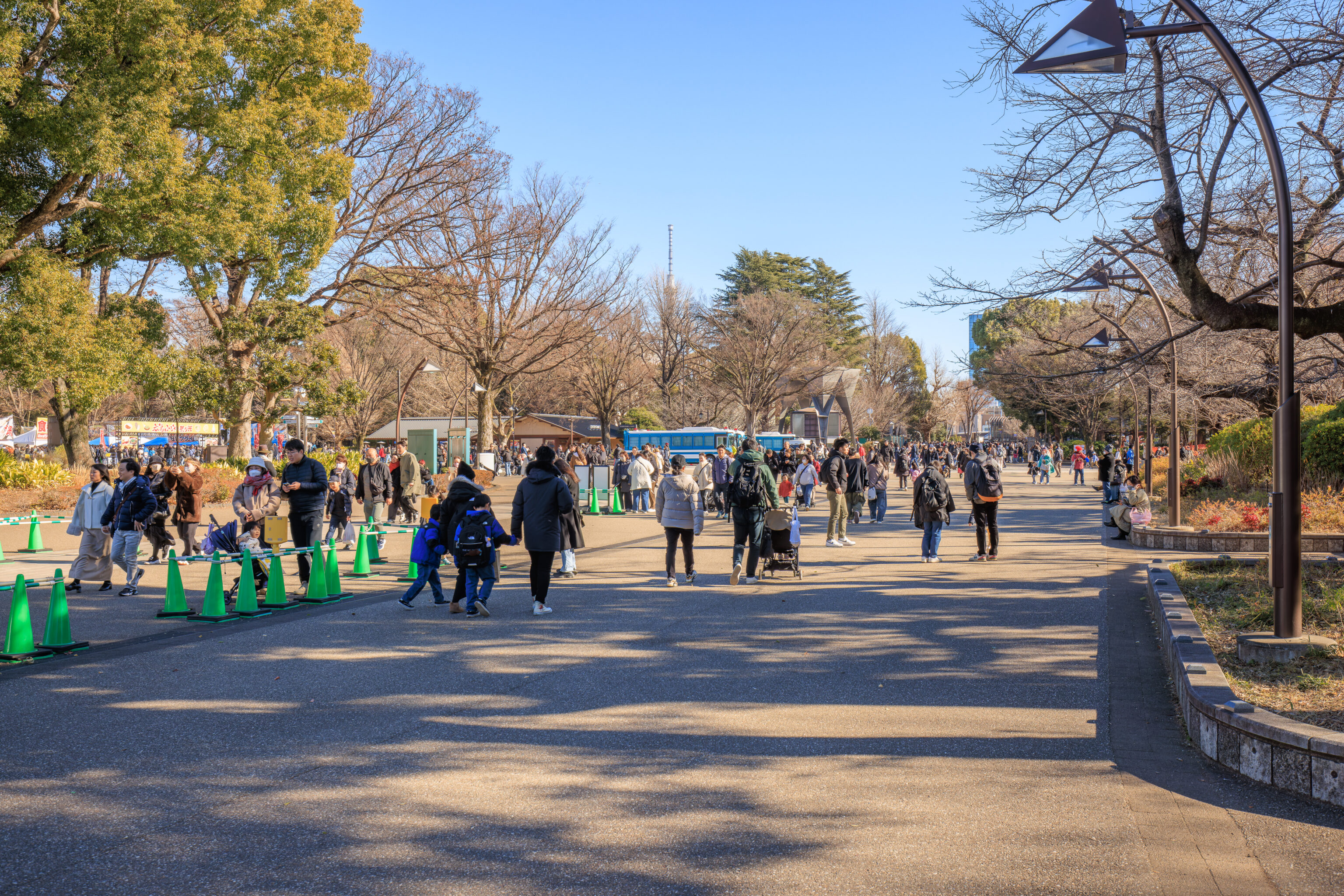
We ended up on a wide path which intersects ahead with the wide path that we walked on earlier.
We came across the Hiroshima Hometown Festival. We didn’t go in as it looked crazily crowded.
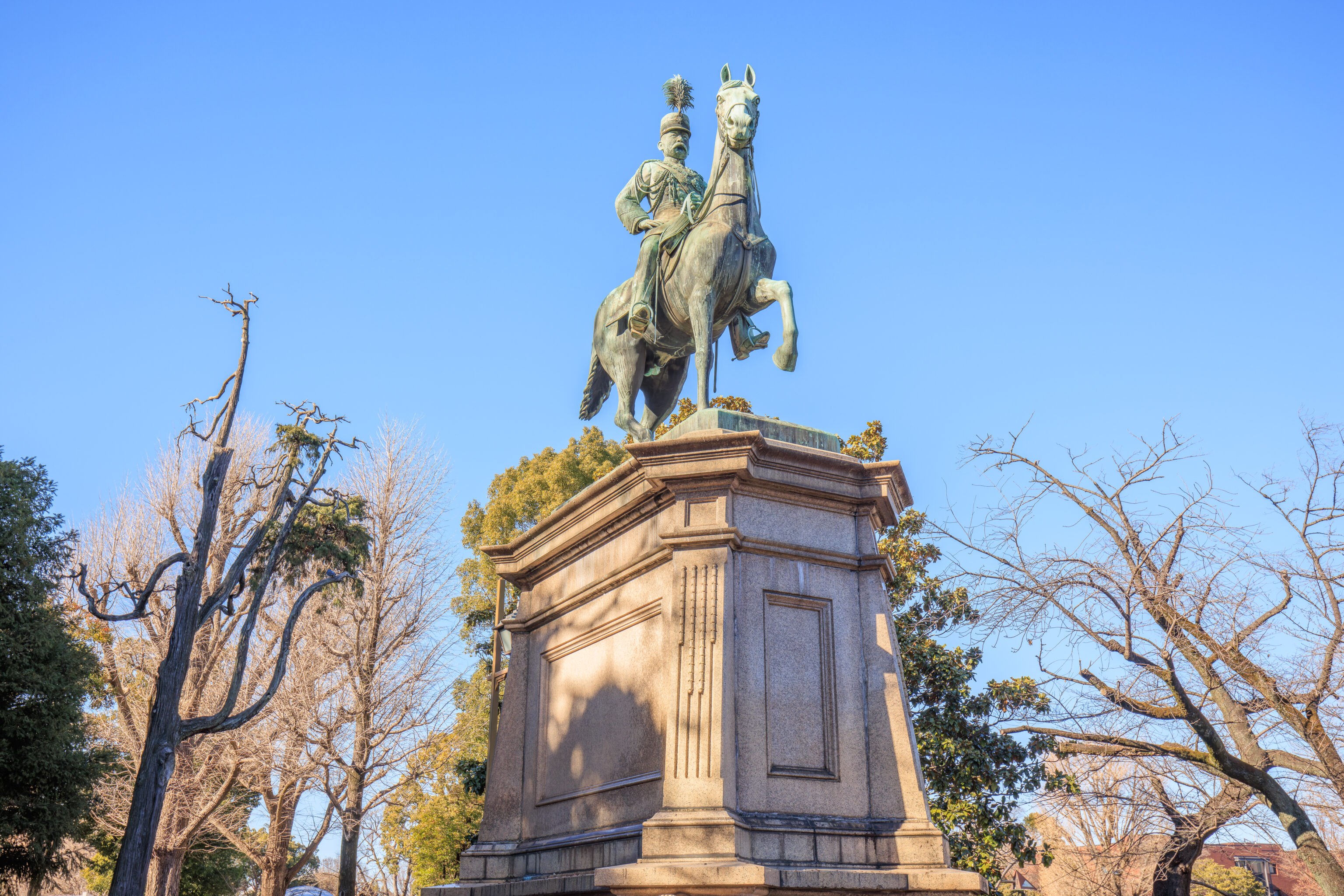
This equestrian statue was nearby. It depicts.
Bronze Statue of Prince Komatsu No Miya Akihito
Ueno Park, Taito City Akihito was the eighth prince of Fushimi No Miya Kuniie. He joined the Toba-Fushimi war in January, 1868 as the commander-in-chief and also took part in the Boshin war. In 1877 he established an organization called "Hakuai-sha" to help the wounded of the Seinan war and headed the association. When it was renamed "Japan Red Cross Society," he assumed office as its president and contributed to the development of the society. He passed away at the age of 58 on the eighteenth February, 1903.
This bronze statue was erected in January 1912. The sculptor was Okuma Ujihiro, Bunten art exhibition judge.
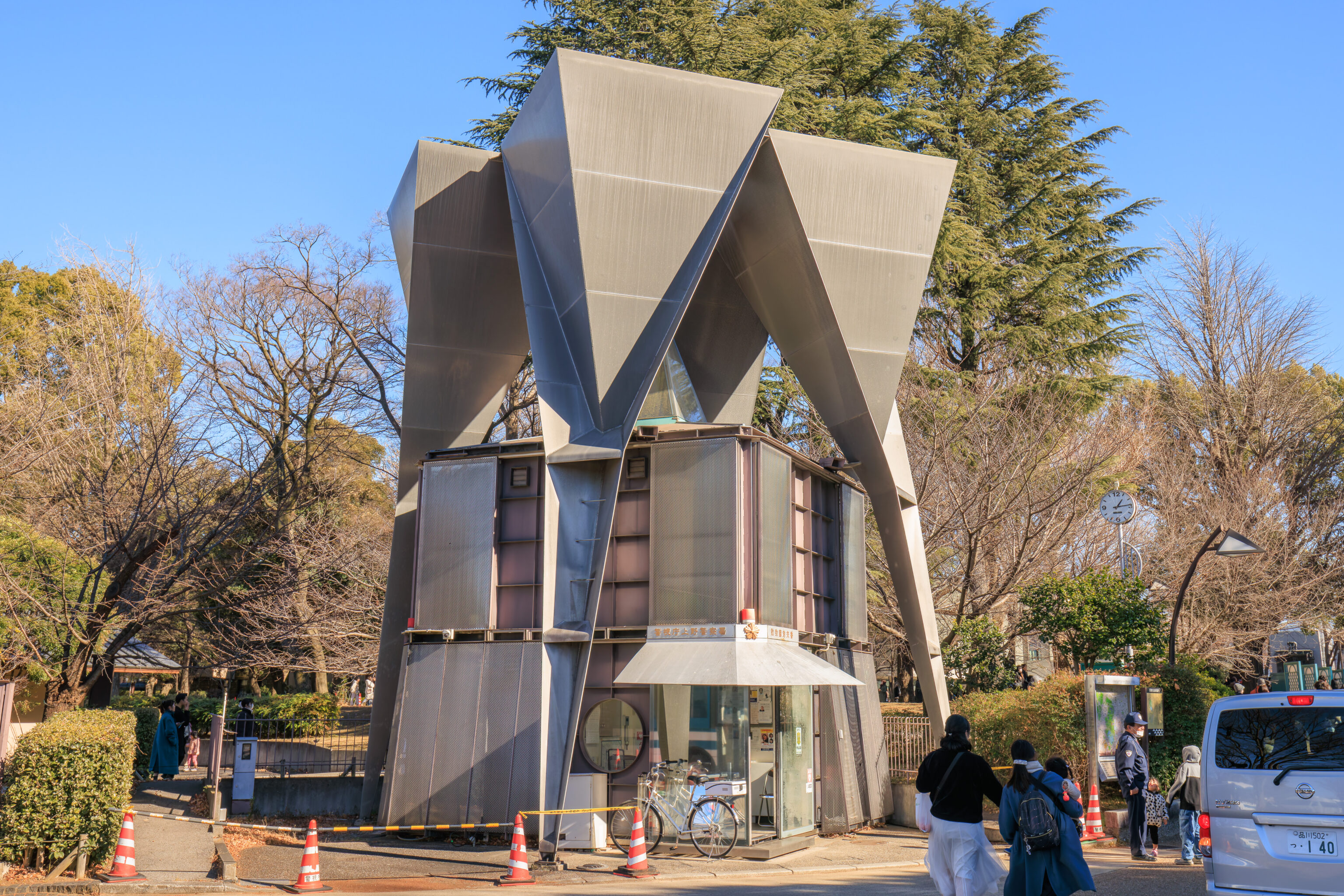
This rather odd modern looking structure is a 交番 Koban! Koban are basically tiny local police stations. They are all over the place in Tokyo, though we’ve ever seen one quite like this before.
We got delayed here for a few minutes while we were trying to get back to Ueno Station. There was a huge crowed and police as well as news media presence. We weren’t sure what was going on but it seemed it was over as they were starting to let people through. We hung back for a few minutes to allow the crowd to dissipate a bit before moving on.
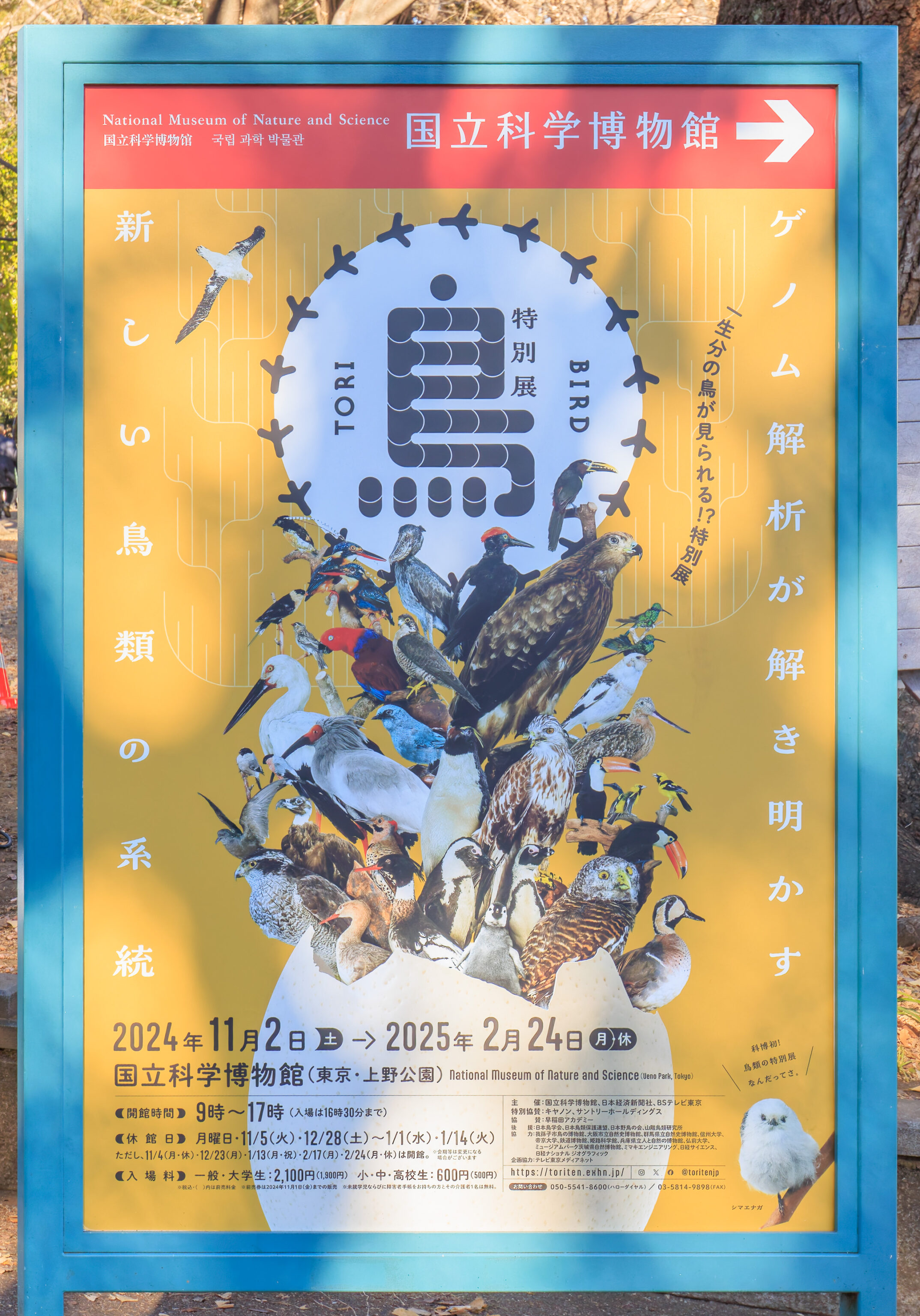
One of the museums here in Ueno Park has an exhibition on birds. There is even a シマエナガ Shima-Enaga (Long-Tailed Tit) at the bottom right corner of the sign! These little birds are something of an unofficial mascot of Hokkaido, where we just flew from yesterday.
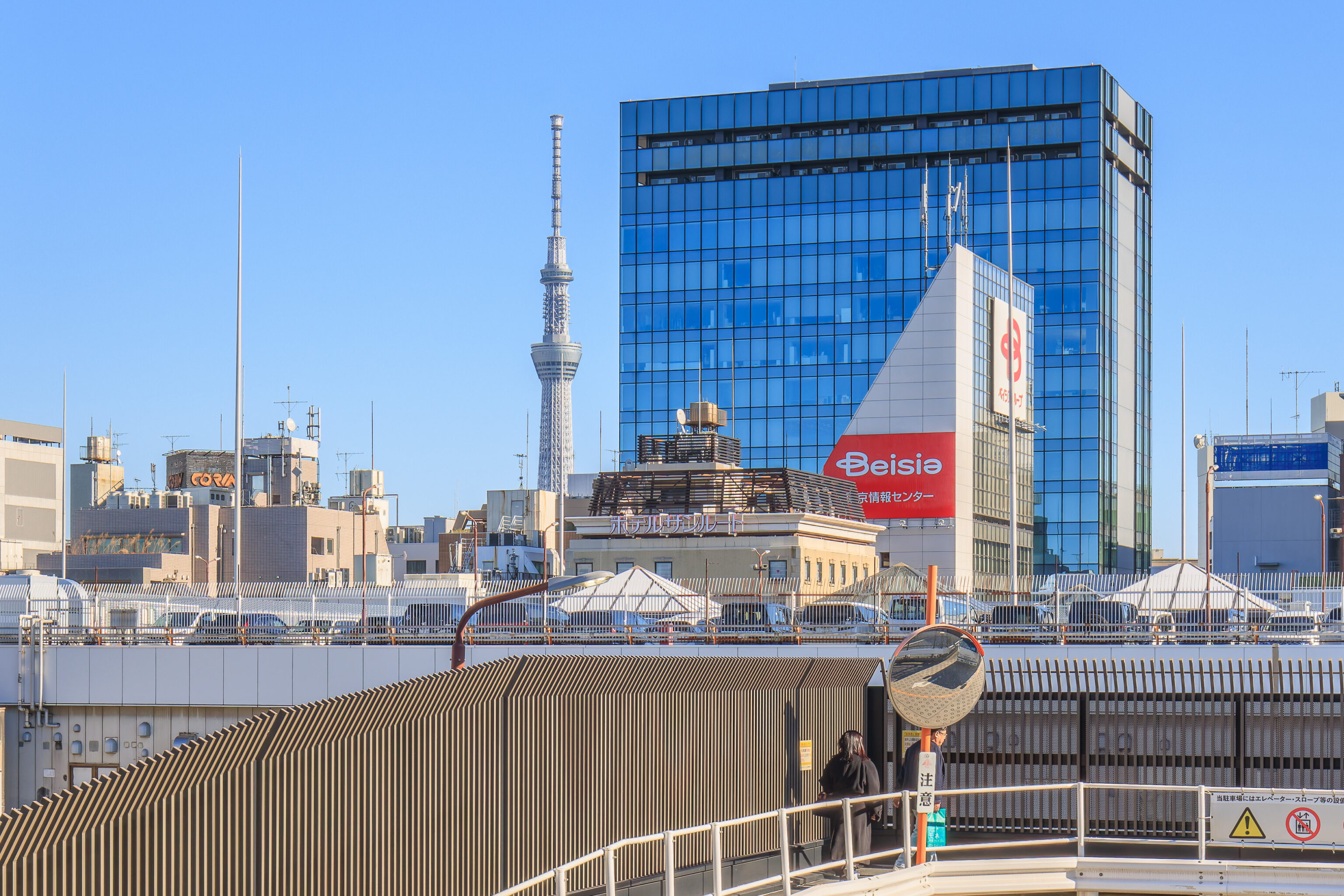
We wanted to go over to 浅草 Asakusa for a late lunch, which meant we needed to try to find the platform for the Ginza Line. It is somewhere on the south side of Ueno Station. We walked by this view of the Tokyo Skytree which is right next to Asakusa.
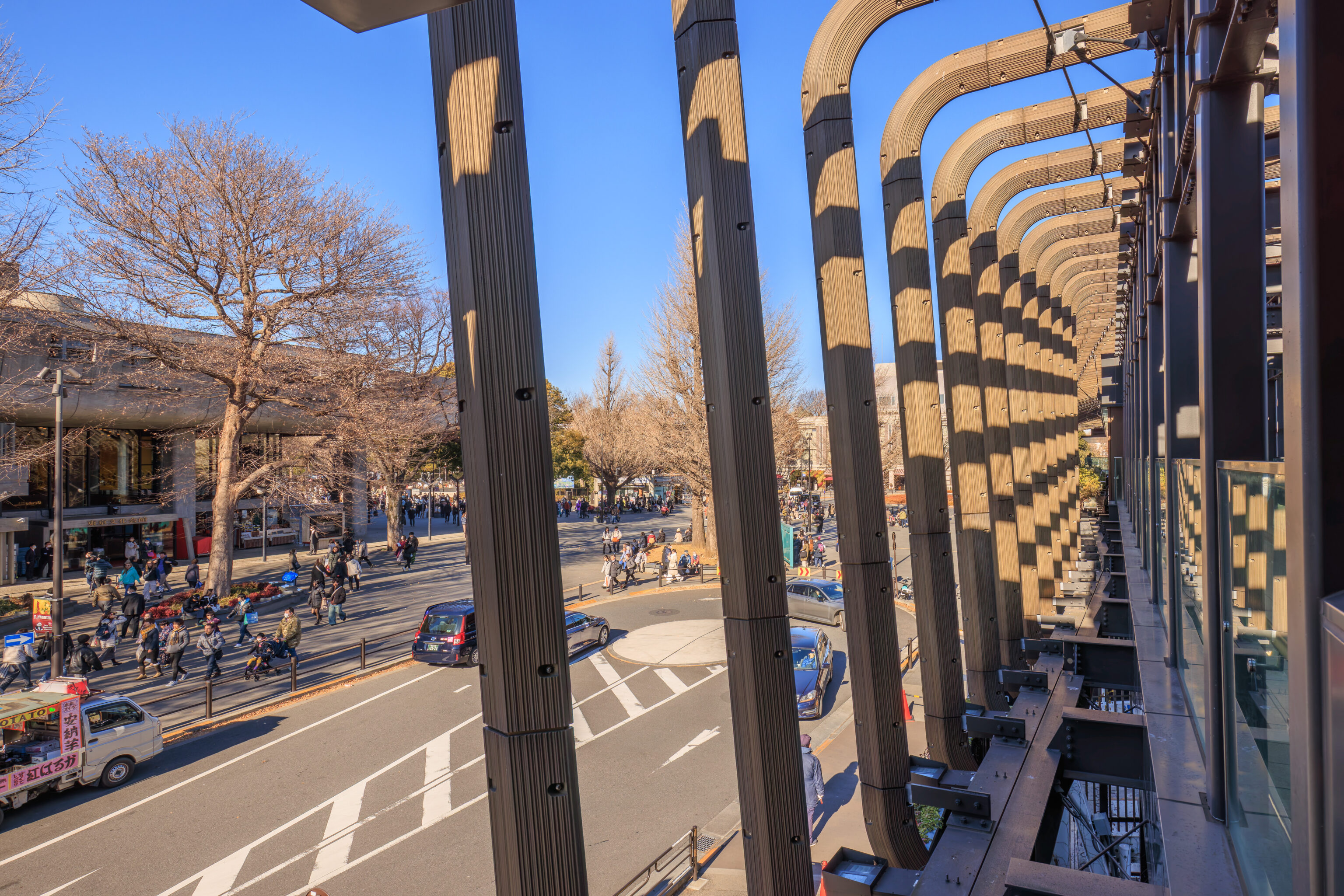
We entered what seemed like a shopping mall attached to the station but it ended up just being a row of restaurants on the side of the station building. We went to the second floor but there was no way to go into the station or to go to the other side.
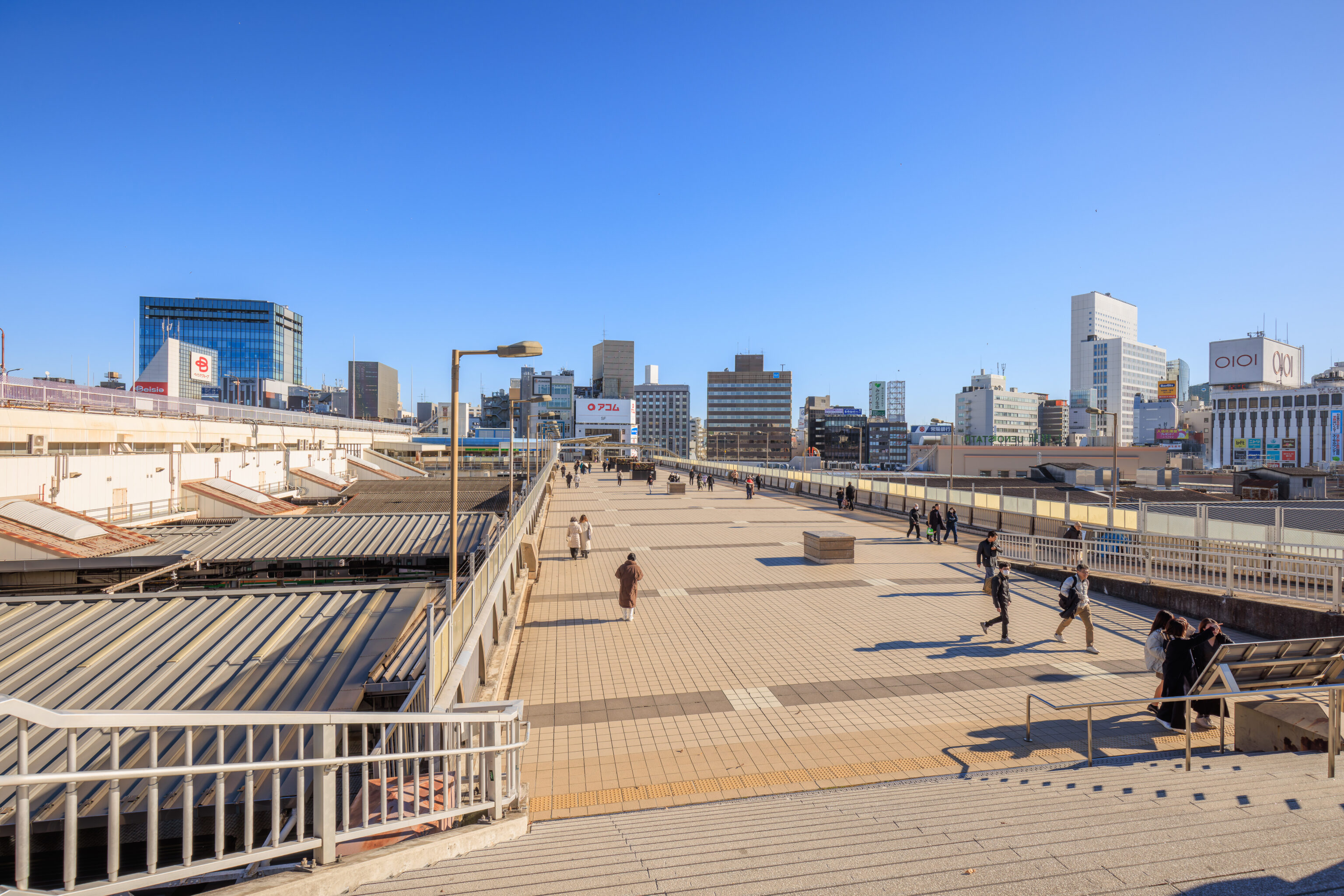
We ended up going south and crossed the Panda Bridge to get to the east side of Ueno Station. Unfortunately trying to navigate around the larger Japanese train stations can be confusing as there are many entrances, not all of which are convenient to every platform.
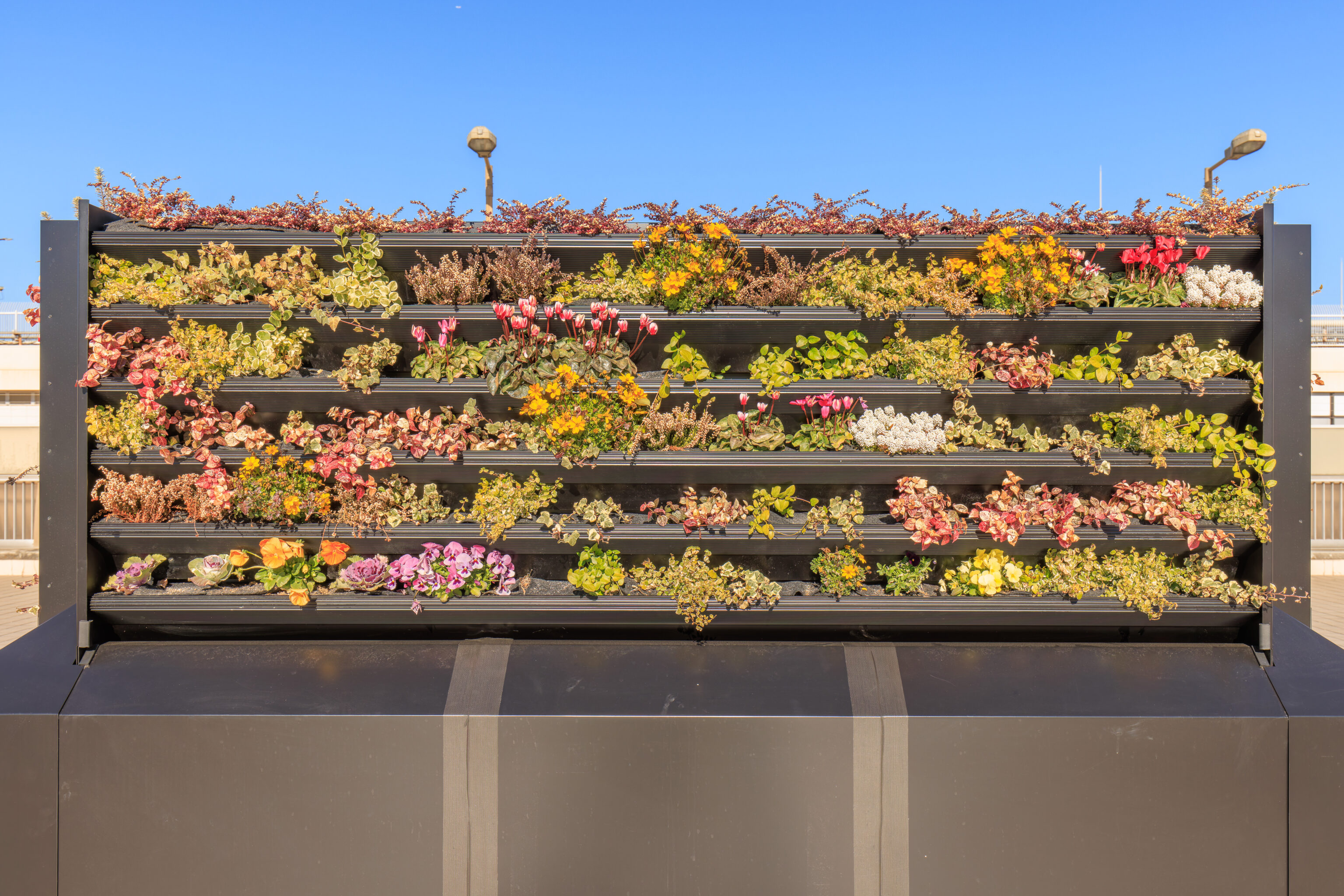
These planters in the middle of the bridge were nice. They may be hiding ventilation equipment or something like that.
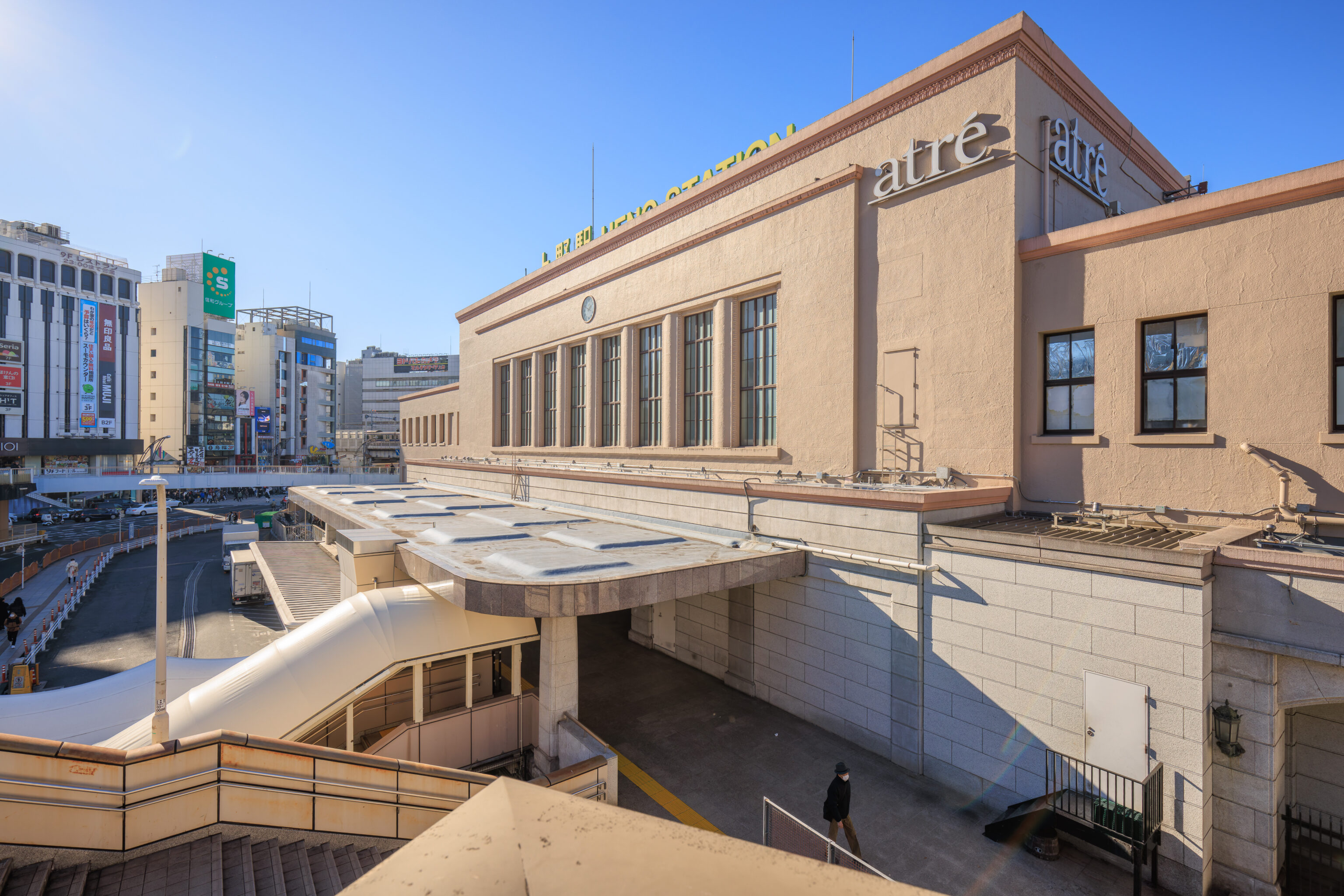
We found Ueno Station’s main building.
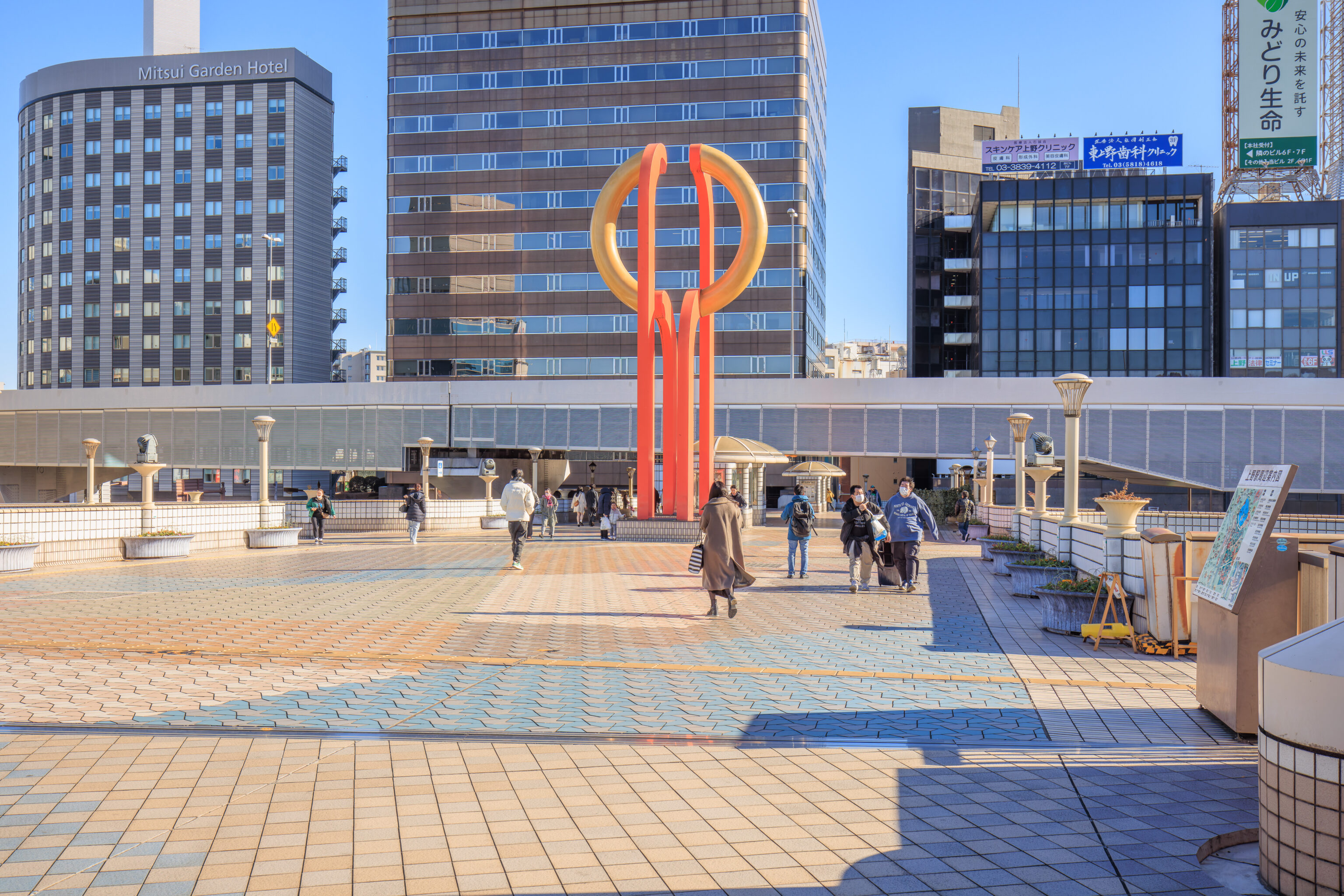
This tall sculpture was nearby.
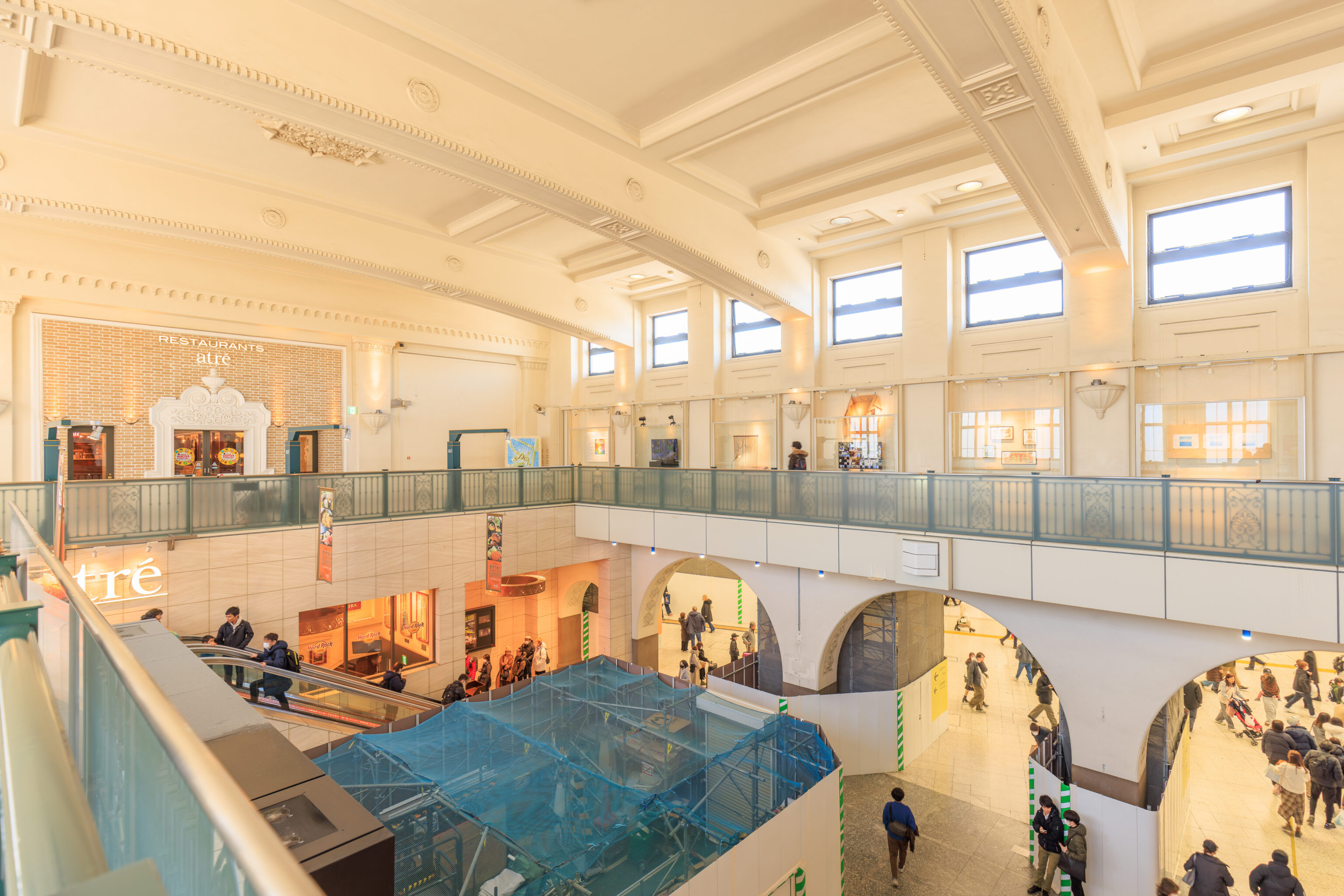
We went into the station building, which contains an アトレ Atré shopping mall, via a side entrance. The entrance into the actual train station is on the floor below.
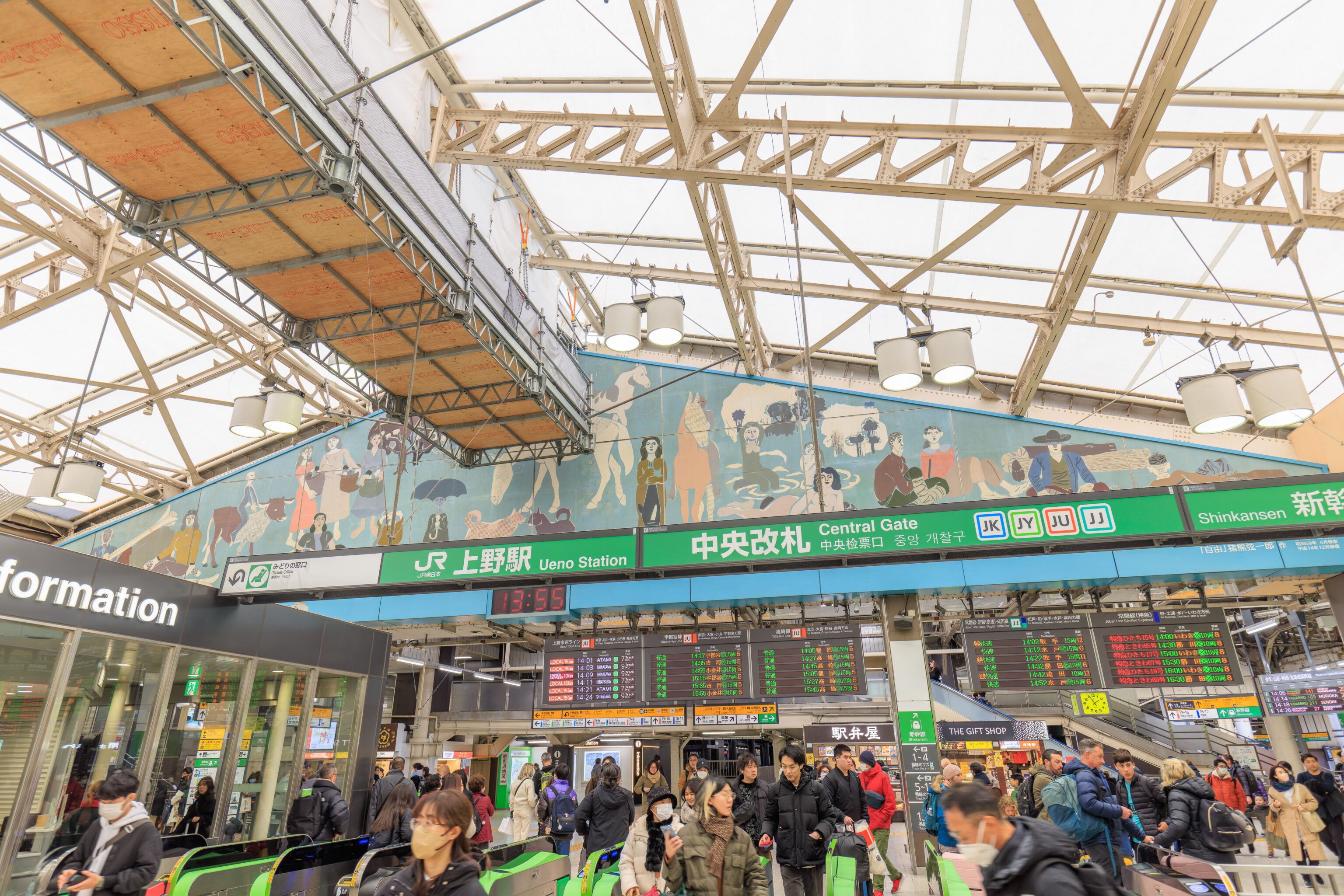
So, we were now in the JR station. Now we had to find and follow the signs for the Ginza Line, which is not JR.
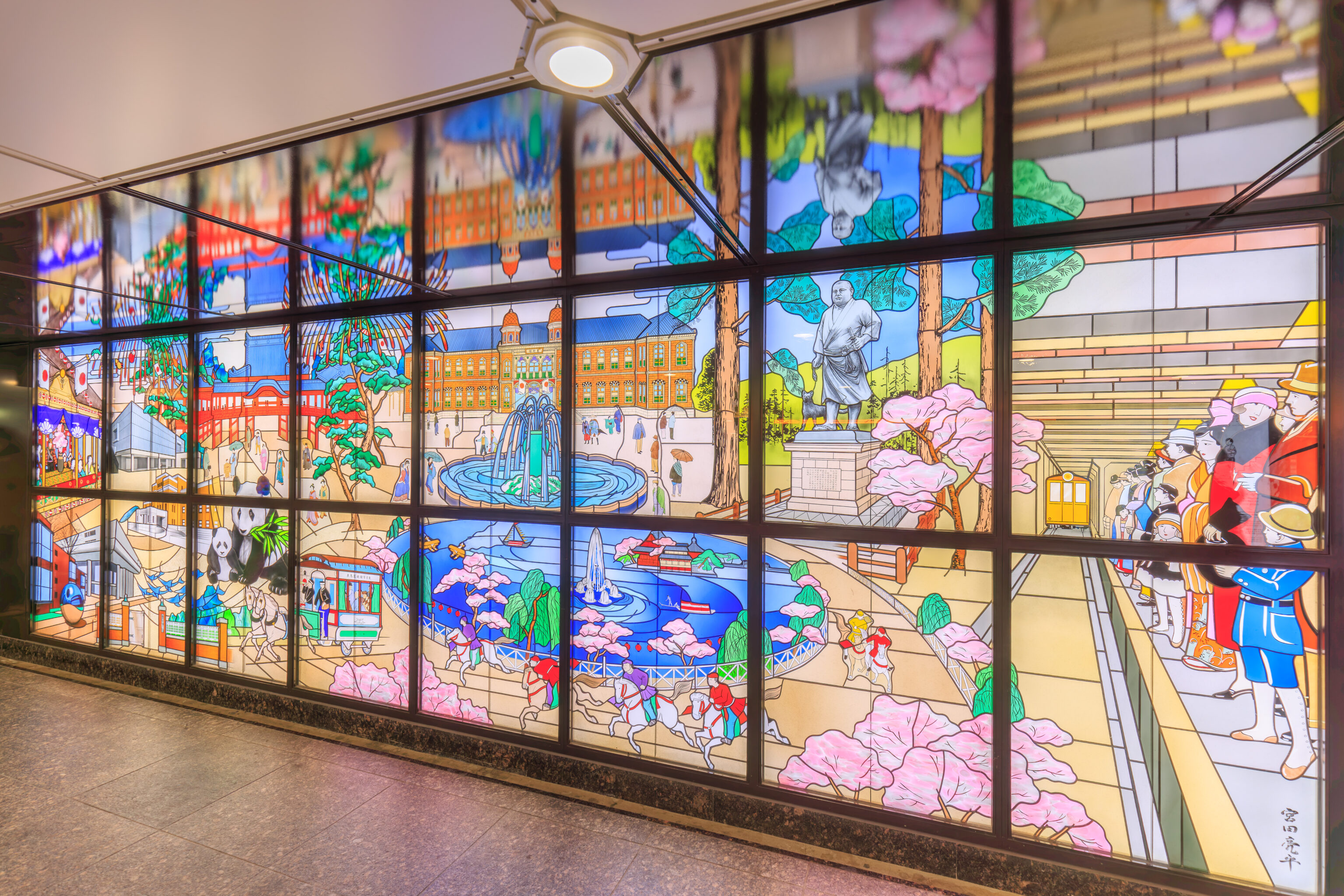
We walked by this beautiful stained glass art depicting Ueno. A small plaque describes this artwork:
Sponsorship
Metro Cultural Foundation
Ueno Konjaku Monogatari
MIYATA Ryohei
During the Edo Period, the area surrounding Ueno prospered as a town revolving around the Shogun's family temple "Kanei-ji Temple". With the waves of modernization, civilization, and enlightenment, the National Industrial Exhibition and the Benten Horse Race around Shinobazu Pond were held in the bountiful forest of Ueno. The area became a place where people gathered to enjoy.
Horsecars and city trams were running in the town, and the first underground railway in the Orient, the Tokyo Underground Railway (currently the Tokyo Metro Giriza Line) between Ueno and Asakusa, opened in 1927, Even though the train was just one car long and the riding time was only 5 minutes, people waited on long lines and overflowed on the platform. From that time on, many cultural facilities have been built and Ueno has become a hub of Japanese culture.
Please enjoy spending some time in past and present Ueno in this stained glass.
Sponsorship
Metro Cultural Foundation
Design and Supervision
MIYATA Ryohei
Stained Glass
CREARE Atami Yugawara Studio
Asakusa
Having found the Ginza Line, we took the subway two stops to 田原町駅 Tawaramachi Station, which is at the edge of the Asakusa neighborhood.
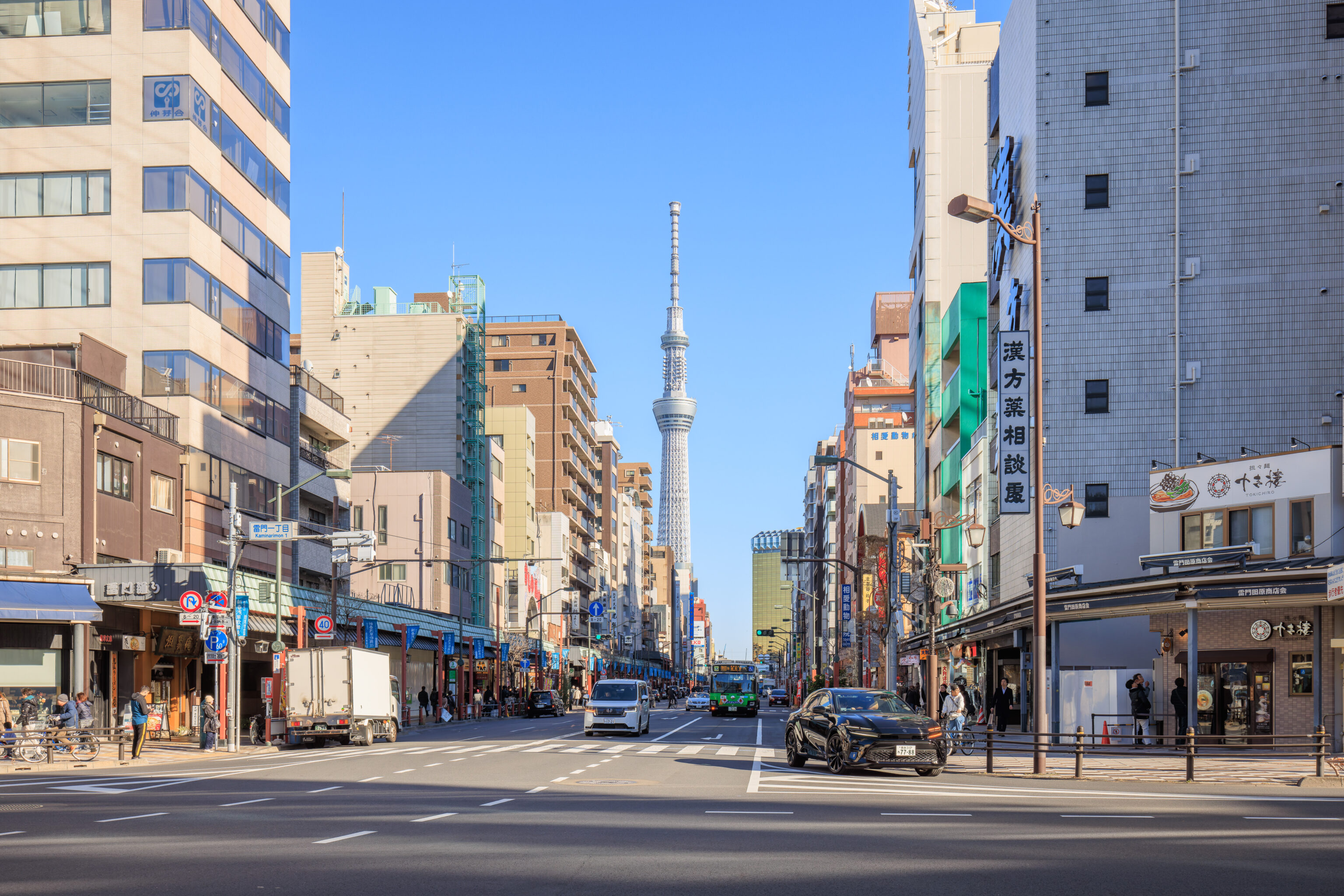
We could see the Tokyo Skytree once we returned to the surface. We wanted to try Kura, a large kaiten sushi chain. Part of the reason for wanting to try the restaurant is that they are starting to open locations in the US. Their restaurant here in Asakusa is a “Global Flagship Store” and opened in 2020. We saw some pictures of the restaurant online and it looked quite open and impressive.
It took us a bit to find the restaurant, eventually figuring out it was inside of ROX, a shopping mall building that looked, well, not upscale. The restaurant has an electronic queuing system. We went in and got a number. We later found out that you can queue online as well, and the options seemed a little different. So, we joined that queue too.
There was quite a long wait expected so we decided to walk around the area a bit.
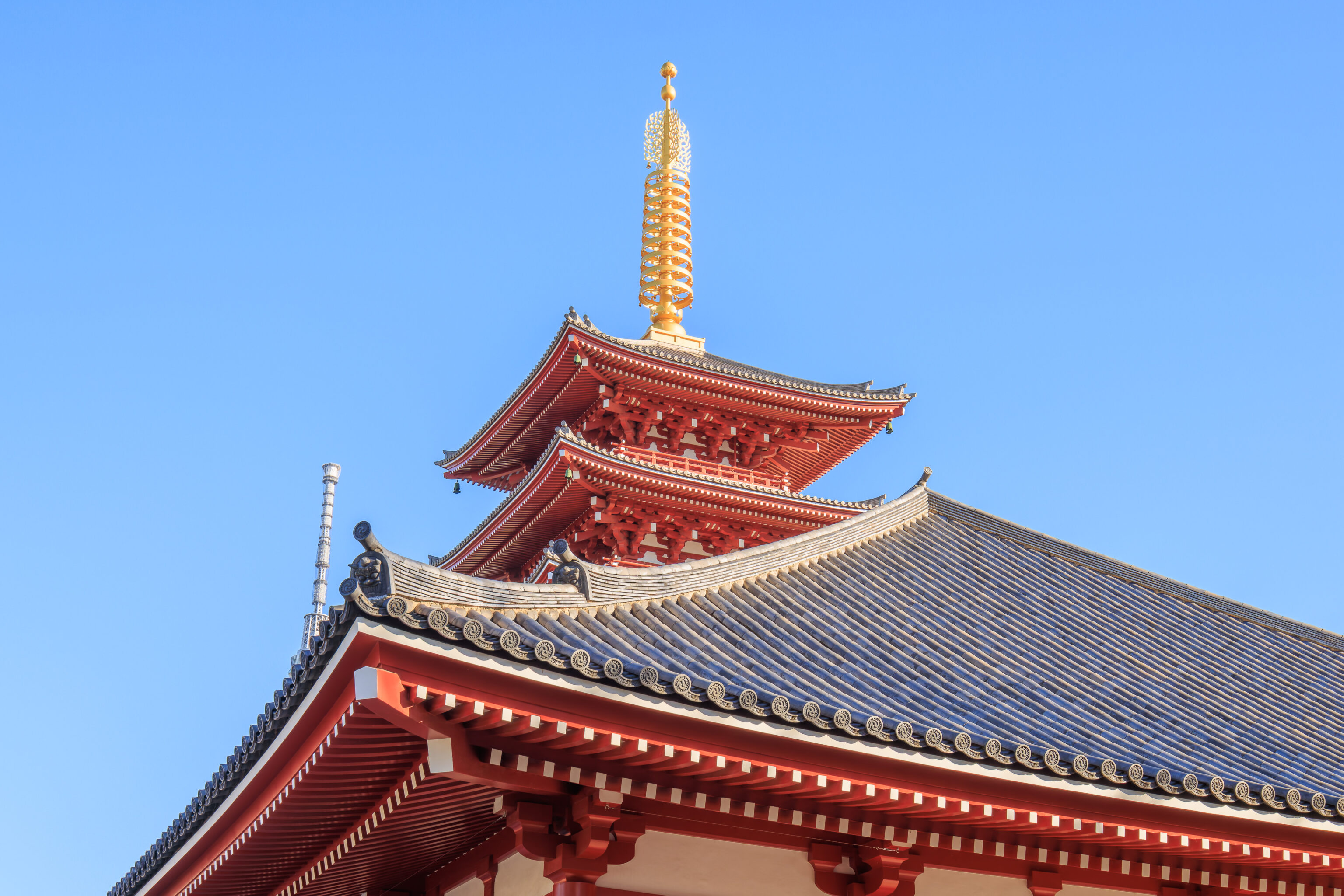
We ended up by the famous 浅草寺 Senso-ji, one of the busiest temples in Japan. We last visited the temple here in 2019. We have been in the area since then, but haven’t been back to Senso-ji.
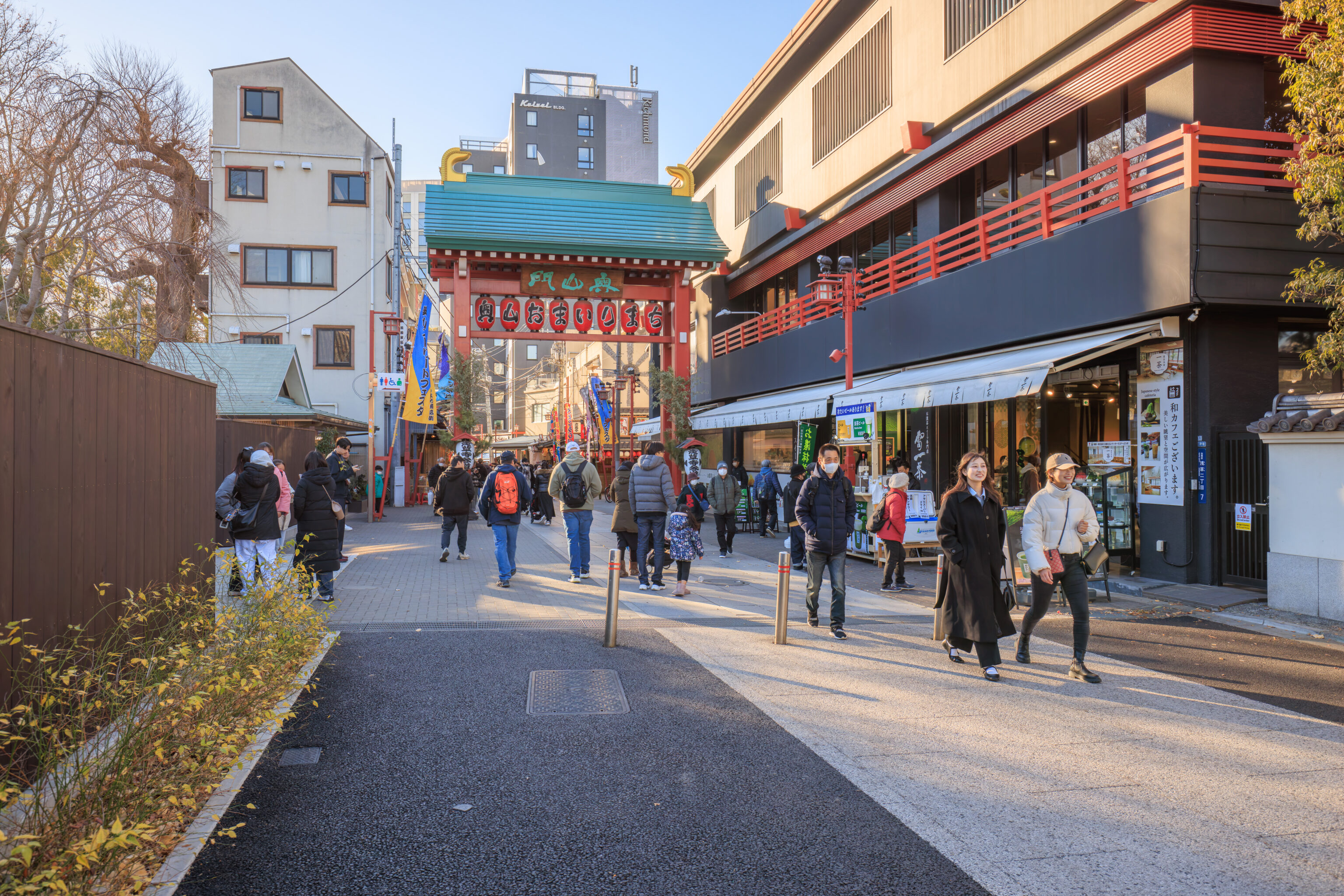
Looking back at the gate that we entered by. It is on the west side of the temple grounds rather than the main entrance to the south.

A spire atop a temple structure and something more modern behind it.
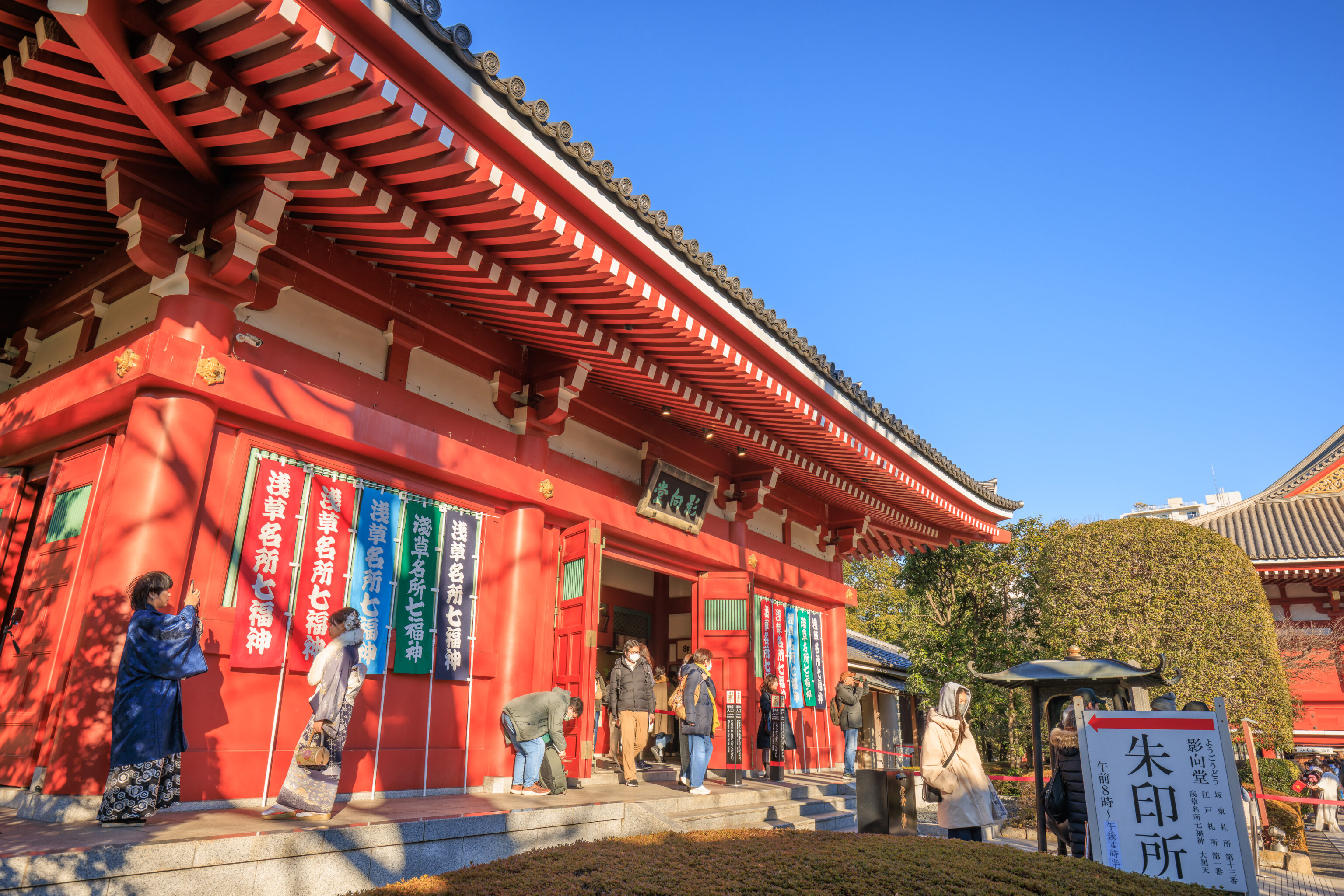
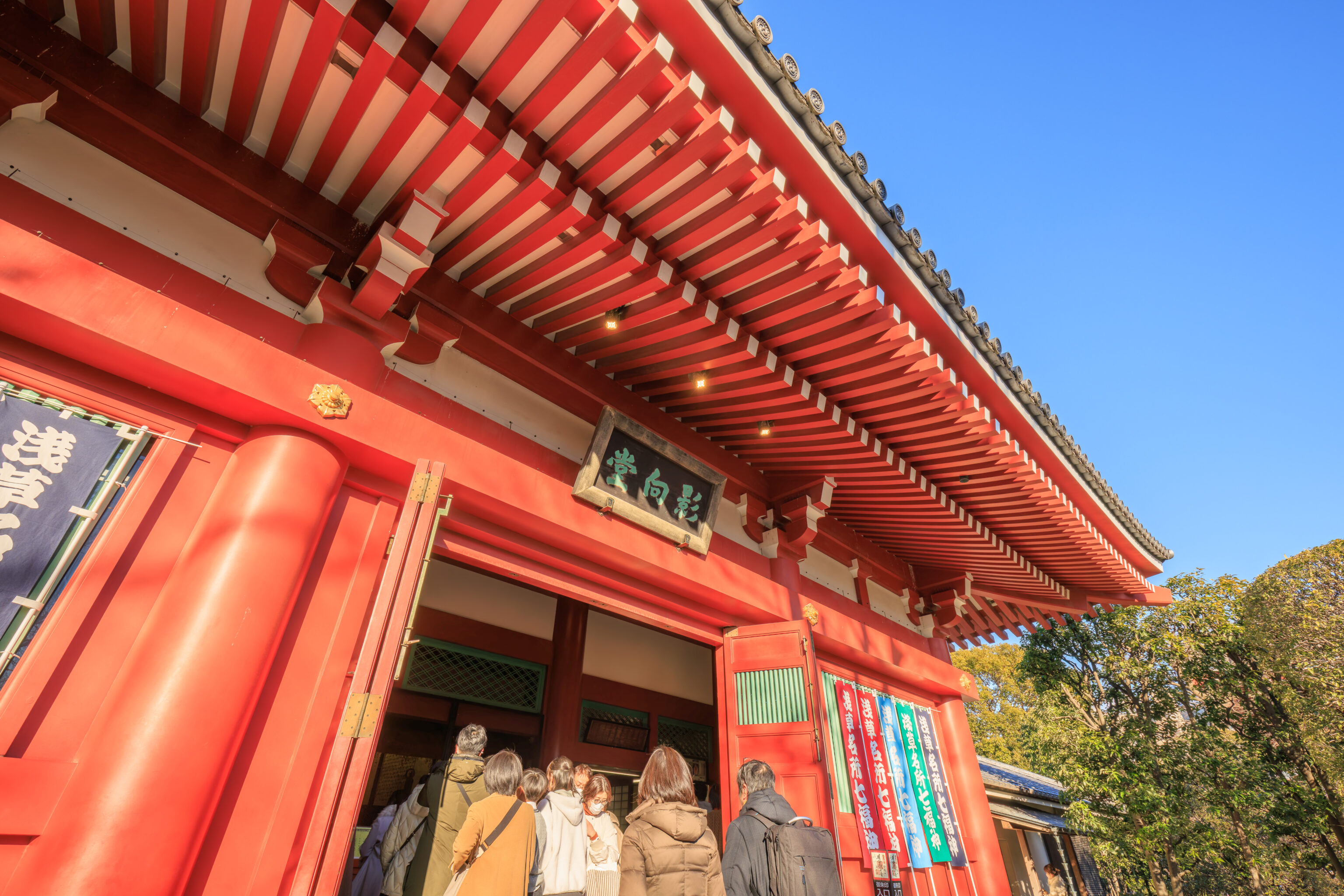
This building is the 影向堂 Yogo-do (Shadow Hall).
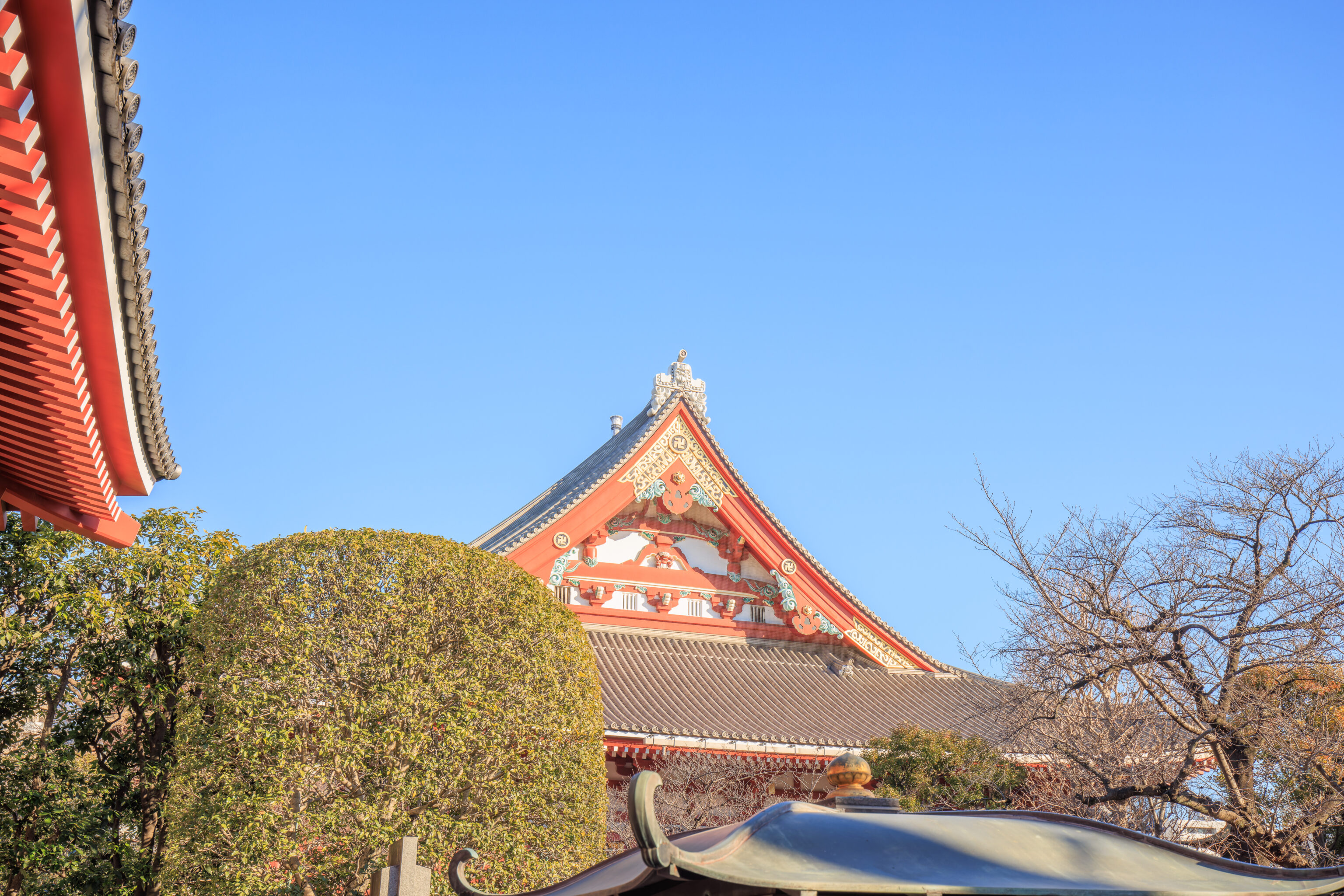
The larger main hall is ahead.
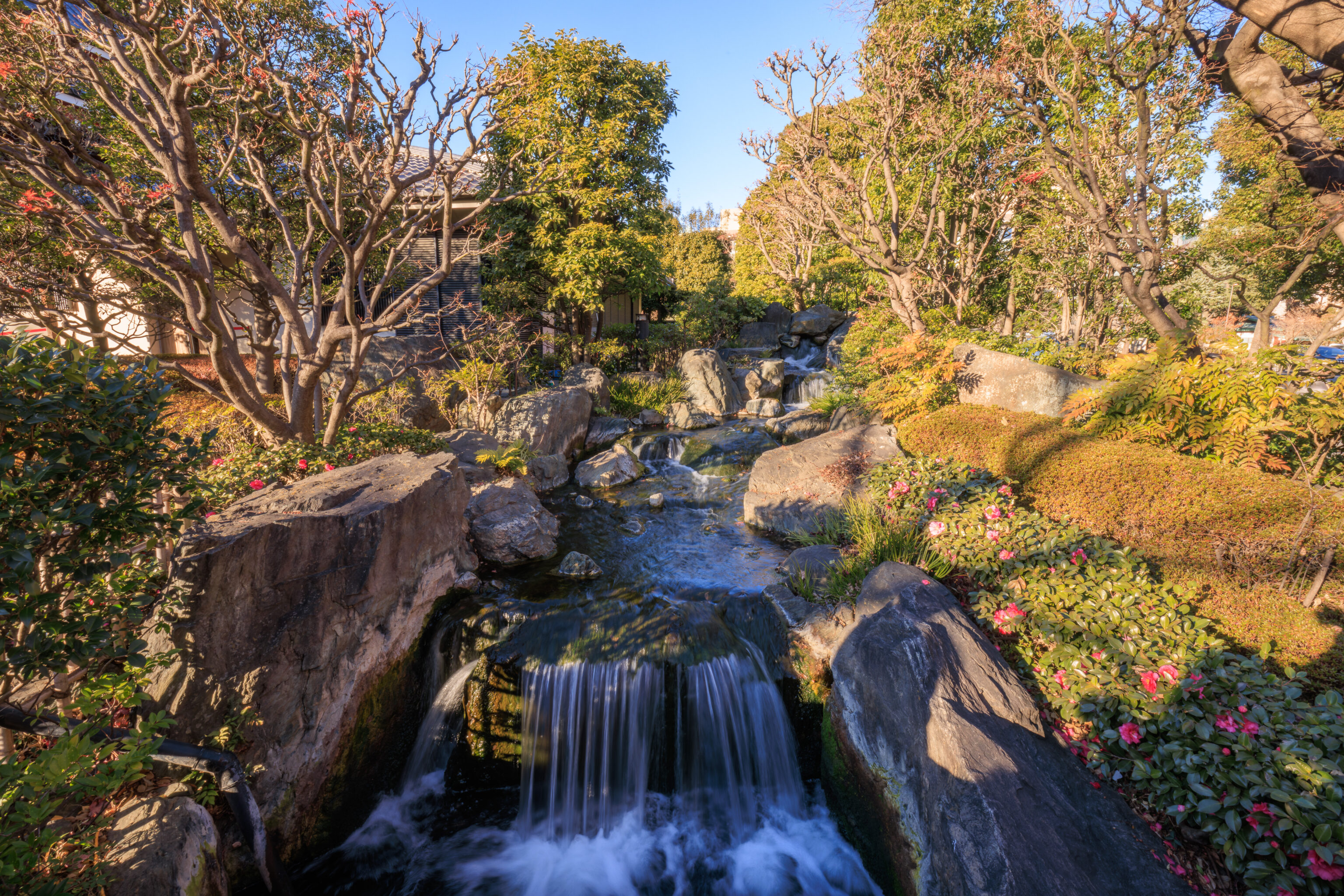
We walked by a small stream with cascading water.
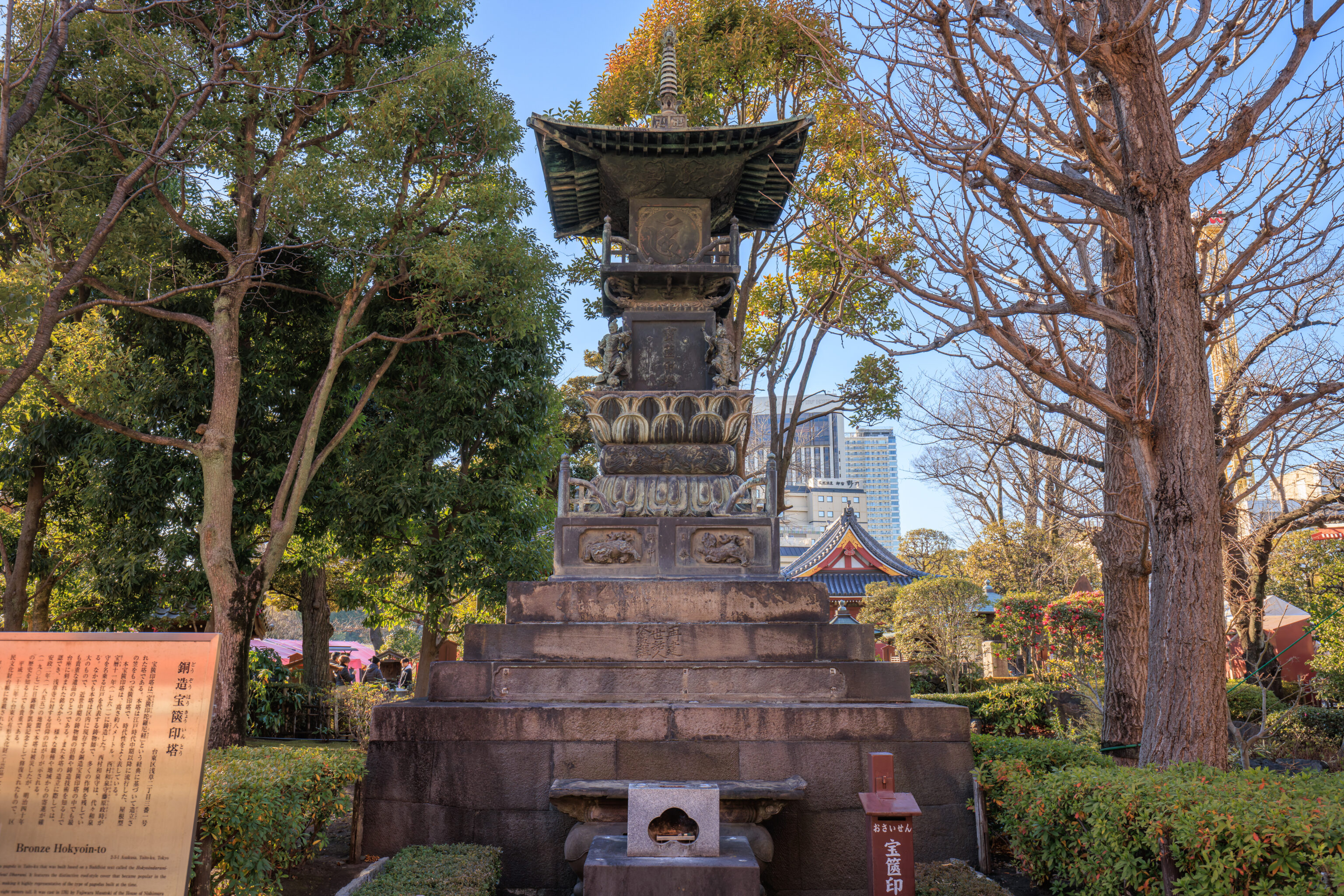
This structure, sitting atop a stone base, is described as a bronze pavilion on the sign to the left:
Bronze Hokyoin-to
2-3-1 Asakusa. Taito-ku, Tokyo
The bronze hokyoin-to is a pagoda in Taito-ku that was built based on a Buddhist text called the Hokyoindarani kyo, or Sutra of Casket Seal Dharani. It features the distinctive roof-style cover that became popular in the latter half of the Edo period, making it highly representative of the type of pagodas built at the time.
This pagoda stands roughly eight meters tall. It was cast in 1761 by Fujiwara Masatoki of the House of Nishimura Izuminokami, a clan that served for generations as master casters of the Edo period. Many extant specimens of cast artifacts and structures are attributed to this clan. This pagoda is the largest bronze hokyoin-to left in Taito-ku. It is also invaluable as a historical artifact as it provides insight into the work of casters and casting techniques in the early modern era. In addition, the inscription on the pedestal offers information on the range of occupations and areas of residence of the people who gave donations toward the construction of the pagoda, which in turn tells us about the extent of devotion to the Senso-ji Temple.
The pagoda was damaged during an earthquake in 1855. but was restored in 1907 to commemorate Japan's victory in the Russo-Japanese War. The pagoda is a monument that offers unique insight into the history of Taito-ku.
This bronze pagoda was included under handicrafts in the list of tangible cultural properties of Taito-ku in 2011.
March 2012
Taito-ku Board of Education
Taito-ku, which also includes Ueno, seems to have many of these nice signs that were placed by the Board of Education.
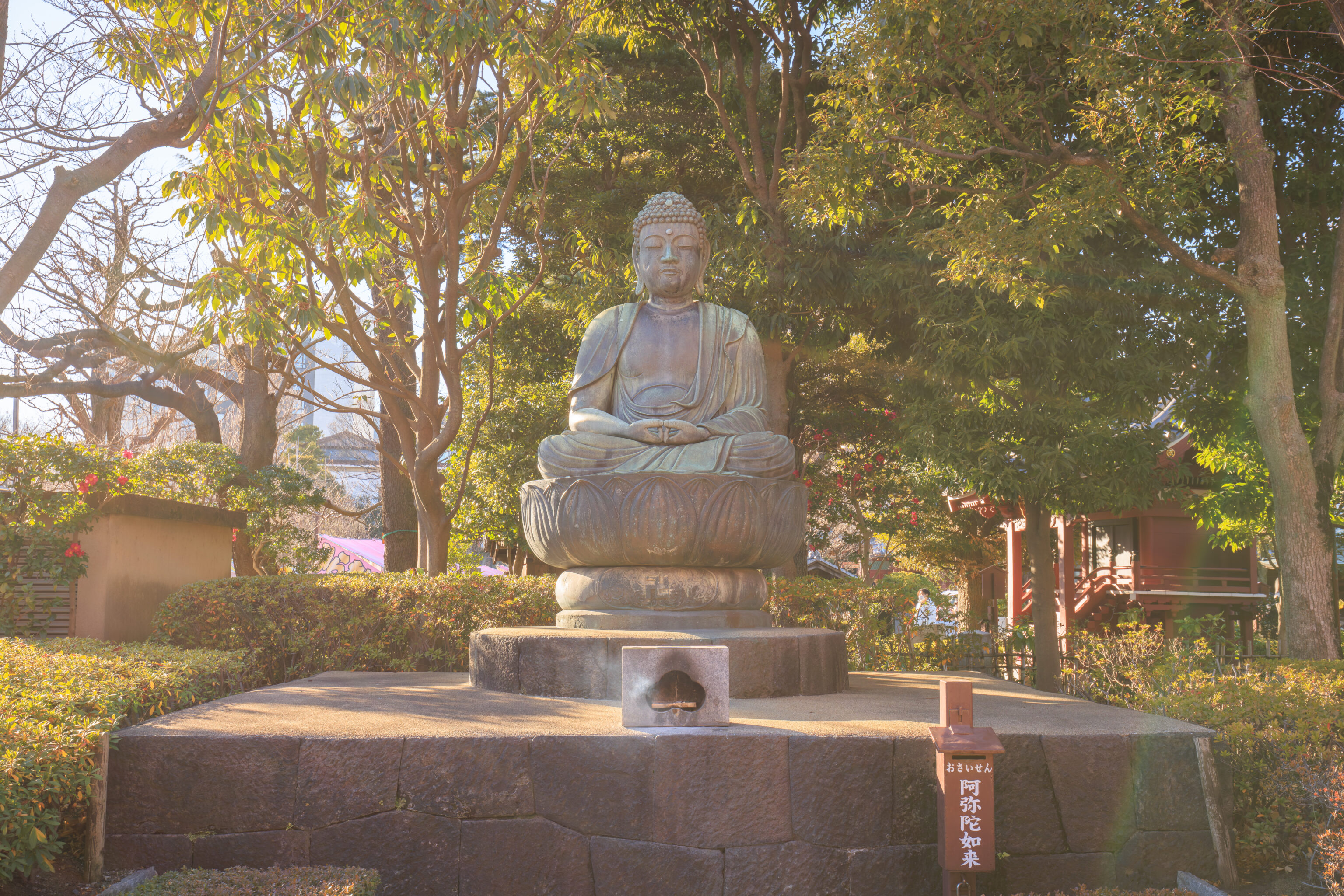
This statue was created in 1693. A sign provides a description:
Bronze Seated Amida Nyorai Statue (Designated Taito City Tangible Cultural Property)
Senso-ji Temple, 2-3-1 Asakusa, Taito City
Amida Nyorai is the Buddha who teaches Buddhism to those who have passed away and attained rebirth in the Pure Land, the Western
Paradise of Ultimate Bliss. The copper statue was made by casting. The total height is 294.5 cm, and the height of the statue is. 186.0 cm. The inscription on the pedestal of this statue indicates the year of its creation, the person who dedicated it, and the creator. According to the inscription, Shukai of Risho-in Temple requested the creation of this statue in April 1673, and metal caster Imai Touro Funwara no Yoshitsugu made it. Later, in June 1702, the statues of the two flanking attendants (Kannon and Seishij were completed, torming the statues of the Amitabha triad (the statues of the attendants no longer exist, except for the pedestal for the Seishi Bodhisattva statue). When this statue was being constructed, the petitioner Shukai, a priest from Asakusa-Sangen-cho (now the area around Komagata 1-chome, Kaminarimon 1 and 2-chome, and Kotobuki 4-chome), solicited people in the area to form an affinity with Buddha. Many of the people who joined were townspeople, and their occupations varied from craftsman to merchant. In addition, since practitioners of Nembutsu (recitation of the name of Amitabha) and Nembutsu kochu (a group of believers who practice Nembutsu) were involved, it is thought that Nembutsu kochu cooperated with Shukai's solicitation activities and that people joined through community ties. This statue is a valuable resource for understanding the beliefs and religious activities of people in the early Edo period from the 17th century to the first half of the 18th century.
The creator of this statue, Imai Tojiro Fujiwara no Yoshitsugu, was a metal caster in Kanda Kaji-cho 2-chome (now Chiyoda City). There are no known examples of his works aside from this statue. This statue thus serves as a standard example for studying Imai Tojiro's crafting activities, and is also valuable for deepening our knowledge about the crafting style of metal casters in the Edo period. In March 2012, it was recorded in the Taito City Citizens' Cultural Property Register as a Designated Taito City Tangible Cultural Property (Sculpture).
March 2021
Taito City Board of Education
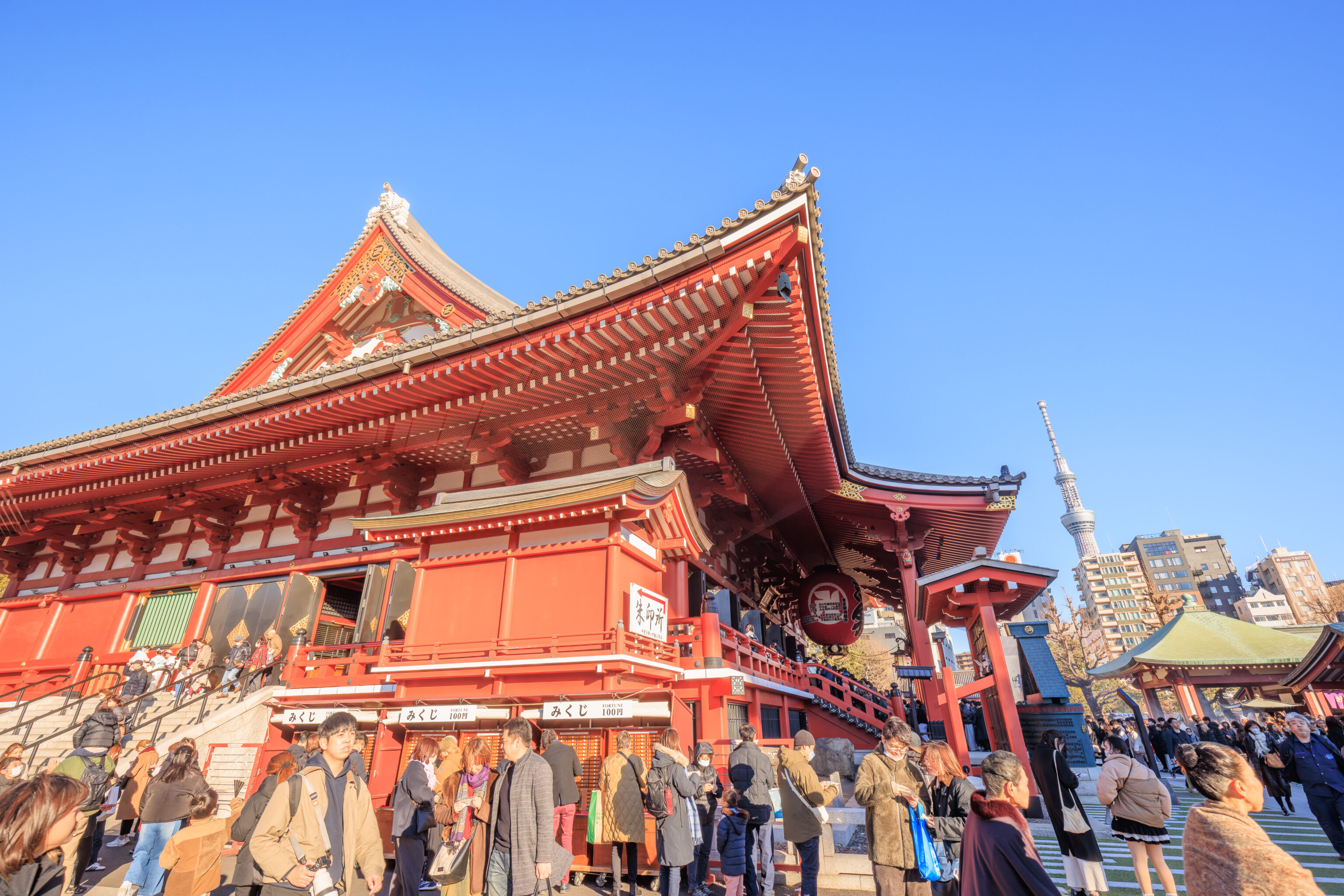
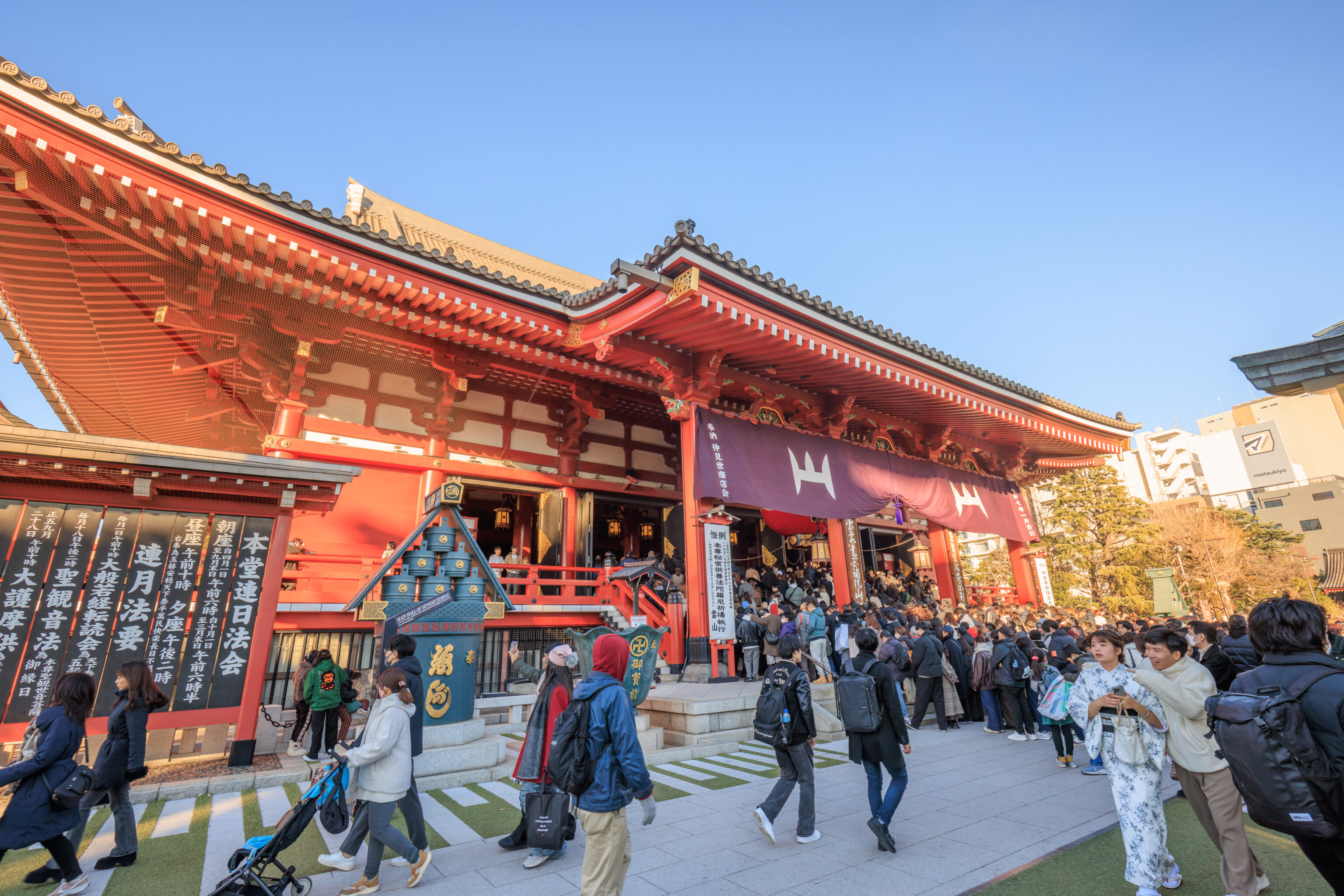
The temple’s main hall is huge and extremely busy. We managed to find a place to sit near the southwest corner for awhile.
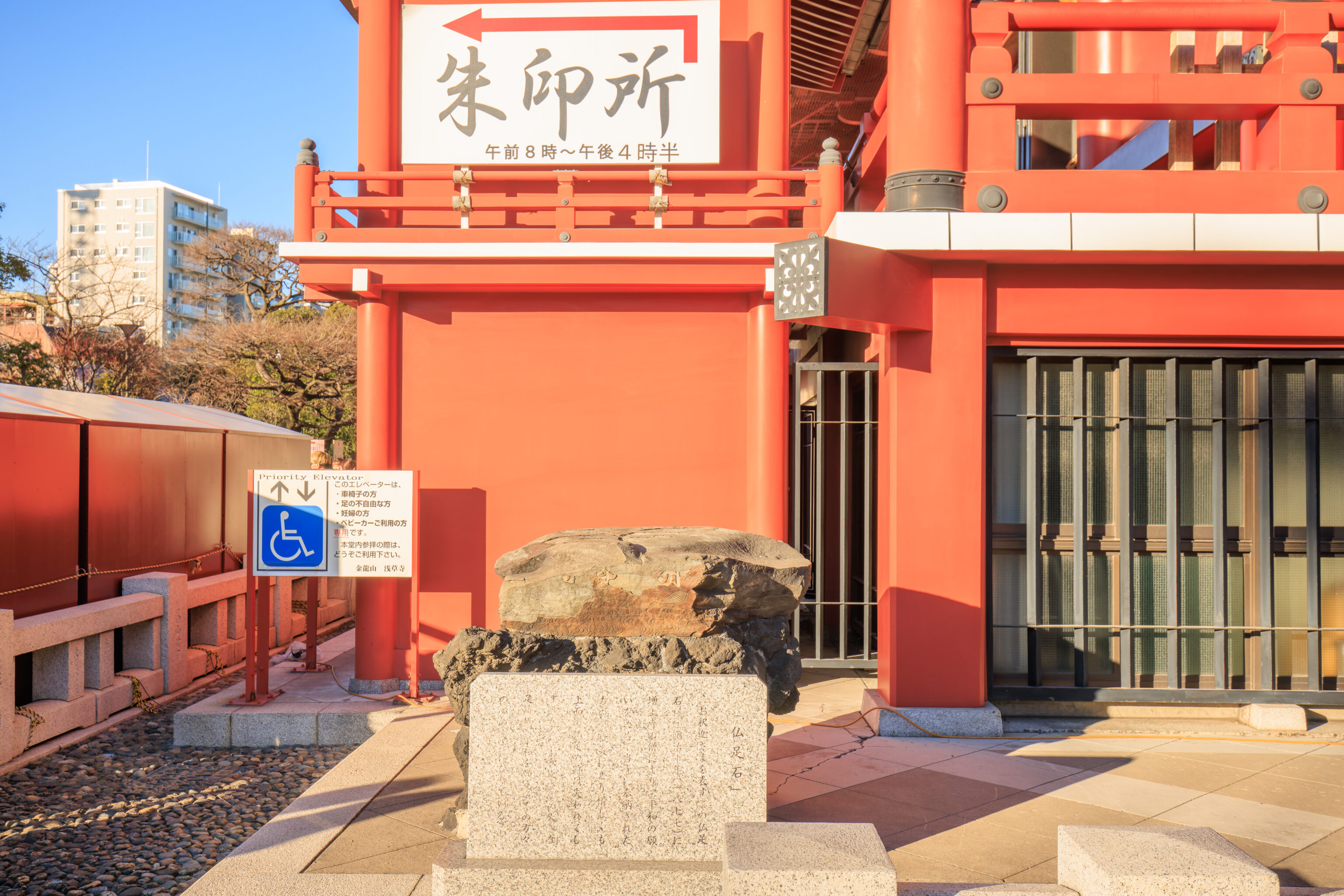
This is a stone of Buddha’s feet. Unfortunately, its hard to see from this perspective and there is no way to get closer.
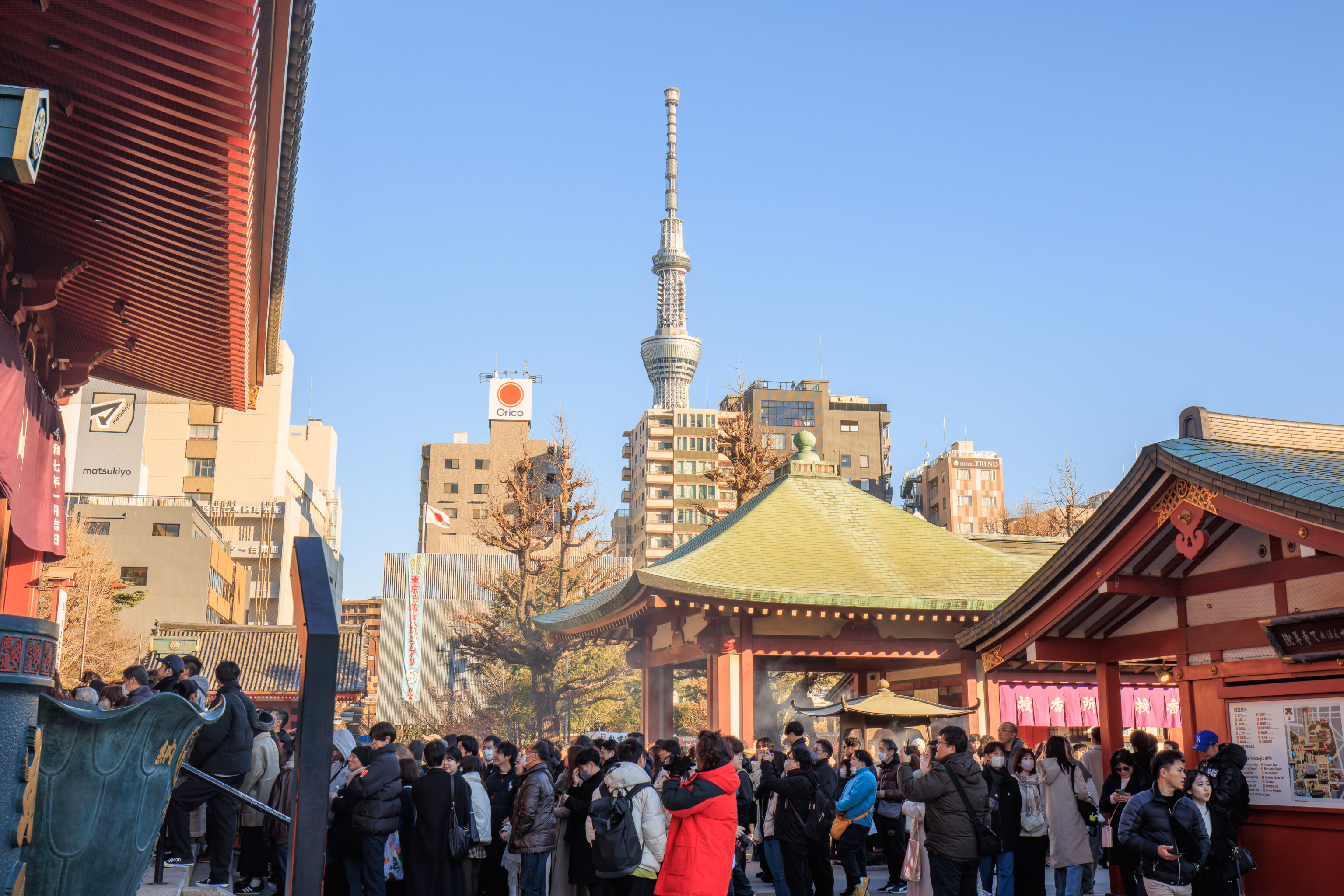
The crowd in front of the main hall with the Tokyo Skytree in the background.
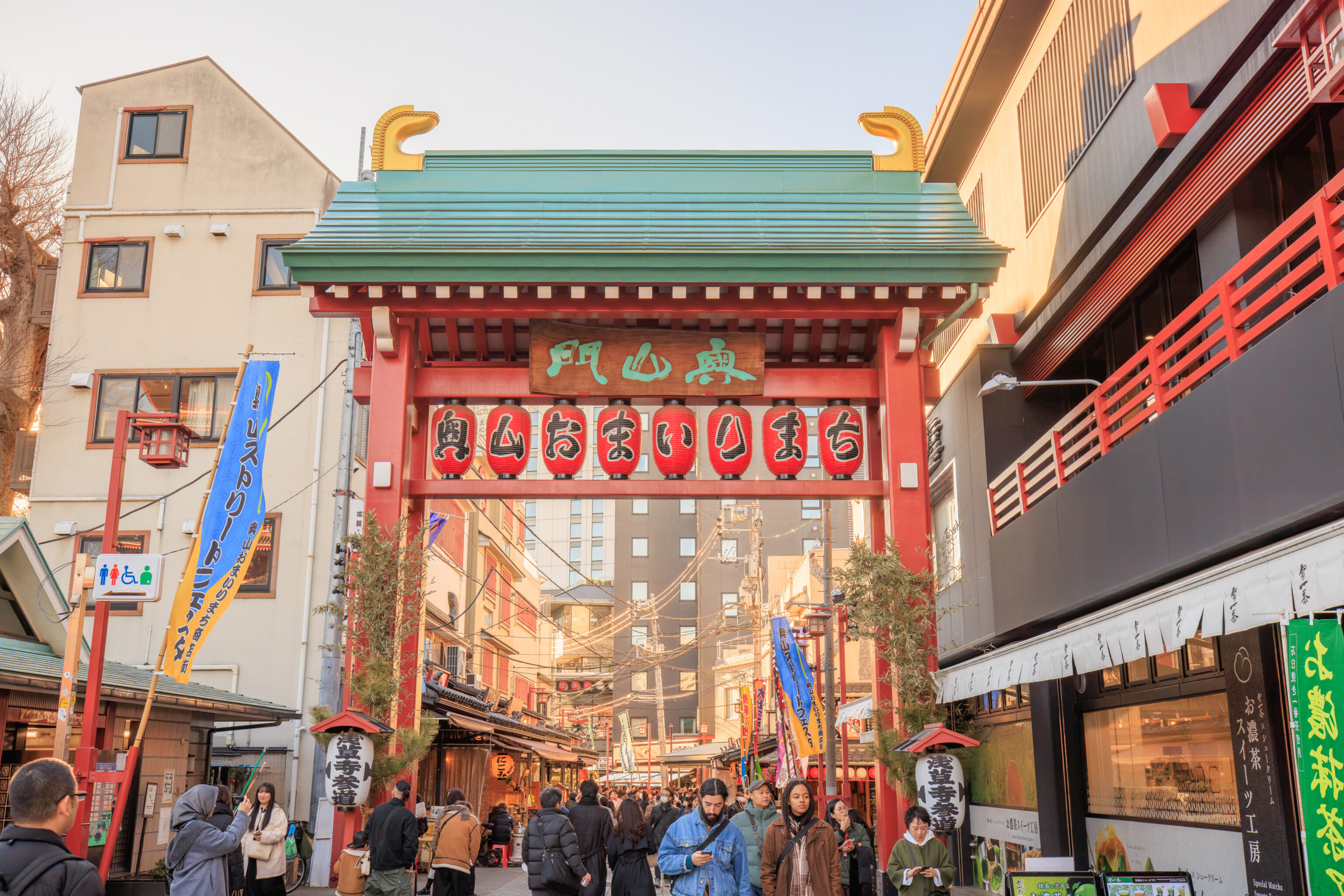
We started to head back towards Kura, though we still had some time to walk around some more.
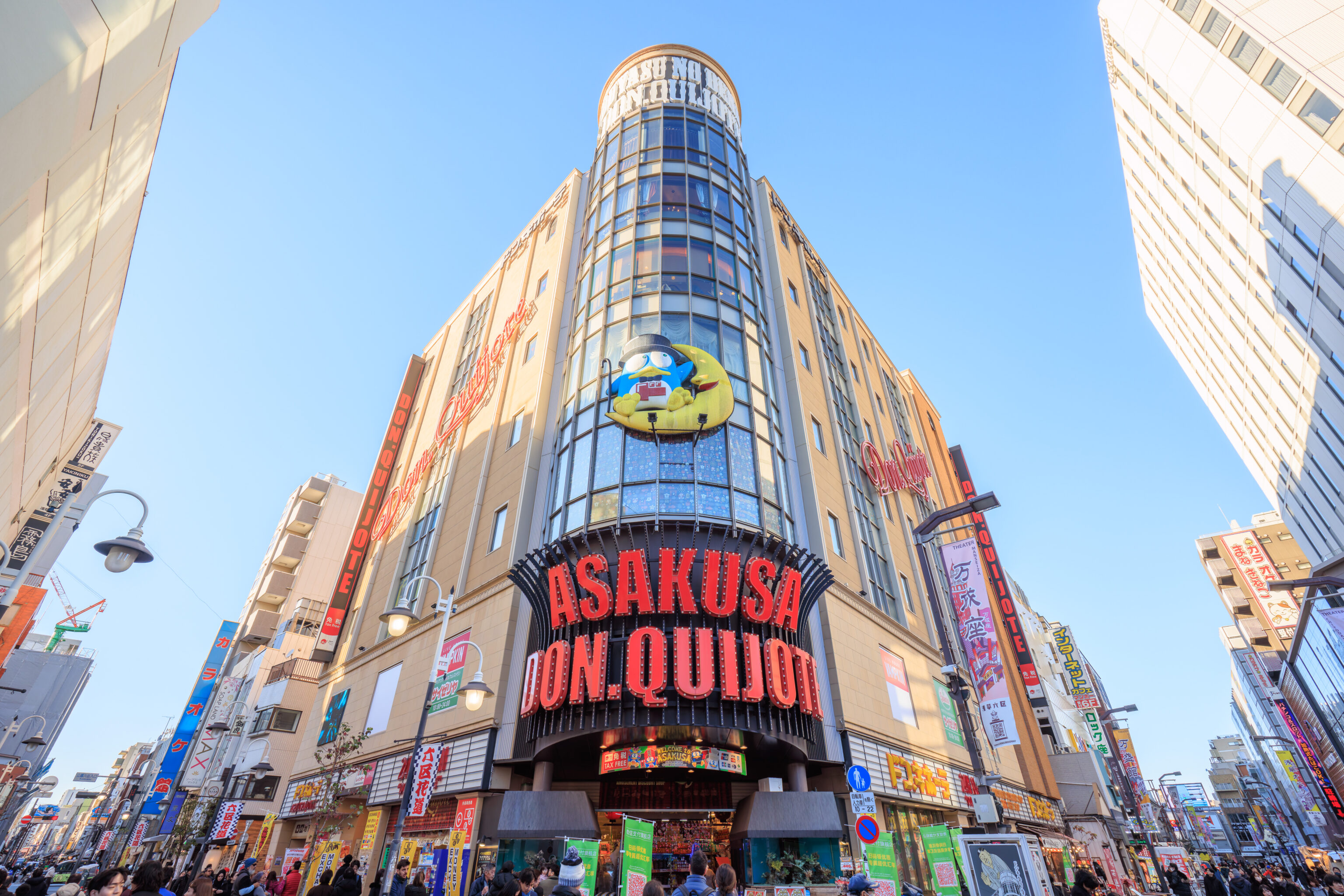
Asakusa has a big Don Quijote store. We visited a Don Quijote store for the first time on this trip in Guam! It almost feels like it was a long time ago!
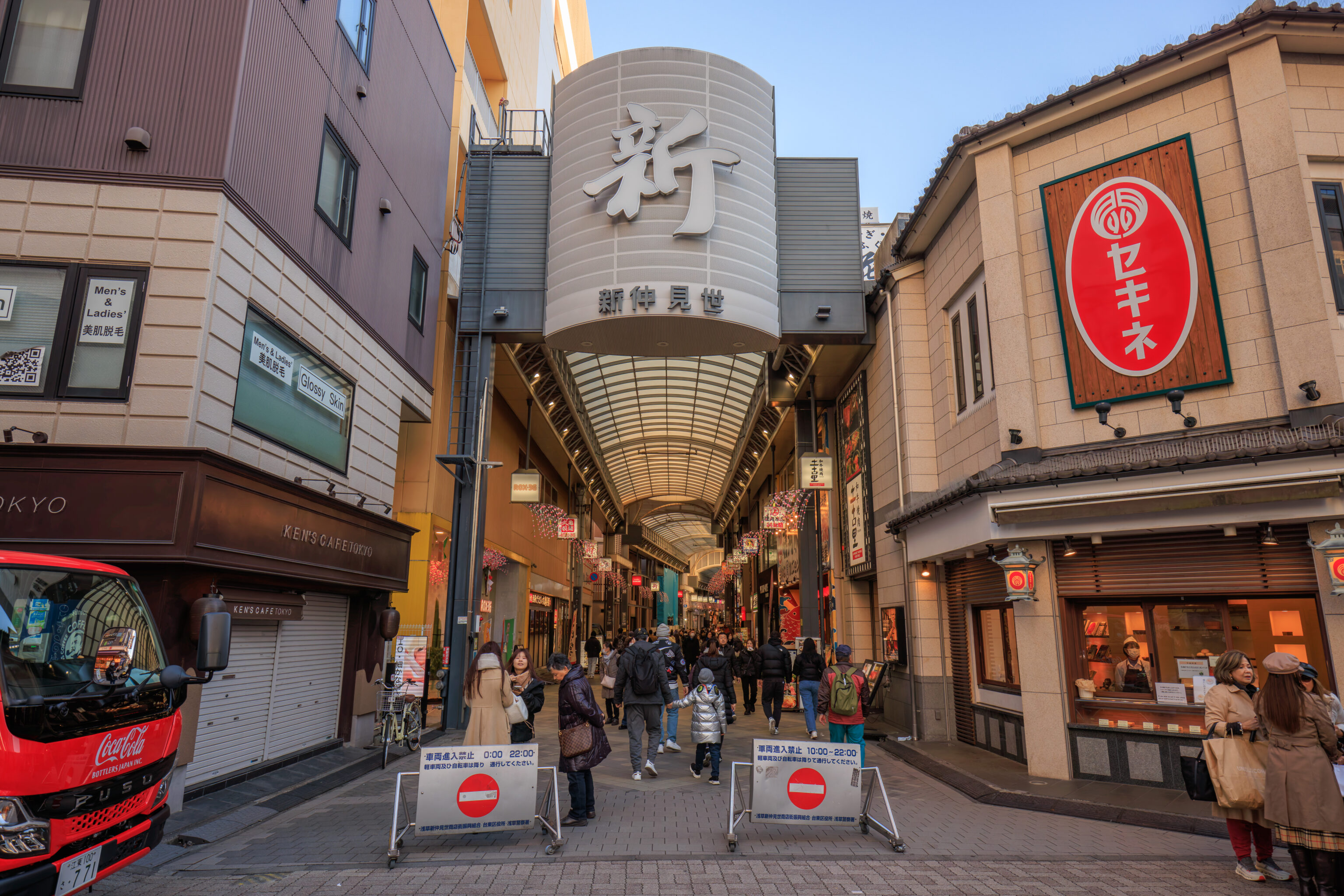
There is a somewhat long shopping arcade here that runs across Asakusa. We returned to ROX and Kura sushi and were seated at 3:50pm, about an hour after we joined the queue. The entire Kura experience is fully automated. You never have to interact with a person at all. Upon arriving, you are given a table assignment. Once there, you can order everything via a tablet.
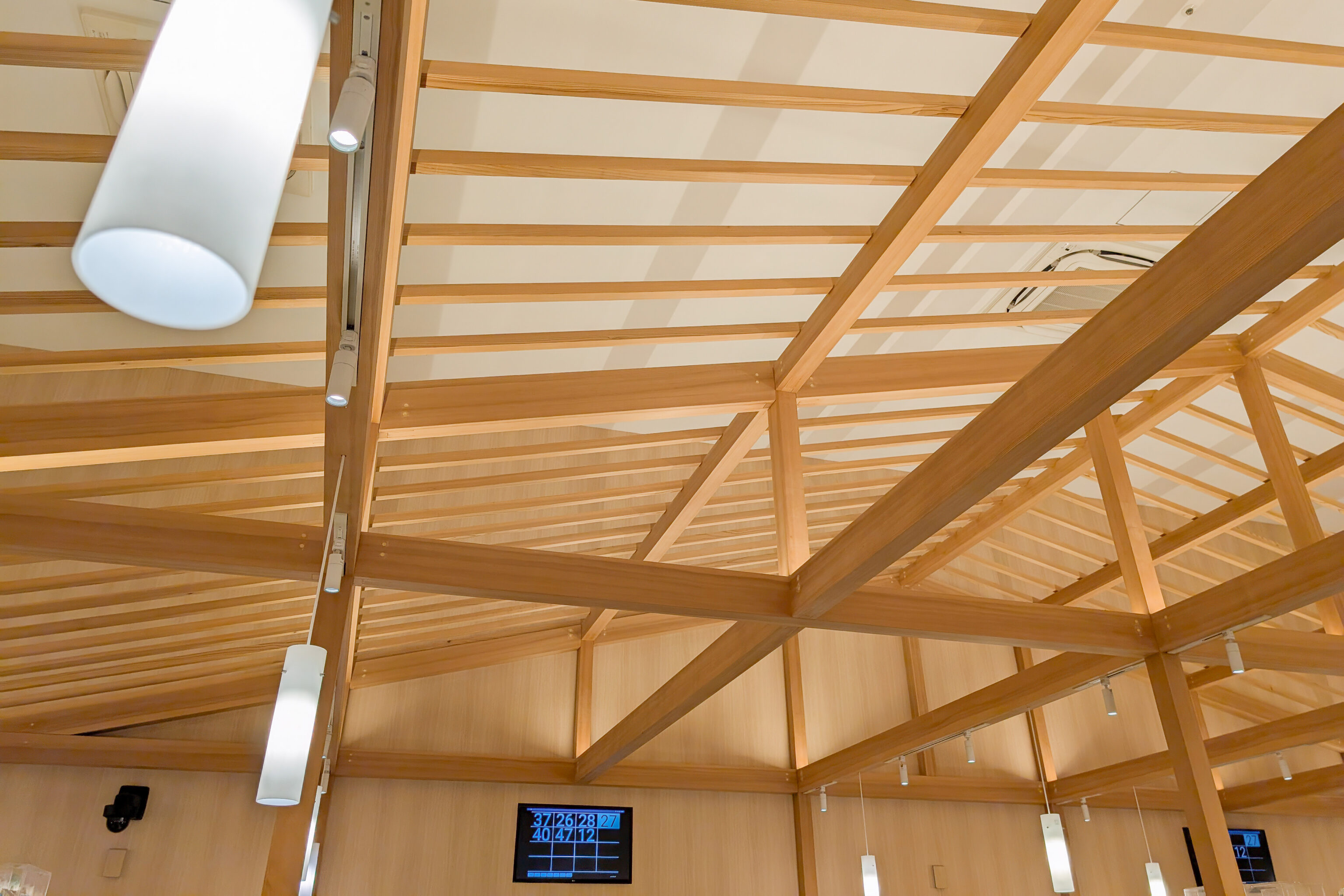
The interior was massive and actually had relatively few seats given the size of the restaurant. Unfortunately, this was the only photo we took of the interior!
Kura ended up being a big disappointment. The cheapest raw fish plates are ¥150 for two pieces, or about 50¢ USD per piece. This is ridiculously cheap. While the quality isn’t comparable to higher end restaurants, at least there is the confidence that you won’t get sick, which would be something to worry about in the US at a cheap sushi buffet or something like that! At this price level though, its understandable hat you aren’t getting the best fish. But, the more expensive items come with just one piece per plate rather than two and the quality doesn’t scale with the increased price.
Its not likely we’d return to Kura. There’s plenty of midrange sushi restaurants in Japan that are quite affordable by US standards and which serve much better sushi. Our recommendation would be to only visit Kura if you’re looking to eat the absolute cheapest fish possible. You could easily fill up spending less than ¥1500, and that’s pretty incredible.
Plate return was also automated. You simply put the plate into a slot and the system recognizes that the plate has been returned. Checkout is automated too using a payment kiosk. There are staff around though if you need help.
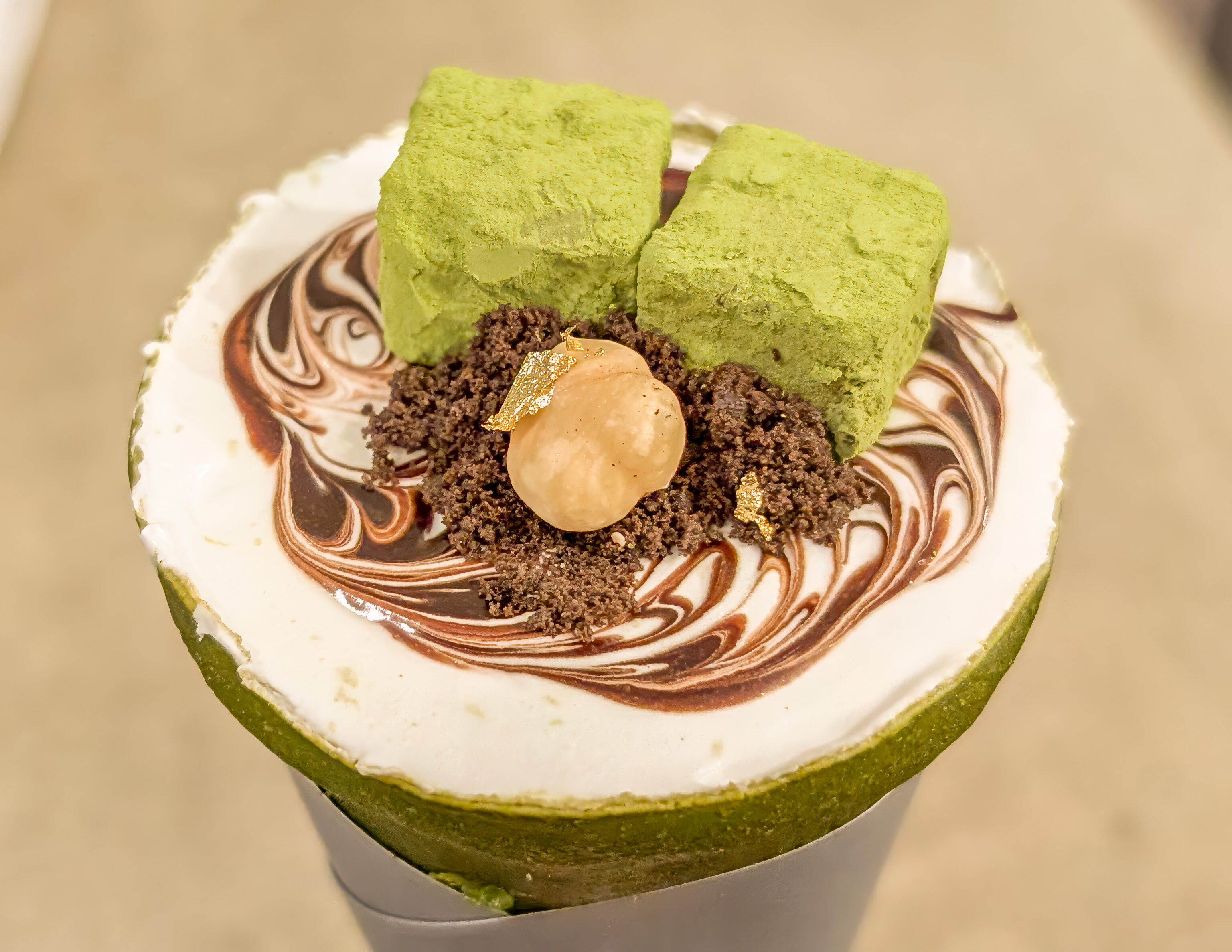
After our late lunch, which really turned out to be an early dinner, we went to have a matcha snack at a place we saw earlier near Senso-ji. たばねのし Tabanenoshi, a small matcha crepe shop, had a long queue when we were waking by. We got the “limited edition Kakegawa matcha with chocolate”. It is basically a parfait rolled up into a crepe. It was good though clearly designed to be Instagrammable, or Tiktokable, or whatever.
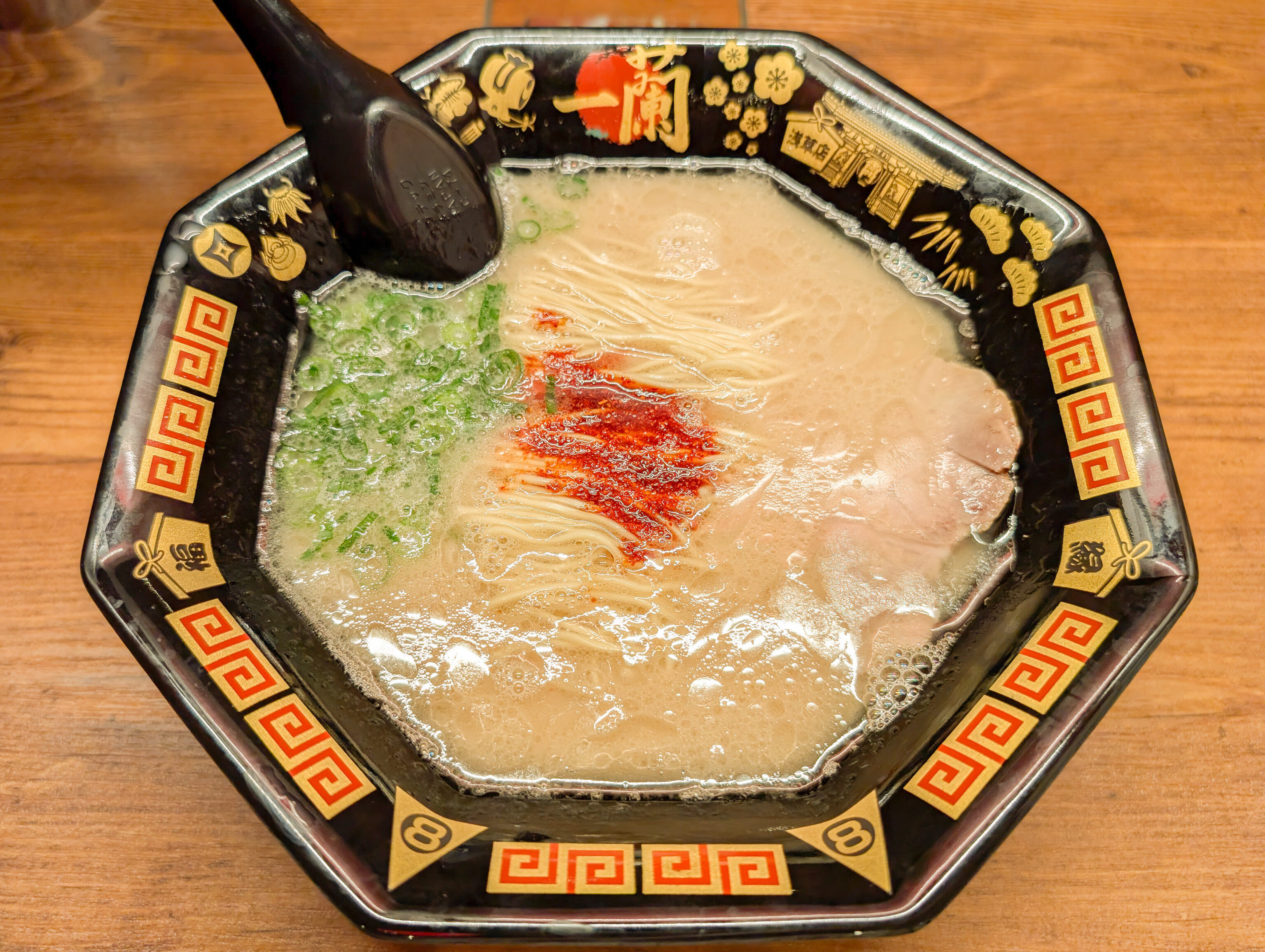
After our snack, we decided to go have second dinner. We went to Ichiran‘s nearby Asakusa Rokku location and were happy to find a short queue. While the menu was standard Ichiran, there was one surprise. This is the only Ichiran that serves ramen in octagonal bowls!
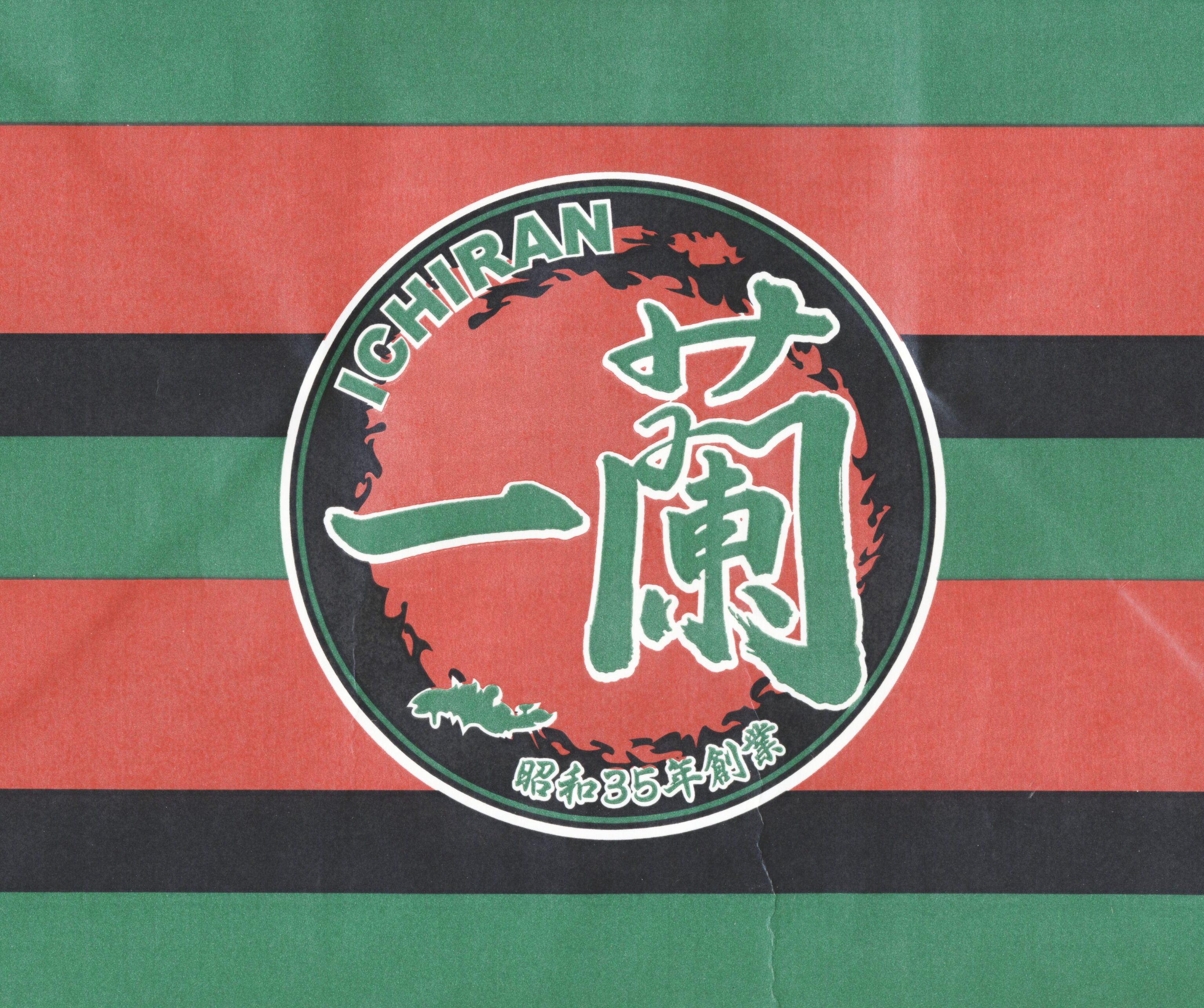
After we ate, we also bought some boxes of Ichiran’s take home ramen kits. We’ve had them before and they are better than the instant Ichiran ramen that we had in Niseko.
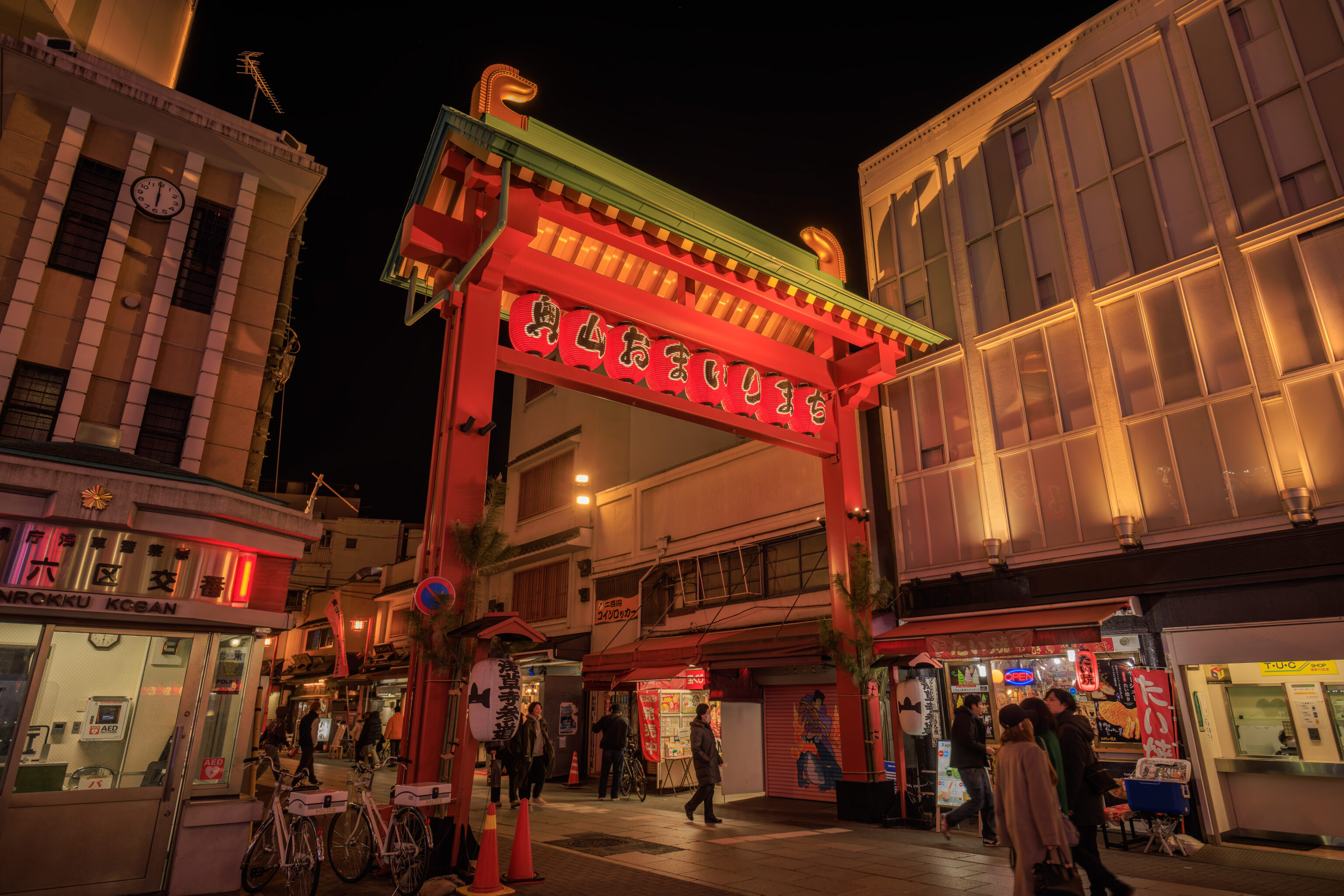
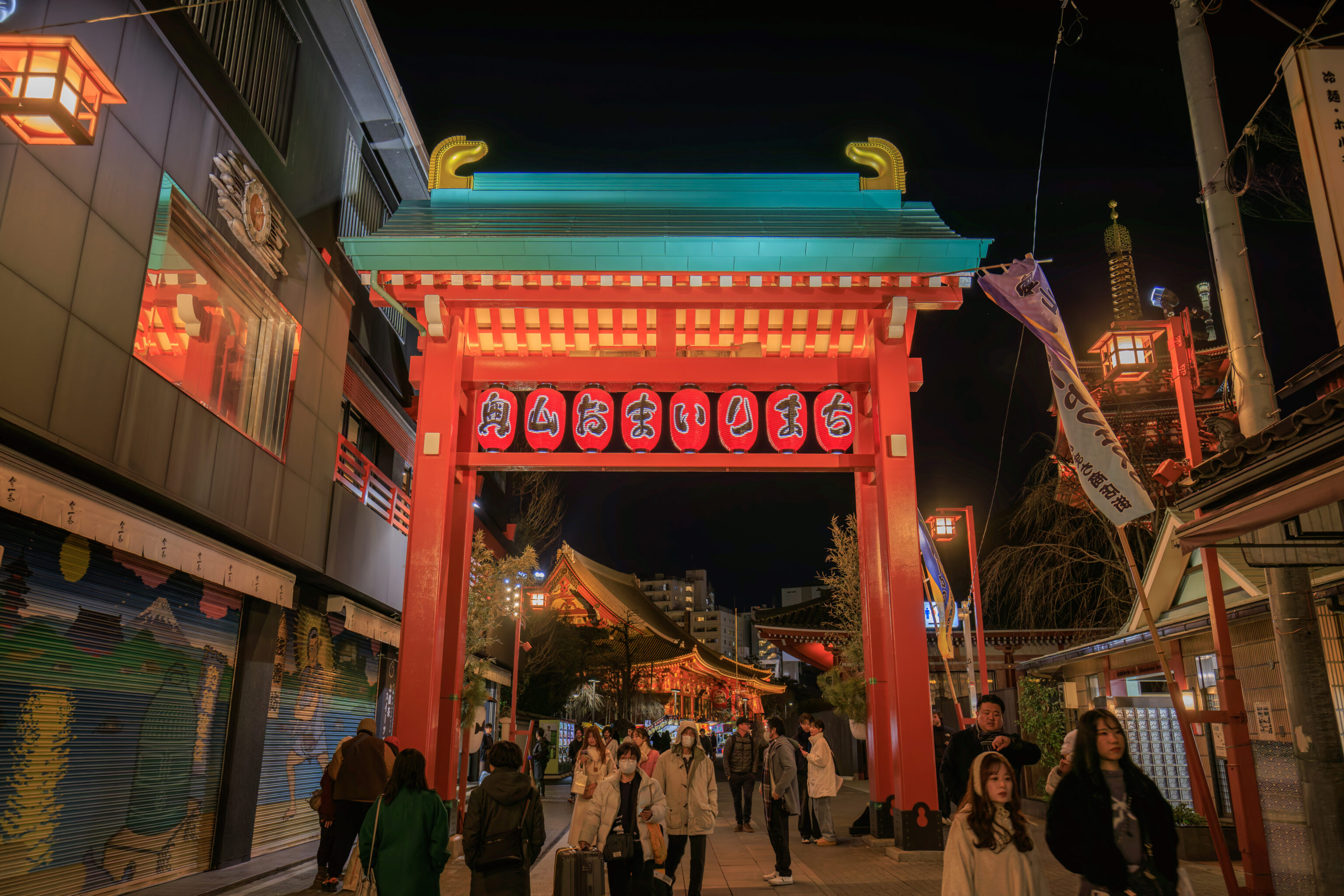
It was dark out by the time we left Ichiran. We headed back to Senso-ji to take a look around at night.
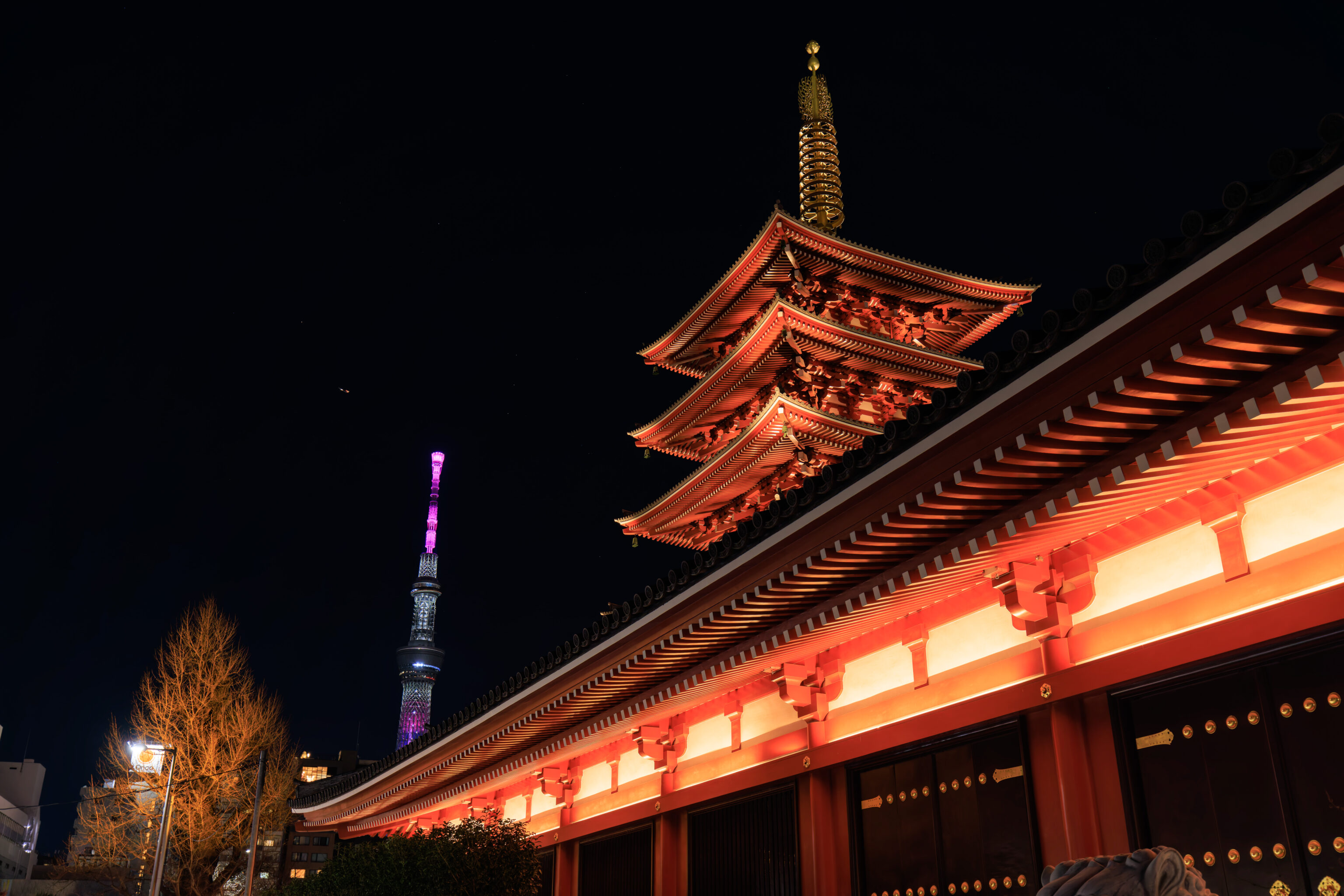
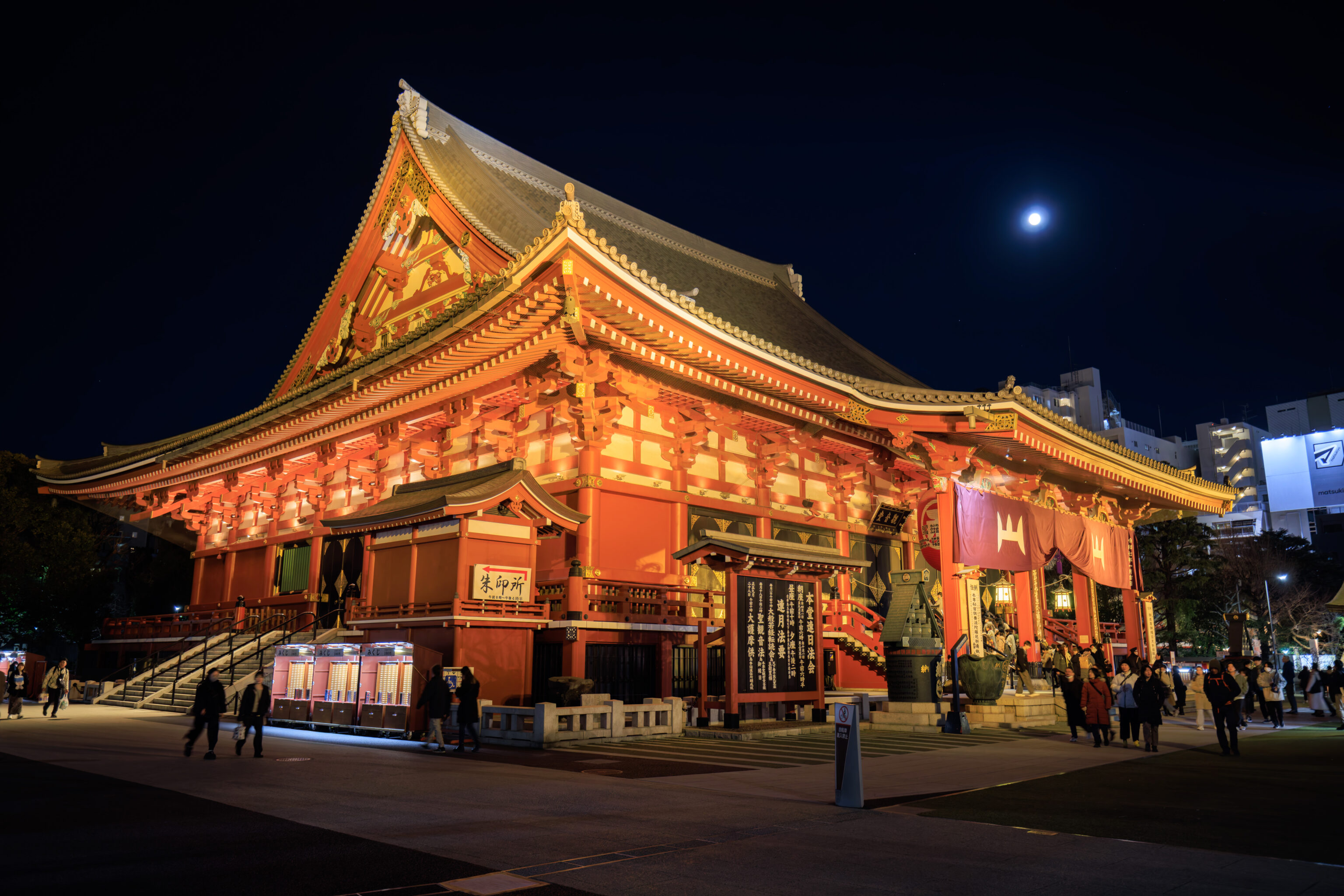
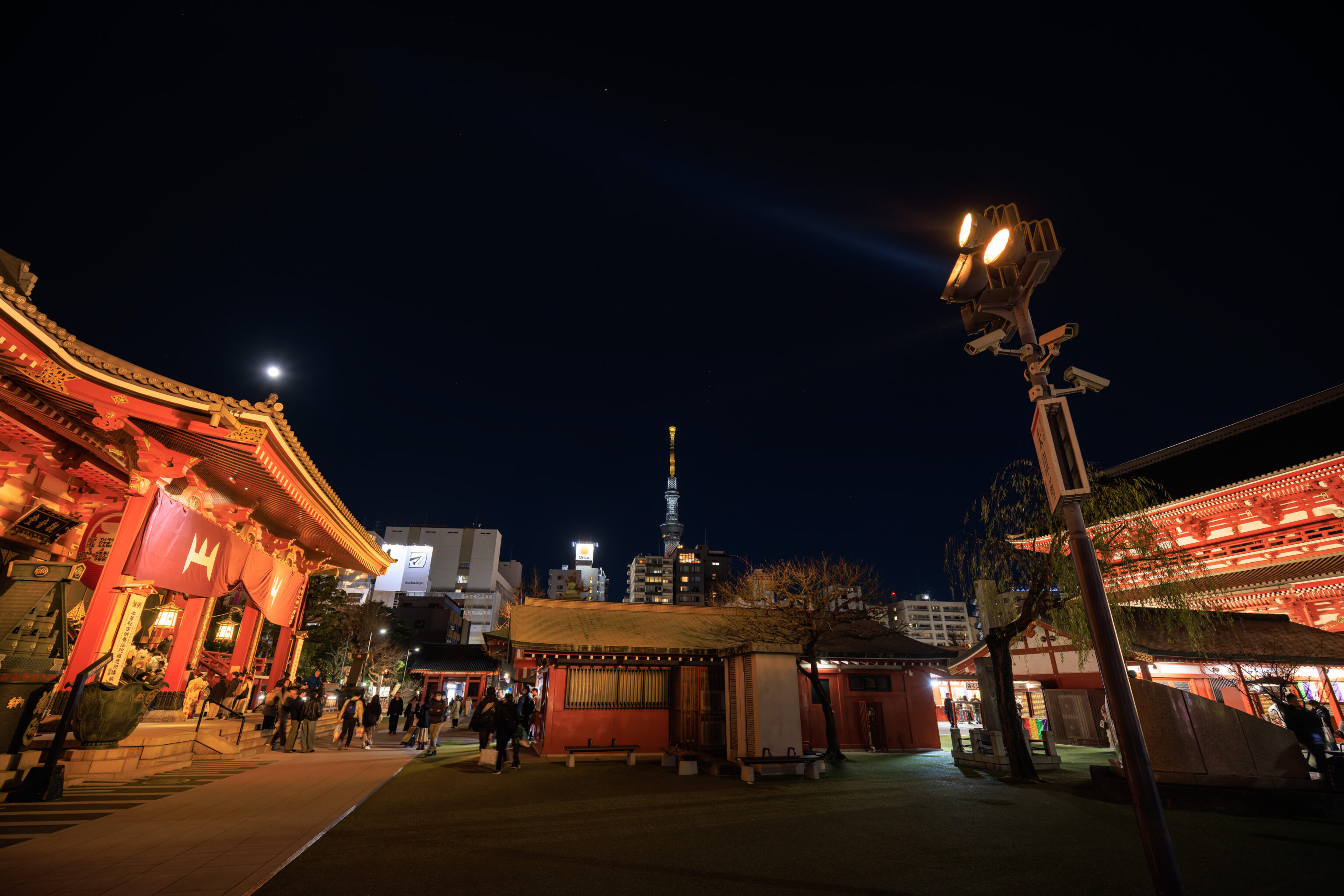
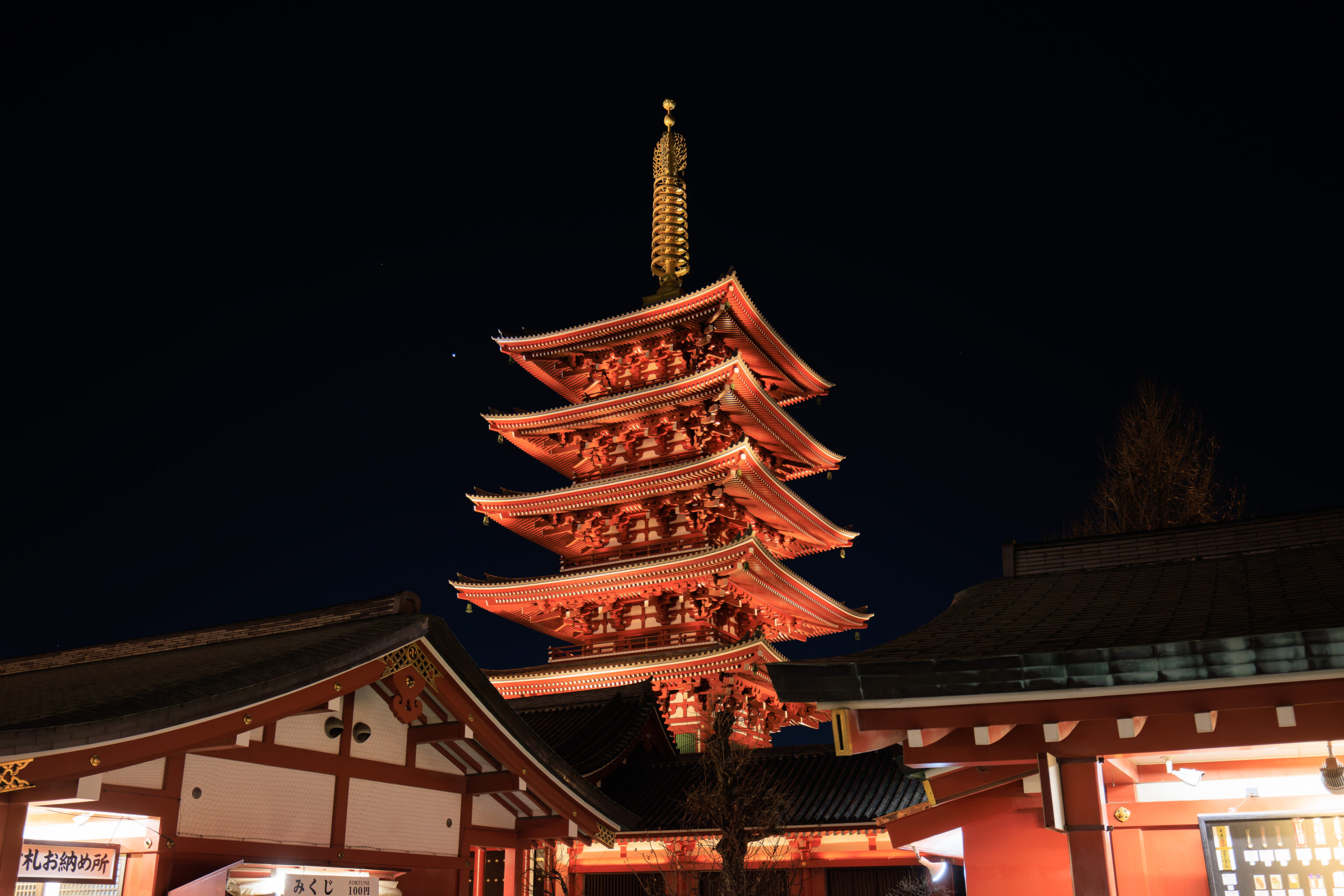
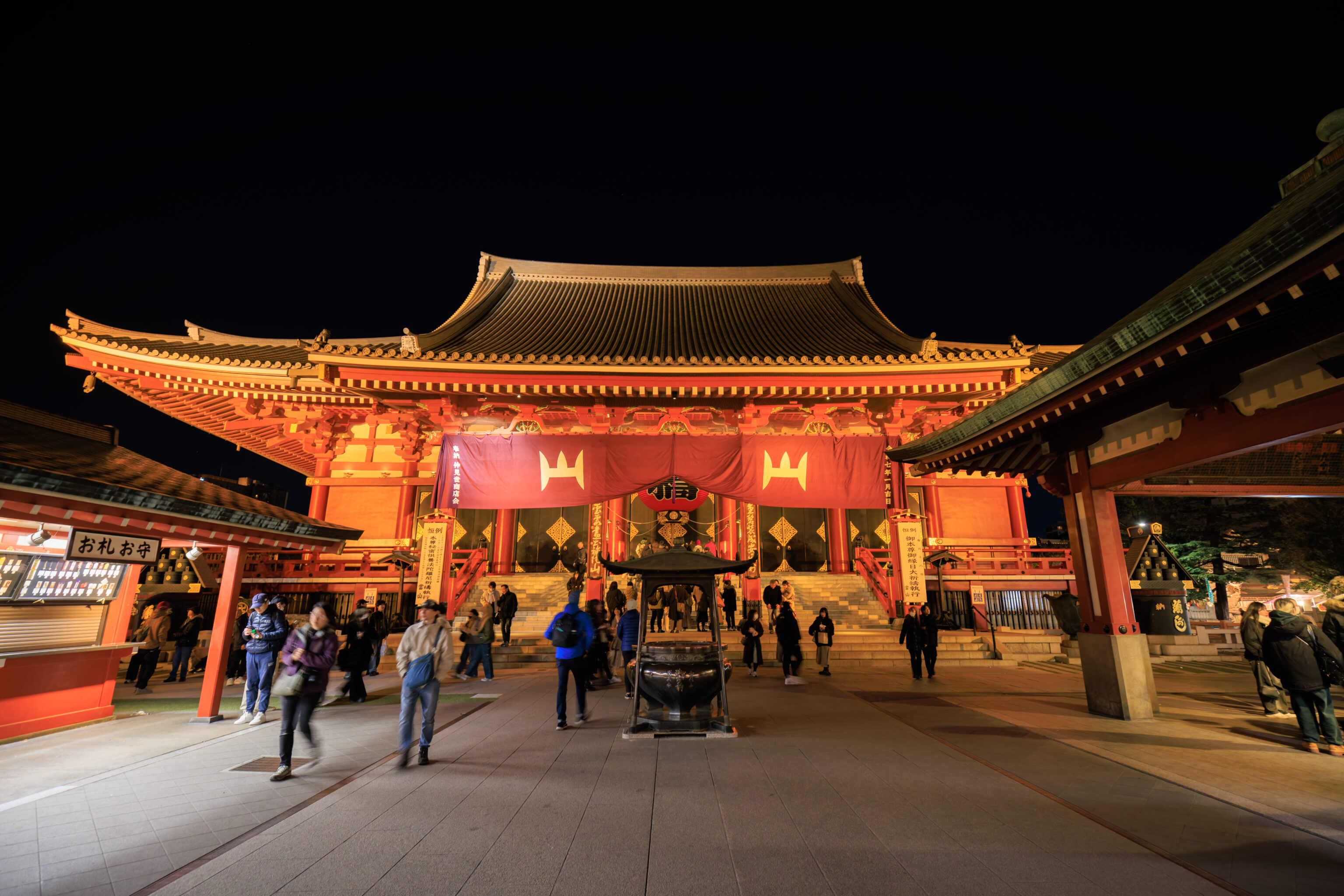
The temple buildings were beautiful when illuminated and we could see the colorful Tokyo Skytree to the east as well. While there were still many people around, it wasn’t nearly as busy as it was earlier.
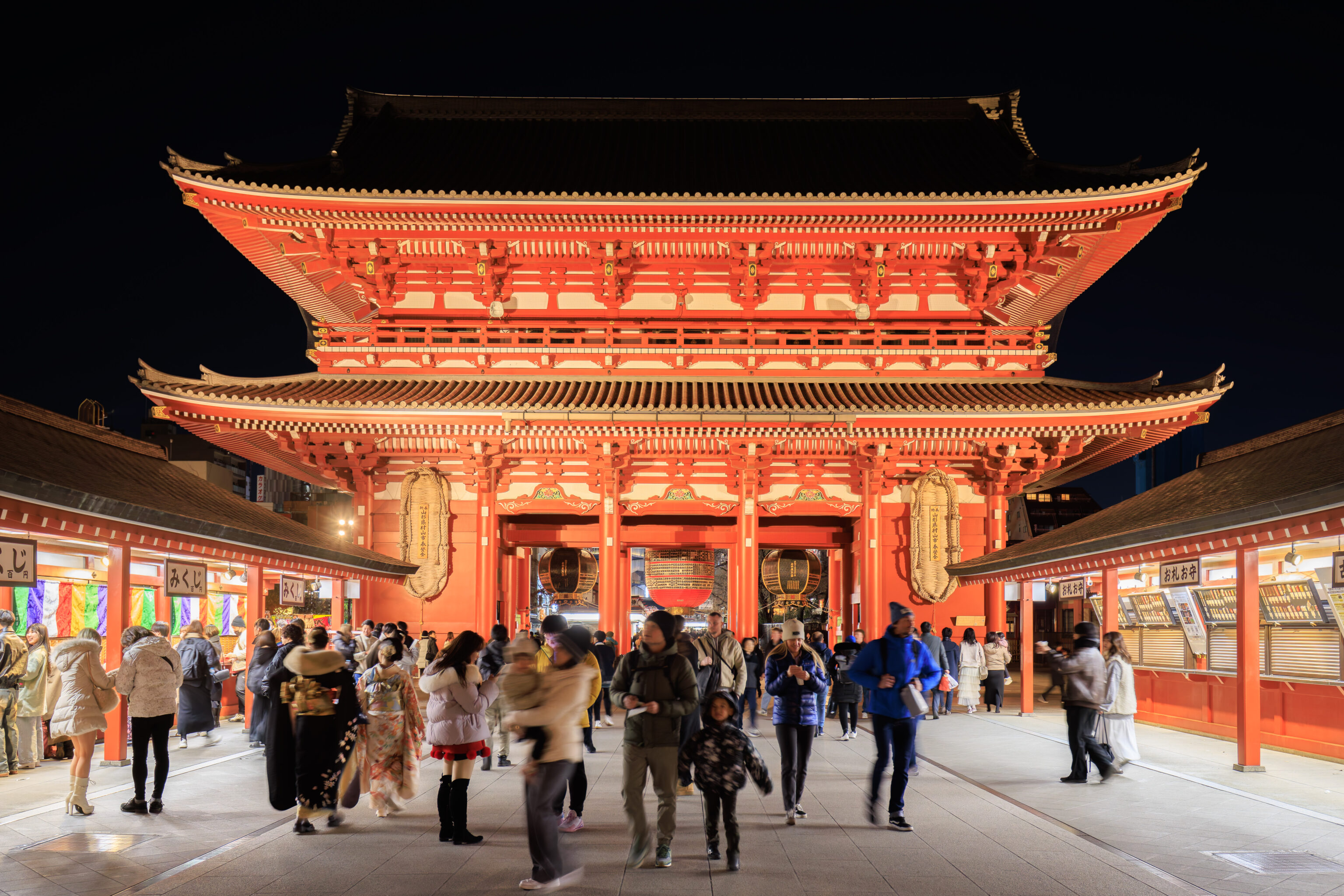
We walked over to the 宝蔵門 Hozomon both to see it at night and to head to the Asakusa metro station to the south to catch a train on the Asakusa Line to Shinagawa Station.
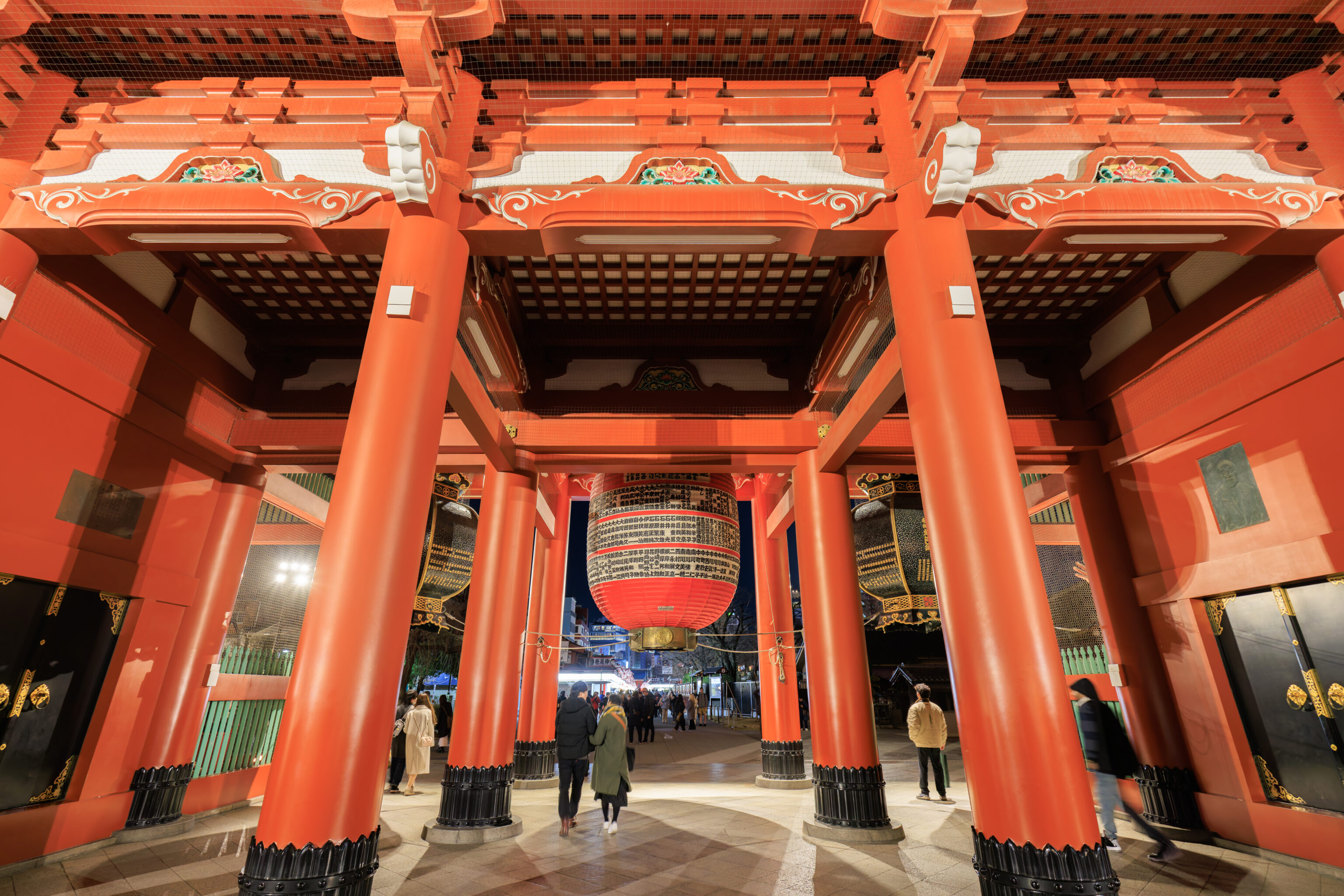
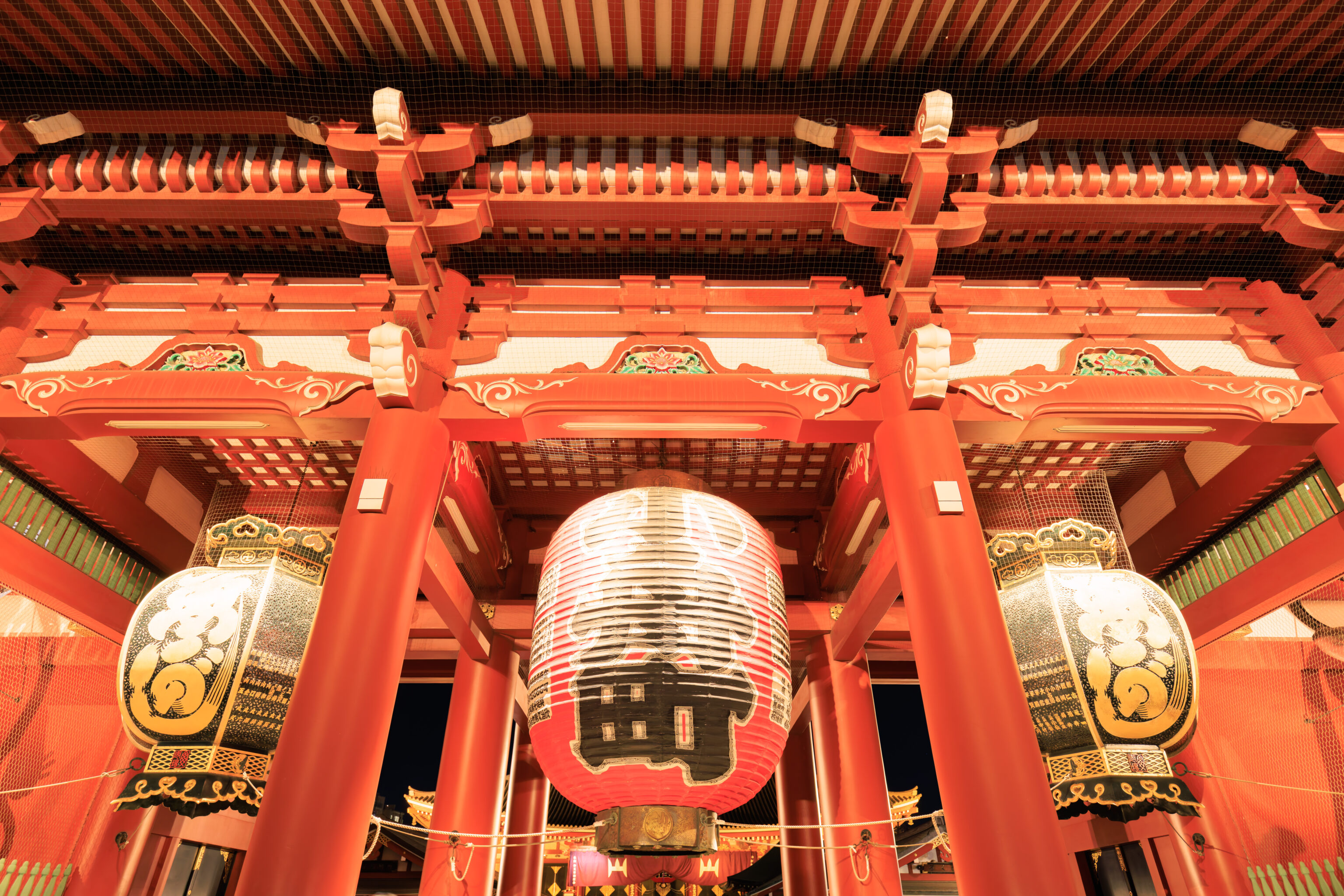
We passed through the gate under the giant lanterns that hang from the gate.
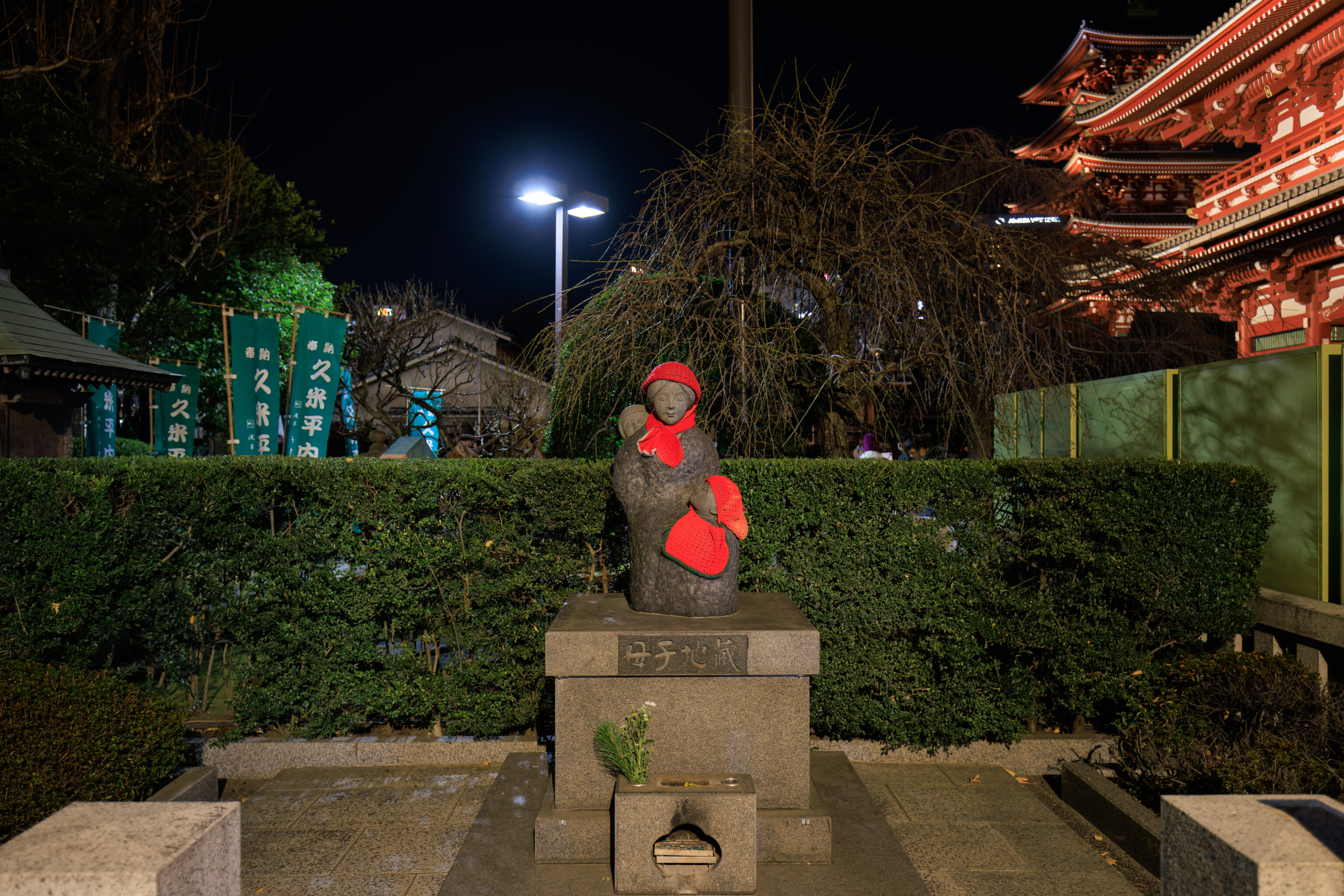
Beyond the gate, we turned to the left, passing by this Jizo statue depicting a mother and her two children.
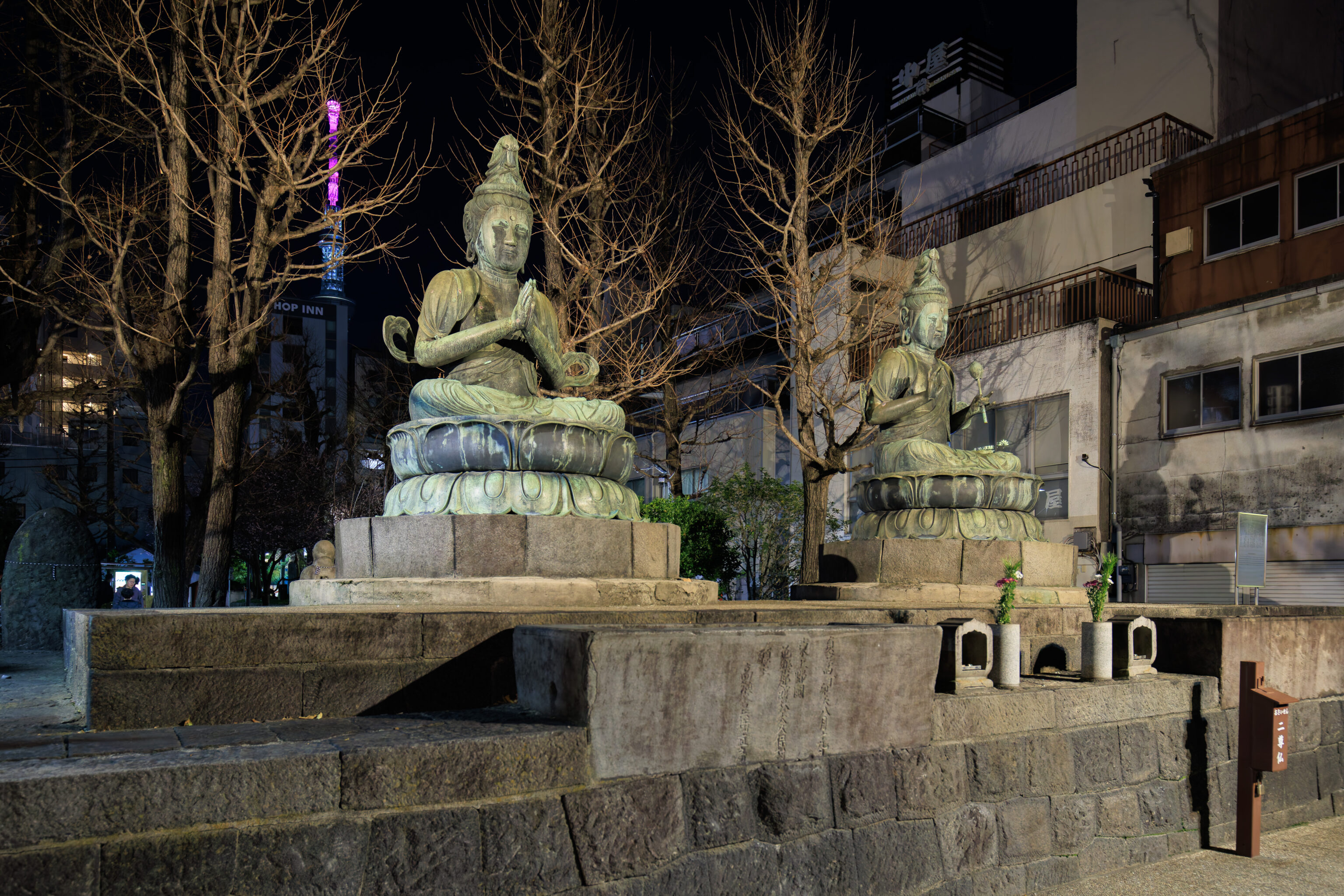
These two Buddha statues were near the Jizo.
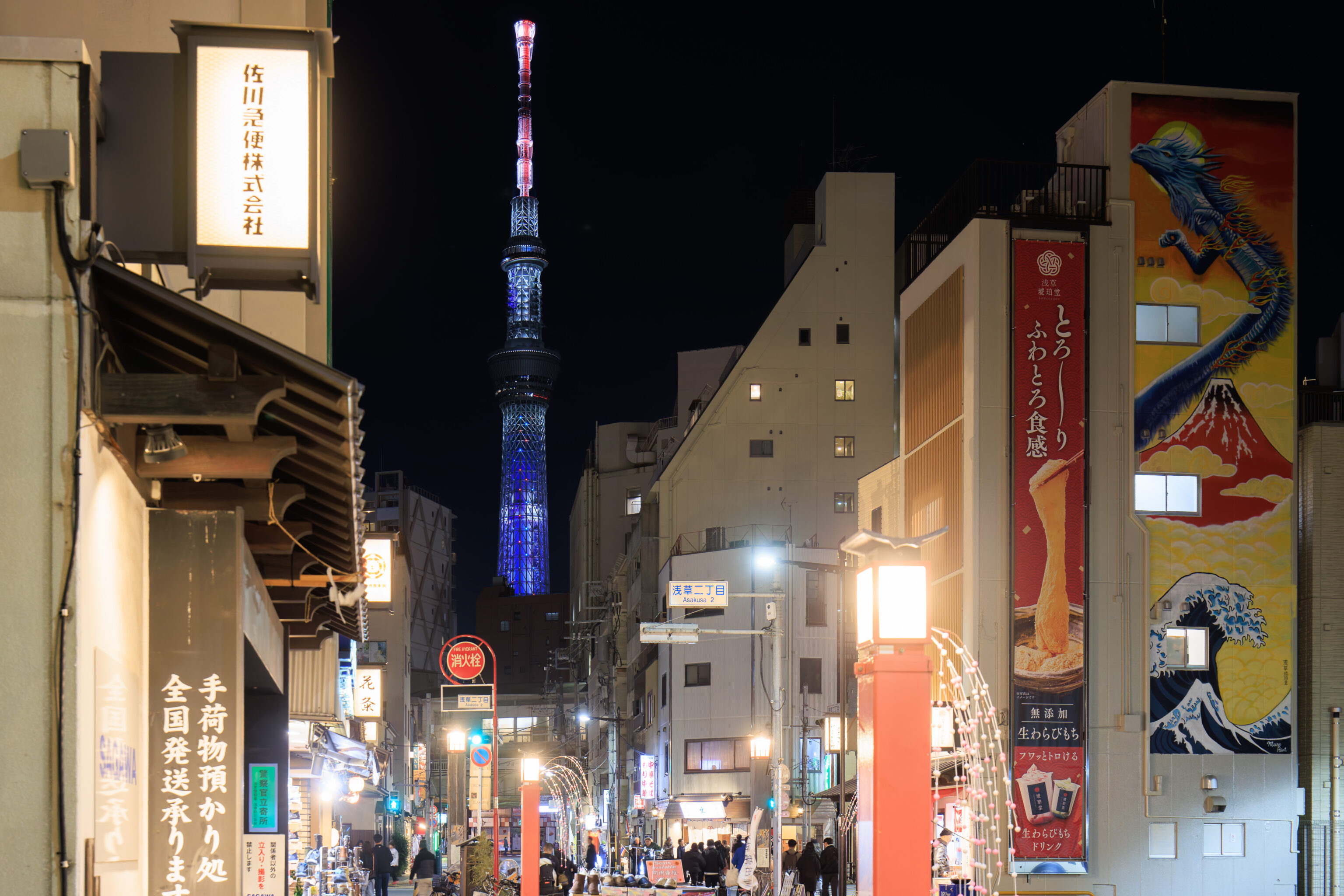
We had this excellent view of the Tokyo Skytree to the east as we walked away from the temple. There was also a nice mural on the building to the right.
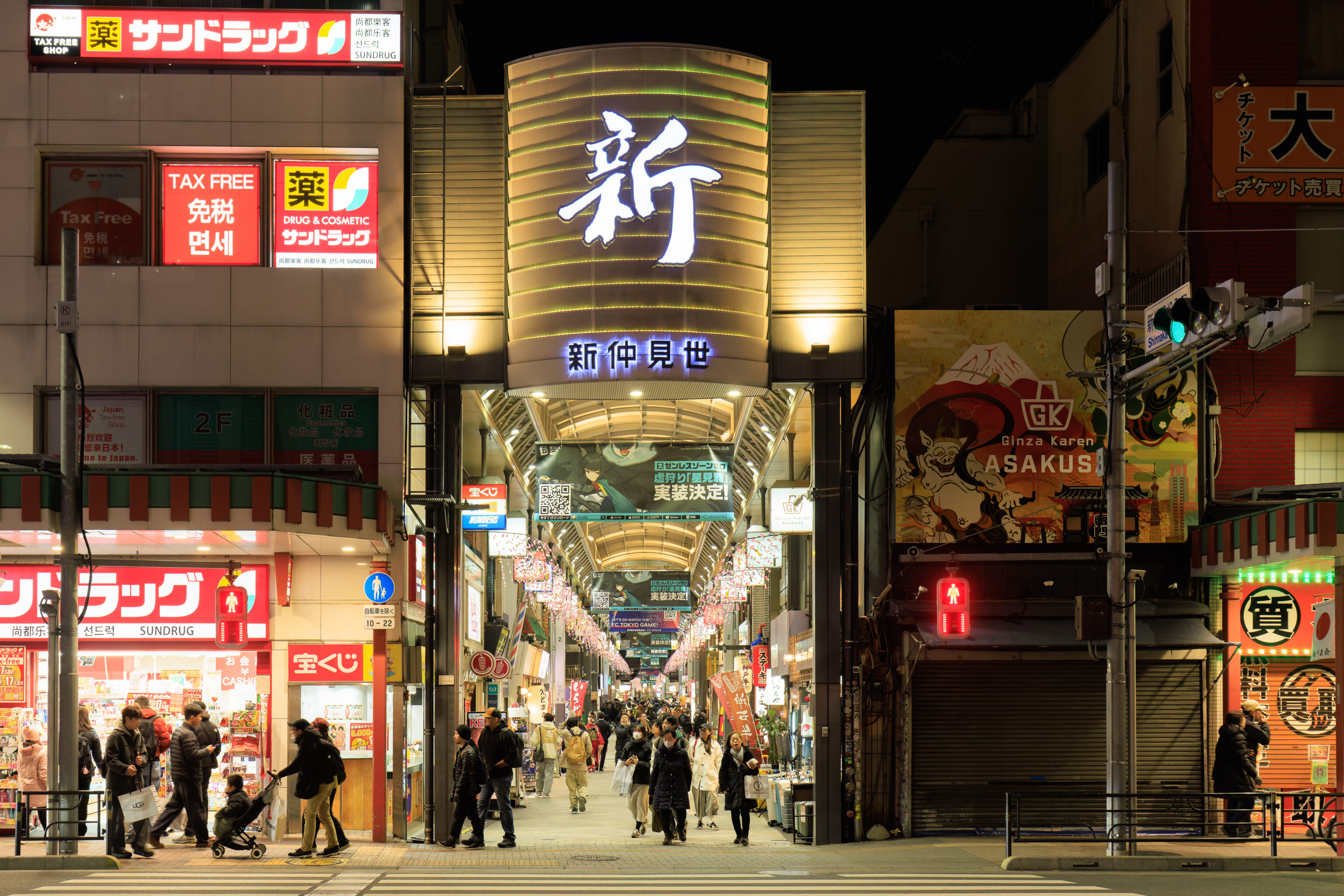
We passed by the eastern end of the shopping arcade that we saw earlier to the west.
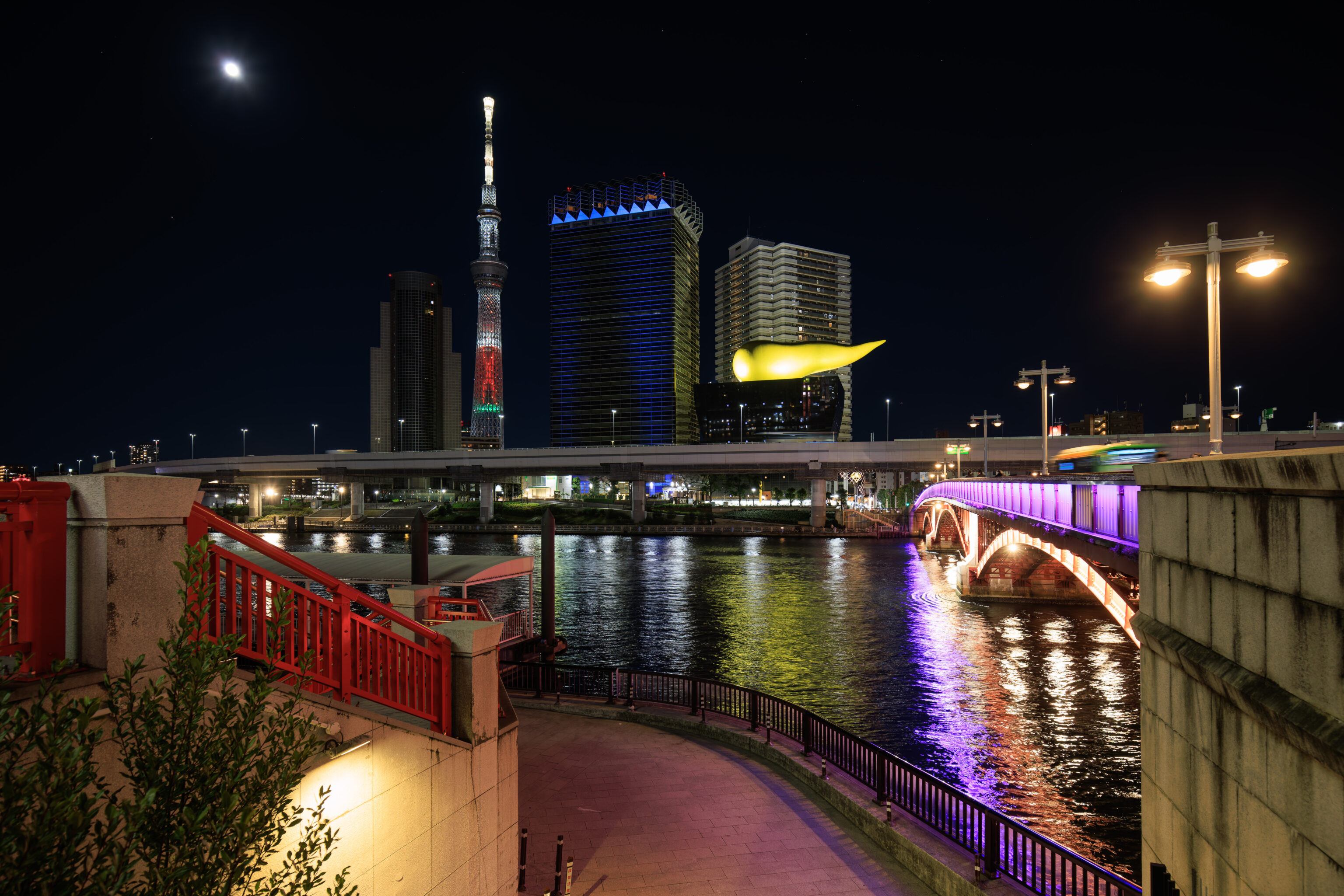
Before going down into the metro station, we walked over to the 隅田川 Sumida River to take a look at the night view from the edge of the 吾妻橋 Azuma Bridge.
Shinagawa
We caught the next train that would go to Shinagawa. Not all the trains on the Asakusa Line do so its worth verifying where the train is going.
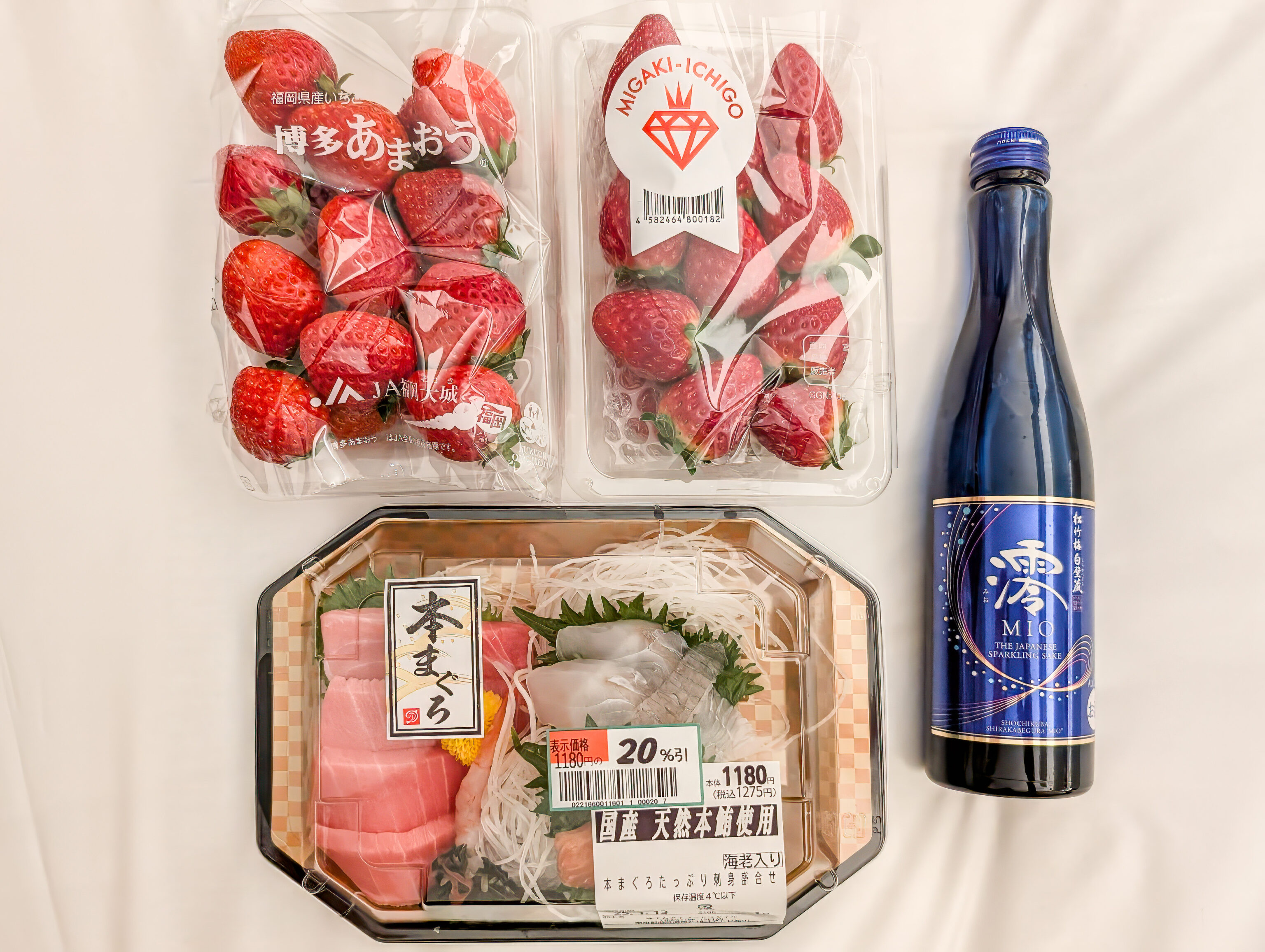
After arriving at Shinagawa Station, we went to the Queen’s Isetan supermarket within the Shinagawa Station Atré for some snacks. We got some Japanese strawberries as well as some sushi that was discounted, probably as it was the end of the day so they needed to sell it. And, we picked up a bottle of Mio from the 7-Eleven by the entrance to the InterContinental where we are staying.
- 寛永寺 辨天堂 (東京都 台東区上野公園2丁目1番地) – 新作の御朱印帳と御朱印
https://ameblo.jp/composure3956/entry-12883174619.html ↩︎
